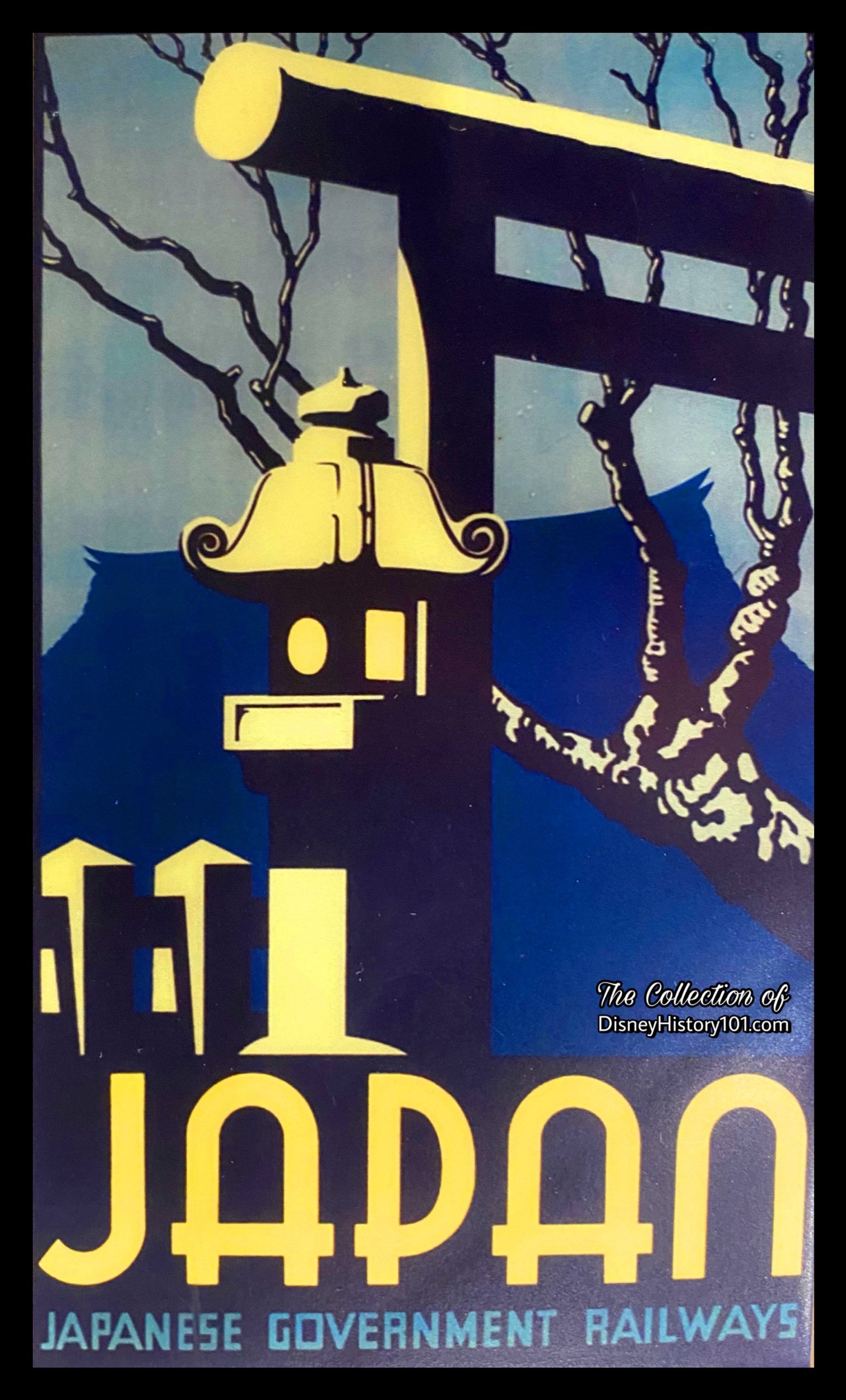WORLD SHOWCASE - JAPAN PAVILION
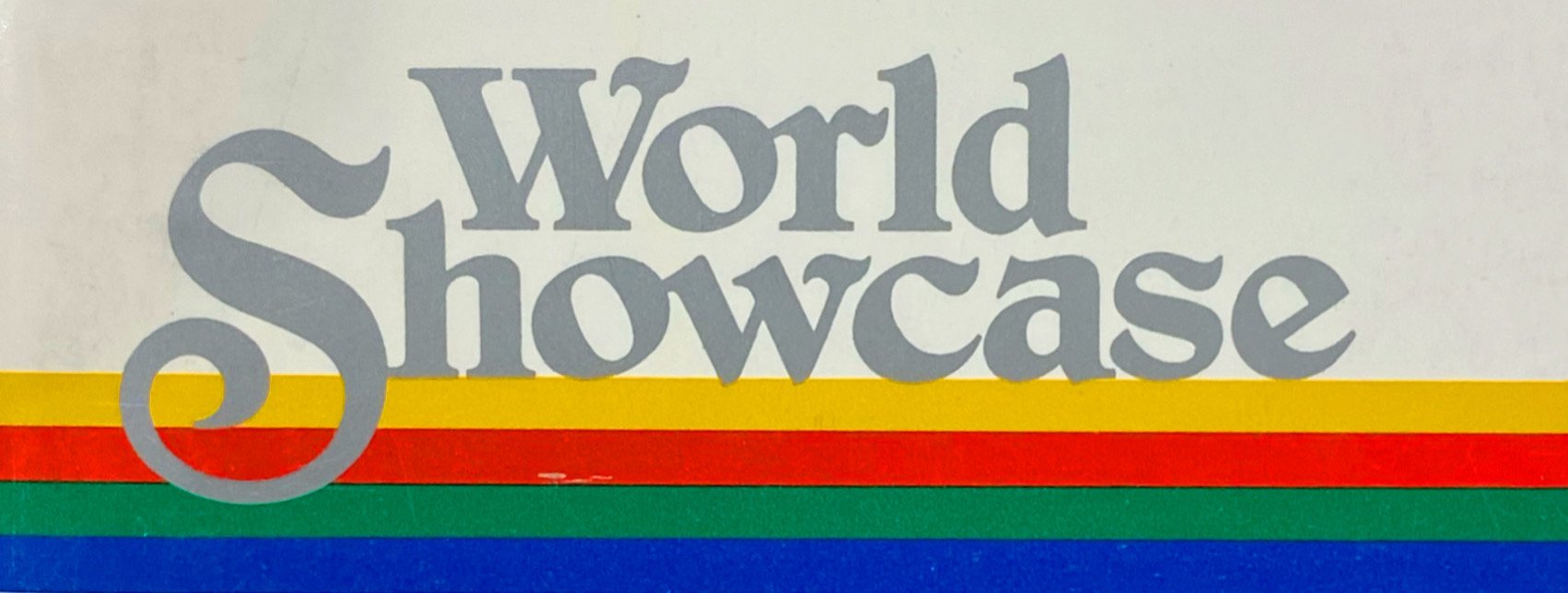
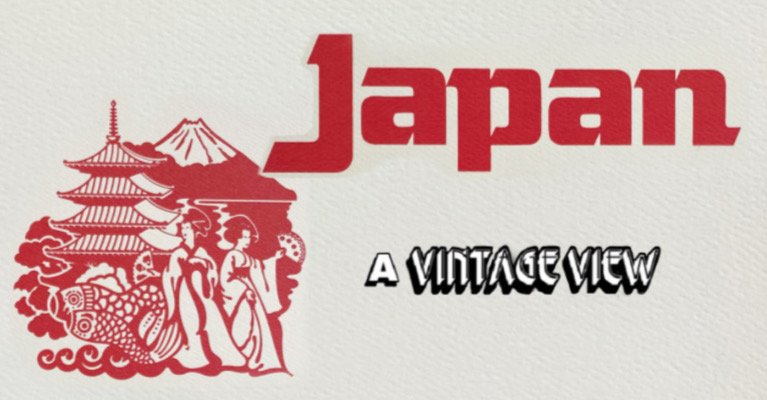
(October 1, 1982 - Present)
“Prologue - Walt Disney Productions and the People of Japan”
In order to tell the story of the EPCOT Center Japan World Showcase, we must begin with the history of the relationship between the people of Japan and the Walt Disney Company. This is a synergistic tale of individual people who have supported and sponsored the many facets of Walt Disney Productions. Some were artists, writers, members of groups and organizations, members of Participant Corporations, and innumerable audience members, consumers, and related fans of Walt Disney’s art form, from across the United States of America, and as far away as the prefectures of Japan.
“It All Started With a Mouse”
The modern art of animation had been around for a couple of decades before Walt Disney embarked on his career as master showman. However, when Walt Disney's Mickey Mouse first appeared, he brought an お土産 (omiyage) of joy, happiness, and a universal means of communication to the people of every nation, including Japan. Walt Disney’s brother Roy testified to the results of Walt’s endeavors to diversify, admitting that “in everything he did, Walt had an intuitive way of reaching out and touching the hearts and minds of young and old alike. His entertainment was an international language.” Since the beginning, Roy Disney’s words have proven true, as the hearts and minds of Japanese audiences have taken a keen interest in the magical, fantastic, joyful, and inspirational artistry of Walt Disney!
“Bob Kuwahara - The First Japanese American Artist Supports Walt Disney Productions”
It was during this historic era, that we are introduced to one of the earliest Japanese Americans on record to work for Walt Disney Productions - a writer and animator by the name of Robert “Bob” Kuwahara. Though his name isn’t famous, Bob is a “Disney Legend” in his own right. Bob worked for Walt Disney Studios from 1932 to 1937, contributing to such memorable short films as the Mickey Mouse Sound Cartoon Thru the Mirror, the Silly Symphony films like Three Little Wolves, Toby Tortoise Returns, Who Killed Cock Robin?, and Walt Disney’s feature length Snow White and the Seven Dwarfs. During his tenure, Bob developed backgrounds for Snow White and the Seven Dwarfs, Fantasia and Bambi.
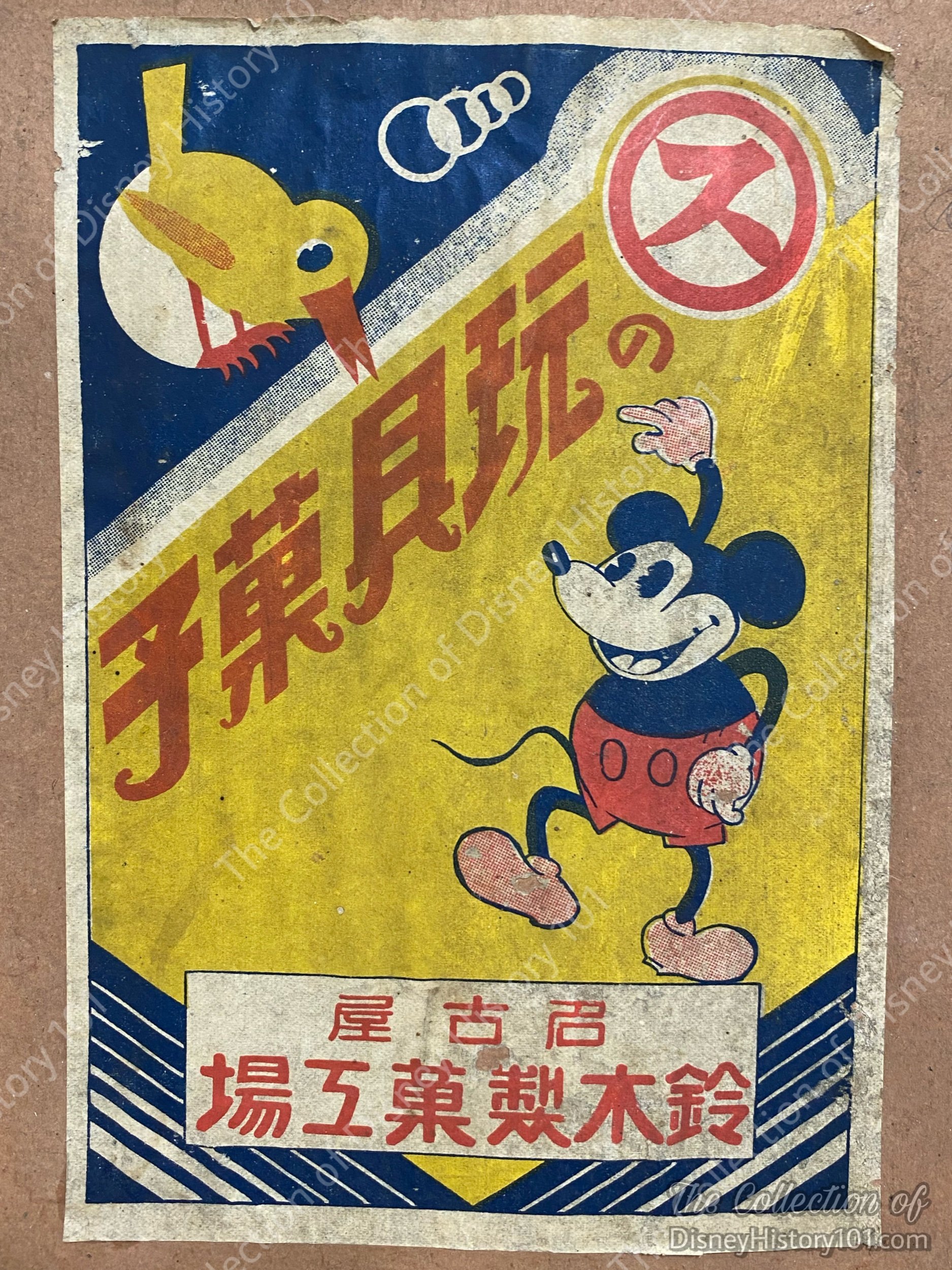
スの玩具菓子 - 名古屋 鈴木製菓工場 (Su Candy Toy; Nagoya, Suzuki Snack Factory) box featuring Mickey Mouse.
All the while, Japanese and Japanese American commercial businesses supported the production of licensed merchandise featuring Walt Disney’s characters. Early products featuring the likeness of Walt Disney’s Mickey Mouse (or “Miki Kuchi”) proved his worldwide appeal during the 1930s, particularly an awareness by Japanese commercial manufacturers, audiences, and consumers. Many hand-crafted ceramics, bisque figures, “lusterware” tea sets, and mechanized celluloid toys were inspired by the cast of Snow White and the Seven Dwarfs, Mickey Mouse, and Silly Symphonies short films. These official products were manufactured in Japan and distributed to stores and their patron consumers, through Walt Disney’s merchandise distributor George Borgfeldt.

A ミッキノート (Mickey notebook) featuring Minnie Mouse on the cover, was produced for the Japanese market, circa 1930s.
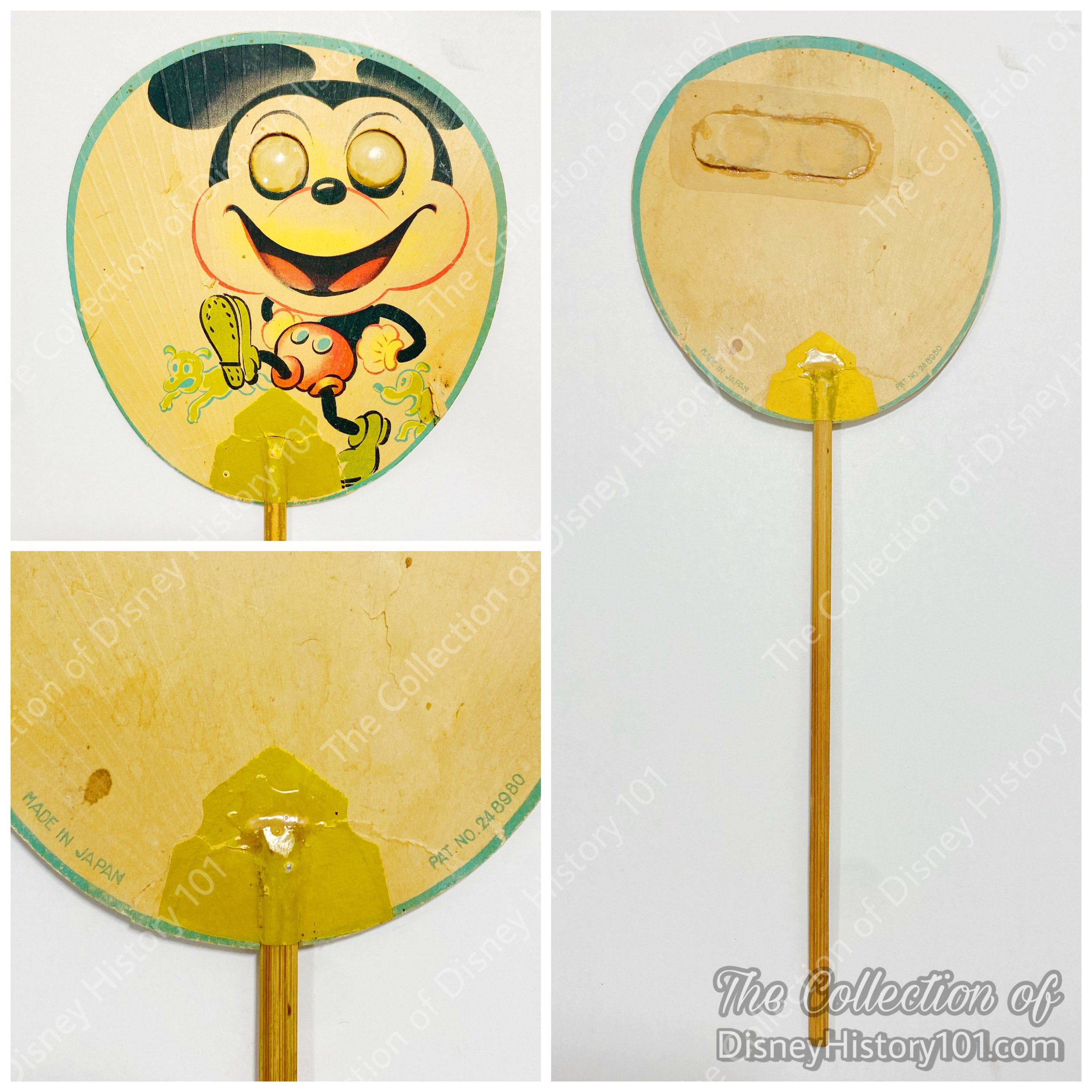
This traditional uchiwa (団扇) novelty fan with an early patent number features Mickey Mouse and was manufactured in Japan.
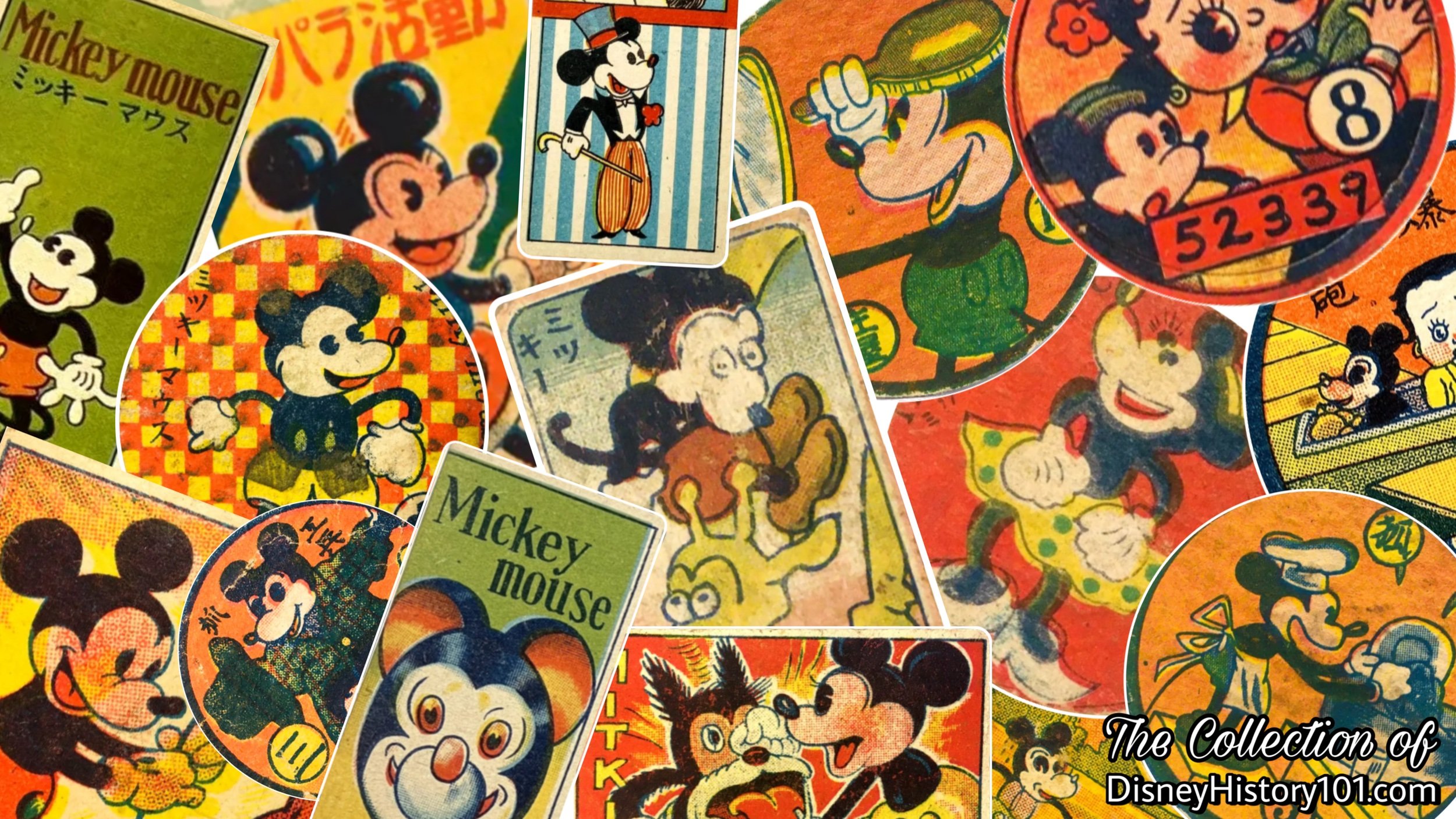
Menko and Sugoroku cards featuring Mickey Mouse.
There were even めんこ, 面子 (Menko) and 雙六 or 双六 (Sugoroku) games featuring Mickey, Minnie, and Donald, which were clearly manufactured with the Japanese consumer in mind.

A rare unlicensed Dobin (土瓶) teapot featuring a Mickey Mouse lid atop a cat, with bamboo handle, was produced in Japan during the 1930s.
During this era, some unsanctioned products were made without the legal consent of Walter E. Disney. These often featured off-model images of Walt Disney’s Mickey Mouse, Minnie Mouse, and other Disney characters, whom occassionally interacted with non-Disney characters like Popeye or Betty Boop. Some of these copyright-infringing products included lusterware, bisque figures, and ring toss games. Other unsanctioned products like the ミッキーの大奮戦 (“Mickey’s Big War”) manga, postcards, metal tops, and other toys even depicted a militant caricature of Mickey Mouse. These illegal business practices were not limited to Japanese companies, as many commercial businesses throughout Europe and America engaged in the very same behavior for subsequent decades.
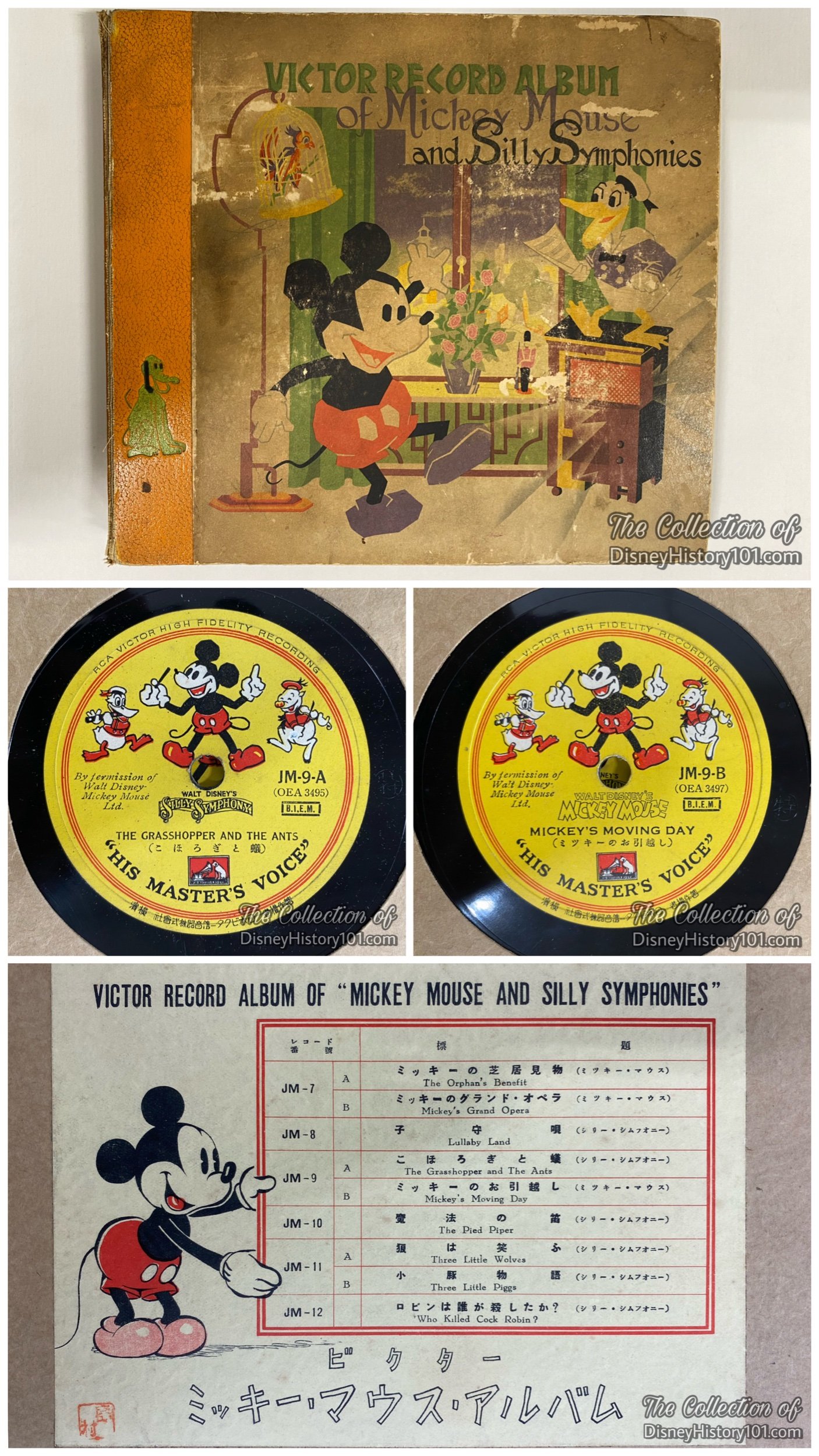
A Victor Record Album of Mickey Mouse and Silly Symphonies (e.g. “Lullaby Land,” “The Grasshopper and the Ants,” “The Pied Piper”) with English audio and Japanese text, circa 1930s.
However, the Disney organization continued to take an active interest in the Japanese culture and market, producing much licensed merchandise with the Japanese audience in mind. Note a rare example - an early Victor record album release of “Mickey Mouse and Silly Symphonies”, manufactured exclusively for the Japanese consumer market. While the audible tracks of its album were published in English, the album sleeve artwork and text was modified for the Japanese consumers.
We will revisit the subject of sanctioned, licensed product and consumers later, but for now we will continue to examine the synergistic relationship between Japanese and Japanese-Americans and Walt Disney Productions.
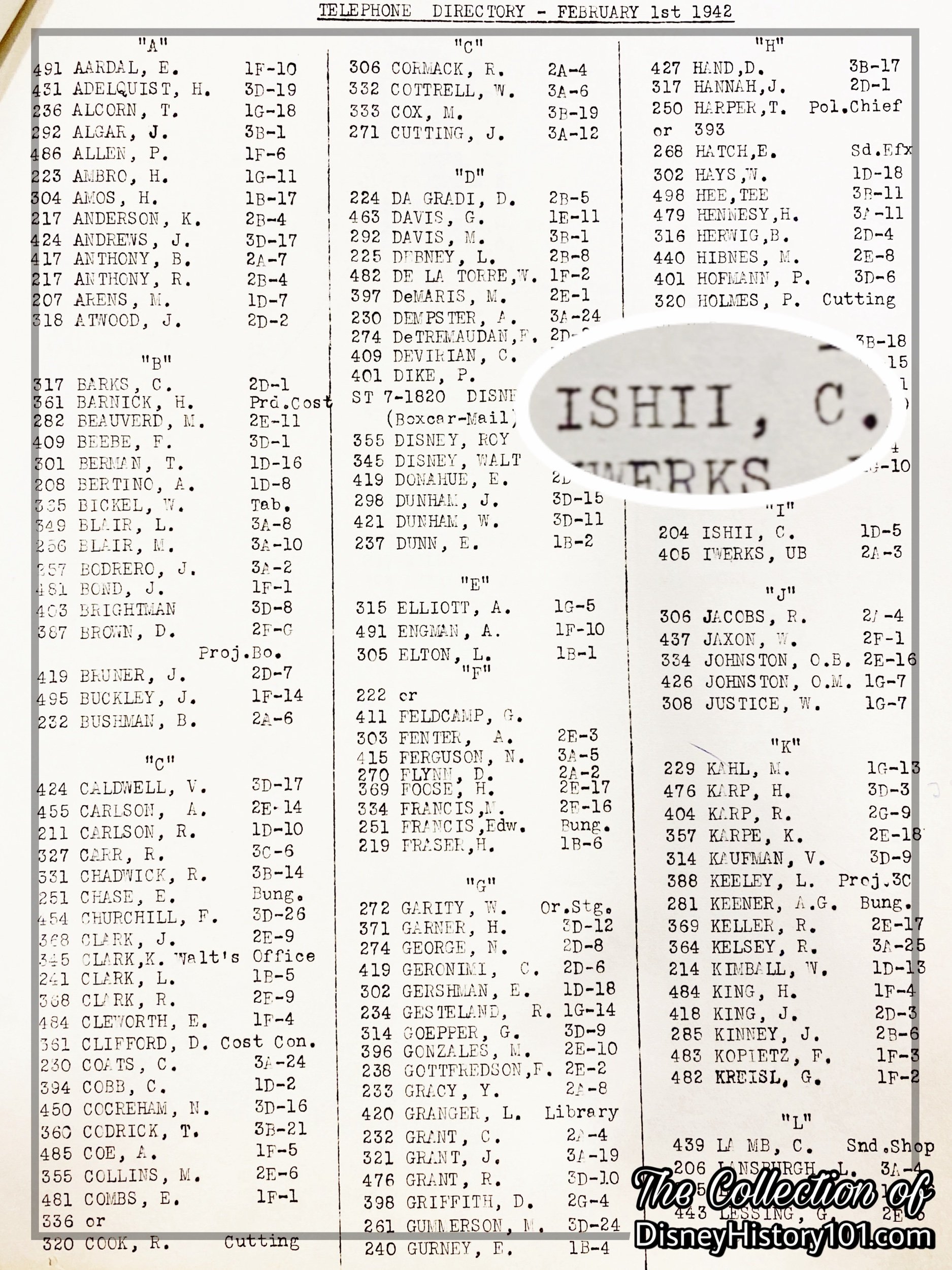
Chris Ishii’s name still appeared on the Walt Disney Productions Phone Directory, prepared by February 1, 1942.
“Japanese-American Artists of Walt Disney Studios”
By the late 1930s and early 1940s, Walt Disney Studios drafted artists into its ranks from the local Chouinard School of Art in Los Angeles. As a result, the Walt Disney Studios became ever more diverse. Therein, a number of Japanese and other Asian-American animators found their niche and excelled. Aforementioned Veteran Japanese-American Walt Disney Studio Animator Robert “Bob” Kuwahara was now joined by a whole new generation of artists. In writings contemporaneous of that time, animator Ward Kimball mentioned a handful of Nisei who worked for the Walt Disney Studios , naming Chris Ishii, Tom Okamoto, Masao Kawagushi, and James Tanaka. These contributed to some of the most groundbreaking and memorable Walt Disney Productions like The Reluctant Dragon, Dumbo, and Fantasia.

A culturally insensitive background painting from a war-time propaganda film produced by Walt Disney Studios for the United States Government.
Then the United States of America joined the war. Amidst the war-bewildered world, patriotic fervor swept the nation. Though the Walt Disney Studios continued feature film production, 94 percent of its facilities were engaged in special government work, including the production of training and propaganda films for the armed services, and health films shown throughout the world by the U.S. State Department. The Disney characters “went to war”, as pictorials for numerous military organizations. The Walt Disney Studio made a series of films on South America, animation for the Canadian Government selling Defense Bonds, a film describing “Four Methods of Flush Riveting”, films for the Navy Department, and more for the United States Government. Sadly, many of these films and other media contained much anti-Japanese propaganda, including the outstanding Victory Through Air Power.
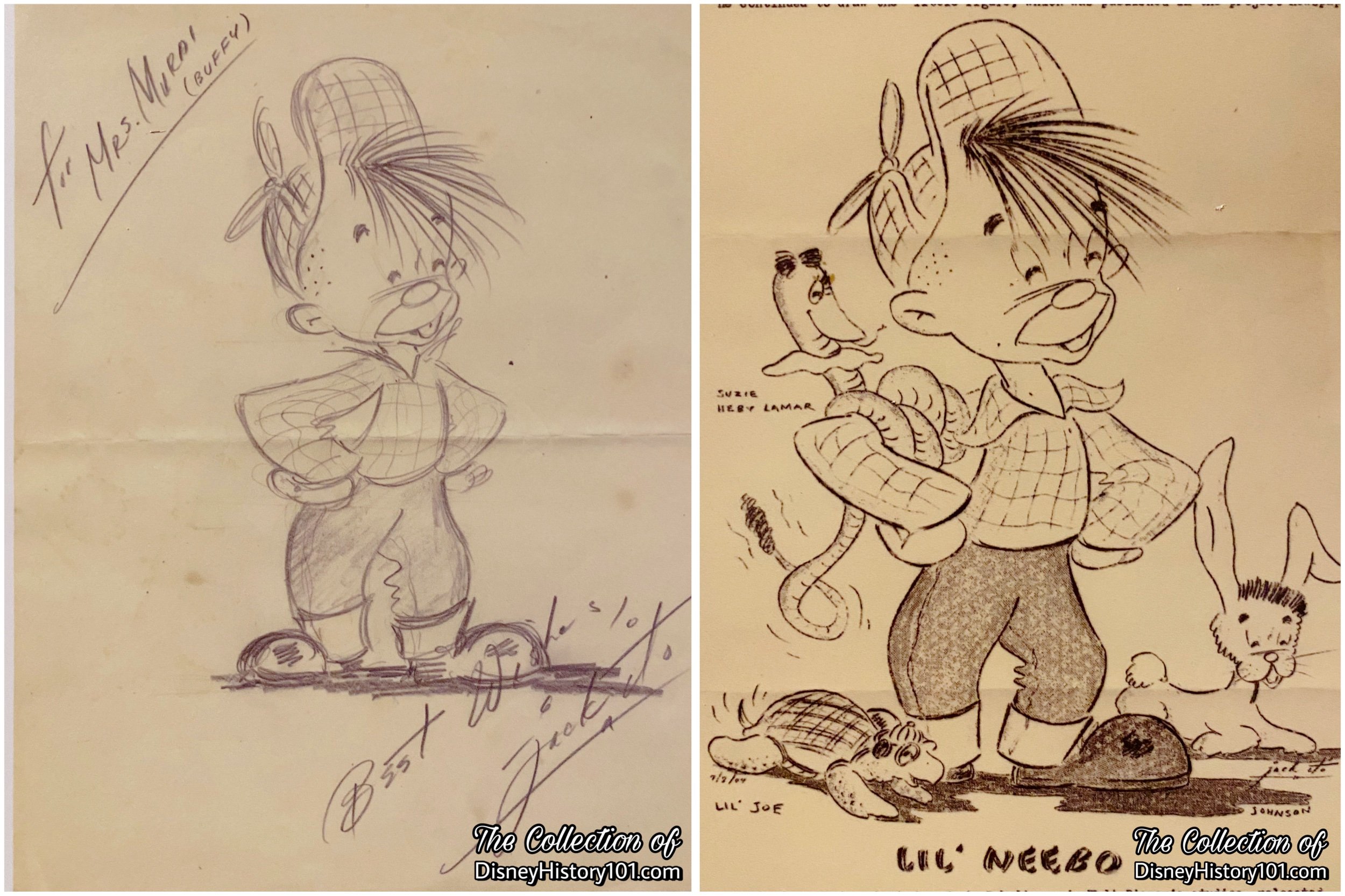
Chris Ishii drew his Lil’ Neebo (“Little Nisei Boy”) while interned at Santa Anita and Amache Relocation Center; Japanese American National Museum Collection 215.100.204/215.100.205.
All the while, devastating things were happening in the war-bewildered world. Among these was the Presidential Executive Order 9066 which resulted in more than 120,000 Japanese-Americans being unjustly, unconstitutionally incarcerated in domestic concentration camps across the United States of America. Those United States Citizens horrifically confined behind barbed wire by their own government, included many skillful Walt Disney Studio animators like Chris Ishii, Bob Kuwahara, and Tom Okamoto. While incarcerated, many of these ones used their artistic skills to inspire others by teaching classes, creating decorative items, and contributing illustrations toward newsletters.
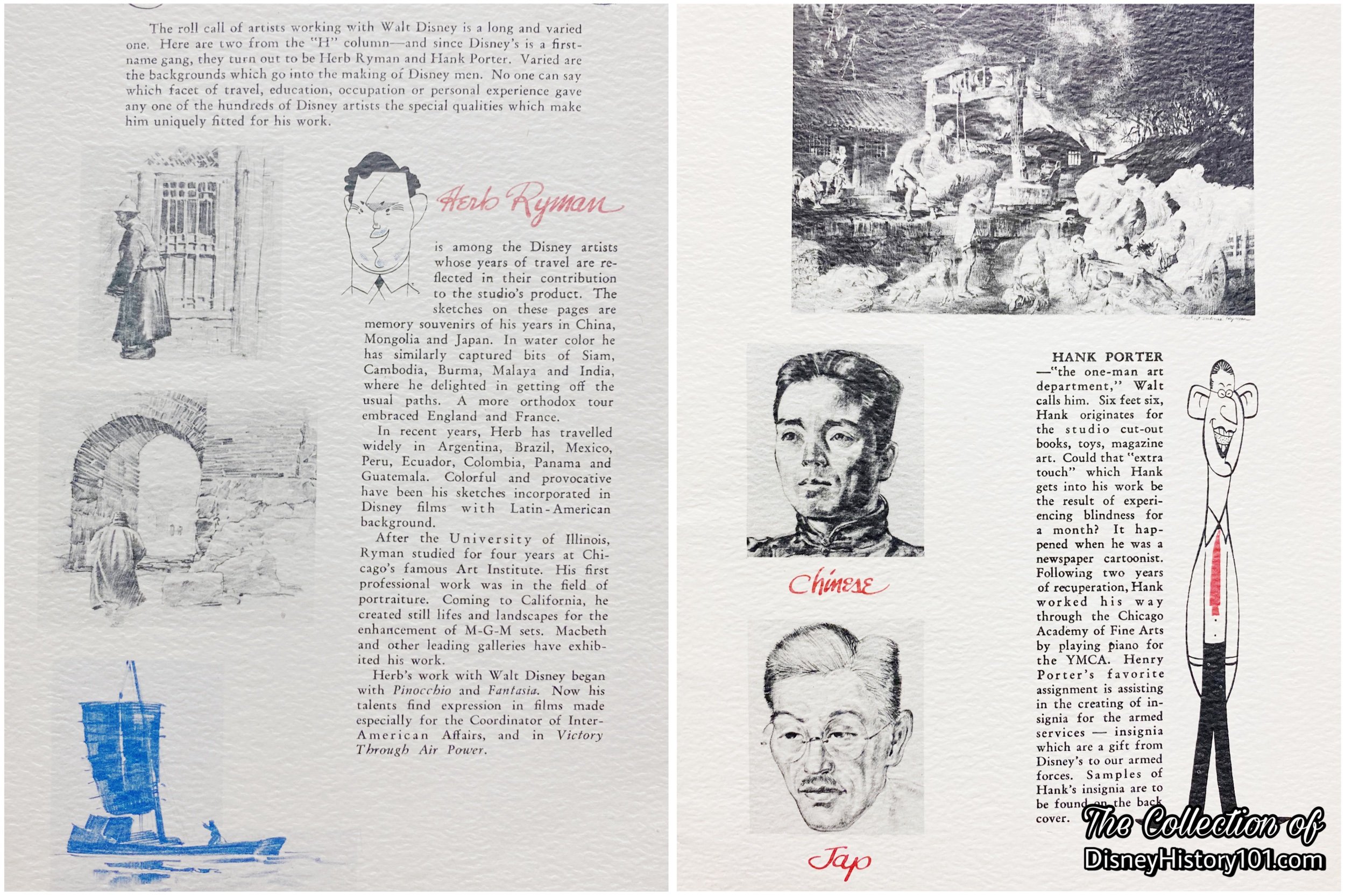
Both respectful sketches from a cherished trip to Japan and culturally insensitive illustrations were printed within the pages of the war-time Dispatch at Disney's published by Walt Disney Studios.
Few volunteers were recruited from among the camps, like Chris Ishii who joined the United States Military Intelligence Service and served his country overseas. Meanwhile, Dispatch From Disney’s (a World War II-era magazine prepared by and for fellow patriots of Walt Disney Studios) both makes no mention of, and contains no contribution from any patriotic Japanese-American employees of Walt Disney Productions who served their country.
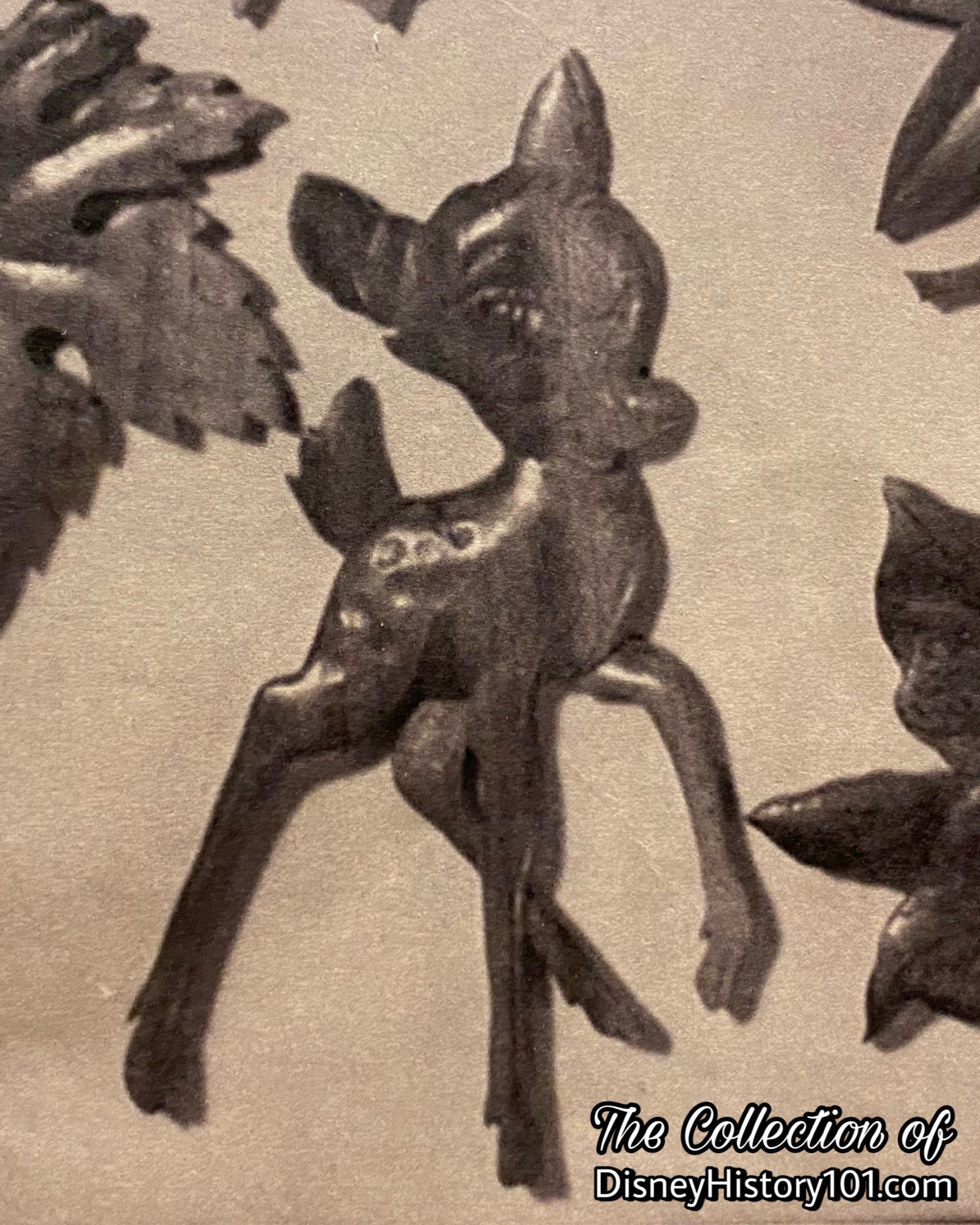
A beautifully-crafted Bambi-inspired woodcarving made by an unknown Japanese American Incarceree, possibly before the theatrical release of Walt Disney’s Bambi in August 1942.
Few were lucky as Walt Disney Studios Nisei artist Gyo Fujikawa (1908-1998). Even during the outbreak of the war, Gyo became renown for her delicate and profound contributions for Walt Disney Studios from 1939 to 1941, even credited in the pages of some promotional materials for Walt Disney’s Fantasia. Gyo’s family was relocated to Rohwer concentration camp in Alabama, but Walt was able to transfer Gyo to his New York office where she extraordinarily managed to avoid the incarceration. While there, Gyo worked on licensed publications at Disney’s New York Studios.
“It was Disney who Fujikawa said changed the way she handled bigots during World War II. Unlike her parents and younger brother, she escaped internment because she was living in New York; only Japanese residing on the West Coast were sent to the camps. But Fujikawa traveled frequently, and when people became suspicious of her, she often told them she was really Anna May Wong, the Chinese American actress. According to her nephew, Fujikawa took secret delight in this masquerade. But when she told Disney that she often lied about her heritage, he exploded. ‘Damn it! Why should you say that? You’re an American citizen,’ he said. ‘From that moment on,’ recounted recently, ‘that’s exactly what I did tell them.’”
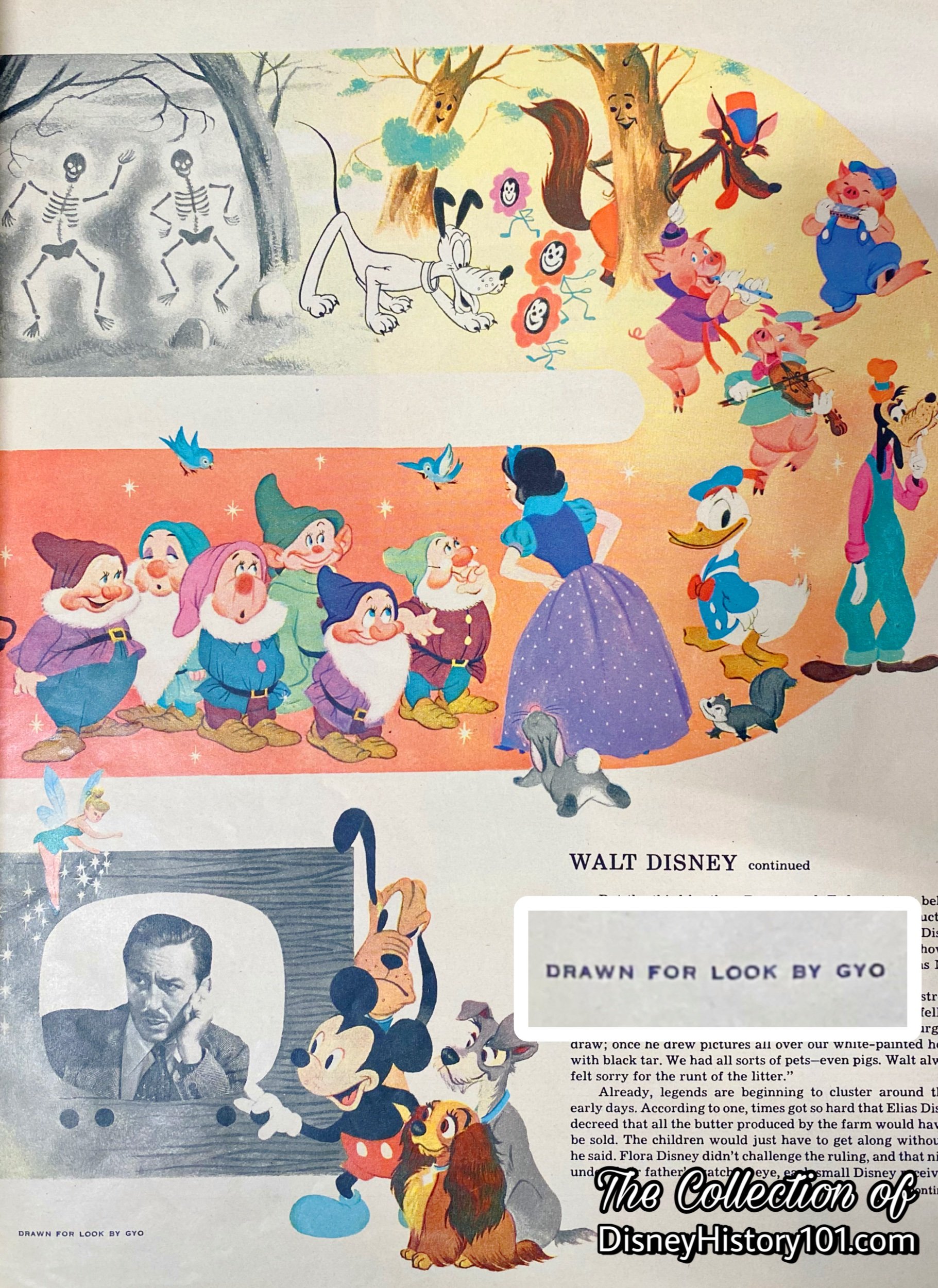
Walt Disney Productions’ illustrations created by Gyo Fujikawa for LOOK Magazine during the 1950s.
“Japanese Americans Support Walt Disney Productions”
Eventually the war ended and all interned Japanese-Americans began the awkward transition of attempting to adjust to life outside the concentration camps once again. Some (like Chris Ishii) returned to the Walt Disney Studio, and these Veteran Japanese-American artists were joined by a new generation of artists, the most prolific of whom was the 20-year-old Iwao Takamoto, who was recently released from Manzanar Camp. Iwao was hired by Walt Disney, and went on to work under the legendary Marc Davis and Milt Kahl, contributing to character designs for Walt Disney’s Cinderella, Lady and the Tramp, and Sleeping Beauty.
By the early-to-mid-1950s a number of talented young Japanese-American men and women continued to be hired by Walt Disney Studios. Willie Ito was hired in 1954, and contributed to the most-memorable spaghetti sequence from Lady and the Tramp. Meanwhile Ink & Paint Department staff - Jayne Tanawa, Kimi Tashima, Peggy Himashida and others, made indelible impressions upon the gorgeous color of animated productions, though little is recorded about them.
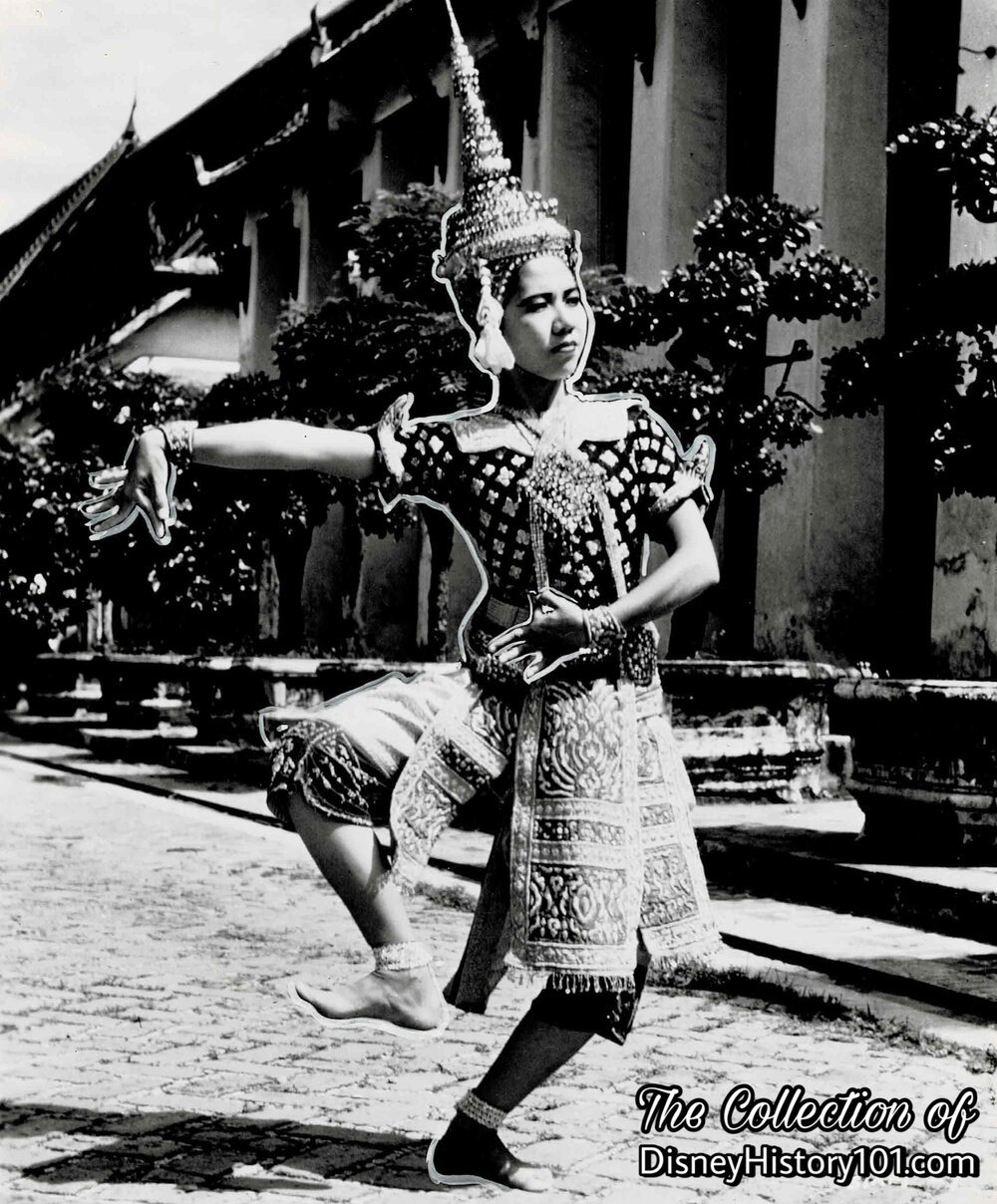
Thailand was the first Asian culture to be depicted in Walt Disney’s People and Places series.
“The World Meets the True-Life People of Asia - Thailand, China, and Japan”
By 1953, Walt Disney was producing “new explorations in ‘True-Life Adventures’” - People and Places! The first People and Places film - “The Alaskan Eskimo” was released on February 18, 1953. Before the end of that year, the new Buena Vista Distribution Co. was founded and “The Living Desert” (released November 10, 1953) became the first film distributed by the division.
By 1954, Walt Disney had more than 40 photographers at work throughout the world. They were filming True Life Adventure and People & Places subjects in such scattered locales as Australia, the Arctic Wilderness, Lapland, Samoa, Japan, the islands of the sea, Portugal, England, Scotland, Wales and Antarctica. This was to satisfy a factual film release schedule that extended well into 1960. Very soon, more of the interesting people and the exotic locations in which they live would be “visited” by audiences, through films like Alaska, Switzerland, the Arctic, and “Siam” (featuring Thailand and one of the first Asian cultures to be represented in the series). As late as September 1956, Ernst Heiniger and his wife were securing photographic coverage in villages of Japan for the People and Places series.
The following year, the first and second seasons of the Mickey Mouse Club television series (1955 - 1956) included daily serials, some of which explored people and places around the world. Among these was Japan Correspondent starring George Nagata as the Correspondent, with narration written by Ray Darby. Japanese life was “seen through the eyes of a young Japanese-American boy.” The serial showed how life in a typical Japanese house was different from those of Americans. Other serials depicted Japanese sports and amusement. Despite these differences, the importance of family unity was highlighted as a major factor in daily activities. The individual first season episode titles were “Japanese Excursion”, “Japanese Home”, “Japanese Amusement”, “Japanese School” and “Japanese Sports and Games”. The second season serial was divided into individual episode titles “Japanese Circus”, “Variety Show”, “Dancing School”, “Snow Country” and “Japanese New Year”.
In 1957, Roy O. Disney (of Walt Disney Productions) and Bank of America agreed to to a bank loans in the aggregate sum of $8,500,000 had been made to produce “The Hong Kong Story.” The film was to be the second People and Places film to depict an Asian culture and was in production by April 5, 1957, and the search continued for a distributor. The was the second People and Places film to depict an Asian culture and the first People and Places film to depict the Chinese people and culture. Walt Disney’s People and Places series would expand to include the cultures of Brittany, Wales, Scotland, Lapland, India, Polynesia, the Navajo, Portugal, Morocco, Spain, Sardinia, and Holland.
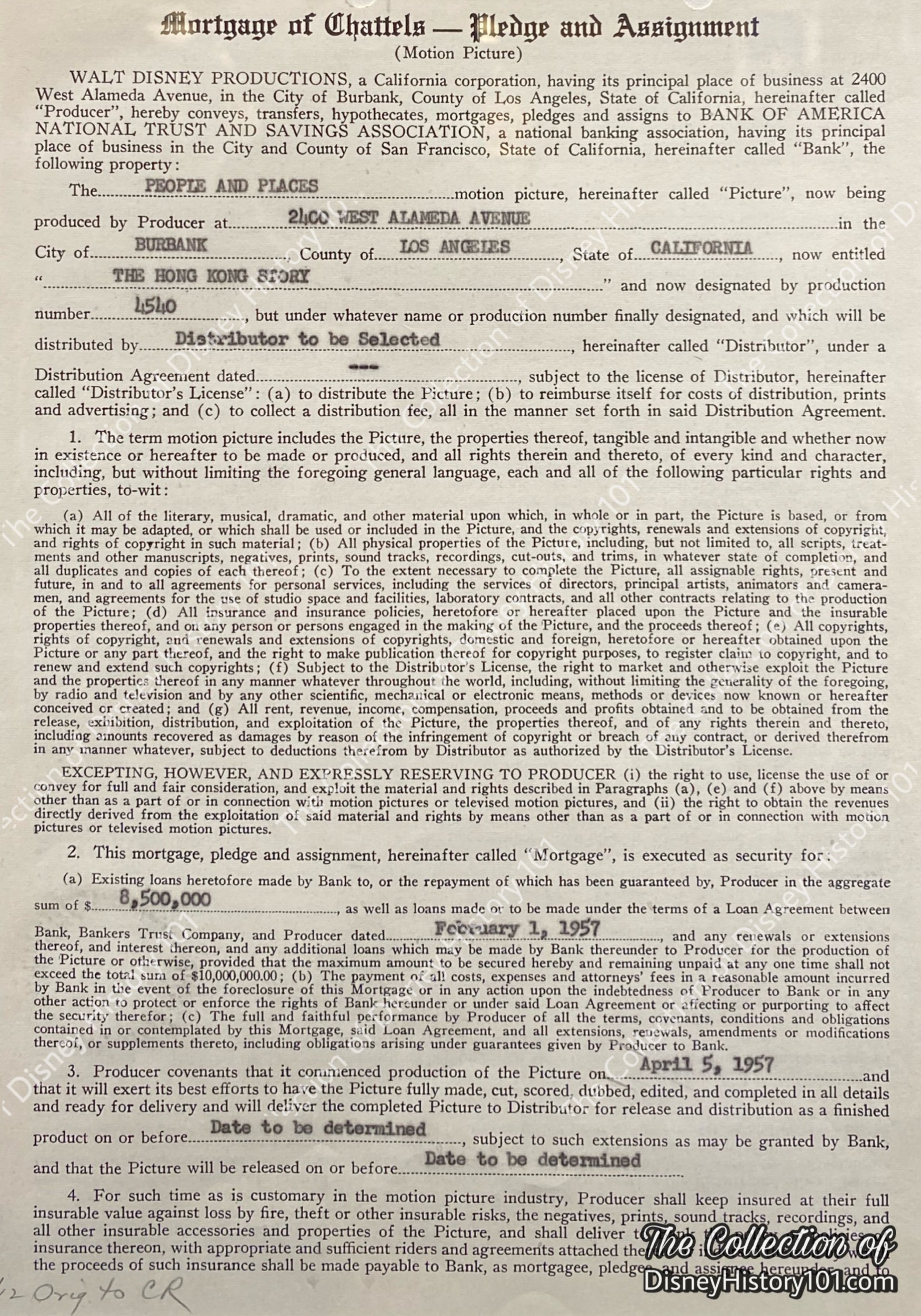
Mortgage of Chattels related to The Hong Kong Story - the second People and Places film to depict an Asian culture - China.
Finally on July 9, 1958, Walt Disney Productions released the the third People and Places film to showcase an Asian culture - the short film entitled “Ama Girls,” introducing theatrical audiences of the world to some of the people of Japan. The film was a success, and Ben Sharpsteen (“Ama Girls” Producer) won an award for Best Documentary Short Subject of 1958.
Two years later Walt Disney’s People and Places released the short film “Japan.” Subsequently, the full motion picture was divided into two educational color, short film reels, which were released for sale to the public (at $12 each). Titled “Japan” (27 minutes) and “Japan Harvests the Sea” (29 minutes), “these films depict the human family in its infinite variety of habits, effectively emphasizing their human relationships, customs and traditions. You'll learn about the land where… Japanese girls who spend a lifetime diving beneath the sea to harvest a crop… These are only a sampling of the fascination you’ll encounter in all of these award-winning subjects.”
Audience response to Walt Disney’s True Life Adventures was overwhelmingly positive. In 1961, one Japanese organization gifted Walt Disney a metal pagoda figurine which he proudly kept behind his desk, a gift “for his outstanding achievement in fostering international understanding through photography.” A testament to this truth was Walt Disney Studio animator Bill Justice, who reflected on the invaluable True Life Adventures, expressing: “we learned to… understand other nations.”
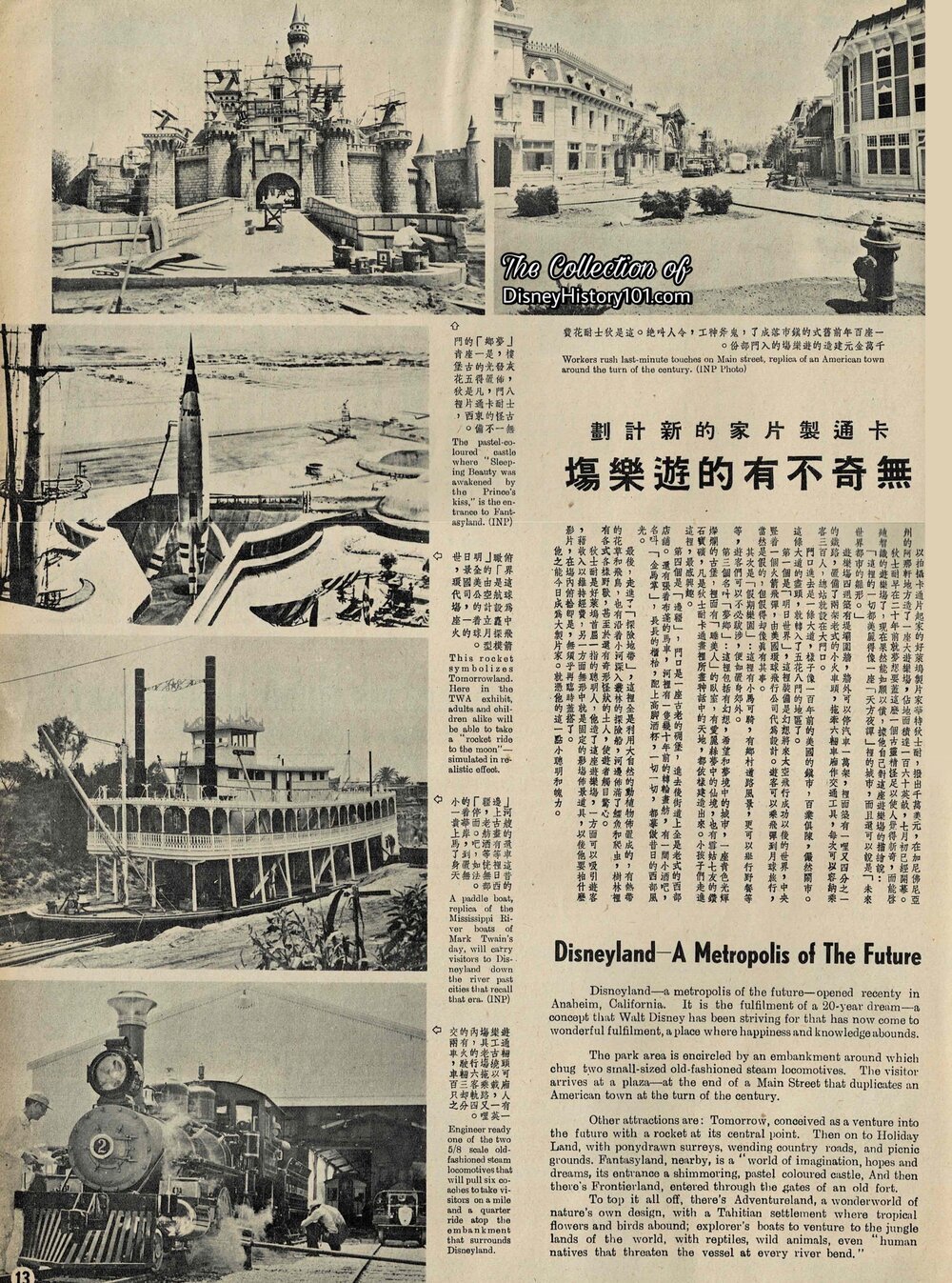
The Asian Pictorial June 1955 gave a preview of Disneyland.
“The Japanese People - Supporting the Disneyland Show Since 1955”
Meanwhile, Walt Disney’s Disneyland Park was scheduled to open in July of 1955. In the months leading up to that momentous event, many local and foreign journals reported on the construction progress.
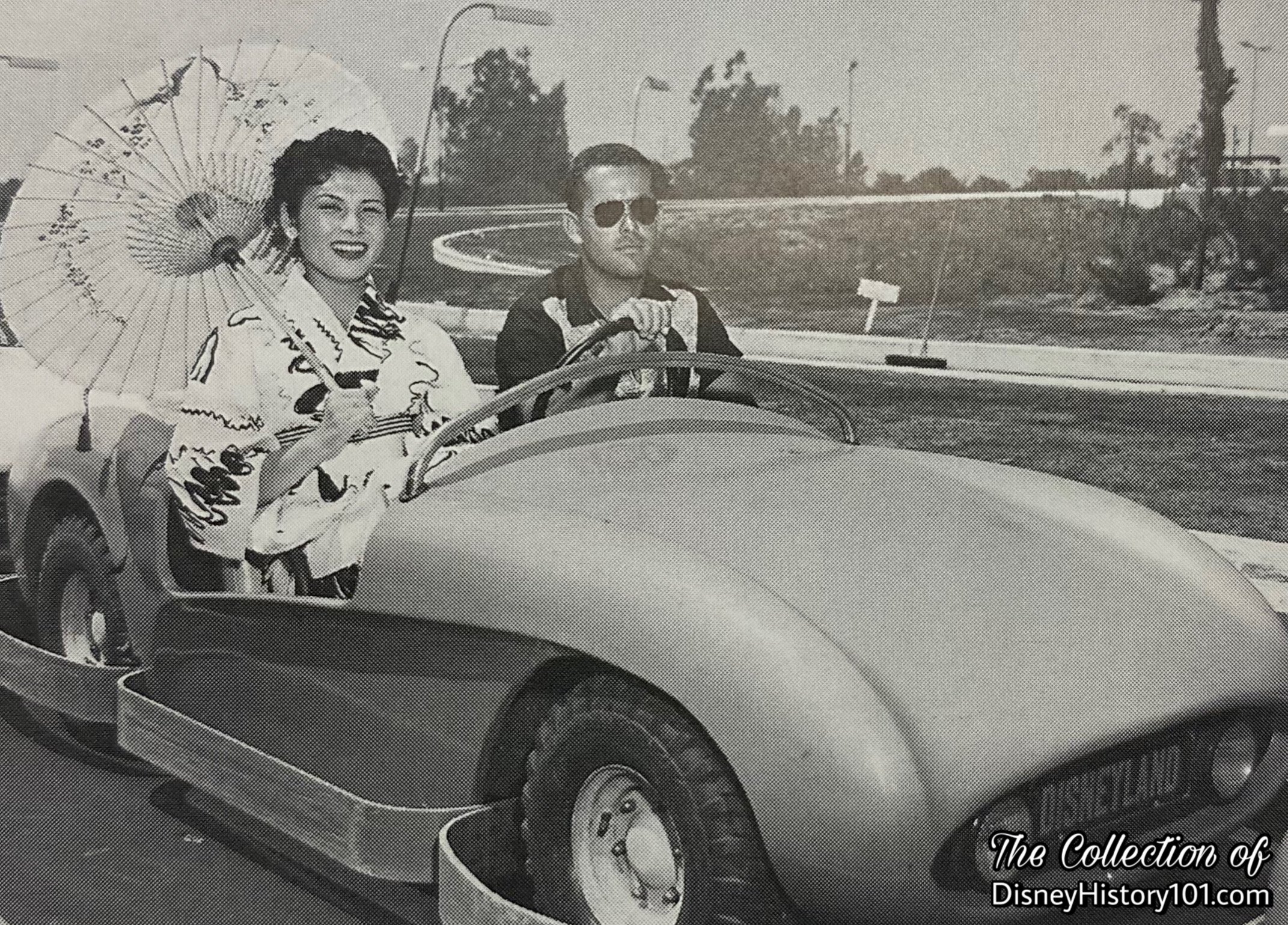
Bob Gurr gives a personal Disneyland Autopia ride to perhaps the earliest Japanese celebrity to ever visit Disneyland Miss Japan 1955, Keiko Takahashi; Courtesy of Bob Gurr.
Disneyland opened July 17, 1955, and on that historic day, Walt Disney read aloud these words: “To all who come to this happy place: Welcome. Disneyland is your land.” While some anti-race sentiments prevailed in the world, Walt Disney and company recognized a need to prepare their carefully selected Hosts and Hostesses. This was partially accomplished through the now antiquated “Your Role in the Disneyland Show” orientation books published 1955, which instructed “Disneylanders” to provide guest service to all people in a section titled “Meet the King of our Magic Kingdom”. Page 6 reads: “This guest may be male, female; old or young; black, white, brown, or yellow. He may be Christian, Jew, Buddhist, or Hindu; Republican or Democrat; show-off or wallflower; big shot or small; rich or poor; healthy or unhealthy. But from the moment his car turns into the Disneyland parking area until he leaves, he is our guest. And he or she is the most important person in the world to Us.” So, it was up to each courteous, considerate host to leave their troubles and prejudices outside of the Disneyland berm and preserve this Disney Tradition in the Magic Kingdom. The result was that Disneyland gained “a world wide reputation for COURTESY, CLEANLINESS, AND... GOOD OLD FASHIONED FRIENDLINESS.”
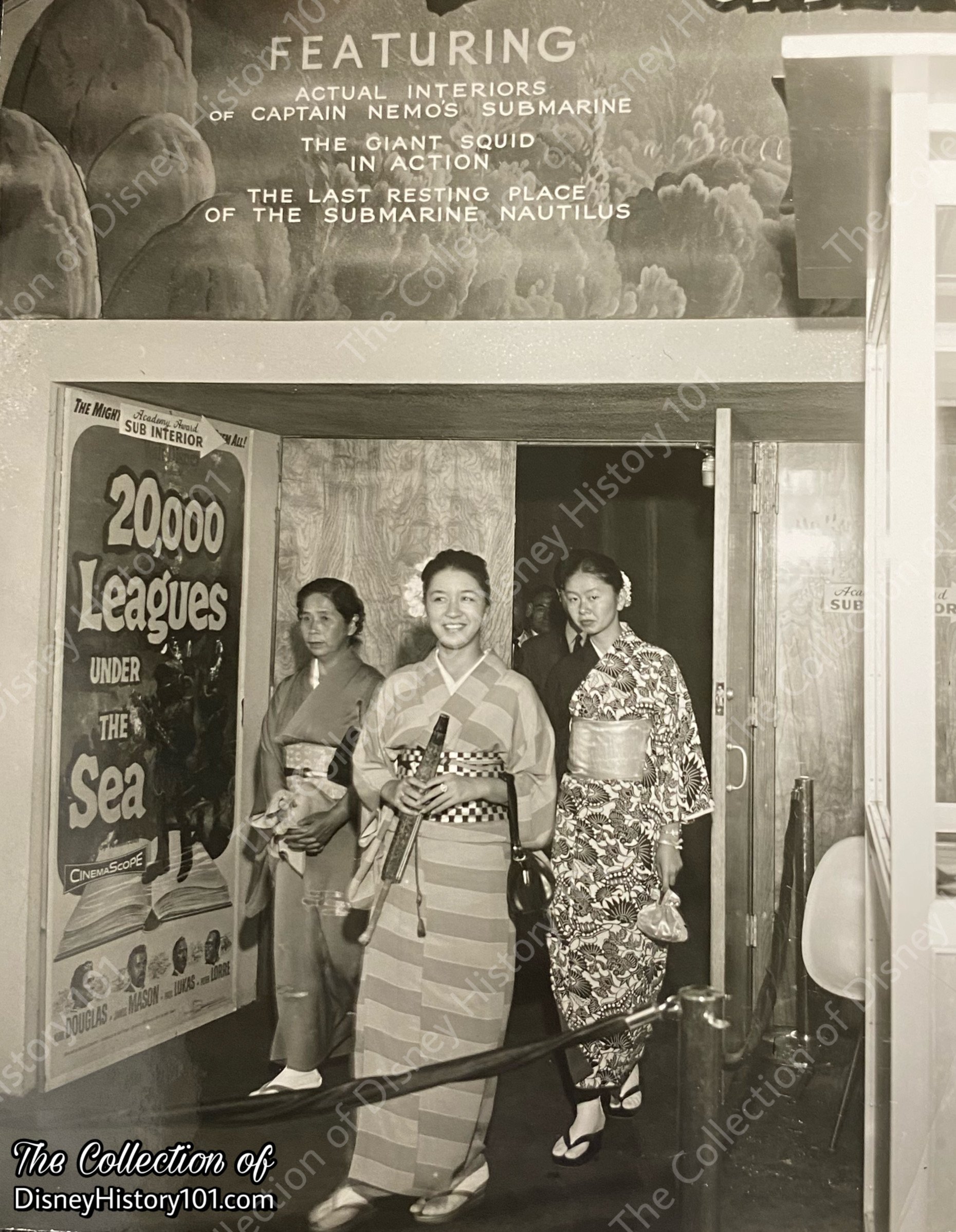
Japanese Actress Mitsuko Kusabuye and other V.I.P.s visit Disneyland in August or September 1955, for the Grand Opening of the 20,000 Leagues Under the Sea Exhibit.
Soon as the gates opened, visitors from every continent, country and state felt welcomed to flock to Walt Disney’s Magic Kingdom - including both native Japanese and Japanese-American Guests! The Disneyland News (the official publication of Disneyland), published August 1955 ran the headline “World Visitors Enjoy Disneyland”. The article read: “A name register at Pendleton Woolen Mills store in Frontierland shows the signatures of visitors from all 48 states in the United States and 12 foreign countries since Park opening on July 18.”
One of the earliest and most-notable Japanese Guests to be reported on was Miss Japan Keiko Takahashi (who visited with Miss Universe contestants) according to “The Disneyland News” (March 10, 1956 ; Vol. 1 No. 9). According to The Disneyland News published August 1955 mentioned that “foreign beauties from the Miss Universe content held recently in Long Beach, California, spent time at Disneyland after the pageant. They included Miss Japan and Miss Italy who paid the park a visit before returning home.”
Photographer Mel Kilpatrick captured her visit as she received a personal ride aboard the Autopia with WED Enterprises engineer Bob Gurr at the wheel [Design: Just for Fun by Bob Gurr]
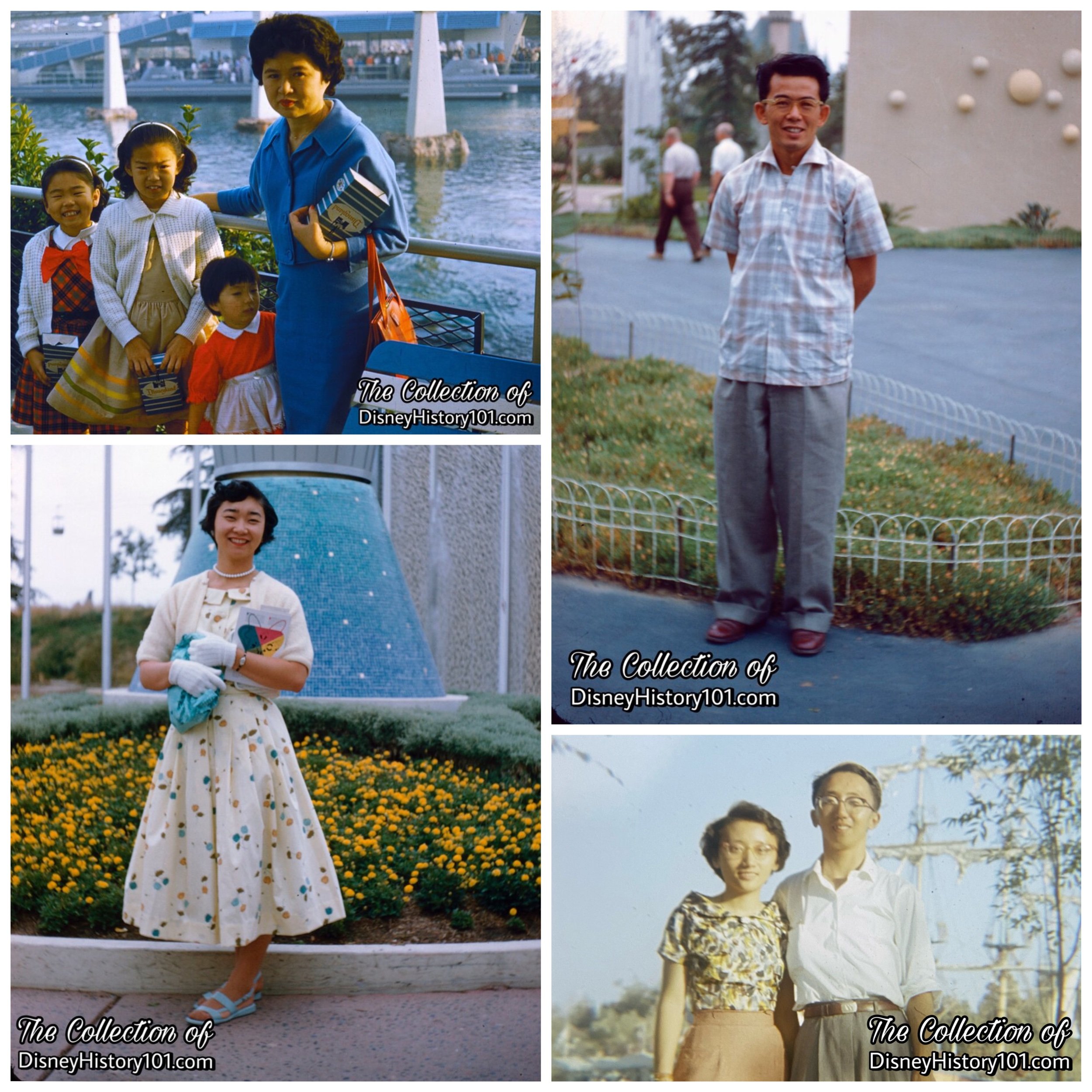
Native Asians and also Asian-Americans (including those of Japanese decent) visited Disneyland during its first decade of operation.
Very Important People from every major continent in the world continued to experience the magic of Walt Disney’s Disneyland Park. These included the “big shot or small”, attested to by the innumerable memories preserved through personal accounts and photos.
Of course, the “big shots” were often reported on by the press and are most-remembered. Some of these include Prince Akihito and Princess Michiko of Japan who visited Disneyland on their honeymoon in 1960, and Mitsue Ikeda, the wife of the Japanese Prime Minister Hayato Ikeda visited in 1961. By 1961, “Anaheim... Future Unlimited” published by the Anaheim Chamber of Commerce, commented: “There isn't a corner of the world that hasn't heard of Disneyland . . . visitors have come to the Magic Kingdom from all 50 states in American and more than 100 foreign lands!” Not long after this commentary was published, popular musicians, stars of stage and screen, and many other VIPs from Japan continued to flock Disneyland, and some of these visits were reported on, like Japanese singing sensation Kyu Sakamoto in August 1963.
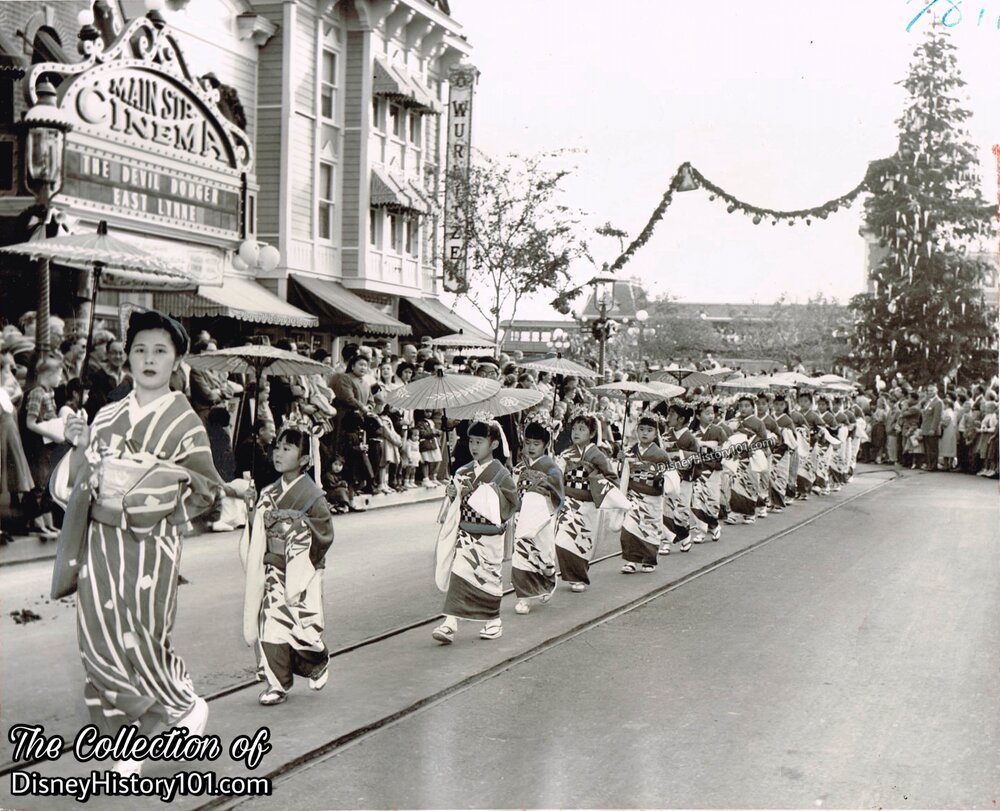
Madame Hanayagi Tokuyae (left) leads her Tokuyae Classical Dance Group of Los Angeles in the Christmas Parade of All Nations, (December 23, 1957)
“Japanese Guests & Organizations Support the Show” - Walt dedicated Disneyland, stating that: “Disneyland is your land” (ディズニーランドはあなたのものです。) True to Walt’s words, the introduction of Private Parties made it possible to roll out the red carpet for special organizations. Among these was one of the first Asian-American groups to enjoy a Private Party at Disneyland - in the form of a Niesi Veterans Re-union that was held at Disneyland in 1958. All the while, other Japanese-American organizations and groups immediately became proud supporters of the Disneyland show in other ways.
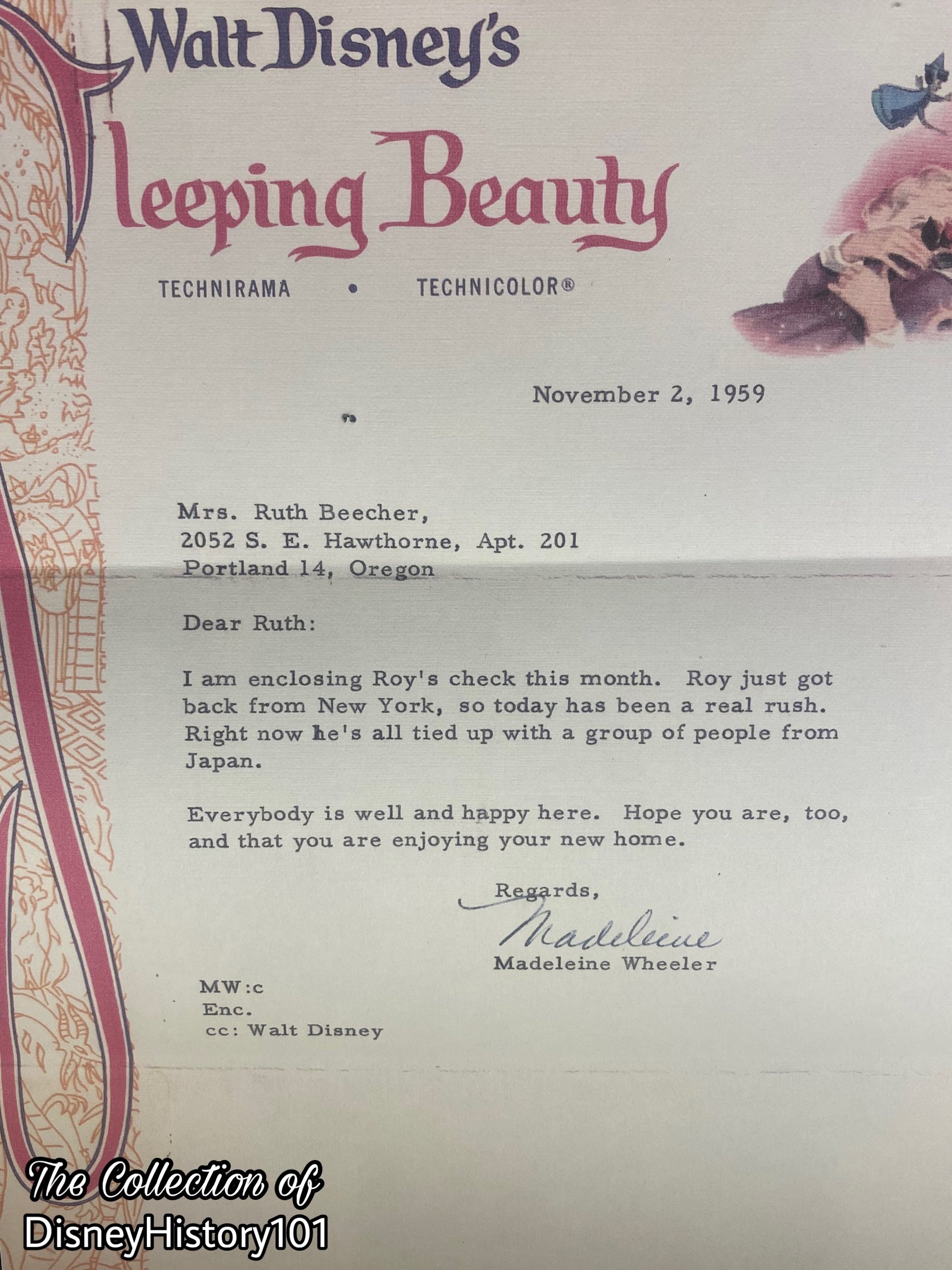
Walt mentions that Roy entertained a group from Japan, November 1959; Collection of the Walt Disney Hometown Museum
For instance, during 1959, The eventful 24-hour “Gala Day At Disneyland” was highlighted by one of the most colorful parades staged anywhere. A spectacular array of dance groups, bands, and variety performers from Japan, Scotland, Greece, and many other nations served up “a scintillating portion of top entertainment.” Among these units was Kansuma Kai (which was notably overseen by the outstanding dance master Madame Fujima Kansuma of Little Tokyo in Los Angeles). Kansuma Kai was a proud supporter of Disneyland and a few years later, the troupe also provided decorative floats for the Parade of All Nations portion of the Annual Christmas parade, on Sunday, December 16, 1962. Even during this early era of Disneyland history, it was not uncommon to see such a strong Asian and Pacific Island presence (e.g. L.A. Chinese Drum and Bugle Corps led by Hayward Tom, the India Art Group lead by Miss Sushila Janados, and the Korean Danco Group of Los Angeles lead by Phil Kim; each contemporary Disneyland entertainers of Kansuma Kai).

During Christmas 1961, a couple of young Japanese entertainers experienced the Babes in Toyland Village exhibit at Disneyland.
Another Japanese organization who participated in shows at Disneyland was the esteemed Tokuyae Classical Dance Group of Los Angeles (notably overseen by classical dancer Hanayagi Tokuyae; a member of Nihon Buyo Kiyokai, the Performing Arts Federation of Japan; the first Japanese American permitted to recommend future natori). Tokuyae Classical Dance Group of Los Angeles often performed as participants in celebratory and seasonal Disneyland parades and events during the 1950s and 1960s. In the photo above, Madame Hanayagi Tokuyae and her students can be seen carrying wagasa.
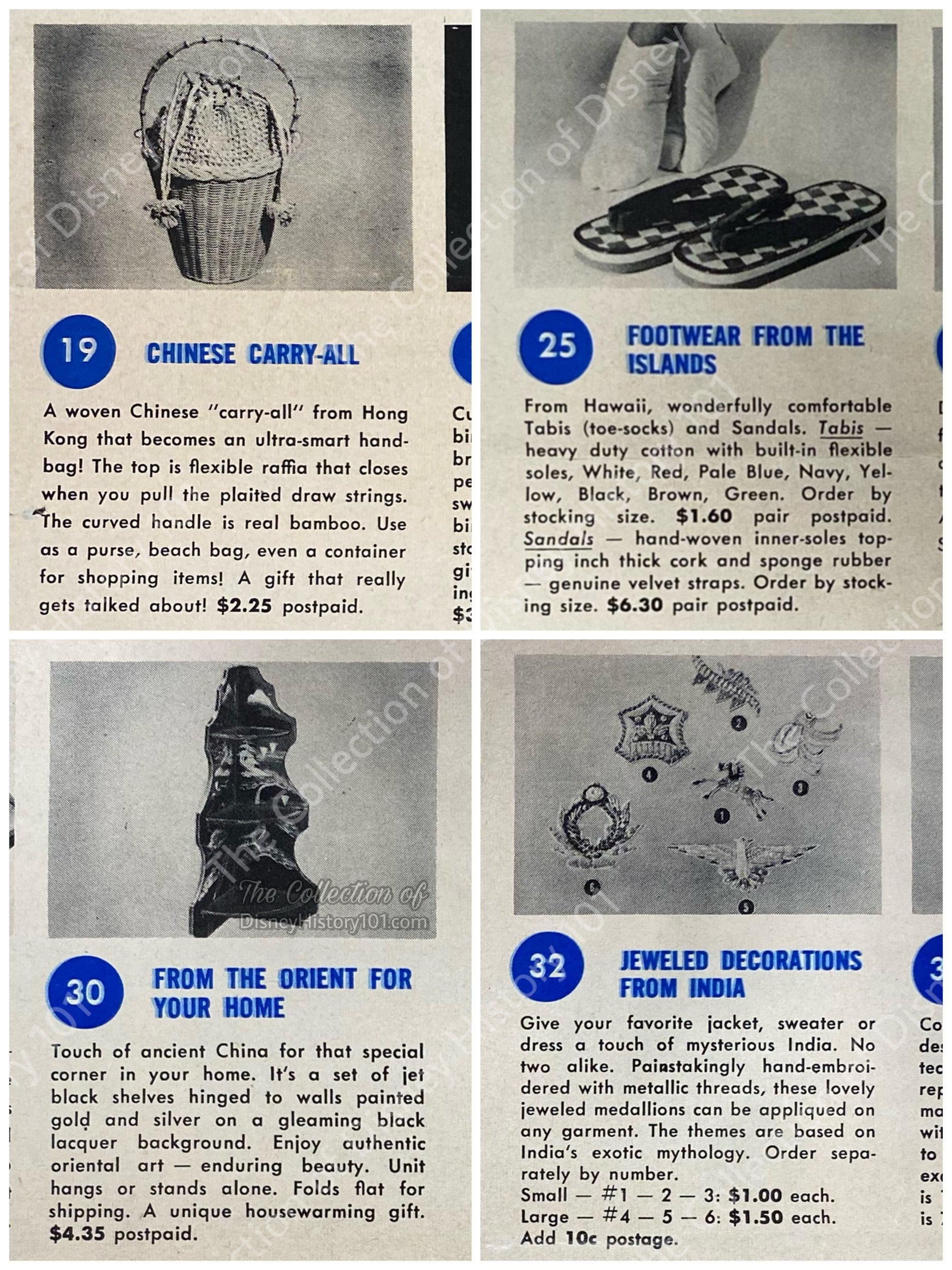
Above, souvenirs manufactured in Asian countries and on Pacific Islands were offered through “Gifts from Disneyland” during Disneyland’s first winter holiday season of 1955.
“Made in Japan - Walt Disney Productions Licensed Products and Japan Manufacturers”
A noteworthy chapter that factors into the story of Walt Disney World Showcase Japan Pavilion is that of the Japanese-produced merchandise that was licensed by Walt Disney Productions through the decades. Back in 1955, Walt Disney Productions was conducting character merchandising through a domestic division and foreign agents. As a result, by that year, 740 companies were making nearly 3000 items featuring Disney characters.
After the opening of Walt Disney’s original Magic Kingdom, shops and catalogs offered “fabulous gifts from Disneyland.” Many of these gifts were manufactured by the multi-talented craftspeople of Asia. There were hand-embroidered decorations from India, Tabis (toe-socks) and Sandals from Hawaii, woven Chinese “carry-alls” from Hong Kong, shelves from China, and ceramics from Korea. There were (of course) also a multitude of products manufactured in Japan.
Among the other products of Japan sold at Disneyland or through Disneyland catalogs were automated tin lithographic toys, eraser sets, pocket knives and multi-tools, necklaces, kokeshi dolls, lenticular buttons, and especially those memorable souvenir hand-painted wagasa (traditional bamboo and paper parasols). You may recall visiting Ruggles and purchasing bone China “eggs”, ceramics of Donald Duck distributed by Dan Brechner, or porcelain figures of Tinker Bell distributed by Wells of England. Each one was skillfully crafted by the people of Japan.
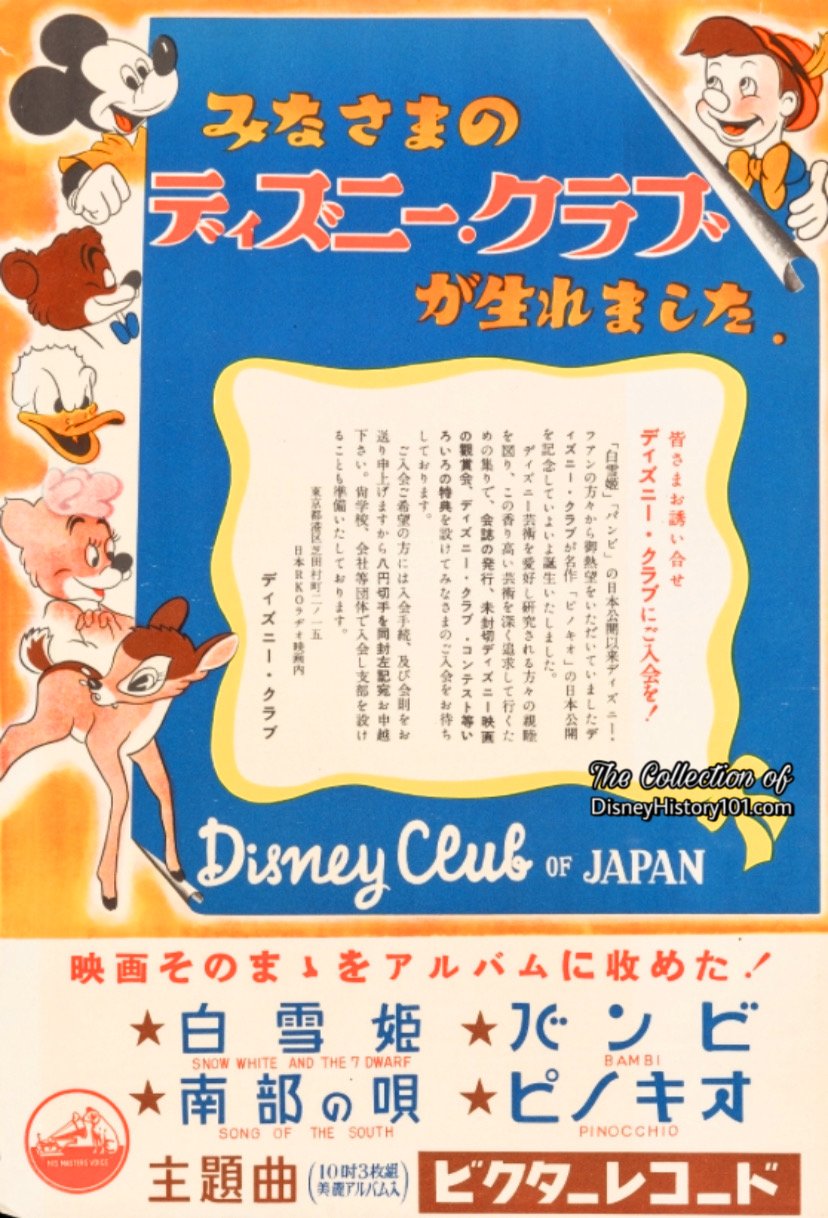
“Everyone invites you to join” in this poster announcing the arrival of the official Disney Club of Japan.
“We Keep Moving Forward, Opening Up New Doors - Walt Disney Productions Japanese-Language Dubs”
In his own words, Walt Disney once stated: “Diversity. We must appeal to a far wider range of audience interest than ever before.” A testament to Walt’s words, was the foreign distribution and translation of motion pictures for the international audiences of in Canada, the United Kingdom, France, Germany, Sweden and Japan. Japanese-language dubs of feature length Walt Disney Productions were prepared for specific overseas audiences. The Japanese film dub releases were not released in the same chronological order of their original releases. For instance, Dumbo (空飛ぶゾウ ダンボ; released 1954), The African Lion (1955), Davy Crockett (1955), 20,000 Leagues Under the Sea (1955), The Vanishing Prairie (1955), Fantasia (ファンタジア; 1955), Bambi (バンビ; 1957), Saludos Amigos (ラテン・アメリカの旅; 1957), Snow White and the Seven Dwarfs (白雪姫; 1958), and Three Caballeros (三人の騎士; 1959).
Many credited and uncredited Japanese actors, actresses, and vocalists supported the Japanese-language dubbing of feature length Walt Disney Productions. Some actors and actresses even voiced more than one character for multiple productions, like Shima Tomizawa (富沢志満) who voiced both Cinderella (for the 1952 Japanese issue), and Snow White (for the 1958 Japanese issue).
Walt Disney Productions Reports to Shareholders regularly reported on these releases. The report for the fiscal year ending September 1956 announced: “Walt Disney's widely acclaimed feature length cartoon, dubbed Japanese language, has received an award for artistic excellence from the Japanese Ministry of Education. It is the only American film among seven to be so cited An impressive attendance record has been established by the picture in the first 18 days of its run at the Marunouchi Nikkatsu Theatre here. The 1,500 seat theatre with a daily capacity of 9000 and six shows a day played to 194,069 spectators during the run. This means thousands had to stand to see the picture.”
“Disneyland High-Fidelity Records”
Popular Japanese singers also contributed theme songs, like Izumi Yukimura (雪村 いづみ) who sang the theme of Walt Disney's Alice in Wonderland. Many of those Japanese-Language tracks were published on Disneyland High-Fidelity Records. In addition to these were original albums
Their comprised contributions may have been unheard of by most contemporary American audiences, but were greatly appreciated by people around the world.
“The Disney Club of Japan”
It is of note, that contemporaneous with the release of Pinocchio (ピノキオ; 1959), Disney activities were “as globe-girdling as those of almost any U.S. industrial company. Its cartoon characters, for instance” were “licensed in 31 nations.” Disney was utilizing the built-in exploitation features of its products to boost profits of its foreign operations (including those of Japan). One example is the RKO-Japan established official Disney Club of Japan. For the price of an eight yen stamp, enthusiasts of Disney art could enjoy member benefits of journal publications, viewing of Disney movies, Disney Club Contests, and much more along with fellow fans. It is not surprising that only a short time later, Japan ranked first among countries other than the United States, in sales of Disney consumer products.
“Simultaneously with the national release of Walt Disney's DAVY CROCKETT, KING OF THE WILD FRONTIER, Fess Parker went on a month-long personal appearance tour covering ten important cities throughout Nippon. Parker, who held the title role in the film, faced a heavy schedule which included theatre and TV appearances as well as interviews with press, radio, television and magazine correspondents.”
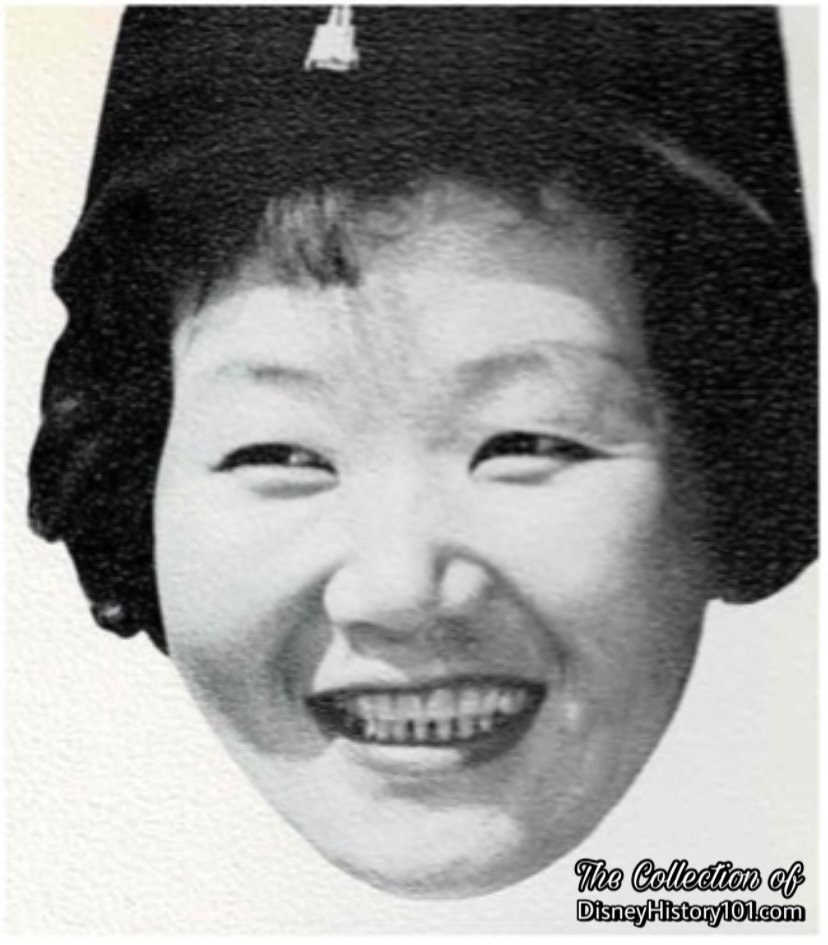
Reiko Cox (pictured above) was a new Tour Guide for 1962, equipped to deliver the tour script in Japanese. Her story is briefly told in Backstage Disneyland (published December of 1962).
“Japanese Guided Tours Hosts & Hostesses Support the Show”
Meanwhile, Disneyland Guests were often welcomed by a number of Japanese-American Hosts and Hostesses who fulfilled roles as Cast Members of the Disneyland Show. For instance, by Disneyland’s Tencennial celebration and beyond, there were many exemplary Japanese-American women supporting the Disneyland Show as Guided Tour Hostesses. The foremost of these included Reiko Cox - who was one of the first Japanese-American Guided Tour Hostesses to be distinguished in her supporting role at the dispatch tour desk. Reiko had the pleasure of selecting girls for tours, Main Gate Service, and for buses, forming the tours in the garden, and keeping the show going with a smile.
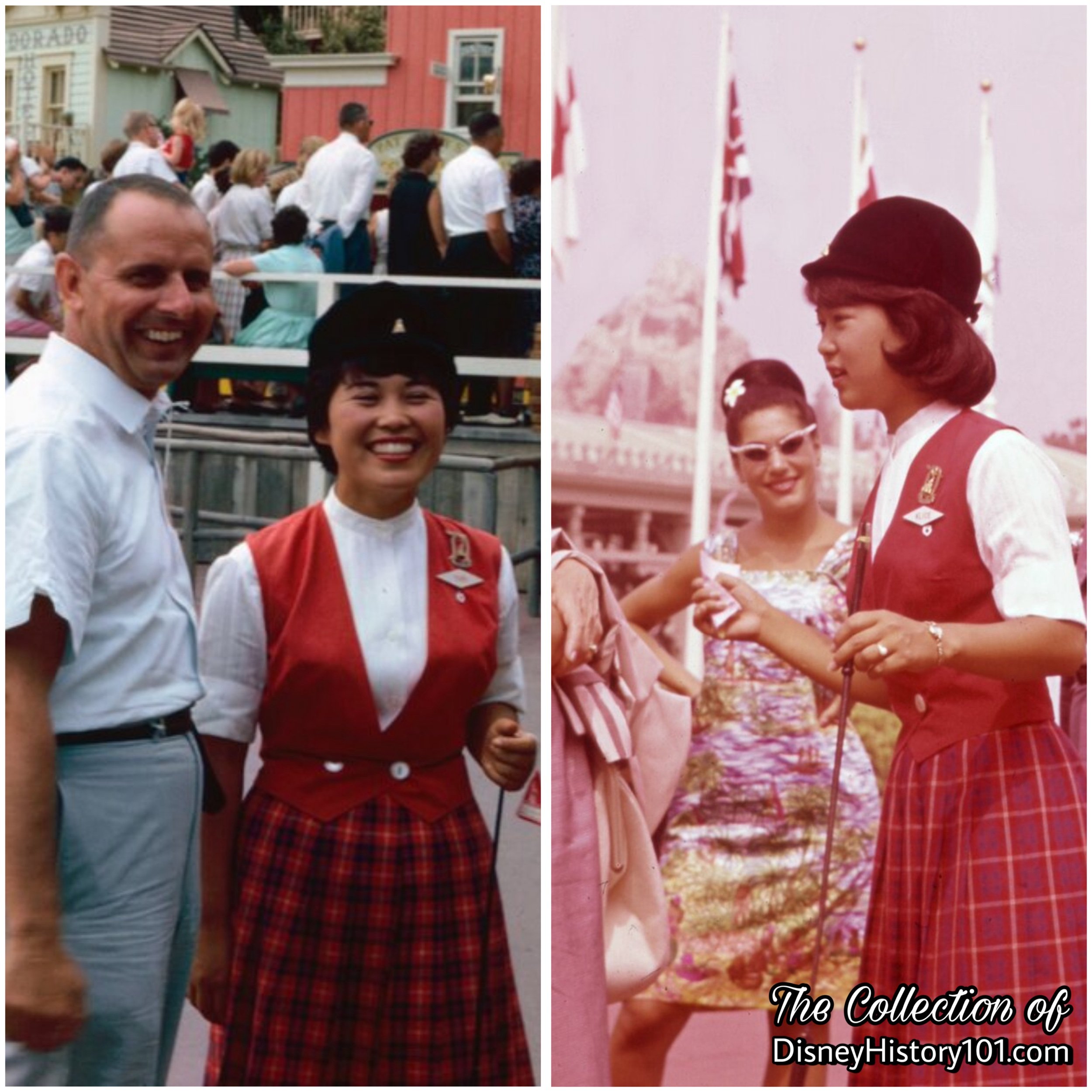
Disneyland Tour Guide Yuki Saito (left) and Alice Shinmoto (right)
By the time that Japan was represented within it's a small world at the New York World’s Fair, the humble number of Japanese-American Disneyland Guided Tour Hostesses had grown into an impressive roster of Issei, Nisei, and Sansei that included Masako Naganuma, Sachiko Koike, Tomoko Omori, Yuki Saito, Alice Shinmoto, Chise Sakamoto, and Yoko Ubukata (to name just a few). Along with English, some of these would communicate with guests in Spanish, French, Italian, German, Dutch, Chinese, Swedish, Danish, Norwegian, Finnish, Portuguese, Greek, and of course, Japanese.

“A World of Smiles” - (from left to right) Disneyland Guided Tour Hostesses Yuki Saito, Sachiko Koike, Masako Naganuma, Yoko Ubukata, Alice Shinmoto, Tomoko Omori.
“Japanese Hosts & Hostesses Supporting the Show Onstage and Backstage”
From the 1960s and beyond, many other Japanese-American hosts and hostesses supported the Disneyland show in other capacities.
Across Disneyland On Stage, there was Yuki Sechi (of Main Street), Aiko Martello (of the Pavilion), Karen Uyeno (of Fantasyland), Shirley Kobayashi (of Storybook Land), Bob Nezu and Hiro Yasuda (of Tahitian Terrace), Diana Lai, Marilyn Wada, and Terri Kakuda (of Walt Disney’s Enchanted Tiki Room), Kazugo Yamashita (of Tomorrowland Foods), Ken Fujimura, Sandra Yamashiro, Kathy Nitta, and many other important Japanese Americans. Behind-the-scenes (in 1965), Japanese-American Hawaiian native Hideo “Indian” Aramaki joined Disneyland and would swiftly revolutionize the cuisine and menus of Disneyland Park restaurants for two decades.
“Disneyland Diplomacy - The Ambassador of Disneyland Visits Japan”
While hosts and hostesses contributed to the show and welcomed Guests to Disneyland Park, the first Disneyland Ambassador represented Disneyland during the Tencennial Celebration on goodwill tours to Europe, Canada, Australia, New Zealand, and Japan. While in Japan, “Julie visited the Mayor (called Governor) of Tokyo. She also visited the Ministers of Welfare and Education… She told the story of the Magic Kingdom and invited all those present to visit Disneyland as the guest of Walt Disney. After several days in Tokyo, Julie went to Osaka and Nagoya to round out her Far East trip.” There is no doubt that this diplomatic trip furthered the relationship between Walt Disney Productions and the Japanese audience.

“It’s a Small World of Japan”
Respectfully, Japanese culture influenced some of the presentation of It’s a Small World at Disneyland. In preparation of the show, Marc Davis began work during the spring of 1963, creating concepts for the Asia section which would include Bali, Thailand and Japan. Soon, the “Small World” title tune was recorded, with several tracks laid by several groups around the world, including one featuring “plain kids” in Tokyo.
The International Gateway Facade was a single harmonic structure with no one design dominating, but a spectacular synthesis of the world’s architecture into a statement of the youthful spirit and oneness of It's a Small World. Artists and designers included Japanese architectural elements among the International gateway facade of the show building.
Some local Japanese individuals and organizations were both knowingly and even unwittingly involved in the show’s presentation. Artists shopped the stores of Little Tokyo district in Los Angeles for “colorful paper balloons and plastic fish,” according to the It’s a Small World Disneyland Pictorial Souvenir. When show installation was completed, just before the attraction opened, the members of the Tokuyae Classical Dance Group of Los Angeles were among those invited to join in the historic opening-day festivities for Its a Small World at Disneyland on May 28, 1966.
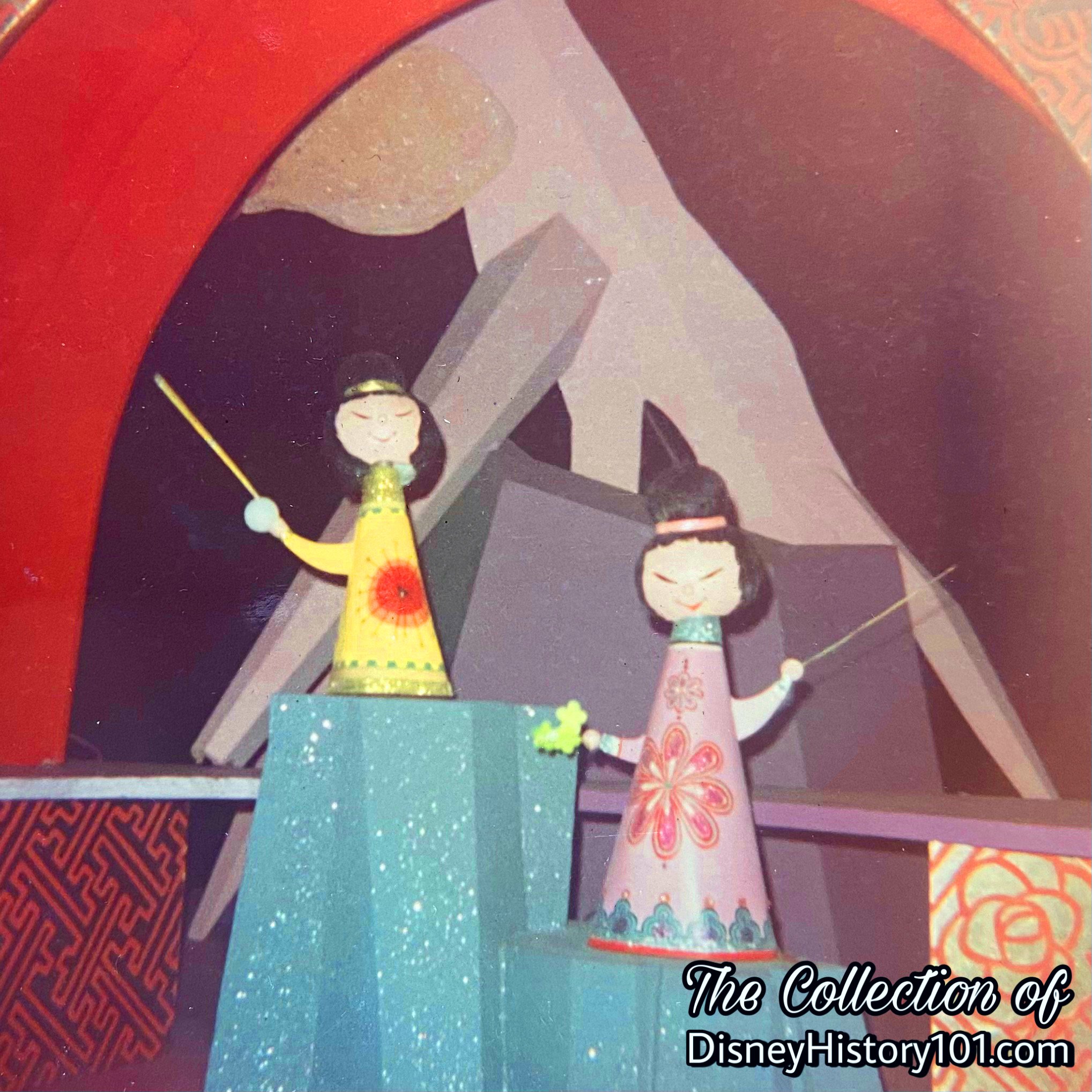
Then, Disneyland Guests were first entertained by the captivating sounds and sights of 350 figures and dolls representing the children of the world. In the attraction, Japan was represented by “kimono-clad playmates who bow ‘good-bye’ to passing boat from high atop a Tori gate.”
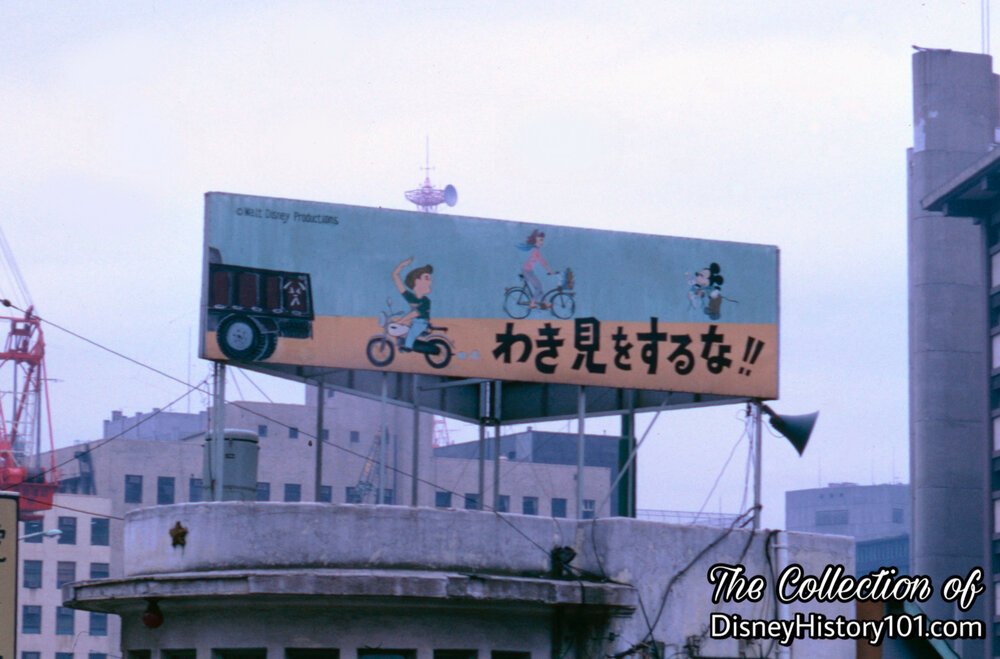
"Don't Be A Fool" - This eye-catching Walt Disney Productions billboard encouraged bicycle safety, reading ねき見をするな (don’t look around).
“Walt Disney Productions Licensed Products, Unsanctioned Copyright Infringement, and Japan”
Since the 1920s, many Japanese and Japanese American commercial businesses supported the production of Walt Disney Productions licensed merchandise. However, some entities across the globe were involved in unlicensed manufacture and sale of products featuring Walt Disney’s cast of characters. This practice resulted in an ever-growing tidal wave of unlicensed products (including tin-lithographic toys, sugoroku games, and other products) which did not have the approval or copyright notation of Walt Disney Productions. These continued to be created in Japan through the decades, before finally reaching a problematic crescendo during the 1960s. Then in 1961, Kunizo Matsuo’s Nara Dreamland opened in Nara Prefecture, devoid of Walt Disney Productions’ intellectual properties, but including many attractions inspired by Walt Disney’s Disneyland. There were distorted doppelgängers of Main Street Station, the Matterhorn, and even Sleeping Beauty Castle. This park most-certainly did not have the approval of Walt Disney Productions and would all lend a hand in what happened next.
“The Disney Licensing Association of Japan”
That very year of 1961, Walt Disney Company Merchandise Representative Matsuo Yokoyama was hired in to help establish Disney’s copyrights in Japan. He did so and helped to create the Disney Licensing Association limiting the amount of licensed Disney products manufactured in Japan during the 1960s and 1970s, and assuring the value of Disney products. This arrangement synergistically benefitted numerous Japan-based manufacturers who acquired rights to manufacture the Walt Disney Distributing Company product line, which included toys, decorative gifts, clocks, watches, polo and sweat shirts, jewelry, plastic novelties, and more. Some companies utilizing a Walt Disney Productions license for characters and indicia, included Louis Marx and Company, Masudaya Modern Toys, and others.
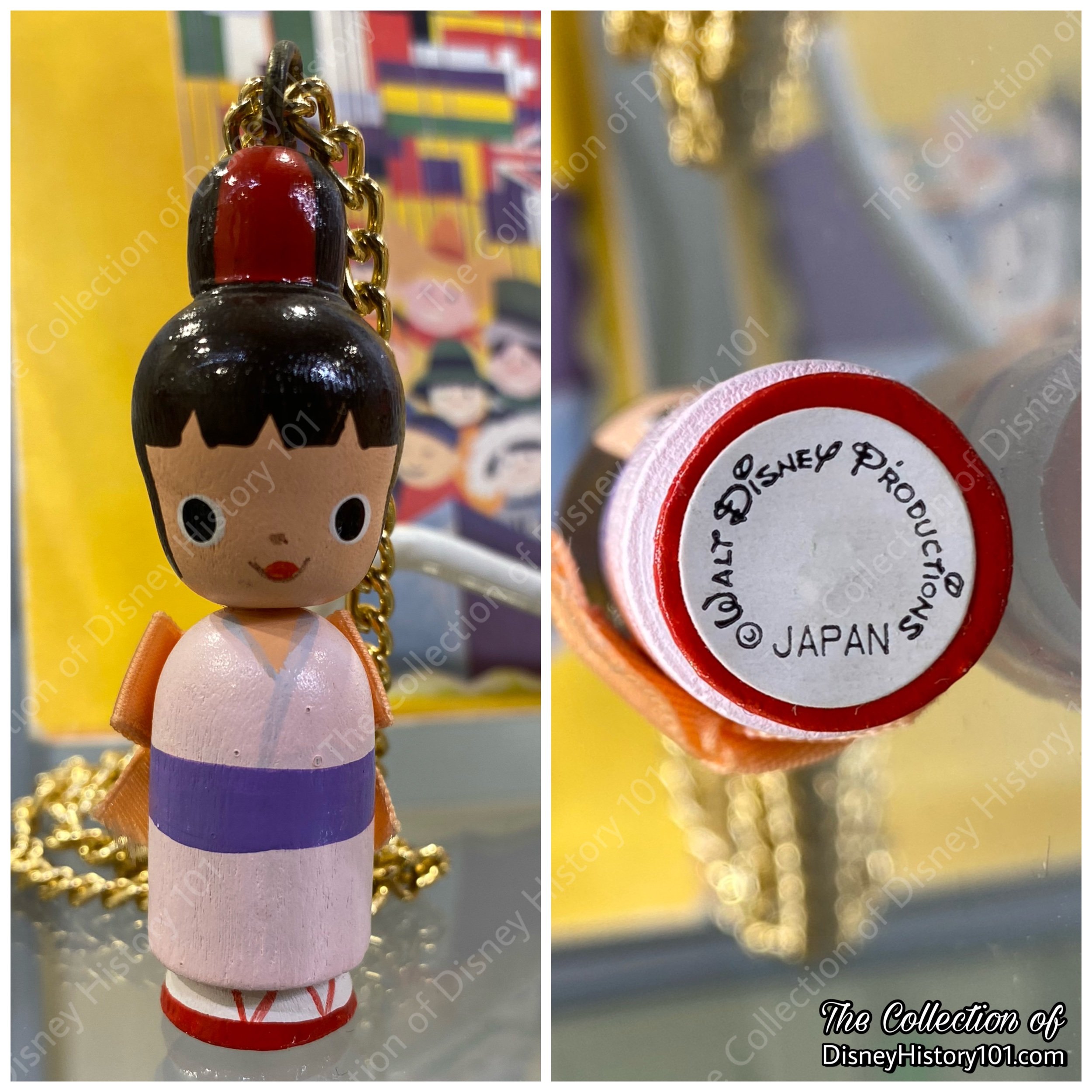
An “It’s A Small World” Japan doll Necklace appropriately made in Japan.
Official licensed products now carried the Walt Disney Productions copyright note and occasionally a stamp, sticker or label indicating manufacture in Japan. The Small World stand opened with much merchandise from Germany, Kenya, and Japan and other countries.

The official copyright notes and product labels of official sanctioned Walt Disney Productions licensed products made in Japan.
An unknown amount of Walt Disney Productions licensed merchandise was manufactured in Japan and distributed by American Corporations for sale exclusively through Disneyland. Many of these quality products were proudly branded with an official copyright notation, the Walt Disney Productions name, and their place of origin - Japan.

The official copyright notes and product labels of official sanctioned Walt Disney Productions licensed products made in Japan.
Do you remember those small American flag pins that were distributed to cast members for the Fourth of July celebration of 1969 and the American Bicentennial celebration? Each one arrived at Disneyland with stickers on the back reading “Made in Japan“.
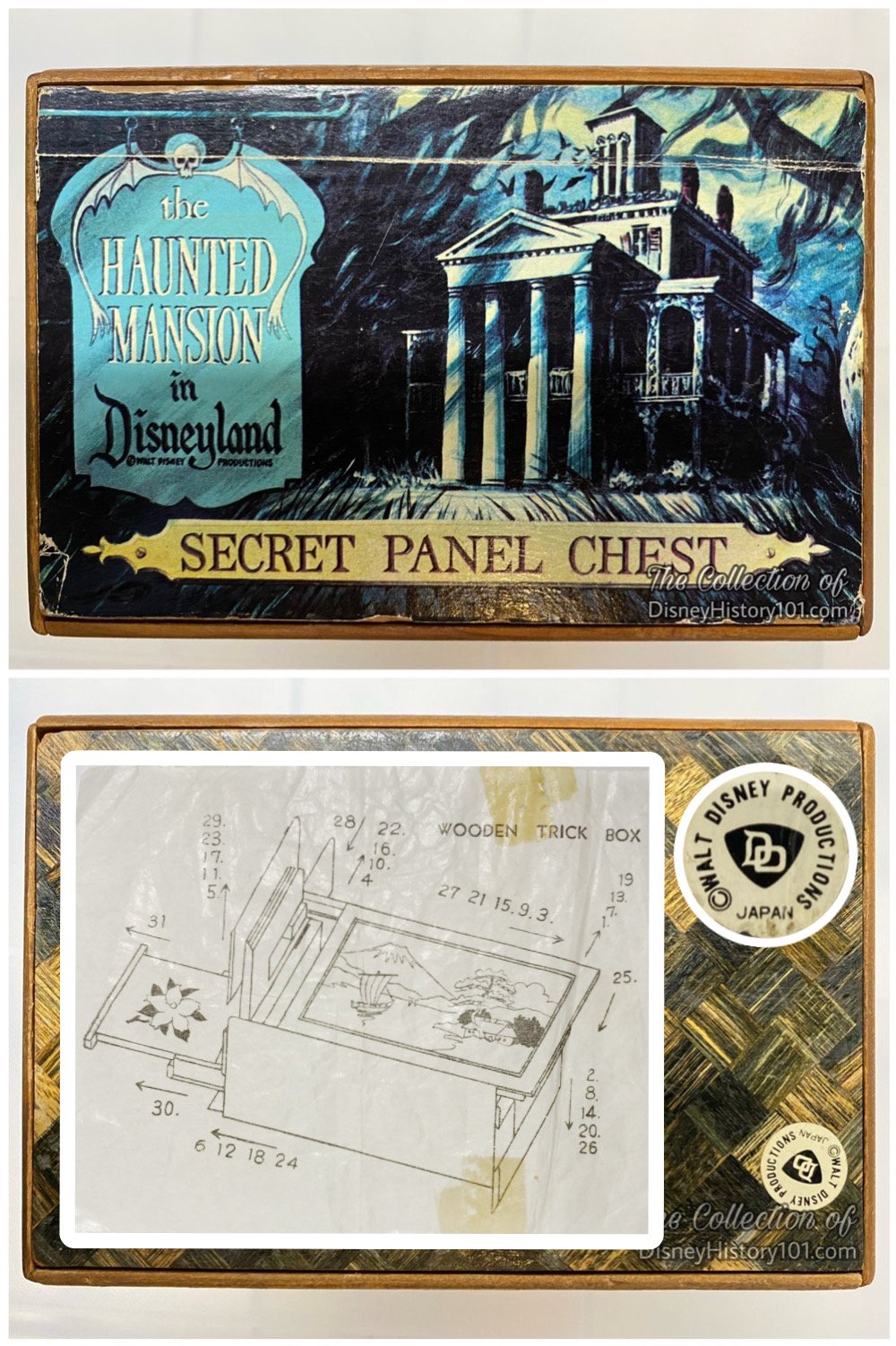
Did you ever notice Mt. Fuji and Hakone Lake scene on the instructions for the most recognizable Himitsu-Bako, that is the Haunted Mansion Secret Panel Chest?
“The Haunted Mansion Secret Panel Chest”
Much character and general merchandise was purchased in Japan by overseas buyers of Walt Disney Distributing Company (later headquartered at Walt Disney World). Of these, the most artistically unique were the Haunted Mansion Secret Panel Chests (pictured above). According to “E” Ticket Magazine: “Each size had a different number of ‘ways’ or moves necessary to open the box, including the 8 way small, the 12 way medium, and the 31 way large.”
Through these novelty souvenirs, Americans were introduced to the Himitsu-Bako “personal secret boxes”, which originated with nearly 100 skillful craftspeople who mostly inhabited the Hakone region of Japan. These “wooden trick boxes” were constructed without nails in a carpentry joinery technique known as sashimono tsugite. In sashimonoshi, the carpenter fits pieces of wood together by creating a protrusion on one piece of wood that corresponds with a hole in another.
The boxes combined many types of wood, each one carefully selected to highlight the unique qualities of each through sashimono techniques. The wood was finished in fuki-urushi (wiped lacquer), to enhance the beauty of the grain and reveal its true colors, tints and tones. When completed, each of these impressive works of art were opened in as little as 7 steps to unveil both the secret space and hidden drawer.
According to one writer of “E” Ticket Magazine: “It is rumored that they were hand crafted at a family owned factory in the small town of Hikone, Japan. The business failed about 1975 because high labor costs associated with production made it impossible to operate at a profit.”
The Haunted Mansion Secret Panel Chests were the result of partnerships between Hakone Japanese manufacturers and the Disney Licensing Association. These souvenirs were created for Walt Disney Distributing Company under contractual agreement, then they shipped to warehouses (in both Orlando, Florida, and Anaheim, California), for distribution to stores of both Disneyland and Walt Disney World.
Speaking of boxes, another popular craft imported from Japan was the art of “orgel” (music boxes). Though Japan didn’t invent mechanical cylinder musical movement, the people of Japan perfected it. Sankyo Shoji, Ltd. was Japan’s leading manufacturer of orgel and soon partnered with the Walt Disney Company, to create musical movements featuring popular tunes from Walt Disney Productions.

Several hundred Japanese line up to see a Disney perennial, Fantasia, at the Miyuki-za theatre in Tokyo; The Disney World July 1967.
“Japanese Audiences Respond to 1960s Walt Disney Productions”
Eventually by the mid-1960s, reports from around the globe indicated that Walt Disney screen productions were living up to their predicted success. For instance in 1965, Mary Poppins was released in Japan and it was reported in the “Walt Disney Productions Annual Report” of 1965, prepared for shareholders and employees: “Following the lead of Emperor Hirohito himself, the people of Japan are flocking to see Mary Poppins in its first play dates at Tokyo and Osaka. Along with other members of the Imperial family, the Emperor and Empress attended the Charity Premier of Poppins, where audience reaction was great. The Emperor and empress were highly pleased.”
Following this, many subsequent Walt Disney productions film releases of the 1960s packaged together shorts starring Mickey Mouse, Donald Duck, Goofy, and Ludwig Von Drake. In 1967, SuperScope format was introduced with “Fantasia”, which enjoyed new acclaim and popularity in Japan (depicted above). A trend of formatting films into SuperScope continued for a decade and by 1972, Walt Disney Production's film distribution program still benefited from an increasing public demand for the Buena Vista International, Inc. SuperScope reissue of such classic Disney films, as “Pinocchio” in Japan.
On the live-action feature film front, Walt Disney’s Swiss Family Robinson featured a familair face in the acting role of a villainous pirate captain Kuala- that of 1957 Academy Award-winning, Chiba Prefecture native, Japanese and American Issei Leading Man, Sessue (Kintaro) Hayakawa. Many other Japanese artists visited the Walt Disney Studios for either business or inspiration, like 1950 Miss Nipon Grand Prix Winner Fujiko Yamamoto who visited during the production of 101 Dalmatians.
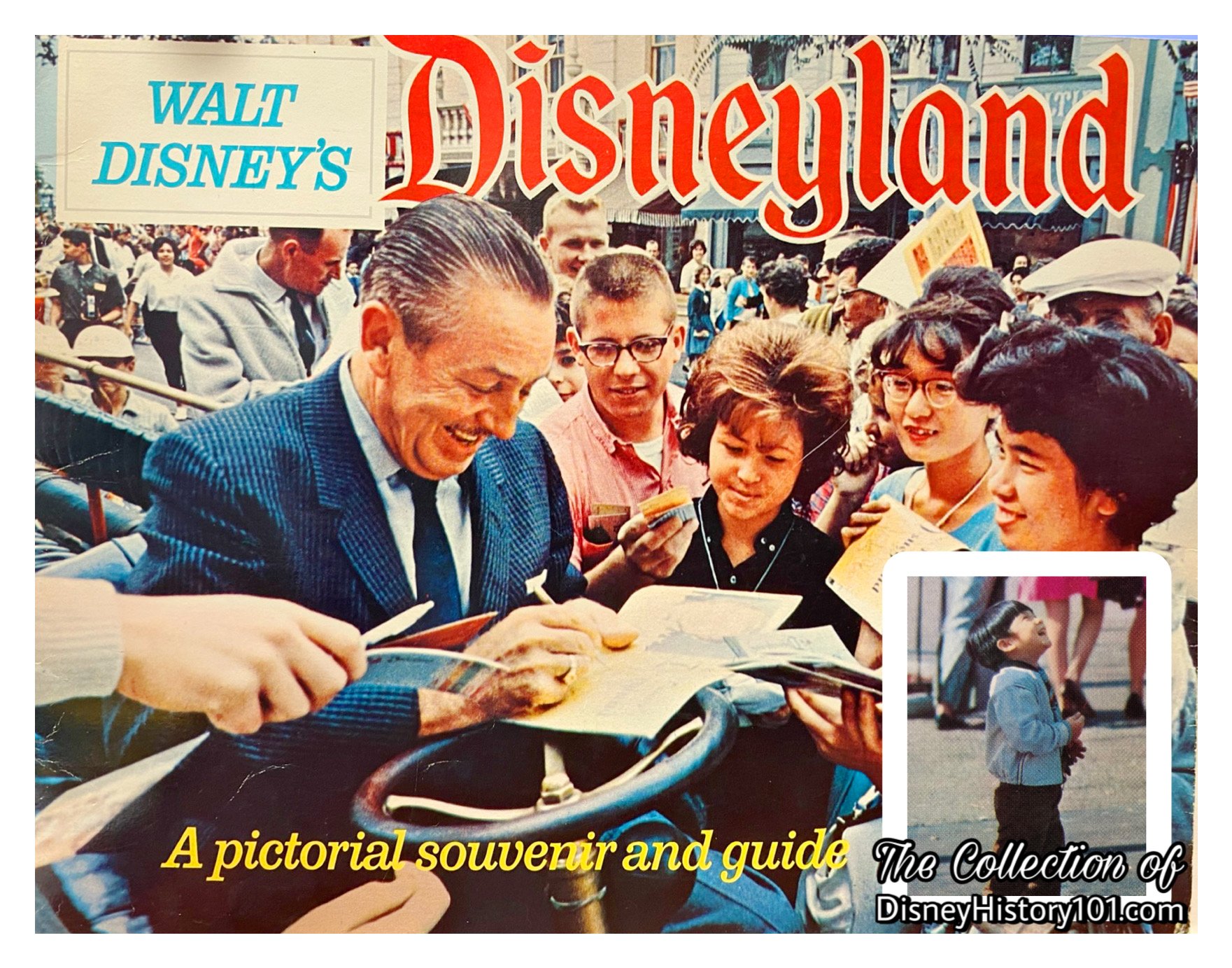
Much Asian representation on the cover and in the pages of the 1968 edition of Walt Disney’s Disneyland - A Pictorial Souvenir and Guide
The wonderful world of Walt Disney was growing even more popular with Japanese audiences. One contributing factor may have been that after the worldwide oil crisis, the Japanese economy had shown a smooth recovery compared to other countries, improving the standard of living, increasing the leisure time of the people in society, developing education and increasing the number of new generations. The people of Japan also seemed to increase their desire for a wealth of new entertainment and recreation. By that time, attendance records proved that the number of Japanese visitors to Disneyland had reached hundreds of thousands, demonstrating its popularity! Among these Disneyland VIPs of note were Princess Atsuko (1971), and former Prime Minister Eisaku Sato (February, 1973).
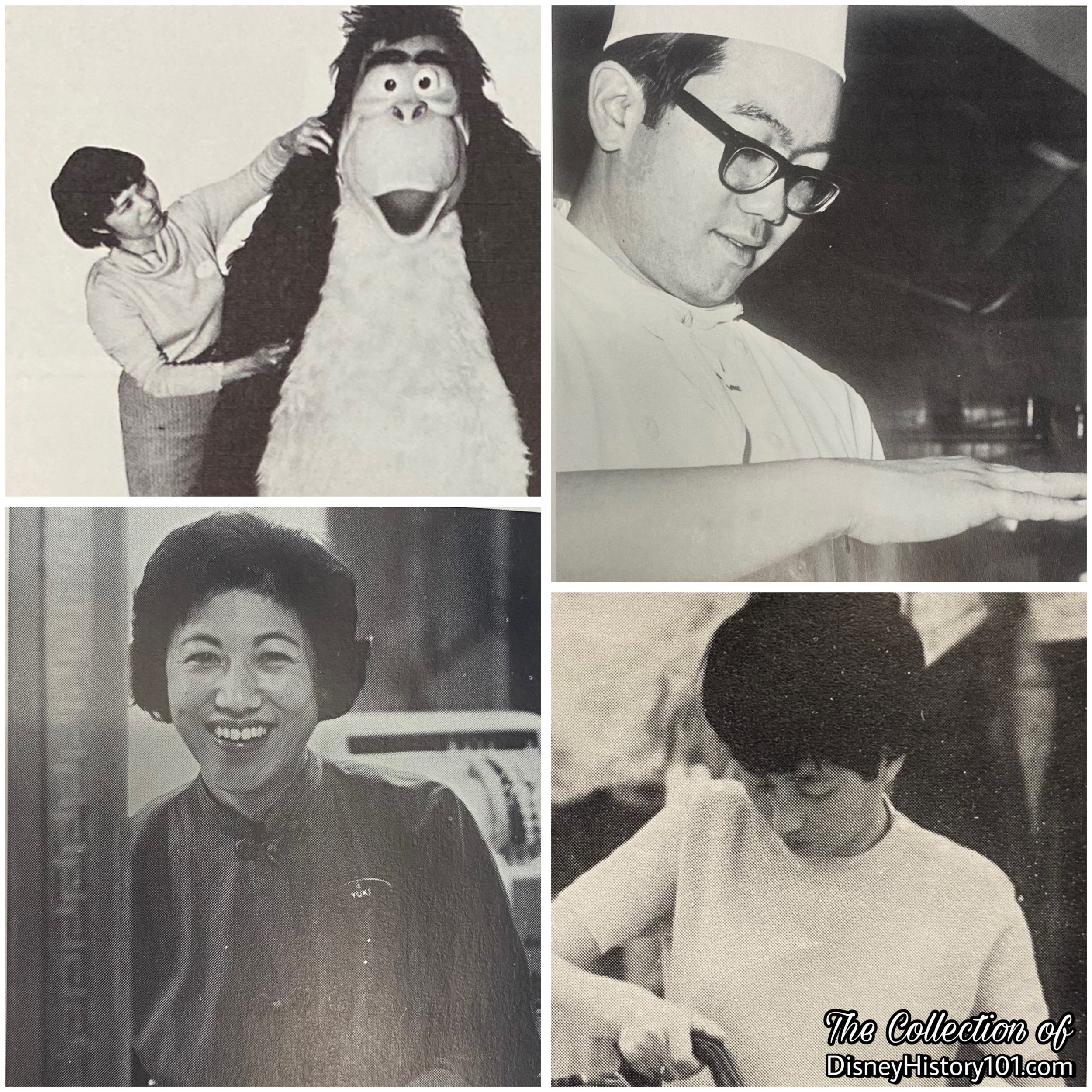
Clockwise from Upper Left: Shinko Mahaffey, David Aramaki, Mina Teramura, and Yuki Sechi were recognized in the pages of Disneyland Backstage.
By the 1970s and 1980s, there was a rising number of Japanese Americans among the multi-cultural staff that contributed to this and other aspects of the Disneyland show. Unseen were the Backstage Seamstress-Fitters and Costuming staff members like Yoriko Hiramoto and Jackie Sakamoto. Backstage, there were people like Atsuko Kutama (Costuming seamstress), Kimi Kawamura, Mina Temamura (Wardrobe-Costuming), Georgia Osumi (Operations) and Karen Matsuoka contributed to the operation of the Disneyland Park show.

Japanese Emperor Hirohito and Empress Nagako visit America on Parade.
Then came a historic event during the American Bicentennial celebration of 1976, when their majesties Emperor Hirohito and Empress Nagako of Japan visited Disneyland the first visit to the USA. Disneyland Master Chef Hideo “Indian” Aramaki recalled the honor of cooking for the Emperor and Empress on this occasion. Their visit was historic for several reasons. First, the Lilly Belle Presidential Parlor Car was unveiled and its first passengers were Japanese Emperor Hirohito and his wife. Also, the visit of the Emperor and Empress “set the stage” for an exciting new relationship between Walt Disney Productions and the Japanese audience, opening doors to new magical opportunities!

“FESTIVAL JAPAN at DISNEYLAND”
One such opportunity was an all-new program called “Festival Japan” (日本祭り), billed as “5,000 years of Japan… 5,000 miles closer.” The First Annual Festival Japan at Disneyland was held March 27th, 1977. This first momentous celebration brought nearly 300 “traditionally attired dancers, cultural exhibits, crafts people, and entertainers from Japan” to Disneyland. Among this new cultural showcase were many Japanese and Japanese-American participants, including the aforementioned Tokuyae Classical Dance Group of Los Angeles who was still a Disneyland Participant after three decades. The program was an instant success with audiences and became a Disneyland tradition, from the late 1970s to the early 1980s.
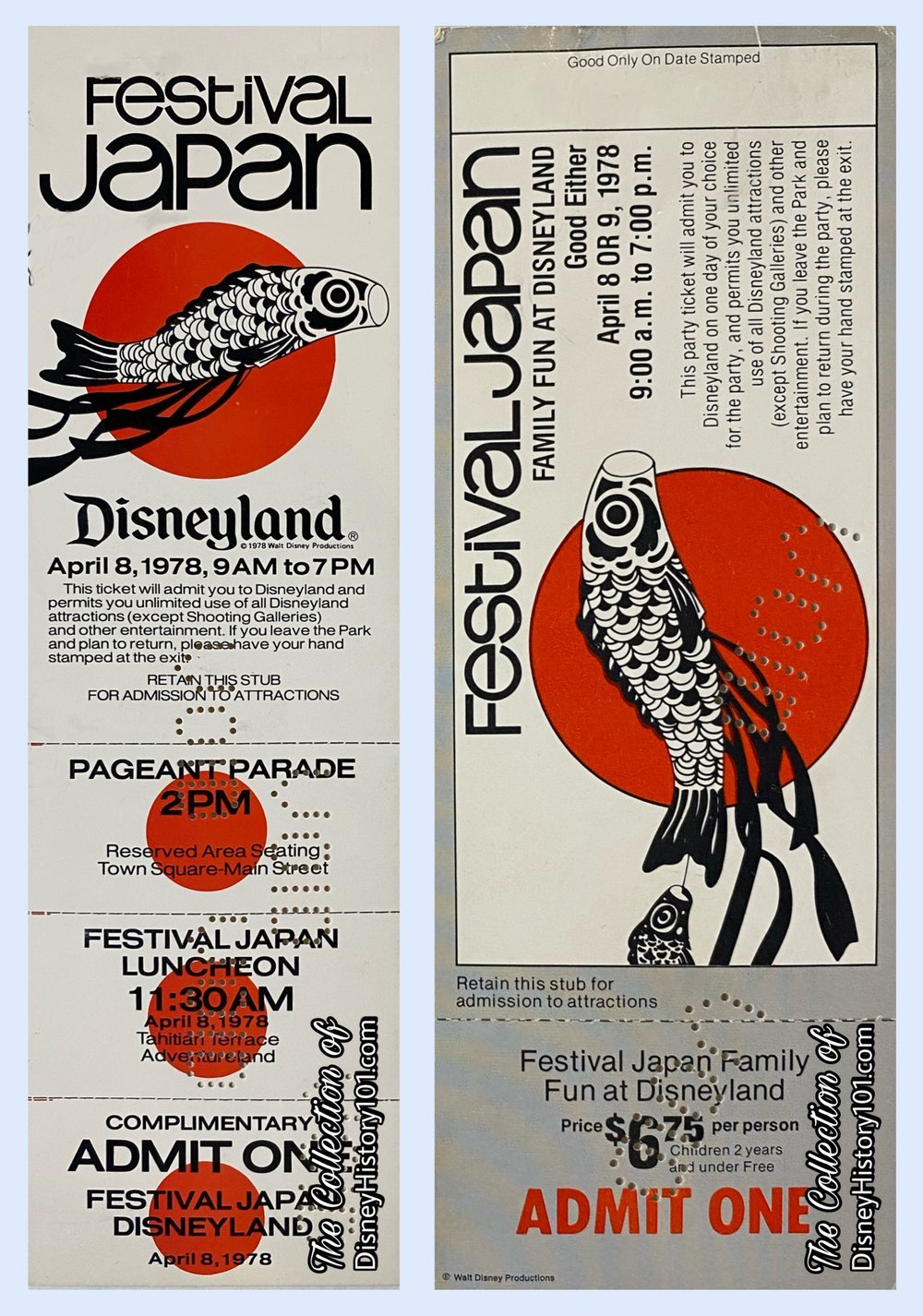
1978 Disneyland Festival Japan Admission Media Tickets from the second edition of the traditional special event.
The first special event was such a success that a second Festival Japan Family Fun at Disneyland event was held on April 8 & 9, 1978.
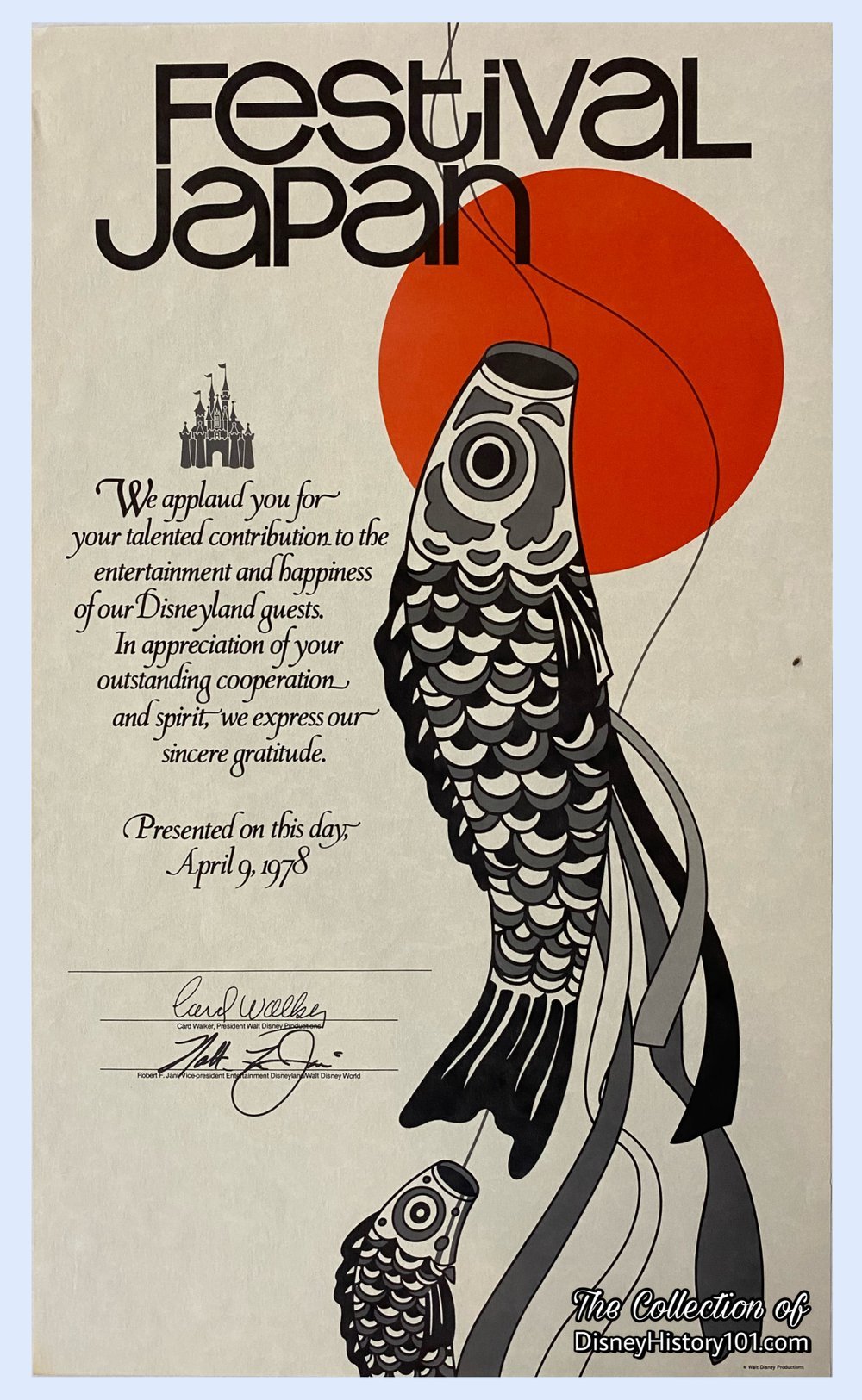
A 1978 Disneyland Festival Japan Award Certificate, from the second edition of the traditional special event.
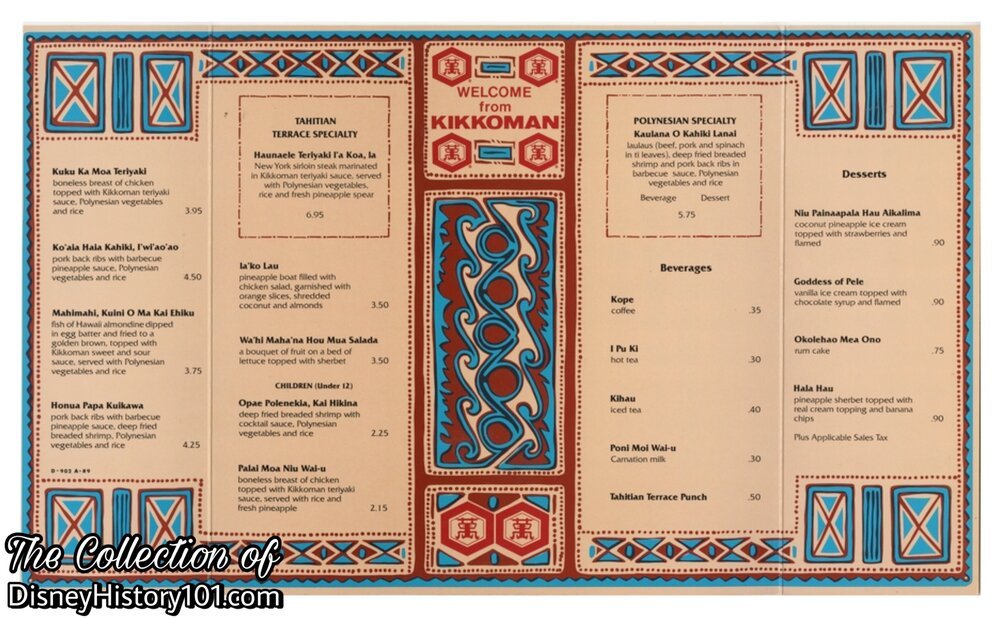
A Kikkoman sponsored Tahitian Terrace menu.
“WALT DISNEY PRODUCTIONS’ FIRST FOREIGN PARTICIPANT SPONSOR - KIKKOMAN OF JAPAN”
Doors were opened to another magical opportunity during the year 1978, the very same year as the 2nd edition of Disneyland Festival Japan at Disneyland! The first official Disneyland sponsor with headquarters in a foreign country (Japan) was selected to partner with Walt Disney Productions.
Disneyland Participant Corporate Sponsors were carefully selected. High quality, long term corporate sponsors would provide incremental income that enabled Disneyland to enhance its show and attractions, offset some operating expenses, and capitalize on marketing opportunities. Disneyland had also always been sponsored by predominantly vintage turn-of-the-century (or older) companies. Tahitian Terrace’s newest sponsor of the 1980s was no exception.
In later years, the Tahitian Terrace was presented with a proposal for a new Disneyland Participant - the 300 year old Kikkoman Int. Inc.of Japan! “Few people realize that Shoyu (soy sauce) is undoubtedly the world’s oldest prepared condiment”, according to Vacationland magazine (Summer, 1980). The process of naturally fermented blend of soy beans and recipe of salt, wheat, and traditional brewing methods actually has its start in Noda, Japan, during the 17th century, long before Disneyland existed! Kikkoman Shoyu Company was only incorporated in 1917.

The sign of the Kikkoman-sponsored Tahitian Terrace restaurant at Disneyland.
More than sixty years later, on Wednesday, June 14, 1978, Kikkoman Shoyu Company President S. Mogi visited Disneyland to welcome visitors. This was a huge event as Kikkoman became the first official Disneyland sponsor with headquarters in a foreign country!
A short time later, in September 1978, Sunao Sonoda, minister of foreign affairs for Japan visited Disneyland.
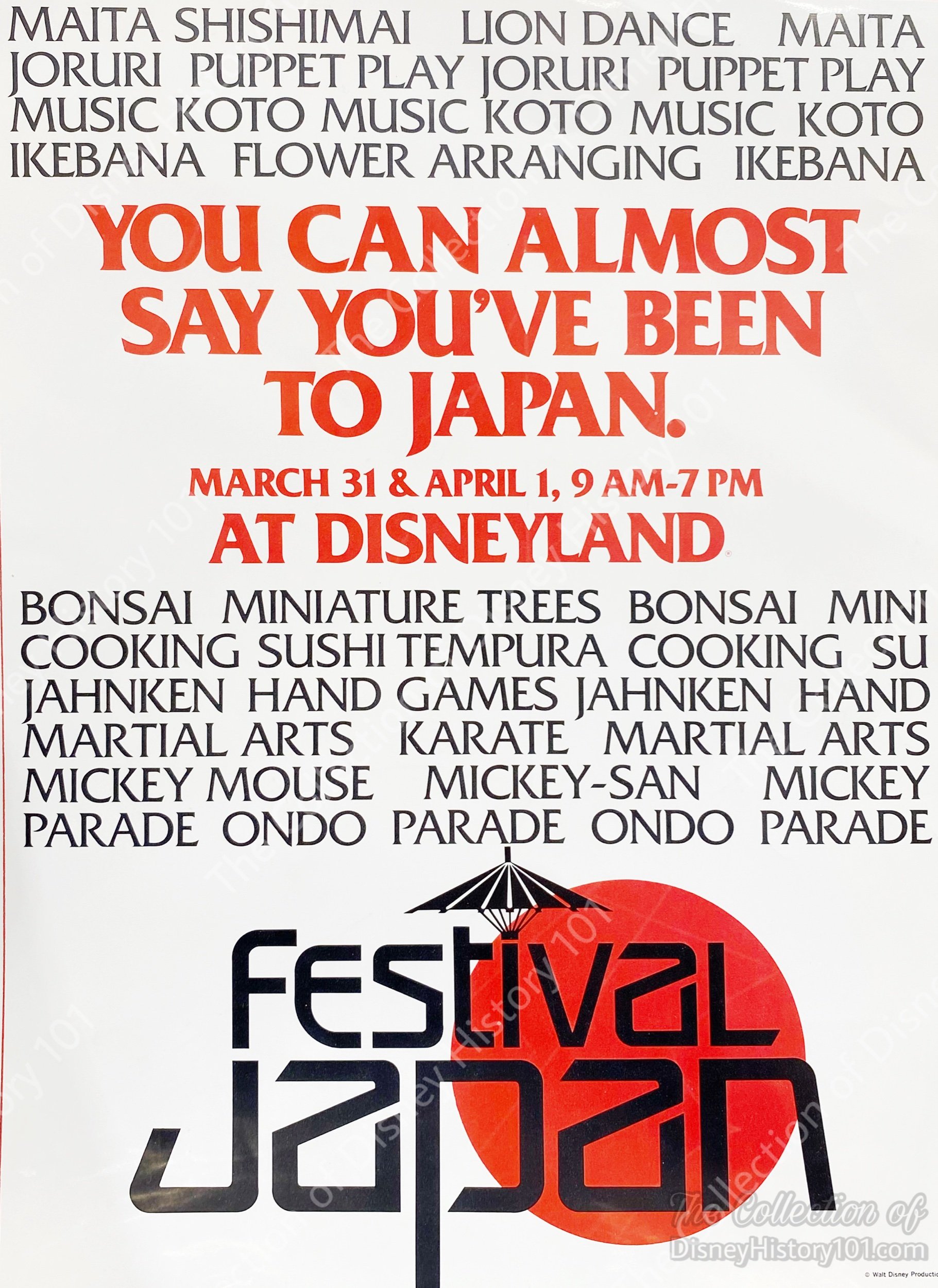
An advertisement for the 1979 Disneyland Festival Japan (the 3rd edition of the traditional special event).
Koinobori and nobori banners lined the way to Sleeping Beauty Castle for the 1979 Disneyland Festival Japan, held March 31st and April 1st, 1979. A variety of local and visiting performing artists helped to bring Japan to Disneyland, and were presented at various Park locations throughout the two-day festival. All guests were given a hand-out at the Main Gate that described the variety of special events and the different show times and locations. The show schedules were also be posted at the various stages and locations.
The Space Stage featured the Classical Puppet Theatre, Awaji Ningyo Joruri Seinenkai, as well as a children's choir, a classical dance troupe and a group of exciting lion dancers. Carnation's Plaza Gardens was the scene of performances by the classical dance group from the Azuma School of Dance, as well as a comic dance group and three martial arts troupes. On Saturday, the music of the Japanese-American Philharmonic Orchestra of Los Angeles, Junior Division, was offered at Plaza Gardens. On the Tomorrowland Terrace, two Japanese rock bands appeared both days, Super Pumpkin and the Flying Mimi Band. A girls self-defense sword group, Zen-nihon Naginata Renmei made an appearance on Saturday only in front of “It's a Small World.” Exhibits touching on many phases of the Japanese culture displayed the skills and talents of the country's craftsmen.
On Main Street guests were able to examine most of the Festival's performing groups depicting a visual description of Japan's history. Highlighting the procession was the first American appearance of Soma Nomaoi, 35 Samurai warrior's who were descendants of Japan's feudal lordship. The parade began at “It's a Small World” and continued down Main Street.
Special Japanese entrees were served at the Plaza Inn, and traditional Makunouchi Bento box lunches were available at Plaza Inn, Plaza Pavilion, Tomorrowland Terrace and the Space Place.
After all, guests could almost say that they’d been to Japan!
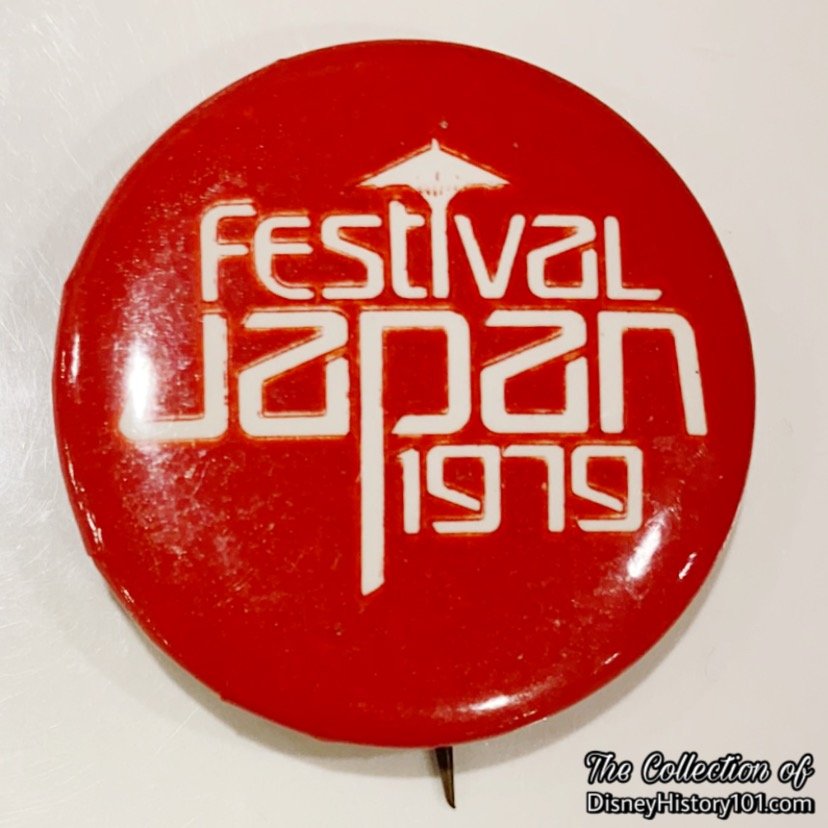
A souvenir button from the 1979 Disneyland Festival Japan (the 3rd edition of the traditional special event).
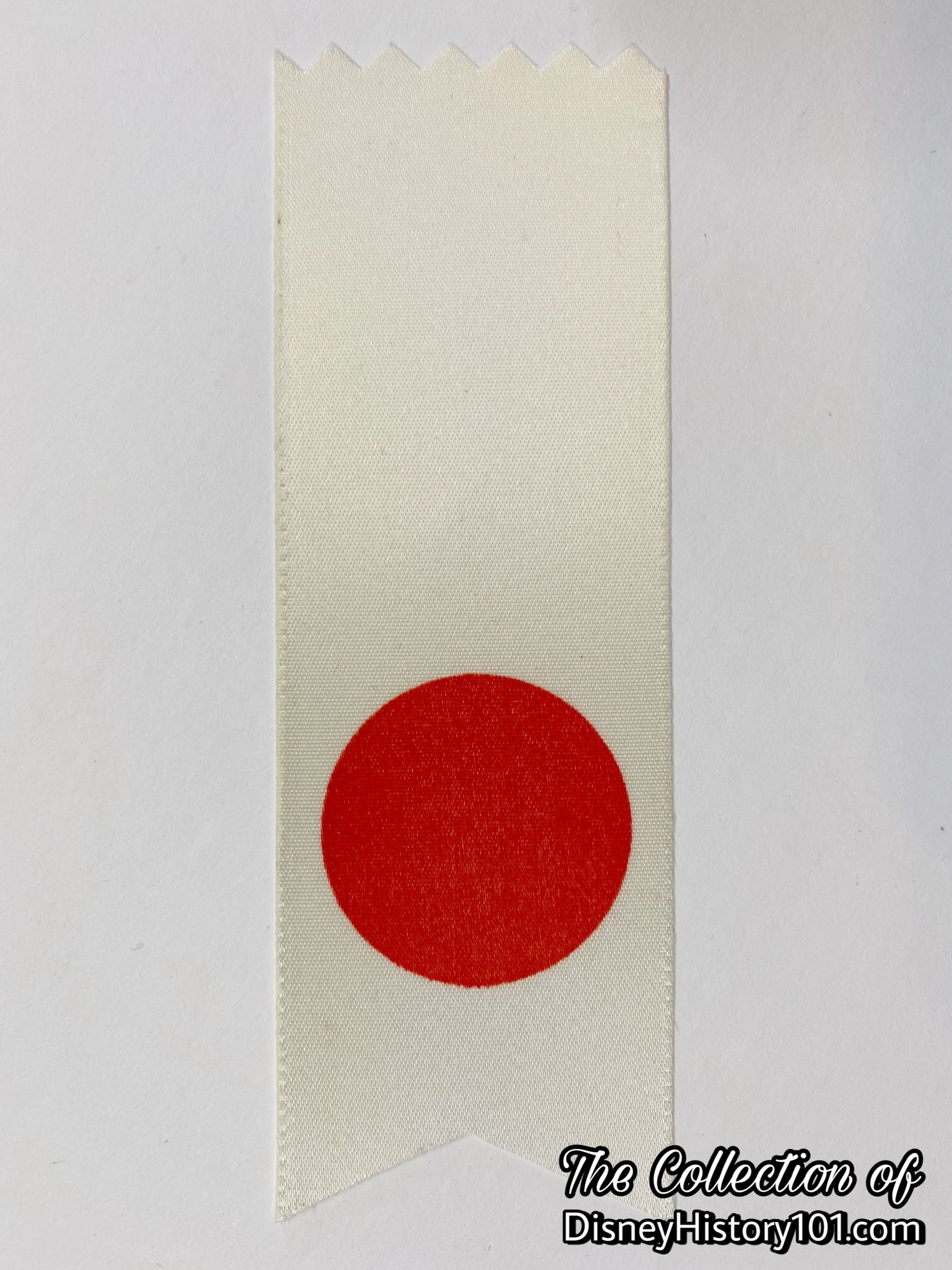
The prominent rising sun on the ribbon accessory of the souvenir button from 1979 Disneyland Festival Japan (the 3rd edition of the traditional special event).
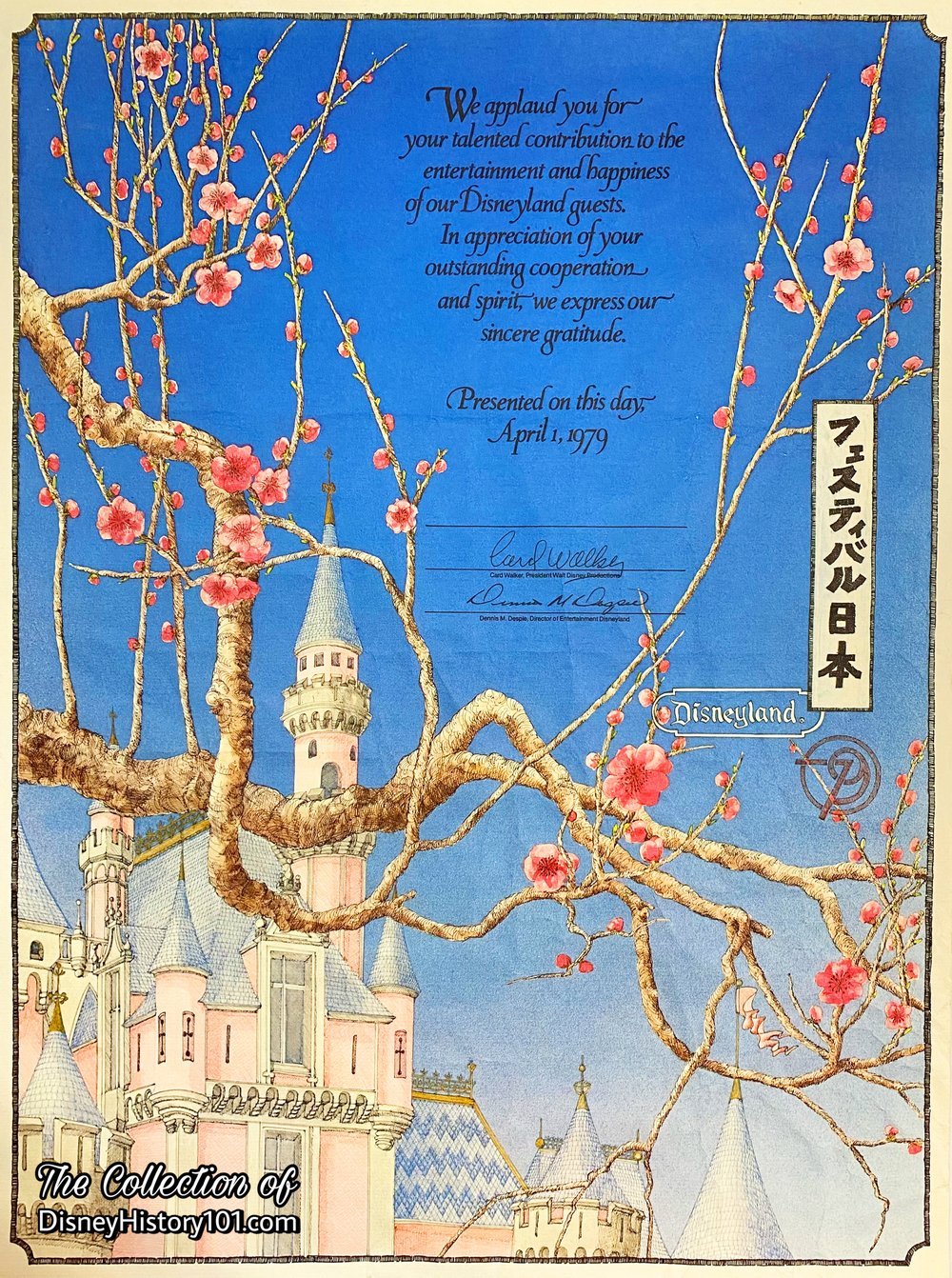
A 1979 Disneyland Festival Japan Award Certificate recognizing the people that contributed toward the 3rd edition of the traditional special event.
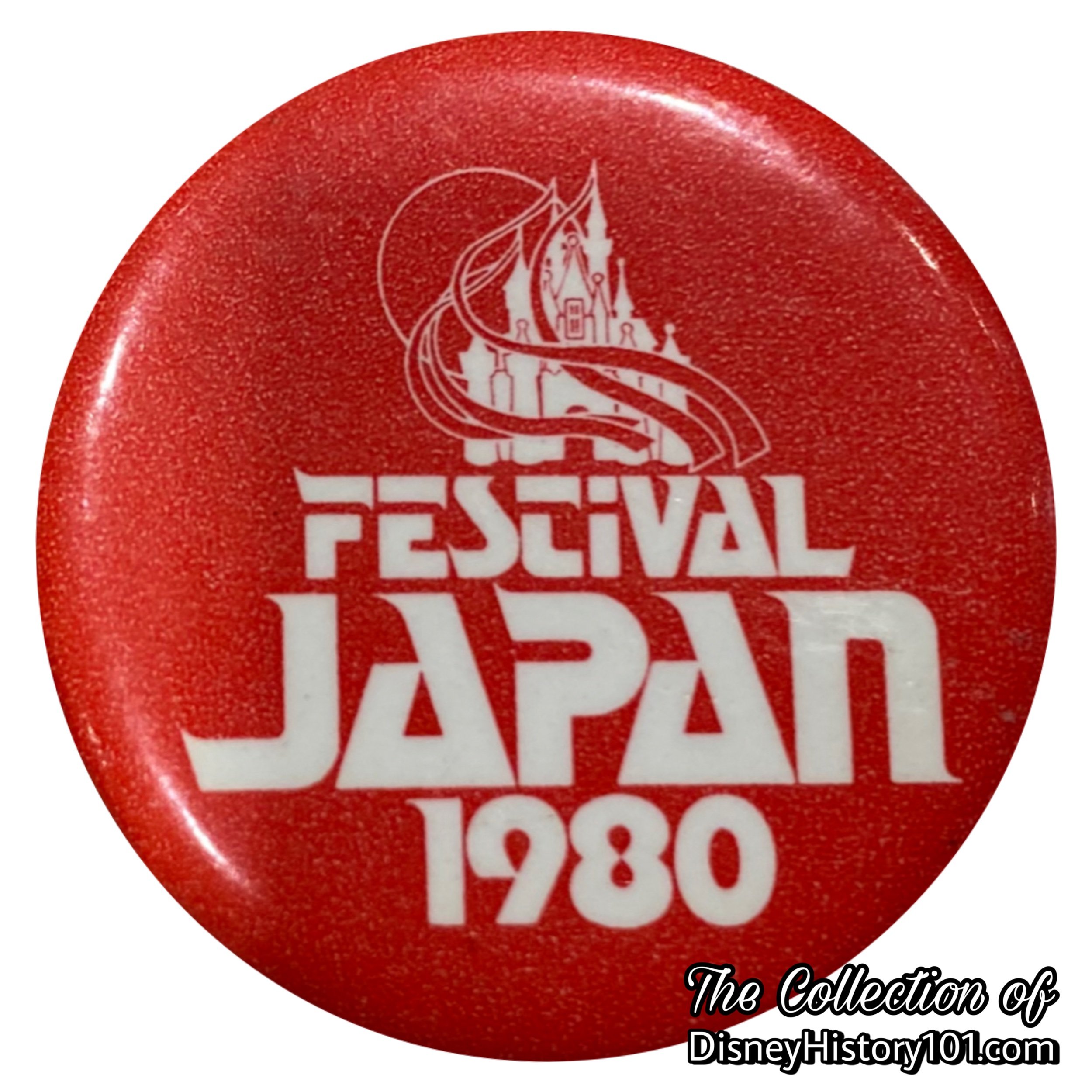
A souvenir button from the 1980 Disneyland Festival Japan (the 4th edition of the traditional special event).
During the following years, Disneyland Festival Japan was held earlier in the year. The 4th edition of Festival Japan at Disneyland was held from 9:00 a.m. to 7:00 p.m, on March 22 & 23, 1980. The annual festival touted the shining glory of Japan, which valued tradition and beauty like Disneyland. The beautiful koto examination and the drum hibiki invited guests to Japan. The streamers and bonsai brought back memories of hometowns. Guests were invited to touch various traditional Japanese crafts and the delicate hearts of the Japanese.
The 5th edition of Festival Japan at Disneyland was held on March 28 & 29, 1981.

A souvenir button from the 1982 Disneyland Festival Japan (the 6th edition of the traditional special event).
The 1982 Disneyland Festival Japan (the 6th edition of the traditional event) was as grand as ever!
Authentic Japanese Crafts were Showcased, like origami paper folding, wood carving and the crafting of bamboo. There were koi fish, samurai armor displays, the Hand-crafted Bonsai Association with their handmade bonsai dwarfed tree displays, was on exhibition at the Space Place, and Hirofumi Kai (Doll Display) was on exhibition at the Carefree Corner. Plaza Inn on Main Street U.S.A. was the stage for Biwa Doho Kai Solo Instrumentalist - Mr. Kinryo Fukute. East Plaza Street was the stage for Kado Sangetsu-Ryu (Flower Arrangements) on Saturday, March 27th and Shiba Ryoka Kai (Flower Arrangements) on Sunday, March 28th.
Carnation Plaza Gardens was the stage for Michiya Hanayagi, Fujima Kansuma Kai, Hanayagi Rokumine Kai, and Mito Taiko Kai on Saturday, March 27th, from Noon; and Sunday, and Kazue Kudo Koto Music Conservatory, Fujima Chiseye Matsumaye Kai, Rokumie Natori Kai, Hanayagi Jurokumi Kai, Hanayagi Rokumine Kai, Mito Taiko Kai, and Matsutoyo Kai on March 28th, from 11:00 AM.
Special Japanese menu items were featured at the Plaza Inn, Main Street, U.S.A. and at the French Market, New Orleans Square.
Another highlight is an amazing demonstration of the ancient and intricate Japanese art of ice carving. The highly refined culinary art was demonstrated both days, featuring craftsmen who have appeared in the world-renowned Hokkaido Winter Festival. With a 300-pound block of ice, teams of sculptors created meticulous pieces of art, from a pagoda to leaping fish to other scenes common to Japanese life.
The main event was the Festival Japan Parade, showcasing more than 600 participants. The Grand Marshal was the Honorable Yunosuke Wada, Mayor of Mito, Japan, Anaheim’s Sister City. The parade marched down Main Street, U.S.A. from Small World at 8:00 PM, Saturday, March 27th and at 3:00 PM, Sunday, March 28th.
Pre-parade entertainment featured Zennihon Koteki Band Renmei. Immediately following the 8:00 PM parade at approximately 9:00 PM, the day ended with a specially produced Japanese Fireworks Show above Sleeping Beauty’s Castle on Saturday, March 27th. This specially produced spectacular was accompanied by its own themed music and showcased Japanese fireworks never seen before in the United States.
During the 1982 edition of Festival Japan and throughout the year, Japanese VIPs continued to visit Disneyland Park. Of note is “Prince Hiro’s more conventional visit in October of 1982, which completed three generations of Japanese royalty who visited Disneyland Park. His parents, Prince Akihito and Princess Michiko, previously toured Disneyland Park in 1960 and his grandparents, Emperor Hirohito and Empress Nagako, visited Disneyland Park in 1975.”
1984 Disneyland Festival Japan (the 8th edition of the traditional special event) was celebrated on March 31 and April 1, 1984.
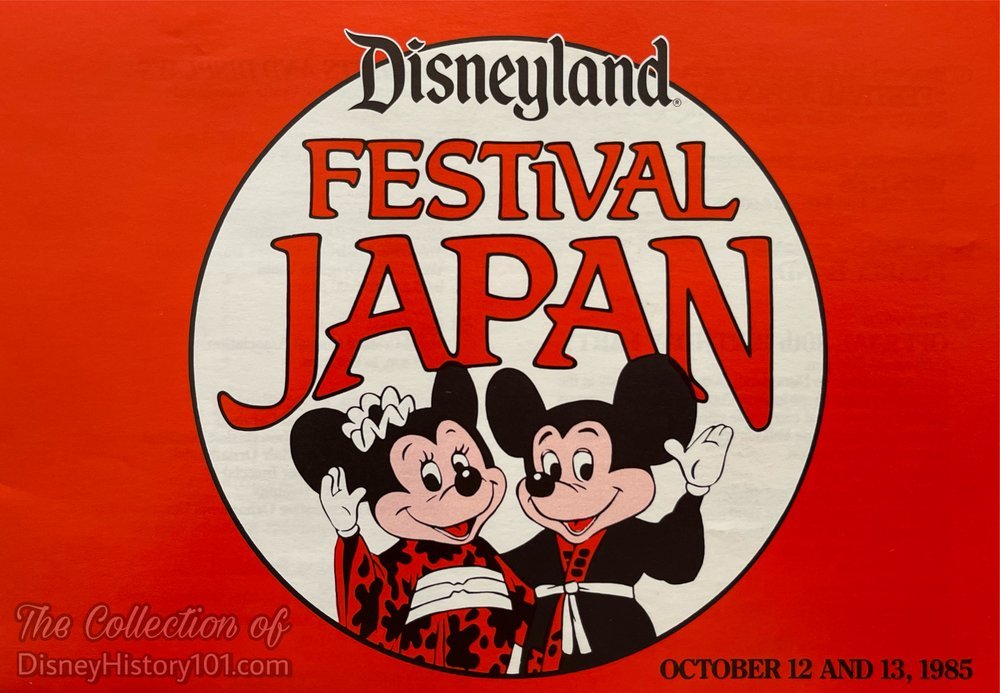
The “1985 Disneyland Festival Japan” (the 9th edition of the special event) coincided with the 30th anniversary of Disneyland on (held October 12 & 13, 1985, from 9am to 9pm). The event brought “500 traditionally attired dancers, cultural exhibits, crafts people, and entertainers from Japan performing on the Small World Stage.” Among those was the aforementioned Tokuyae Classical Dance Group of Los Angeles, a tradition after three decades of performing at Disneyland!
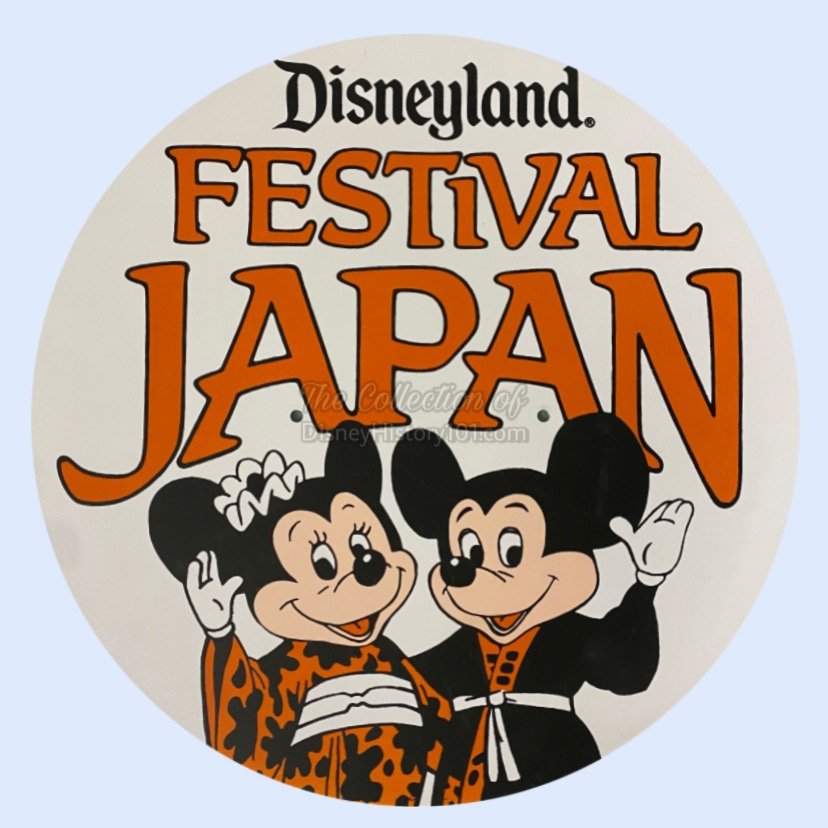
A Disneyland Festival Japan Lamppost Sign.
Disneyland Festival Japan ended a success, and was never to be repeated. Yet, the positive synergy between the Walt Disney Company and the presentation of Japanese culture through the traditional events opened the door to prolific legacy.
Other cultural festivals were hosted by Disneyland Park, including Festival Korea (in 1986).
One result was that many more Japanese VIPs (some high-ranking and respected members of government) continued to visit and experience the magic of Disneyland Park. For instance, Prince Naruhito of Japan visited in October 1985. During January of 1987, the Honorable Yataro Mitsubayashi, Minister of State, Science and Technology, visited Disneyland. The following year of 1988, His Excellency, Mr. Markoto Taniguchi, Japanese Ambassador to the United Nations visited during September of 1988.
The earliest editions of Disneyland Festival Japan resulted another major incidental byproduct. Back east (in Florida), a grand and ambitious Walt Disney Production was being developed, one that would assure a permanent place for Japanese cultural representation. EPCOT Center at Walt Disney World would debut with a Japan World Showcase!
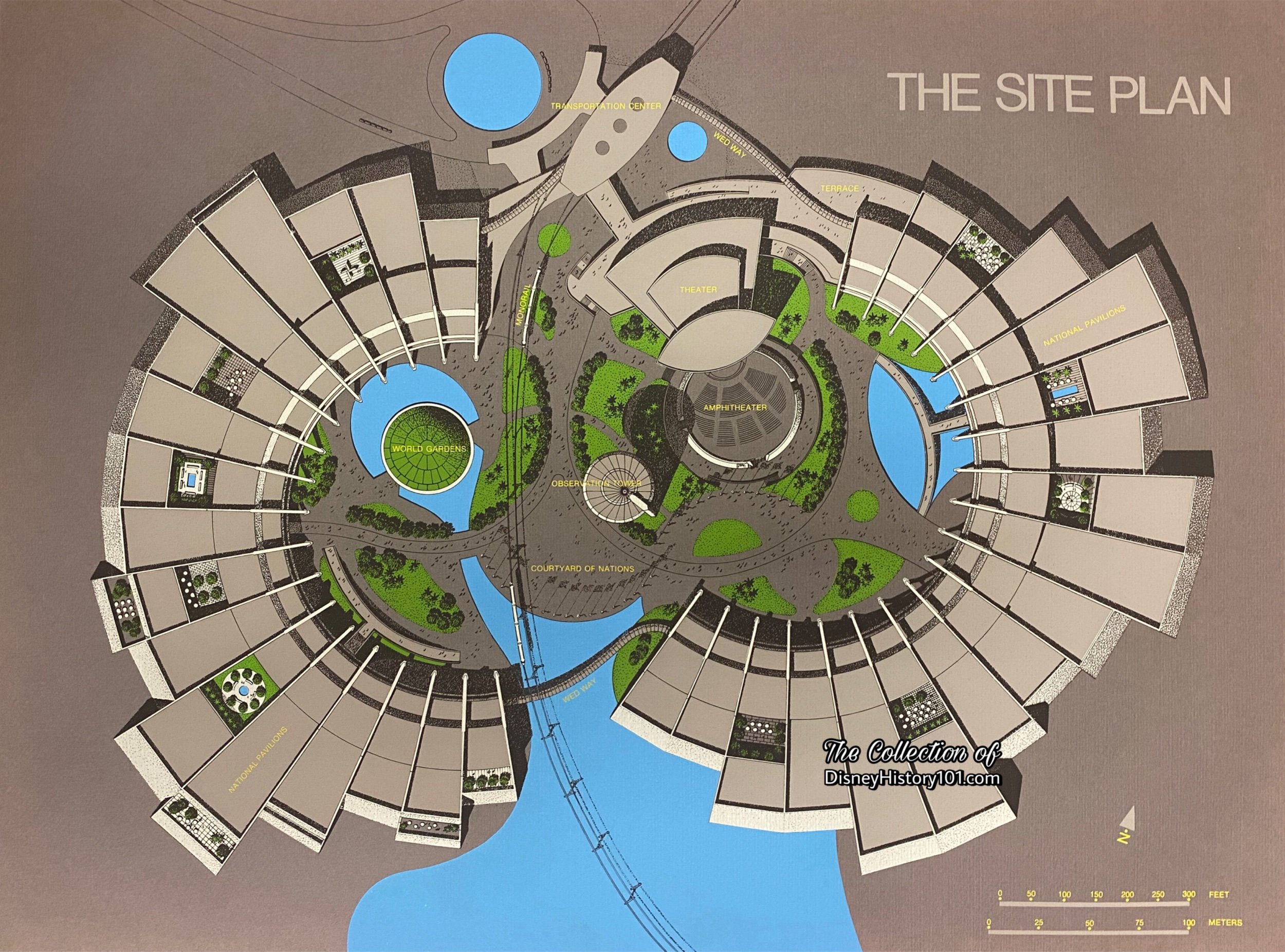
“Project Florida - A Whole New Disney World”
Back on December 15, 1966, Roy O. Disney, Walt Disney Productions President and Chairman of the Board addressed the employees of Walt Disney Productions: “Walt Disney's preparation for the future has a solid, creative foundation. All of the plans for the future that Walt had begun - new motion pictures, the expansion of Disneyland, television production and our Florida and Mineral King projects will continue to move ahead. That is the way Walt wanted it to be… Last October when he accepted the ‘showman of the World’ award in New York, Walt said, ‘The Disney organization now has more than four thousand employees. Many have been with us for over thirty years. They take great pride in the organization which they helped to build. Only through the talent, labor and dedication of this staff could any Disney project get off the ground. We all think alike in the ultimate pattern.’”
Those responsible for thoughtfully developing EPCOT at Walt Disney Productions were inspired by the World’s Fairs as the New York World's Fair of 1964-65 and most recently the Japanese Fair at Osaka in 1970. The “Annual Report 1976 Walt Disney Productions“ particularly noted the impressive “participation of industry and presentation of the marvels business enterprise has produced.”
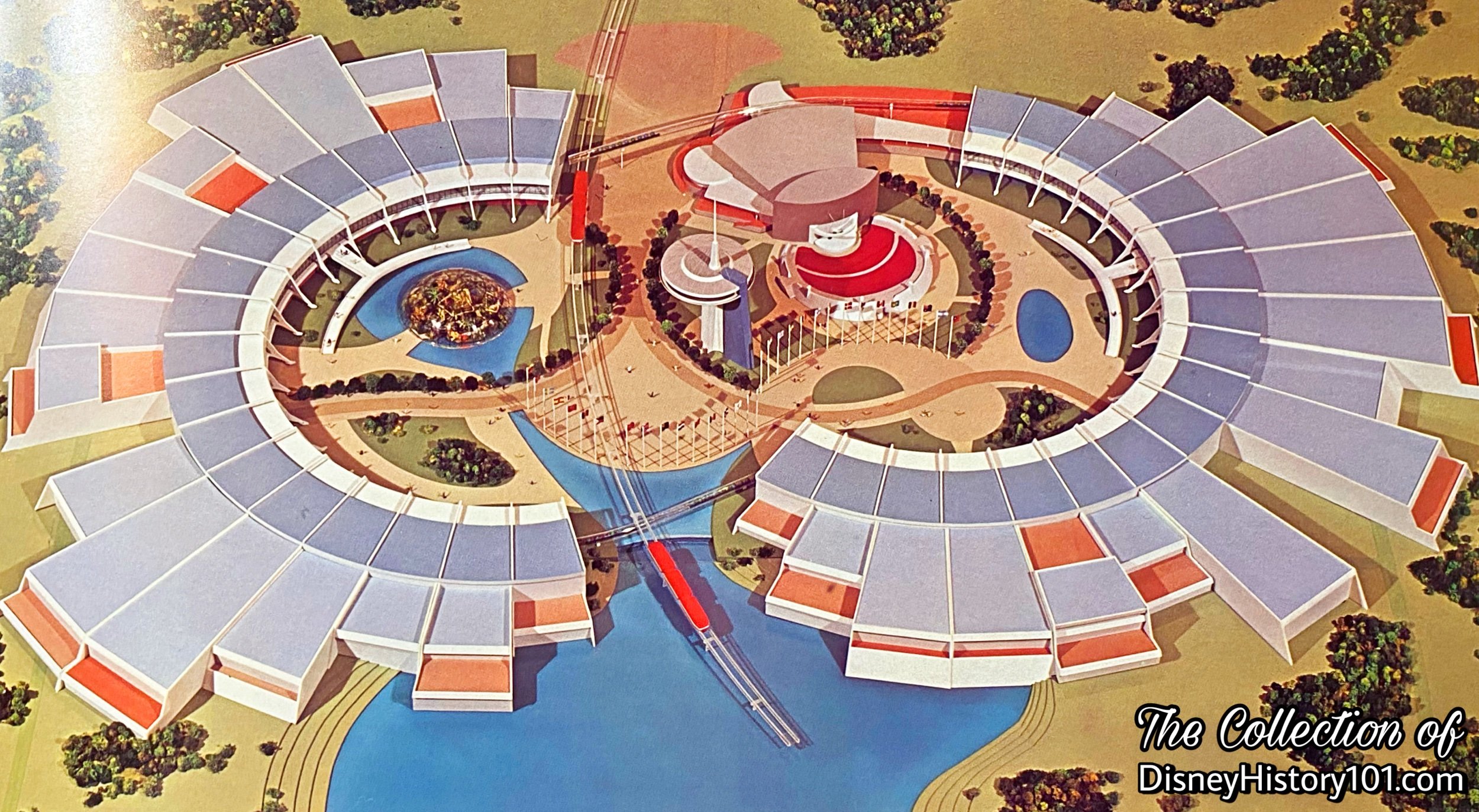
An excerpt from an EPCOT Center World Showcase prospectus depicts semi-circular buildings Imagineered during a “Blue Sky” phase.
“Project Florida - A Whole New Disney World,” published 1967 by Walt Disney Productions, depicted colorful illustrations of EPCOT'S towering theme building located at the very heart of the city. Radiating from it was to be an International Shopping Area. “Depending upon which direction he takes, the inquisitive shopper might find himself in a British square, a Scandinavian or Asian market place, or a South American plaza. Imported merchandise, foreign cuisine, dinner shows and roving entertainers native to many lands will make the international shopping areas a must-see for residents and tourists alike.“
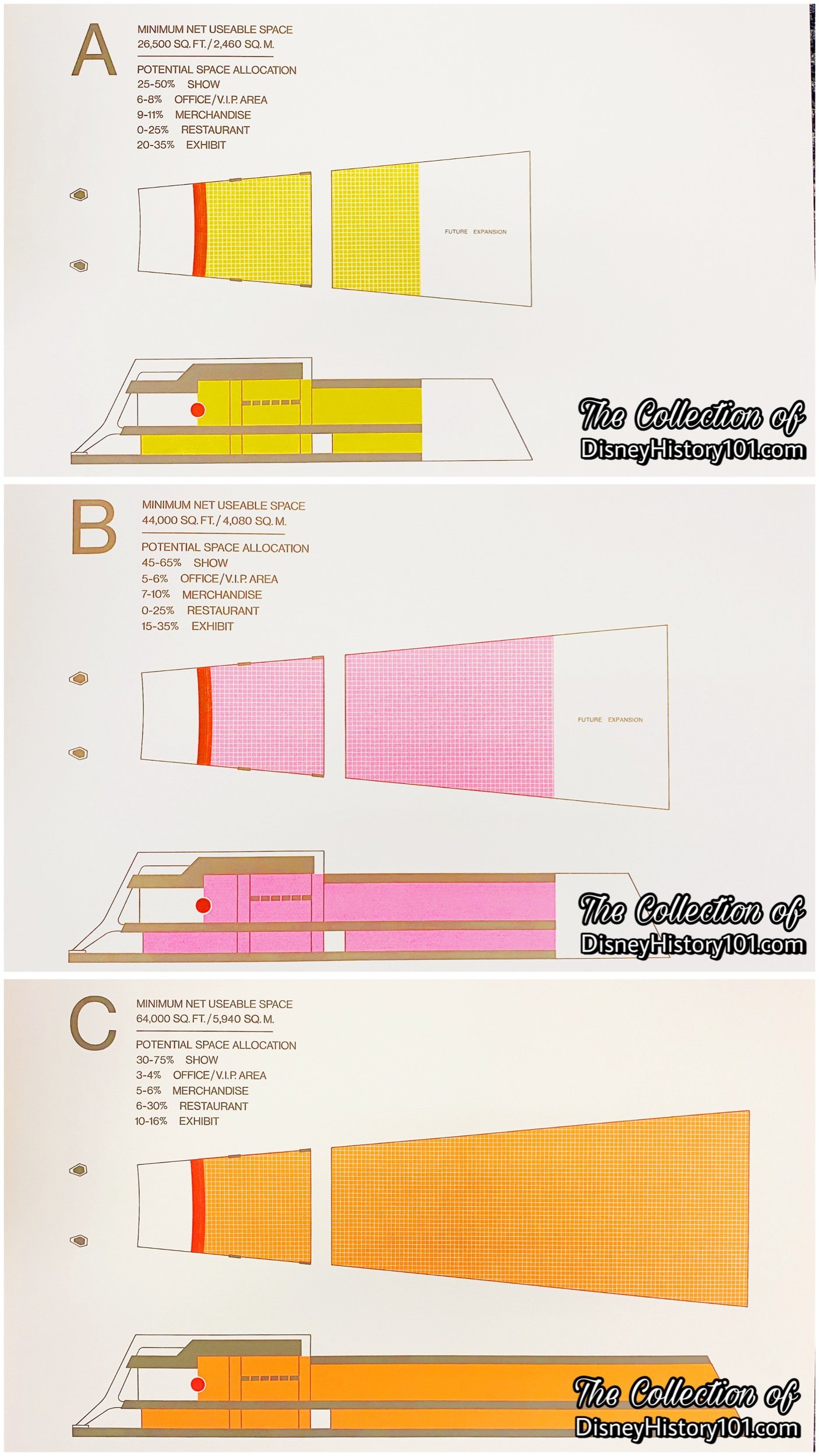
Proposed plans for all National Pavilions prepared by Carlos Diniz & Associates c. 1969, featured various amounts of square footage for offices, merchandise areas, restaurants, and exhibits.
Unlike a world's fair, EPCOT's World Showcase was to “be a permanent international exhibition. No nation's exhibit or restaurant or product displays will be ‘torn down’ after one year or less-the standard requirement at world's fairs. Instead the one-time construction costs will go on working for a country for many years at Walt Disney World. Here the nations of the world will stand side by side in two semicircular buildings.“
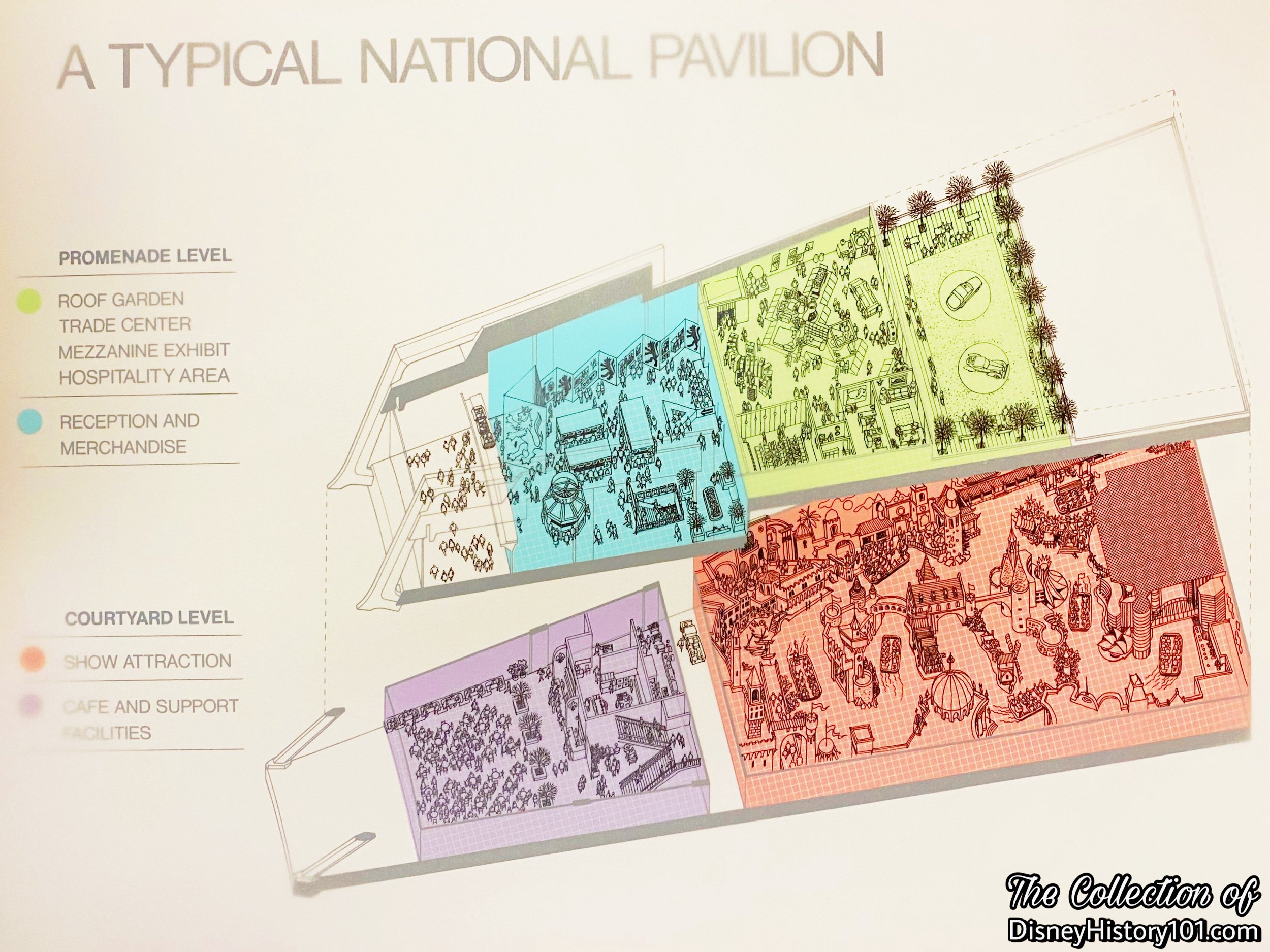
Proposed plans for all National Pavilions prepared by Carlos Diniz & Associates c. 1969, featured various amounts of square footage for offices, merchandise areas, restaurants, and exhibits.
“This semicircular design not only will offer equal exposure and public access for each nation...but will also function as an interrelated series of experiences for every guest. for the entire complex of attractions and exhibits will be tied together by a Disney people-moving system that will also offer visitors a ‘preview look’ into each country's pavilion.”
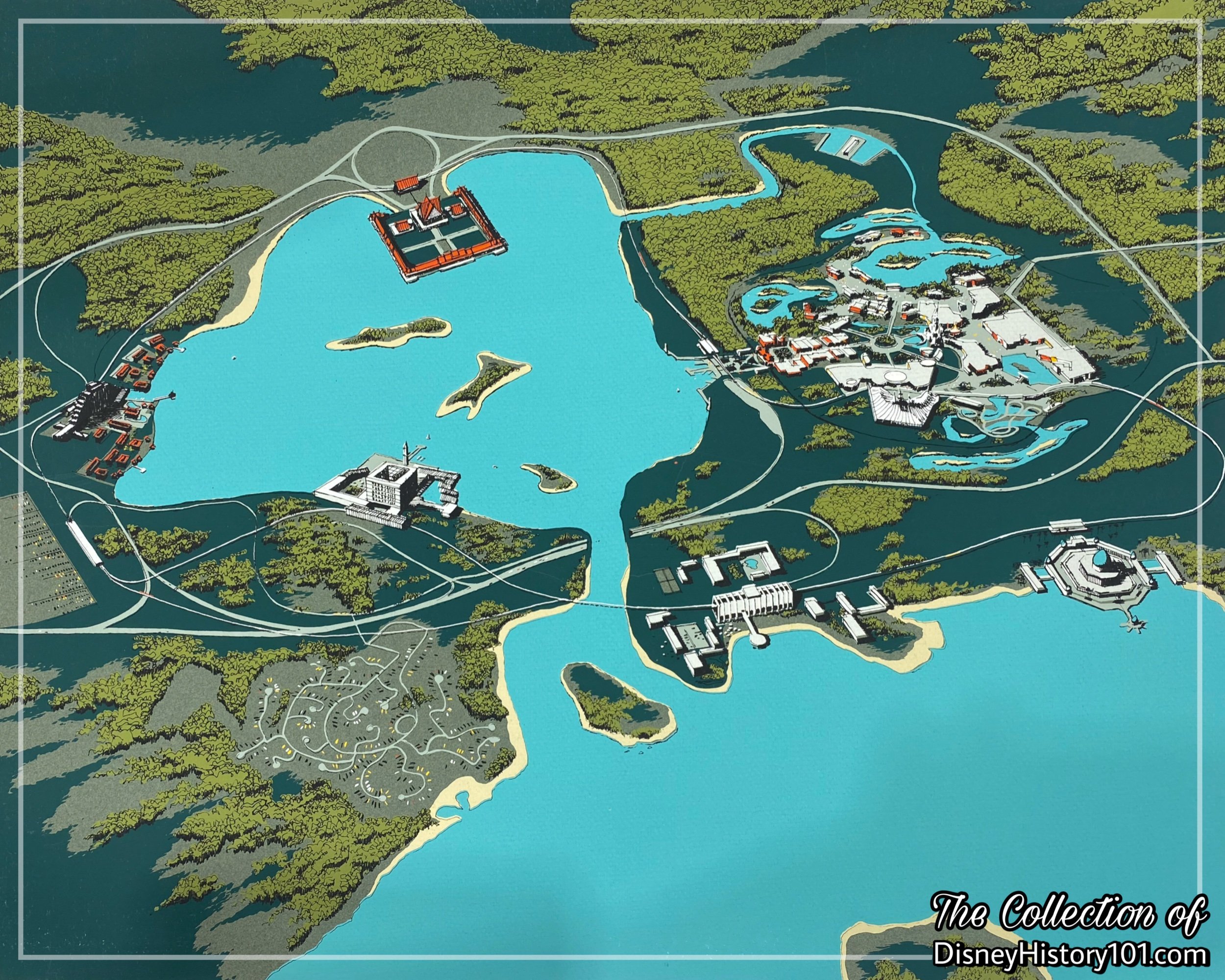
Themed Resorts concept by Welton Becket & Associates, as depicted in WALT DISNEY WORLD - FLORIDA; ©️MCMLXVIII (1968) Walt Disney World Co.
The Ten Year Master Plan of Walt Disney World even included exciting research and development of five new resort hotels. Among these plans for international-themed resort hotels was an Asian Hotel (as seen in Paul Hartley’s artwork and concepts produced by Welton Becket & Associates, pictured above) dreamed up for the lagoon shores during latter periods of the Phase One plan.
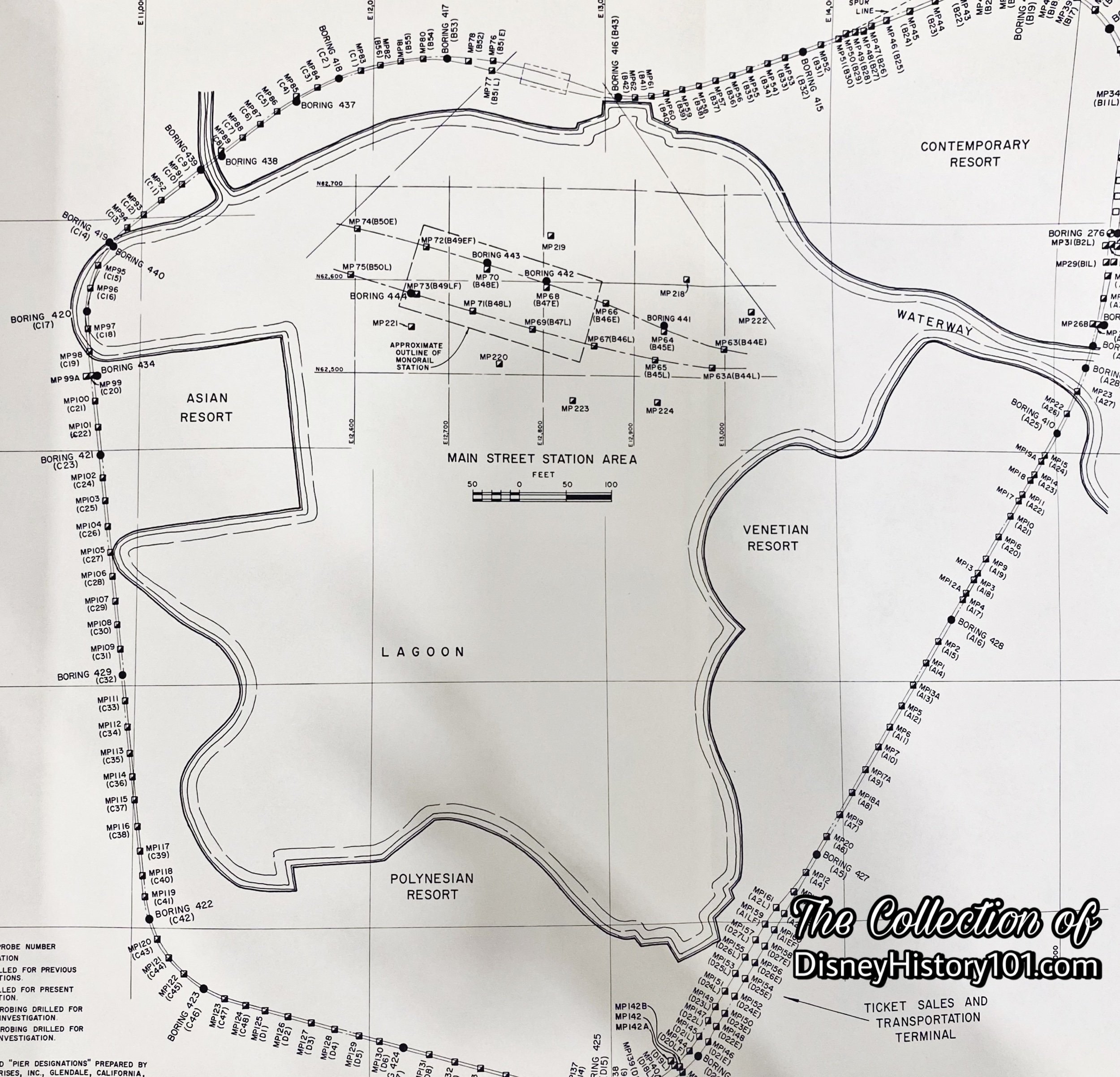
Plans were drawn, soil samples were studied, and feasibility analysis were completed regarding an Asian Resort
However, one “Preview of Walt Disney World” prospectus would soon announce: “‘While five theme resorts are planned, only two will be built in time for the opening of Walt Disney World, near Orlando, Fla., in October, 1971,’ says John Curry, director of the Walt Disney World Co., hotel division… First two to open are the Contemporary Theme Resort, on the lake, and the Polynesian Theme Resort, on the lagoon. Contemporary will be the convention flagship hotel with major convention and exhibit space. Other theme resorts include the Asian, the Venetian and the Persian. Each of the hotels will have meeting space most likely below the lobby level… Each resort will have a specialized design motif, food specialties, dining room menus, recreation activities, entertainment, interior decor and employee costumes. Resorts will offer nightclub entertainment and dancing. Motion pictures and stage shows will be presented in nearby theaters.”
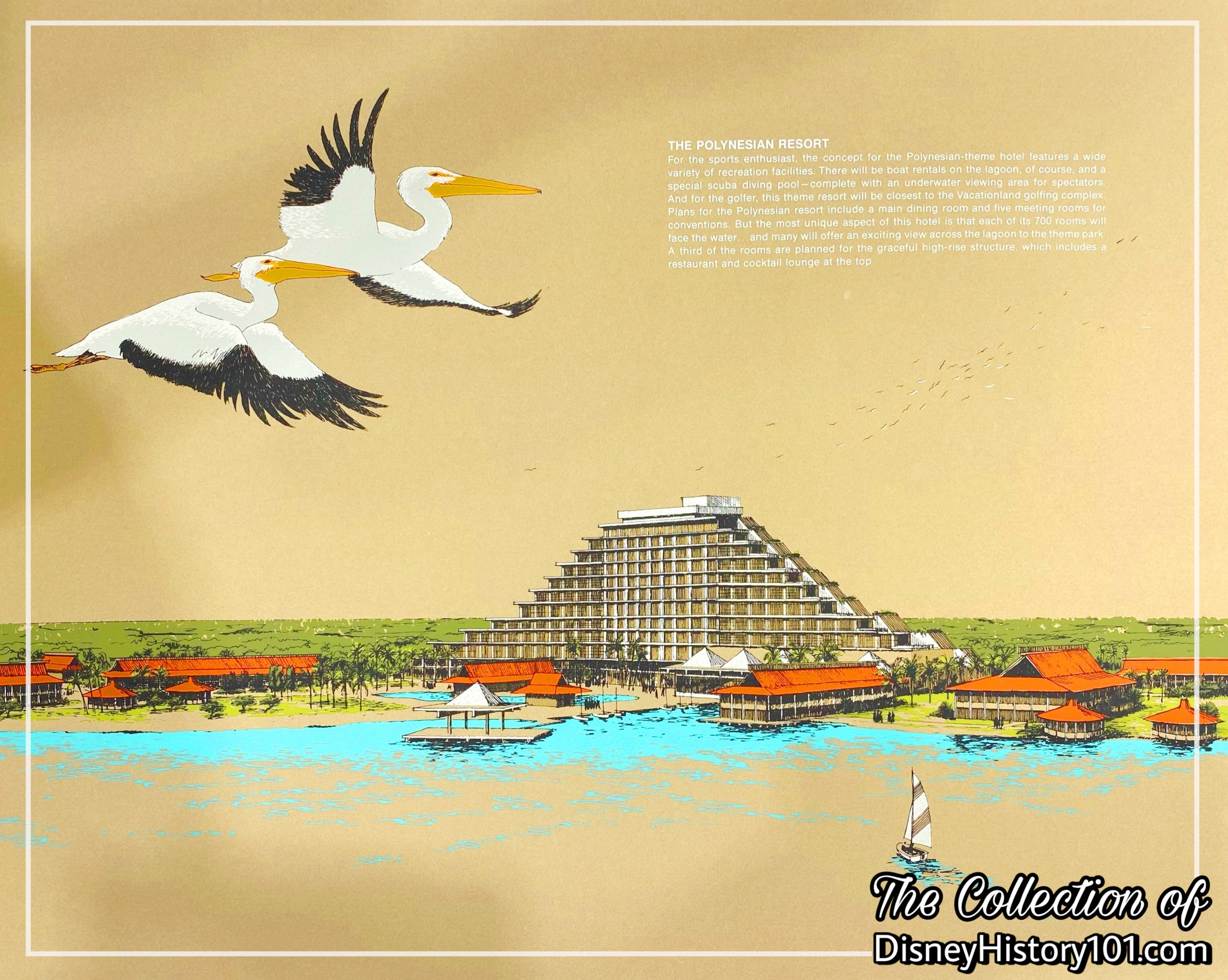
The Polynesian Resort concept by Welton Becket & Associates, as depicted in WALT DISNEY WORLD - FLORIDA; ©️MCMLXVIII (1968) Walt Disney World Co.
By the time Walt Disney World opened in 1971, the Polynesian Resort had been constructed, but the Asian Resort remained on the drawing board.
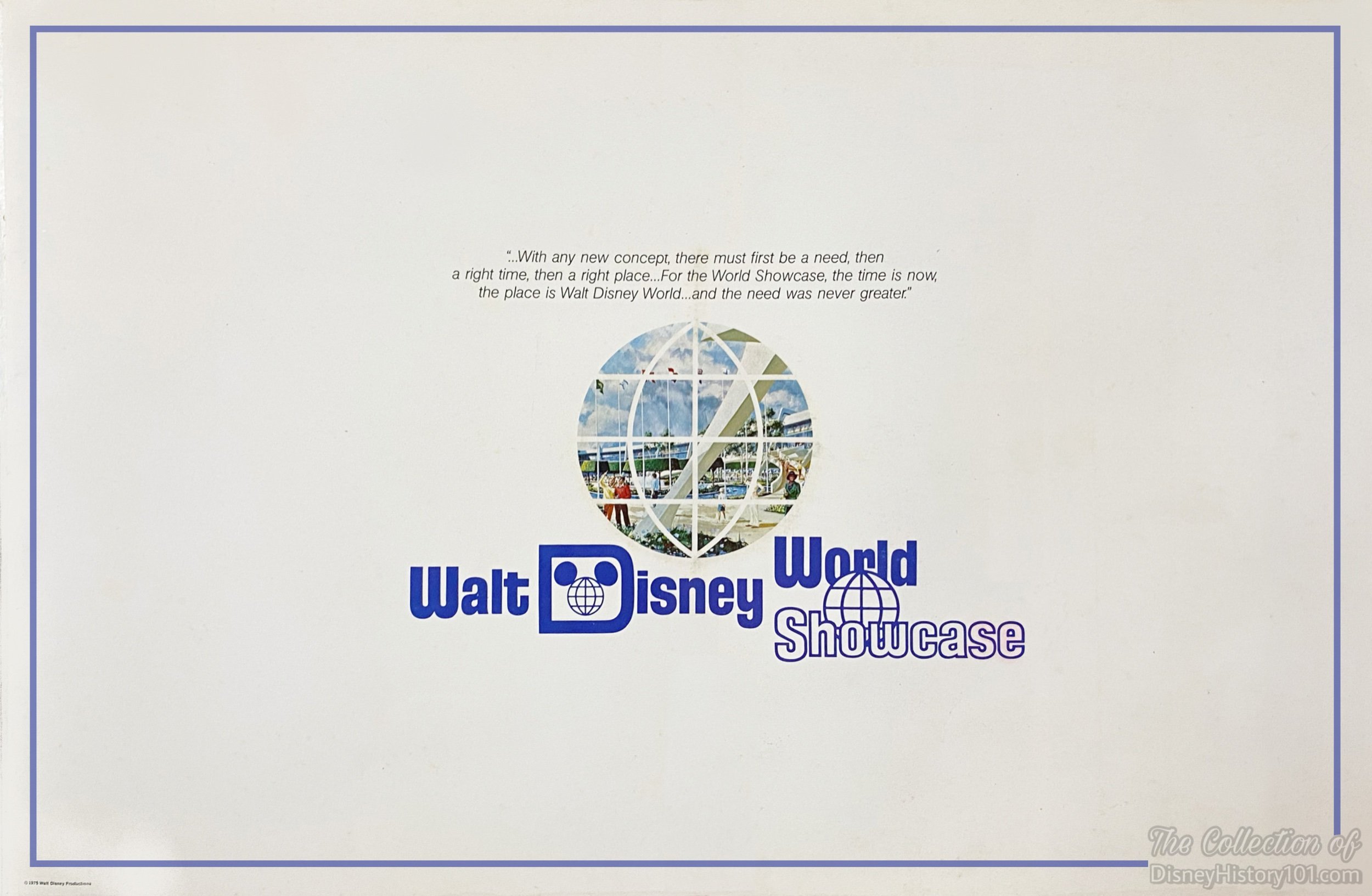
The cover of one Walt Disney World Showcase Prospectus which gave a preview of international pavilions during 1975.
“The Experimental International Prototype Community of Tomorrow”
By 1975, “the need for an Experimental Prototype Community of Tomorrow… was[sic] even greater than when Walt Disney first began talking about it in 1965.” The Experimental Prototype Community of Tomorrow was to feature a living community where American Industry would always be introducing, testing and demonstrating new techniques and systems designed to enhance the quality of urban life. EPCOT was always to be a showcase to the world community. And so the author of one c.1975 prospectus stated: “Now, more than ever, our world needs a focal point a forum where creative men and women of science, industry, government and the arts from around the world can present new ideas and technologies... stimulating new concepts that will enable both the leaders of the world and the general citizenry to better understand the great challenges facing people around the world…and the possible solutions to these great challenges.”
Soon, the second Phase of Walt Disney World was being planned - EPCOT Center. According to one EPCOT Center’s instructor’s orientation guide, one objective set out for EPCOT was “to be a ‘permanent international people-to-people exchange’. . . advancing the course of world understanding among its citizens. What we are doing now is creating a public focus. . . a ‘center’ for the communication of what is being done. . . made directly to the public in ways they will both understand and enjoy. Our goal through EPCOT Center is to inspire our guests who come here, so that they will be turned on to the positive potential of the future and will want to participate in making the choices that will shape it. In short, we believe that EPCOT Center will establish a new level of entertainment and equally important, education for families and people of all ages from all lands. . . and that EPCOT Center will give people hope that there are solutions to all the problems that exist in the world today. . . and that there truly can be understanding among nations.”
One Walt Disney World Showcase prospectus added: “Here the nations of the world will meet on a coequal basis to communicate on a ‘people to people’ exchange with the more than 12 million visitors to Walt Disney World. Here young people from all over the earth will come to operate the attractions of their native lands… to serve the distinctive foods and to demonstrate and sell the unique merchandise of their home countries. Unlike a world's fair, EPCOT's World Showcase will be a permanent international exhibition. No nation's exhibit or restaurant or product displays will be ’torn down’ after one year or less-the standard requirement at world's fairs. Instead the one-time construction costs will go on working for a country for many years at Walt Disney World.”
A prospectus (entitled “EPCOT Center… People Bring It To Life”) opens by describing how the World Showcase was one of two principle themes of EPCOT Center, as it “be a ‘Community of Nations,’ the only permanent international exposition of its kind anywhere, focusing on the cultures, traditions, tourism, and accomplishments of people around the world.” Initial show master-planning and conceptual development resulted in EPCOT Center World Showcase presentations that were “80 per cent World Showcase and 20 per cent EPCOT. Since then, we’ve evolved to the place where there’s maybe 80 per cent EPCOT and 20 per cent World Showcase. I think now we feel we’re at a point where we know what EPCOT and World Showcase are going to be. The two projects will work together and compliment each other,” according to a statement by Jack Lindquist, in which he discussed EPCOT Center plans. Herb Ryman created c.1965 suggestions for Walt Disney’s Progress City and “enclosed shopping areas… representing countries of the world.” According to another prospectus, “The World Showcase comprises the southern half of EPCOT Center where at least ten participating countries will stand side-by-side in friendship along the banks of a broad lagoon… The participants in this first phase of World Showcase include United Mexican States, Japan, Federal Republic of Germany, United Kingdom, French Republic, United Arab Emirates, Italian Republic, Canada, State of Israel and Morocco. Disney Imagineers are now working with government or business interests from these countries to achieve a unique and meaningful showcase for each nation.” Surely any wanderlust was sure to be satiated through the Epcot Center World Showcase.
By the time the 1976 Shareholders Report was prepared, Walt Disney Productions had been “testing the market” for our concepts for EPCOT and the World Showcase. They had presented their idea for a permanent international exposition - The World Showcase -to representatives of 31 nations of the world, opening doors from Manila to Moscow. In Mexico City, E. Cardon Walker, President personally had the honor of presenting World Showcase concepts to two Presidents of Mexico, “then” President Echeverria and then-current President Jose Lopez Portillo. Donn Tatum and other members of the Disney team had introduced World Showcase to Kings, Queens, Ambassadors, Foreign Ministers, and industry leaders around the world. As Walt Disney Productions went to press, their marketing staff continued to pursue these contacts and was negotiating specific contracts with more than half a dozen nations.
In a number of cases, the creative staff at WED Enterprises had developed a complete pavilion concept for major nations. Each of these pavilion concepts included a high-capacity show-attraction, a restaurant serving food unique to the individual nation, a shopping “street” featuring the country's distinctive merchandise, and an area where travel to the country and products of the country were to be presented and promoted.
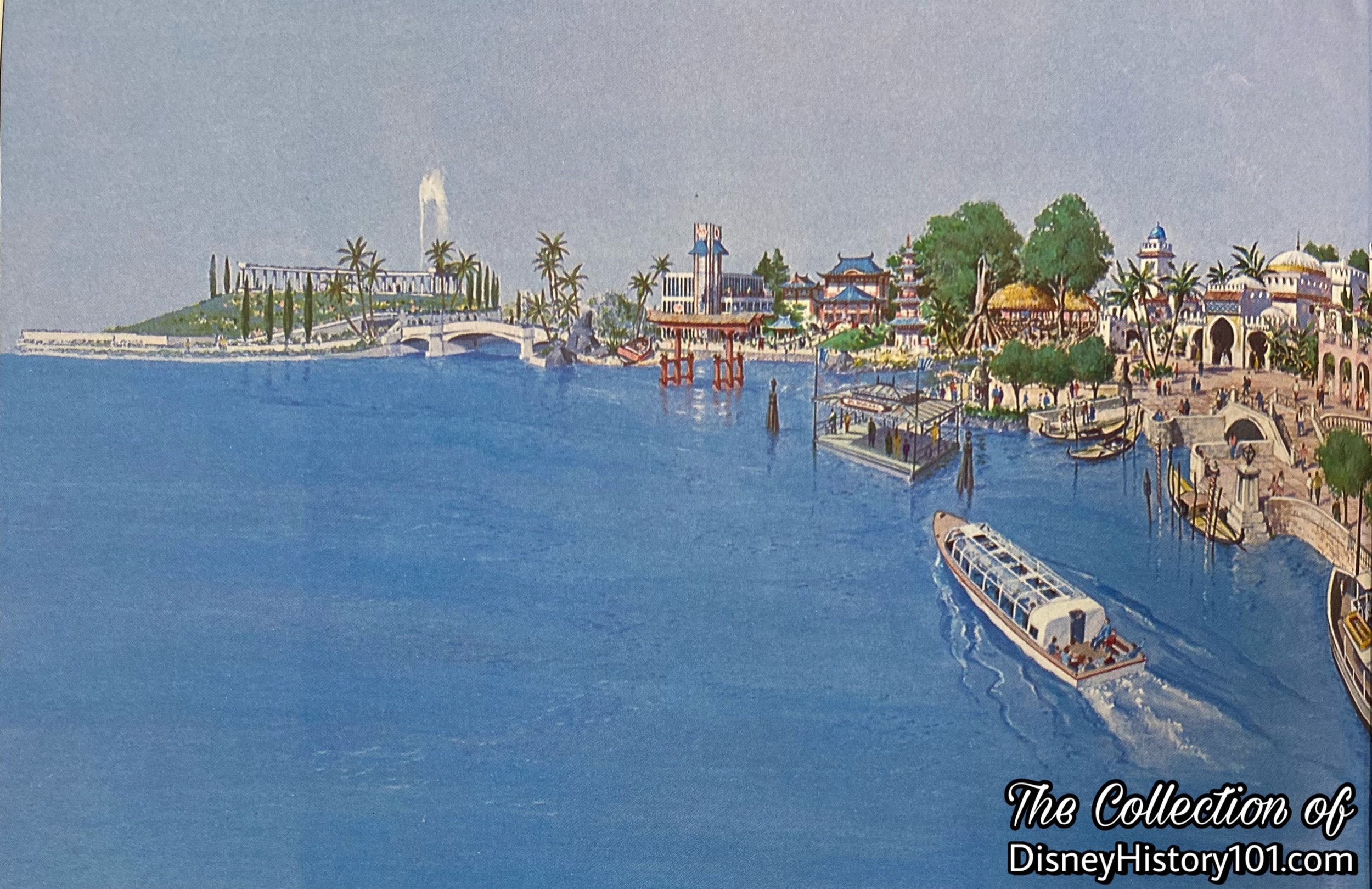
The Japan Pavilion is depicted in the World Showcase in an excerpt from the Walt Disney Productions Annual Report 1978.
The “Walt Disney Productions Annual Report 1978“ briefly described the Japan Pavilion for shareholders and employees: “A traditional wooden archway marks the entrance to this pavilion. A carrousel theater show, ‘The Winds of Change,’ will be located just past a ceremonial temple bell and an ornately-decorated pagoda. The four-act show features Audio-Animatronics figures and film. A section of the Ginza, Tokyo's famous nighttime shopping and entertainment district will also be a part of the pavilion.”
Walt’s people and company were now embarking on “imagineering” a new, grander “theme show” for Florida audiences. The latter expression (“theme show”) was once defined as: “A controlled, usually man-made environment where as many as possible elements pertain to a single fictional or non-fictional motif. Thus, an individual placed within that environment may consciously or subliminally experience it.” But even more (as one sanctioned statement elaborated): “We are talking about all the things a guest may experience and be entertained by - colors, sounds, lights, detail - timing, taste and texture. Through art and animation, our imagination, creativity and talent blend together to make our ’show.’”
Walt Disney once said: “The whole thing here is the organization. Whatever we accomplish belongs to our entire group, a tribute to our combined effort.” In step with Walt’s philosophies, what was described as a “complex and highly diversified team” of individuals (among the Project Management and the Project Team) would coordinate and translate the concept of EPCOT Center into a reality. The microcosm that would be the Japan pavilion would be Imagineered by the collaborative contributions of writers, designers, artists, film makers, engineers, sculptors, and builders, in addition to committees of foreign nationals, representatives of corporations and governments.
Marty Sklar recollected (in “One Little Spark! Mickey’s Ten Commandments and The Road to Imagineering”: “I had spent eight of my eventual fifty-four years at Disney leading the Imagineers in developing the concepts, playing a key role in convincing the major corporate sponsors to make Epcot a reality, and producing the myriad of shows and stories that attracted more than ten million visitors to visit Epcot in its first year.”
These were lead by Project Director Jim Nagy, EPCOT Center World Showcase Japan Project Manager Jim Wolford, Allen Moyer (Resident Engineer), Jerry Hunt (BVCC Project Manager), John Moore (Tishman Project Manager), Pete Rahill (Pico Coordinator), Joanne Fernholz (Project Business Administrator), and Linda Nations (Project Planner), with the help of General Contractors Palmer-Smith Company, Inc.
Walt Disney World Shops would employ disciplines found at MAPO, supporting MAPO with in construction manufacturing.
The Showcase Area Development Landscaping Team was comprised of Don Hughes (Project Manager), Bill Coan (Resident Engineer), Jim Franklin (BVCC Project Manager), John Payne (PICO Coordinator), Joanne Fernholz (Project Business Administrator), and Dave Yanchar (Project Planner). [“Epcot Center - People Bring it to Life,” prepared by WED/MAPO, c.1980]
By this time, the current preliminary concept for the Japan World Showcase Pavilion was described the following way:
“The entrance to the Japan Pavilion is marked by traditional wooden archway located along the shoreline of the World Showcase lagoon. Guests will walk past a ceremonial temple bell and an ornately decorated pagoda before arriving at the pre-show area for a carrousel theater show entitled ‘The Winds of Change.’ Through the magic of Disney Audio-Animatronics and film, this four-act show traces the major influences of Japanese culture from the earliest Chinese visitors to the present. The show concludes with a multiple screen film presentation depicting modern Japan’s vast manufacturing outpost and its impact on the rest of the world. Exiting the carrousel theater, guests will be greeted by neon lights and music typical of the Ginza, a recreation of downtown Tokyo’s famous nighttime shopping and entertainment district. From the Ginza, guests ramp down to the first floor display and merchandise areas where products such as pearls, ceramics, bonsai trees and time-keeping devices are available for purchase. The shops sponsored by Japanese companies, will be situated on a pedestrian ‘street’ and will feature architectural theming as well as the finest quality in Japanese products. A major department store will feature merchandise on the first floor, a teppanyaki restaurant on the second floor and a VIP tea garden on the third floor.”
As for the firms which would sponsor these attractions, “Jack Lindquist, Vice President of Marketing for Disneyland and Walt Disney World… [headed] up our team responsible for lining up participants for EPCOT and World Showcase,” according to Disneyland LINE Magazine. By 1978, at least five companies - Mitsukoshi Ltd., Seiko Time Corp., Japan Airlines Co. Ltd., K. Mikimoto & Co. Ltd., and Noritake - officially notified Jack Lindquist of their intention to participate in the Japan Pavilion World Showcase at EPCOT Center. When Epcot Center opened in 1982, there were 34 merchandise locations, some of which were supported by these sponsors in the Japan World Showcase. It is notable to mention that during these early years, it was commonplace for merchandise locations to stock General Merchandise - non -character and/or decorative items, including film and sundries.
The aforementioned “The Spirit of EPCOT Center” c.1982 instructor’s orientation guide introduces the Japan Pavilion the following way :
“The brilliant, Red Torii gate and a five-story pagoda welcome guests to Japan. A visit to Japan might begin in the Yakitori House, a small restaurant offering traditional Japanese Yakitori. . . bits of beef, skewered, basted, and simmered.
The merchandise and food locations in the Japan pavilion are operated by Mitsukoshi. One of the largest retail firms in the world, Mitsukoshi has been in business since 1673. Tempura Kiki, a small corner for the main restaurant, is devoted to the batter-dipped chicken, beef, seafood and fresh vegetables.
In the five Teppanyaki Dining Rooms, it’s possible to sample a traditional style of tableside cooking.
Shrimp in cocktail sauce and crab meat in a tasty rice vinegar sauce are among the appetizers available in the Matsunoma Lounge.”
While a four-act presentation of film and Audio-Animatronics wizardry was planned, the Japan Pavilion opened with the Mitsukoshi Department Store (inside the Grand Shishinden Hall), Teppanyaki Dining Rooms restaurant, Yakitori House restaurant, and the Mitsukoshi Restaurant (featuring Japanese master chefs performing “culinary magic and spell-binding table-side presentations”), the exterior of which is surrounded by paths through tranquil bonsai gardens of old Japan.
The EPCOT Center World Showcase almost had a legacy in WESTCOT Center - “a West Coast version of EPCOT Center, with a Spacestation Earth as its centerpiece, and a World Showcase. It was initially announced in March 1991, to be built where Disney California Adventure was eventually situated.” [Disney Facts Revealed by Dave Smith, 2016]
EPCOT Center Cast Members have been referred to as “the spirit of EPCOT Center” since that very c.1982 namesake orientation class. Without them, EPCOT Center would just be one magnificent stage.
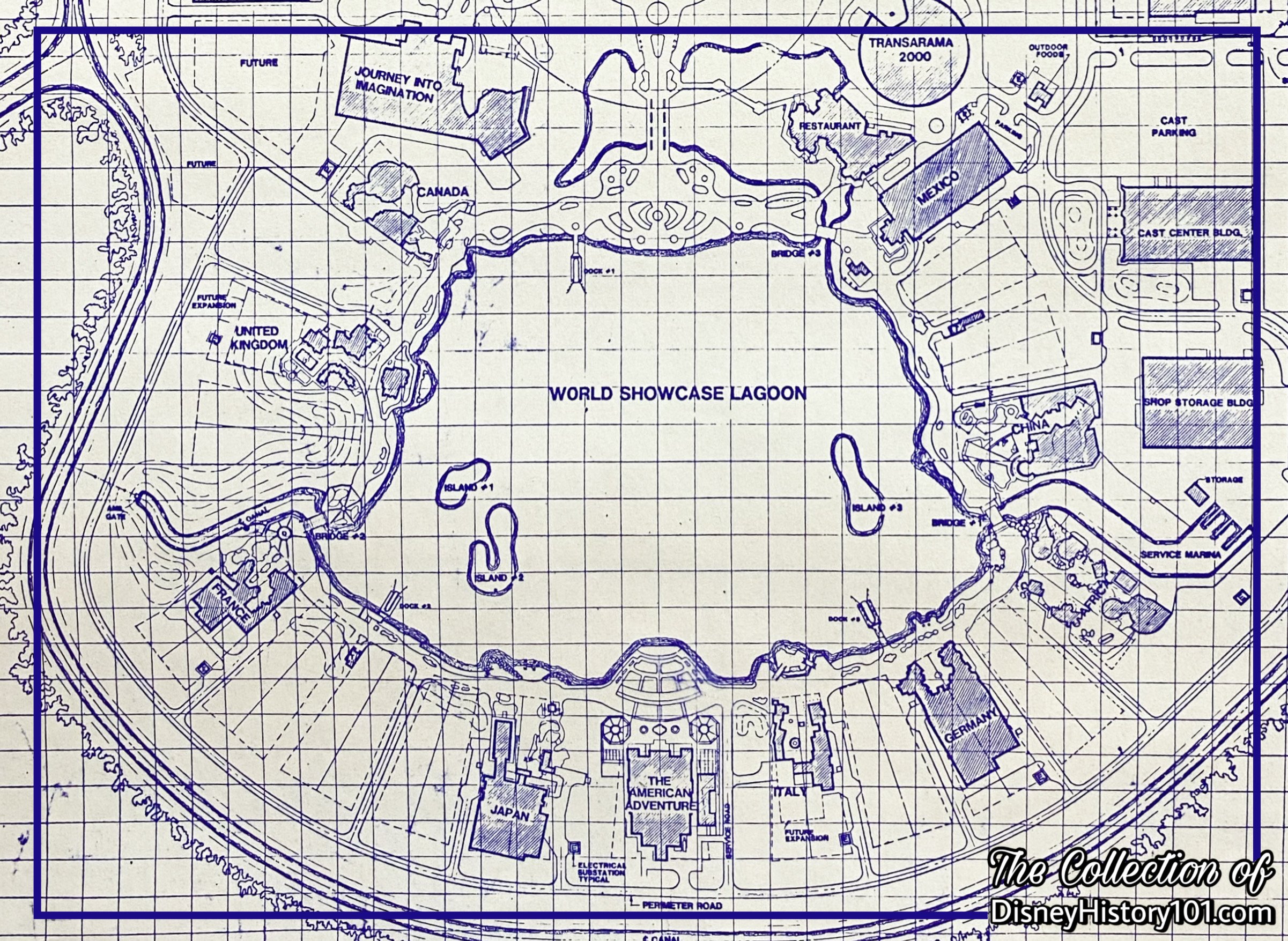
An Epcot Center Site Plan reveals the realm of World Showcase as previously viewed in an exhibit.
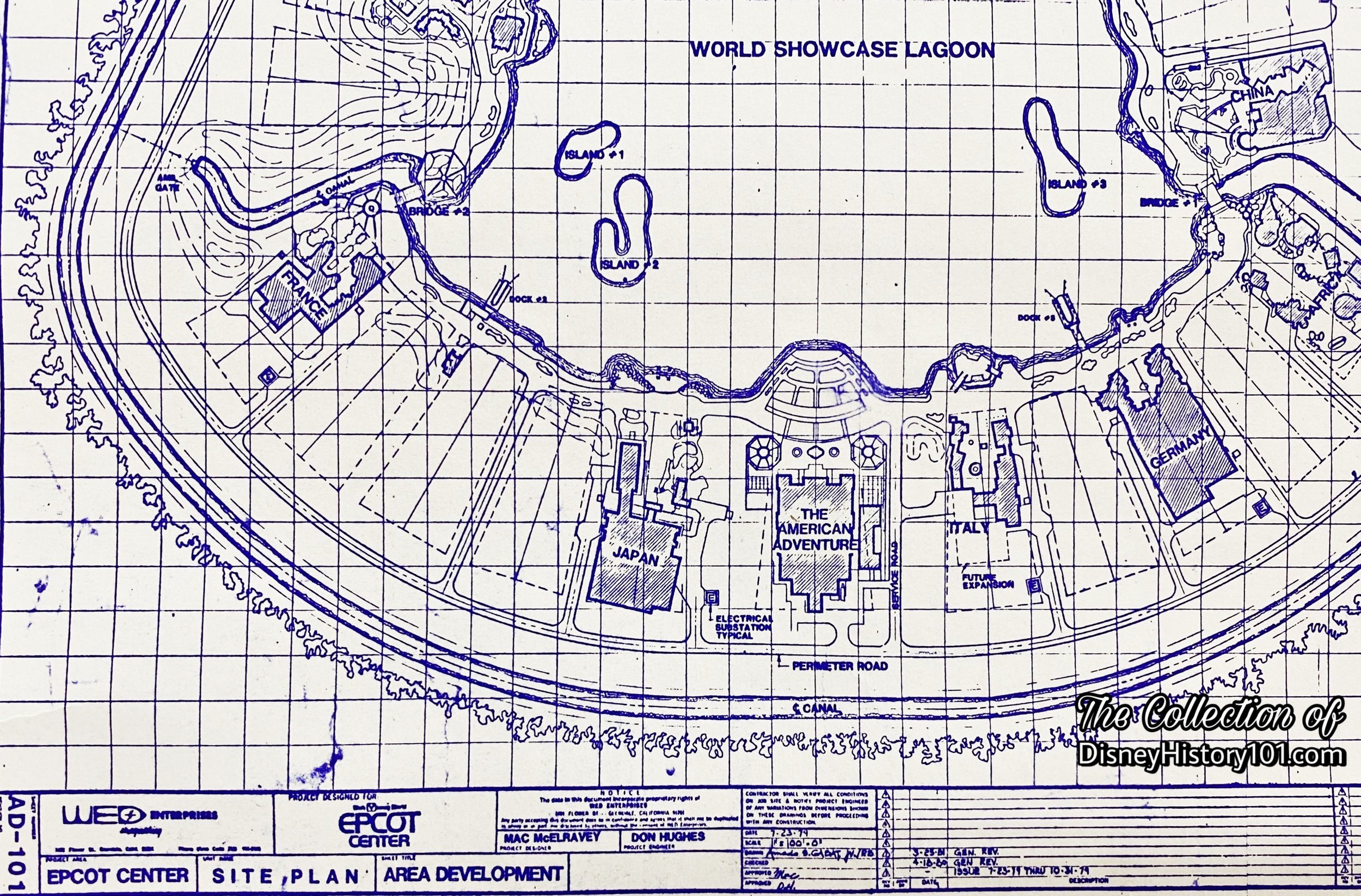
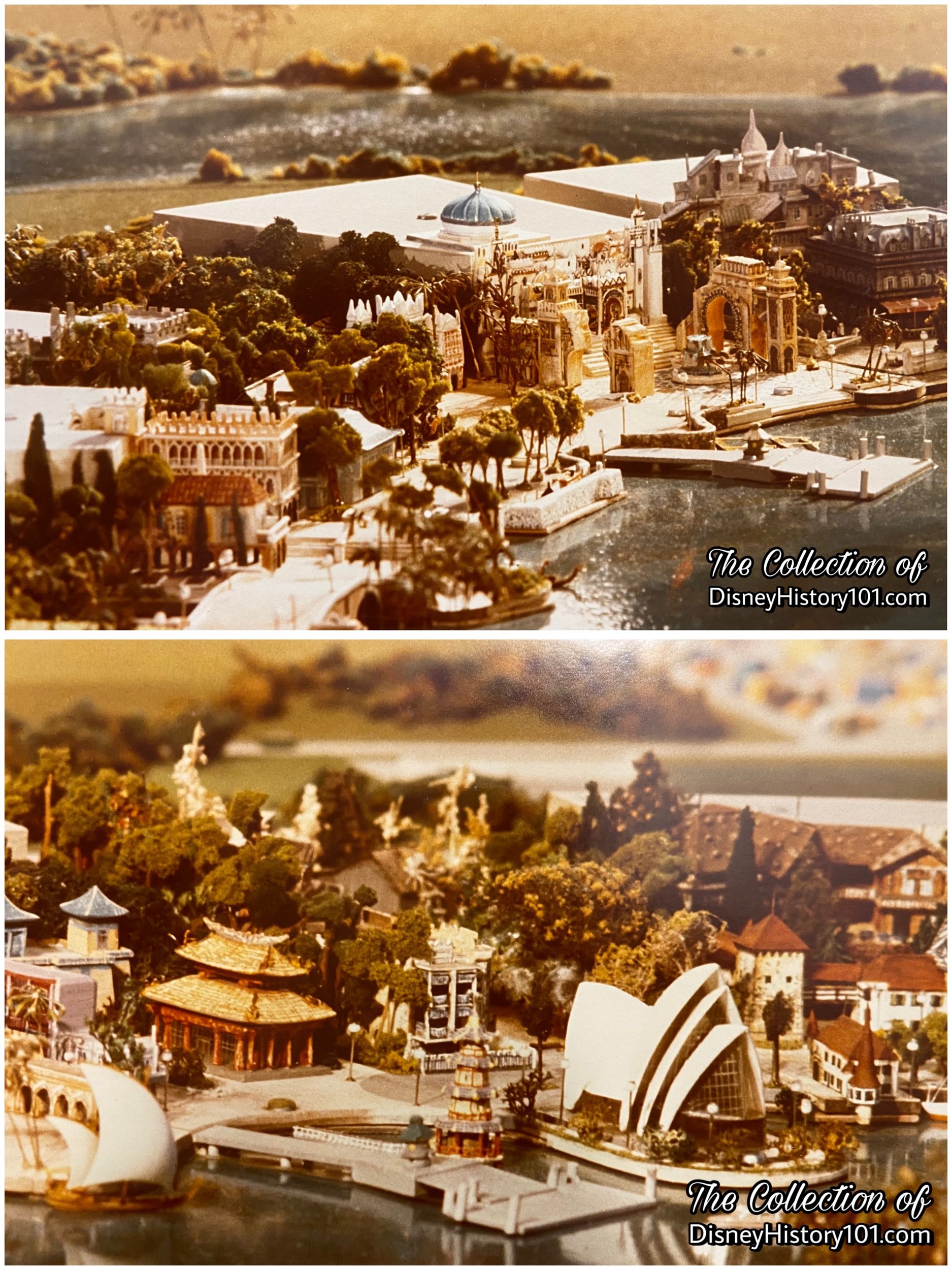
Japan was included in the EPCOT Center World Showcase model.
“Master Planning Japan World Showcase”
“I don't want the public to see the world they live in while they're in the park. I want them to feel they're in another world.” -Walt Disney. Nestled between a stretch (of more than 40 miles) of canal, a perimeter road, a service road, and the shores of the World Showcase Lagoon Promenade, is the EPCOT Center Japan World Showcase. Everything in the EPCOT Center Japan World Showcase would be to this theme and atmosphere from this particular time, place and subject. A themed motif would be incorporated into every aspect of operation (e.g., room décor, menus, attractions and costumes).
アトラクション
Several attractions (アトラクション) were master planned for the Japan World Showcase. Show models were prepared for Japan World Showcase, depicting its attractions, their show elements, right down to their figures and stages. Photographic Show Documentation captured the creative intent.

Described as a "rapid ride across Japan" this attraction would have given "the feeling of riding aboard the famous Japanese bullet train".
![Among the many renderings and show models developed for potential participating nations were these concepts including an OmniMover ride for Japan. [1976 Shareholders Report]](https://images.squarespace-cdn.com/content/v1/5b3d7f804eddec6e826be0c9/1690440627306-LWSMSHF5KZ7SPLG58DCU/433C38EF-9EF6-41FB-91D3-A8F5B1F5E1B2.jpeg)
Among the many renderings and show models developed for potential participating nations were these concepts including an OmniMover ride for Japan. [1976 Shareholders Report]
At least one concept for a theater show was prepared by Harper Goff consultant of styling and design. Therein the theater, four Hokusai murals come alive with the story of how Japan came to be. Many necessary changes were made. For instance, Harper recalled: “When the Japanese looked at the design for their pavilion, they criticized us for using Chinese-style buildings. We had to change them to buildings that were distinctly Japanese, like the seventh-century Horyuji pagoda and the Shishinden Palace in Kyoto.”
“A Magical Journey Through the Wonders of Japan’s Heritage”
Then there was “The Winds of Change.” During the late 1970s, Konosuke Matsushita (of Matsushita Electric Industrial Company) was approached to contribute toward Tokyo Disneyland. At the time, Matsushita had expressed an interest in the historic figures of Walt Disney World’s hall of Presidents, as well as a desire to tell a story of Japanese history. Incidentally, Walt Disney Imagineer Claude Coats had been working on a theater show called “The Winds of Change” that would incorporate audio-animatronics of important figures of the past in a story of Japan’s history. Herbert Ryman (who had painted and sketched during his travels through Japan, as far back as his days with MGM Studios) now prepared conceptual paintings for show scenes of Meet the World.
Drawings from this period depict the Mitsukoshi building prepared to house sales and display areas, Mikimoto, Seiko, Noritake, “N.E.C.”, “J.A.L.,” Matsushita’s “The Winds of Change,” and another display (utilized for storage).
Then the attraction was constructed for EPCOT Center. However, the show building could not support the weight of the attraction. So it was decided to install the show at Tokyo Disneyland. The attraction had more than thirty Audio-Animatronics figures, all of which were sculpted by Blaine Gibson, except for three Meiji figures which were by a Japanese sculptor from Tokyo’s Toho Studios. A theme song was composed and written by Richard and Robert Sherman. Matsushita Electric paid for part of the attraction, subsidizing cost, and creating a “free attraction” similar to what happened to previous Disneyland attractions. “Meet the World” opened, presented by Participant Sponsor Japan Airlines.
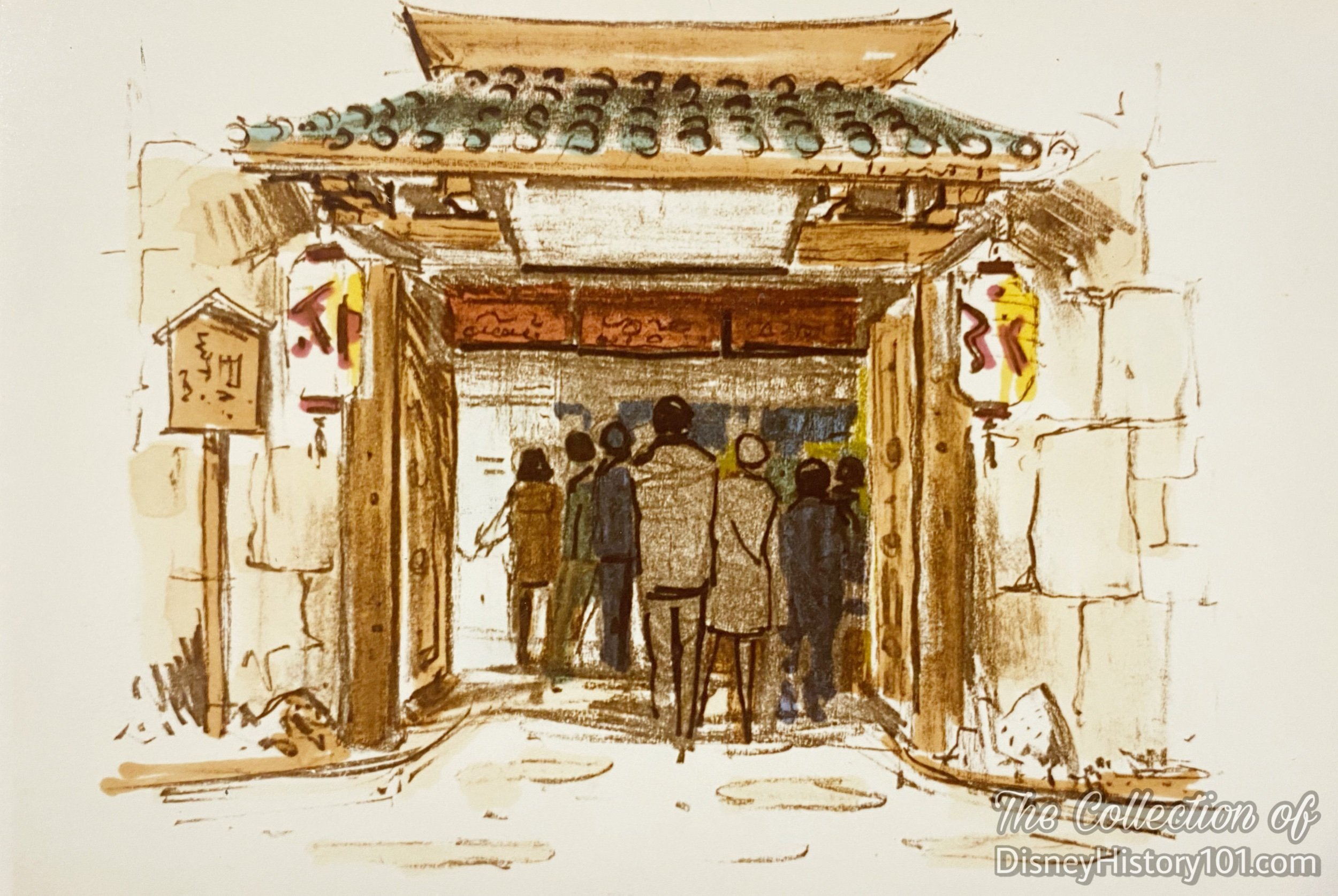
Mount Fuji Rollercoaster storyboard by Clement A. Hall.
“Mount Fuji”
There are thousands of mountains in the world. There is only one, indelible Fujiyama. Naturally, other master plans would involve a Mt. Fuji-themed attraction. The pictures feature tandem-style vehicles (similar to Space Mountain rockets) passing traditional torii gates, Komainu lion dogs, and legendary Kami spirit encountered before a drop-off over the World showcase Lagoon.
Today Concept Development Team members, a Show Producer, Writer, and Artists develop a High-Concept into a full Story. Using a technique referred to as story-boarding the team repeatedly expands upon the initial concept, developing scenes, characters and content necessary to convey the Story. During the concept development of the Japan Pavilion, Clem Hall prepared two-dimensional, rough, thumbnail story sketches outlining the story concept. Some of the vignettes (incidents in scenes and sequences) were illustrated. Clem’s artwork depicted tandem-style vehicles (similar to Space Mountain rockets) passing traditional torii gates, Komainu lion dogs, and legendary Kami spirits encountered before a drop-off over the World showcase Lagoon.
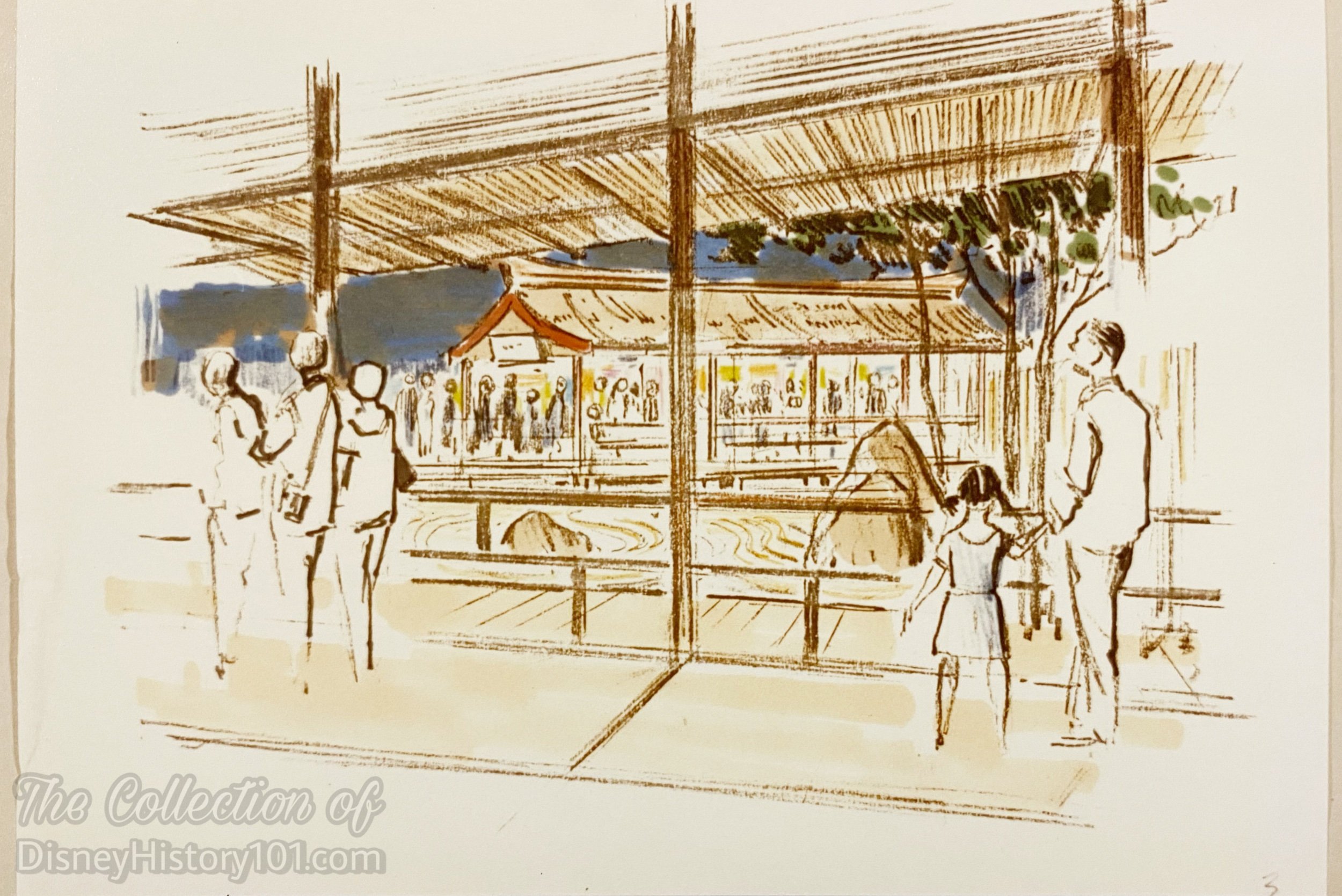
Mount Fuji Rollercoaster storyboard by Clement A. Hall.
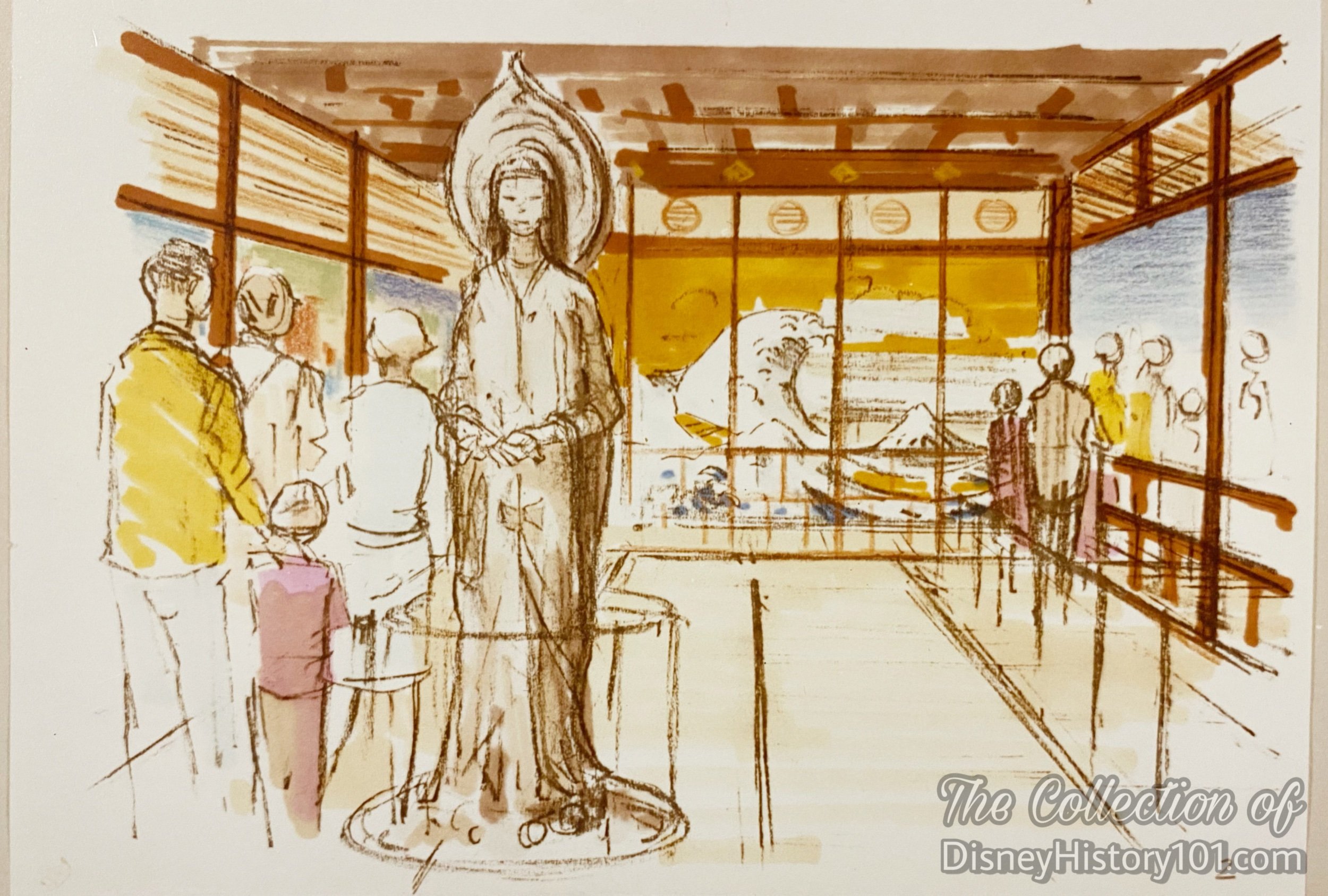
Mount Fuji Rollercoaster storyboard by Clement A. Hall.

Mount Fuji Rollercoaster storyboard by Clement A. Hall.
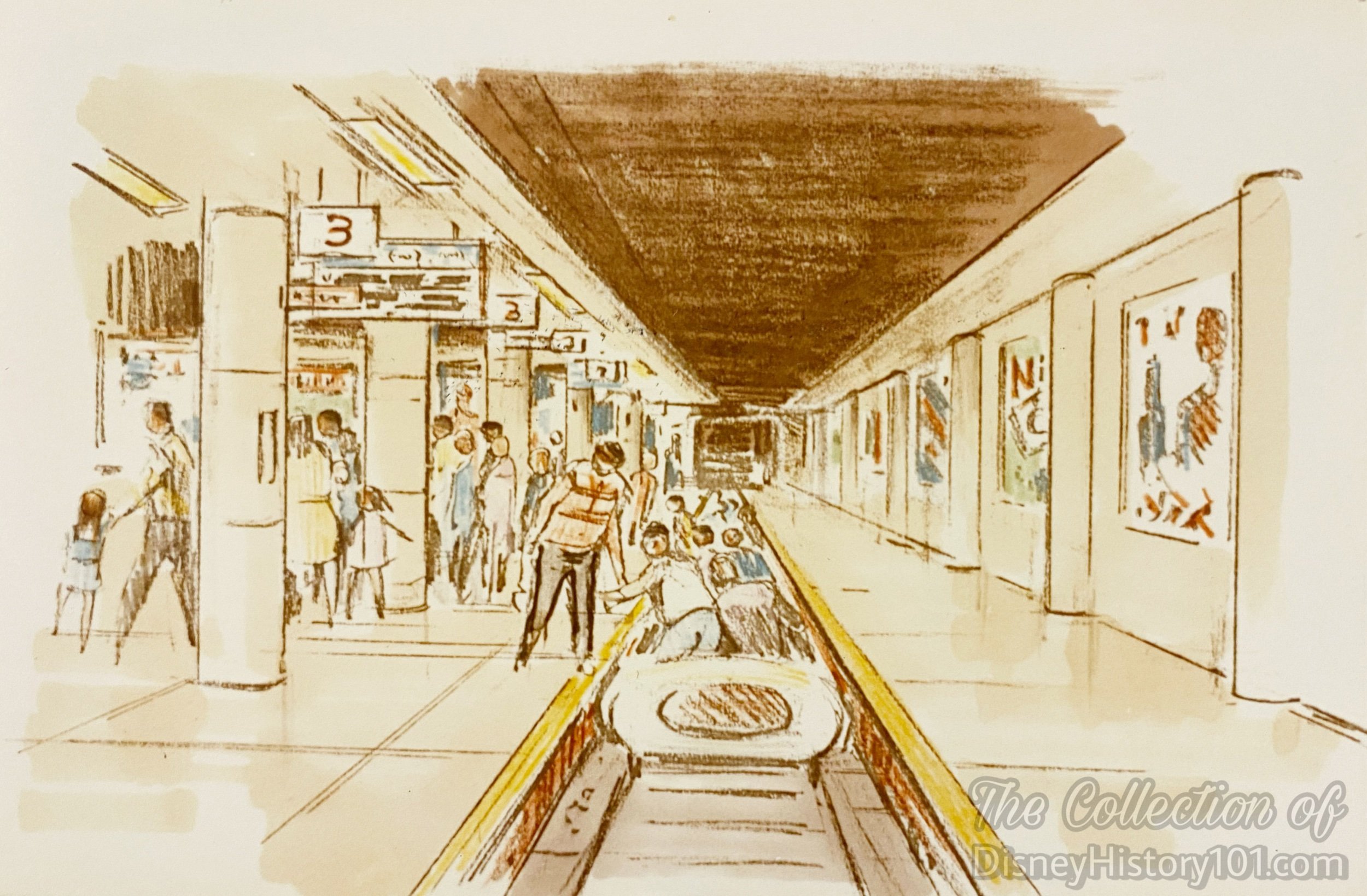
Mount Fuji Rollercoaster storyboard by Clement A. Hall. Guests enter the station and board the Shinkansen (bullet train).
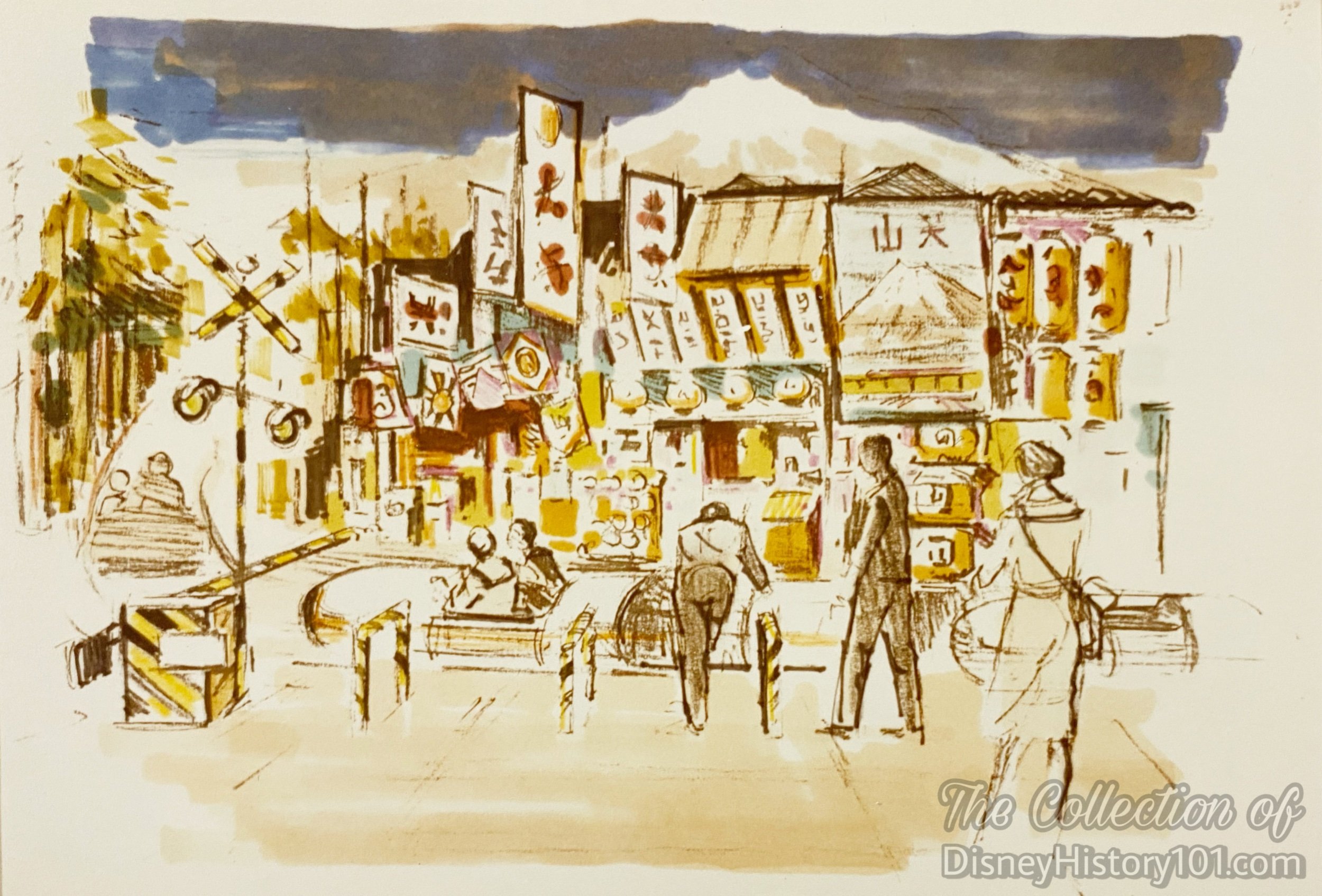
Mount Fuji Rollercoaster storyboard by Clement A. Hall.
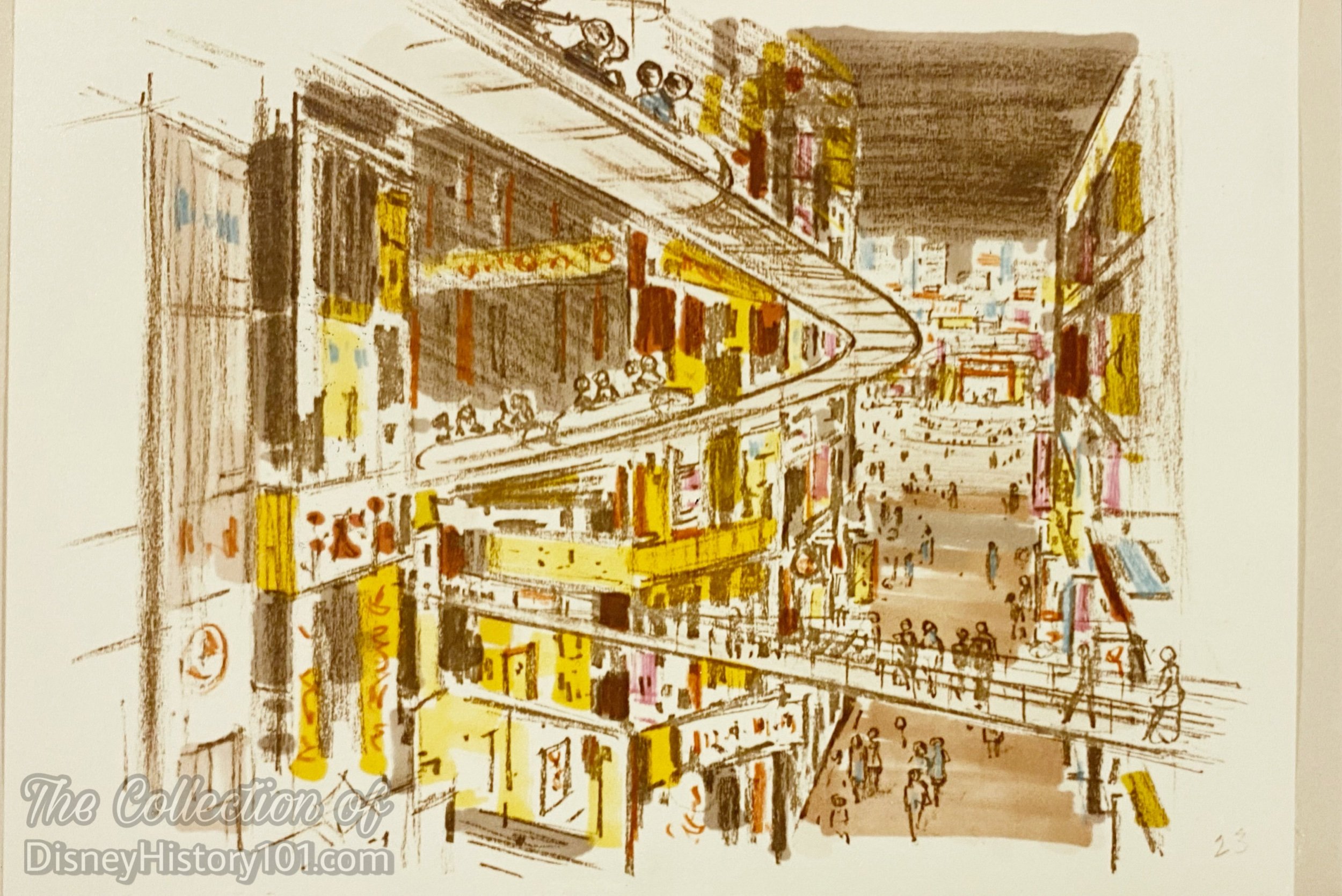
Mount Fuji Rollercoaster storyboard by Clement A. Hall.

Mount Fuji Rollercoaster storyboard by Clement A. Hall.
Tandem vehicles (similar to those of Space Mountain) would carry guests through the adventure.
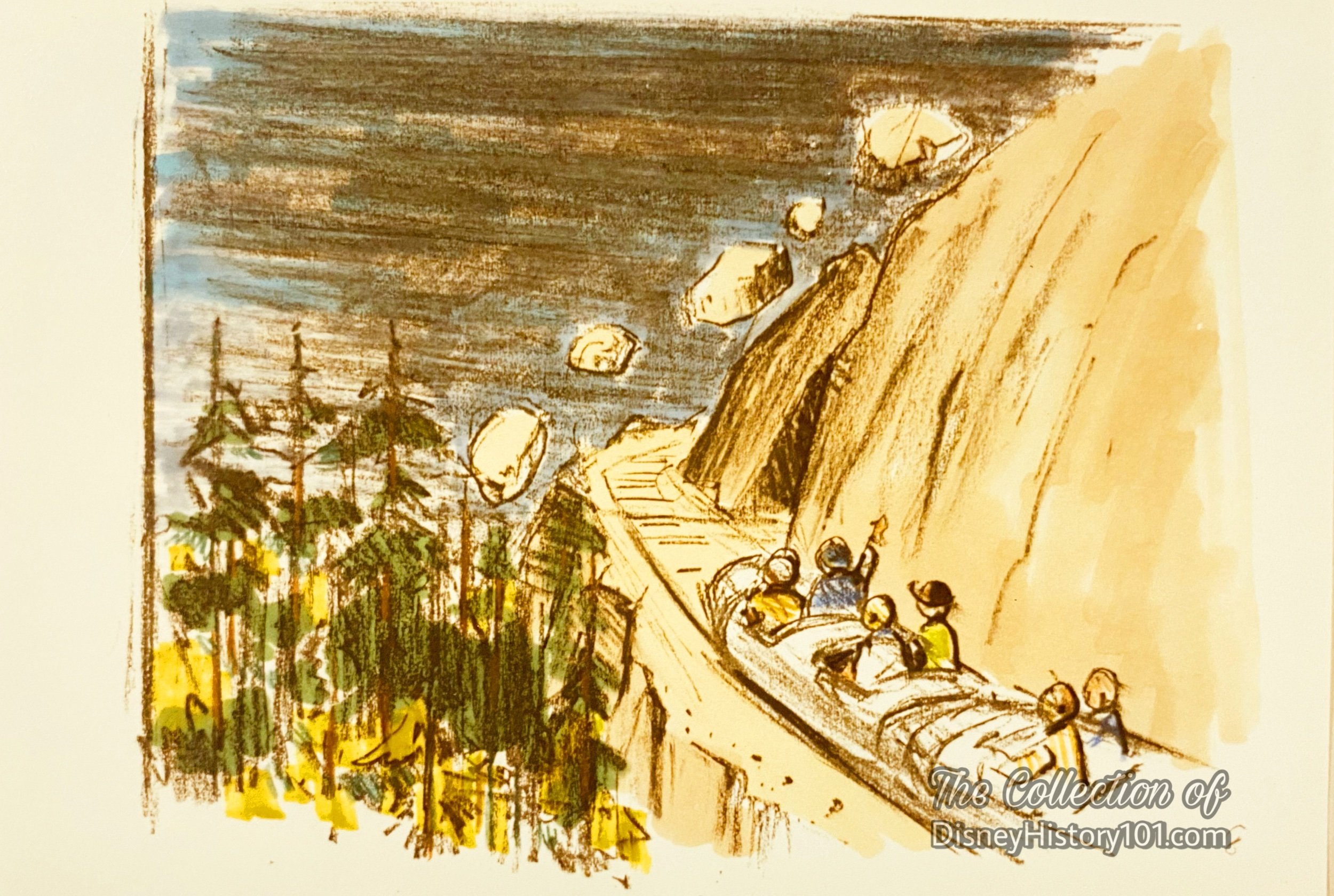
Mount Fuji Rollercoaster storyboard by Clement A. Hall.
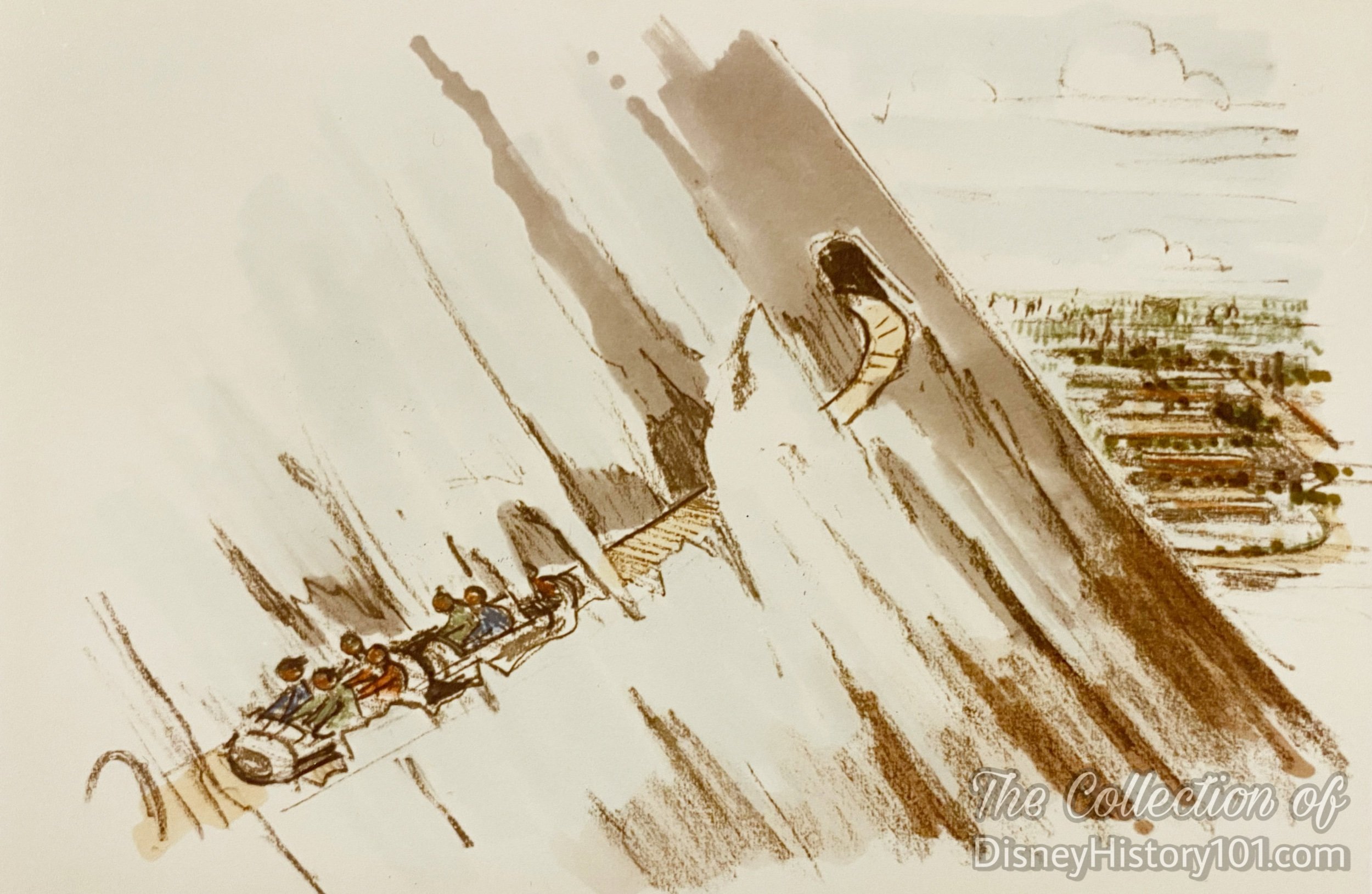
Mount Fuji Rollercoaster storyboard by Clement A. Hall.

Mount Fuji Rollercoaster storyboard by Clement A. Hall.
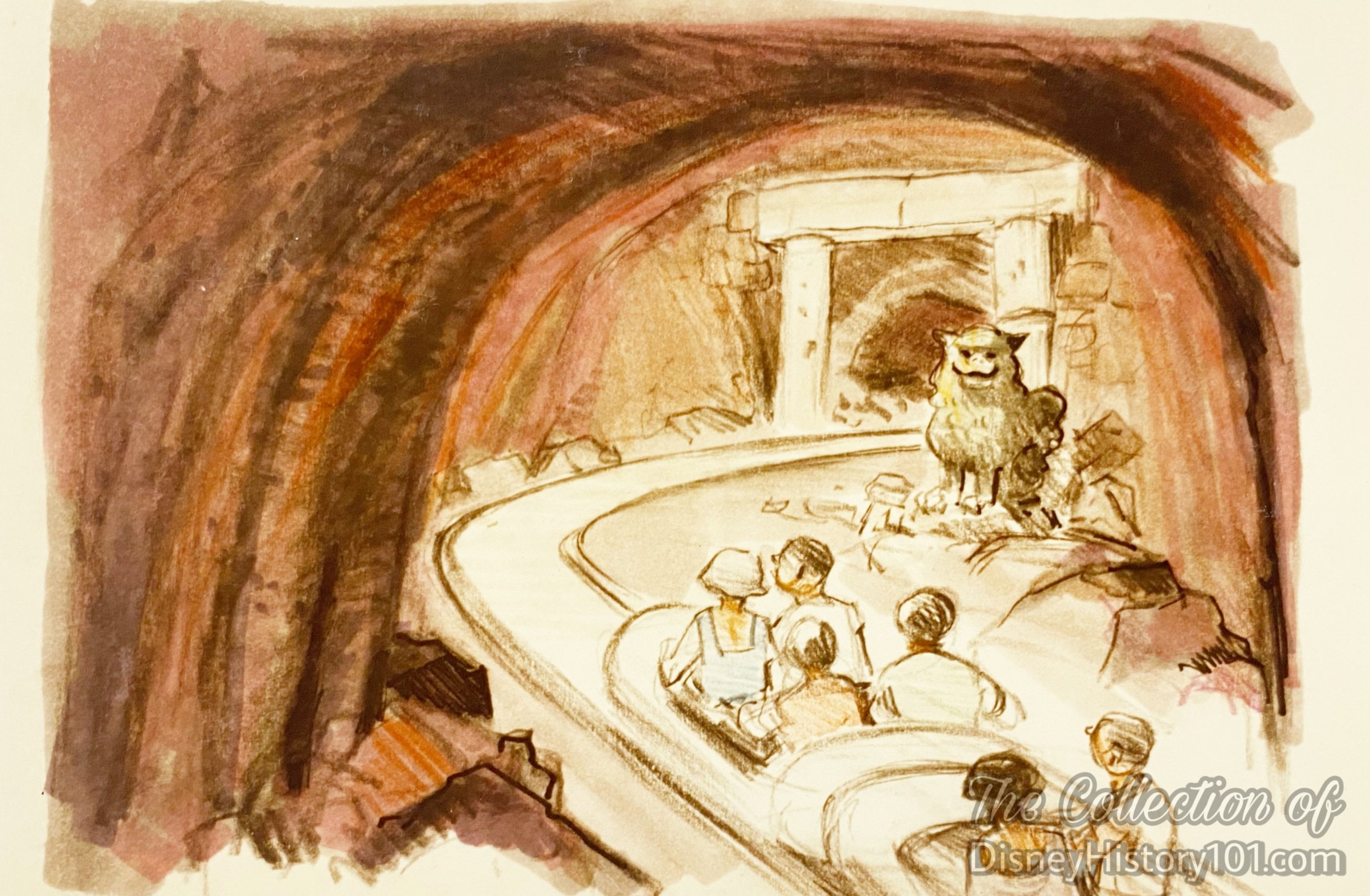
Mount Fuji Rollercoaster storyboard by Clement A. Hall.
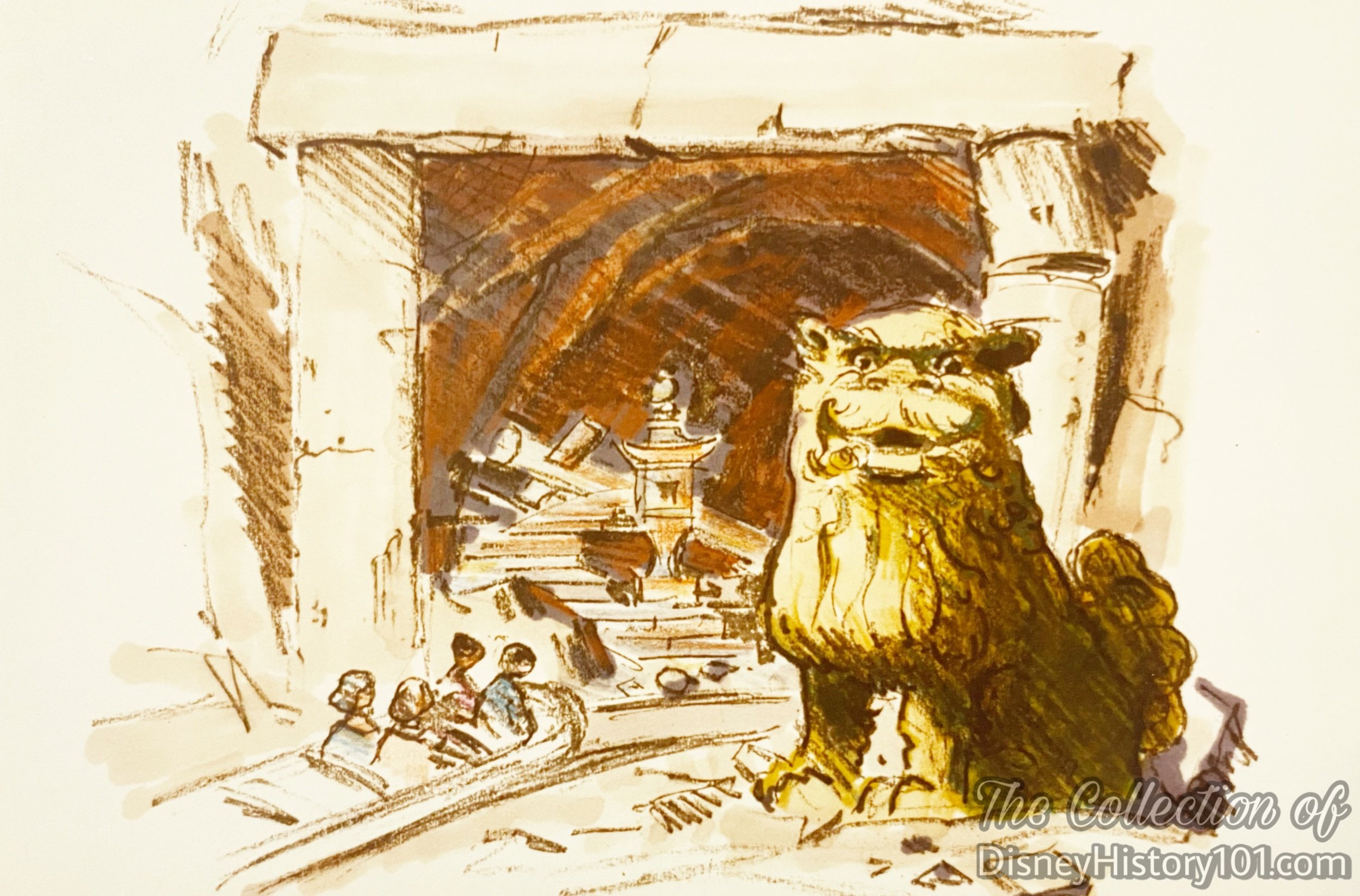
Mount Fuji Rollercoaster storyboard by Clement A. Hall.
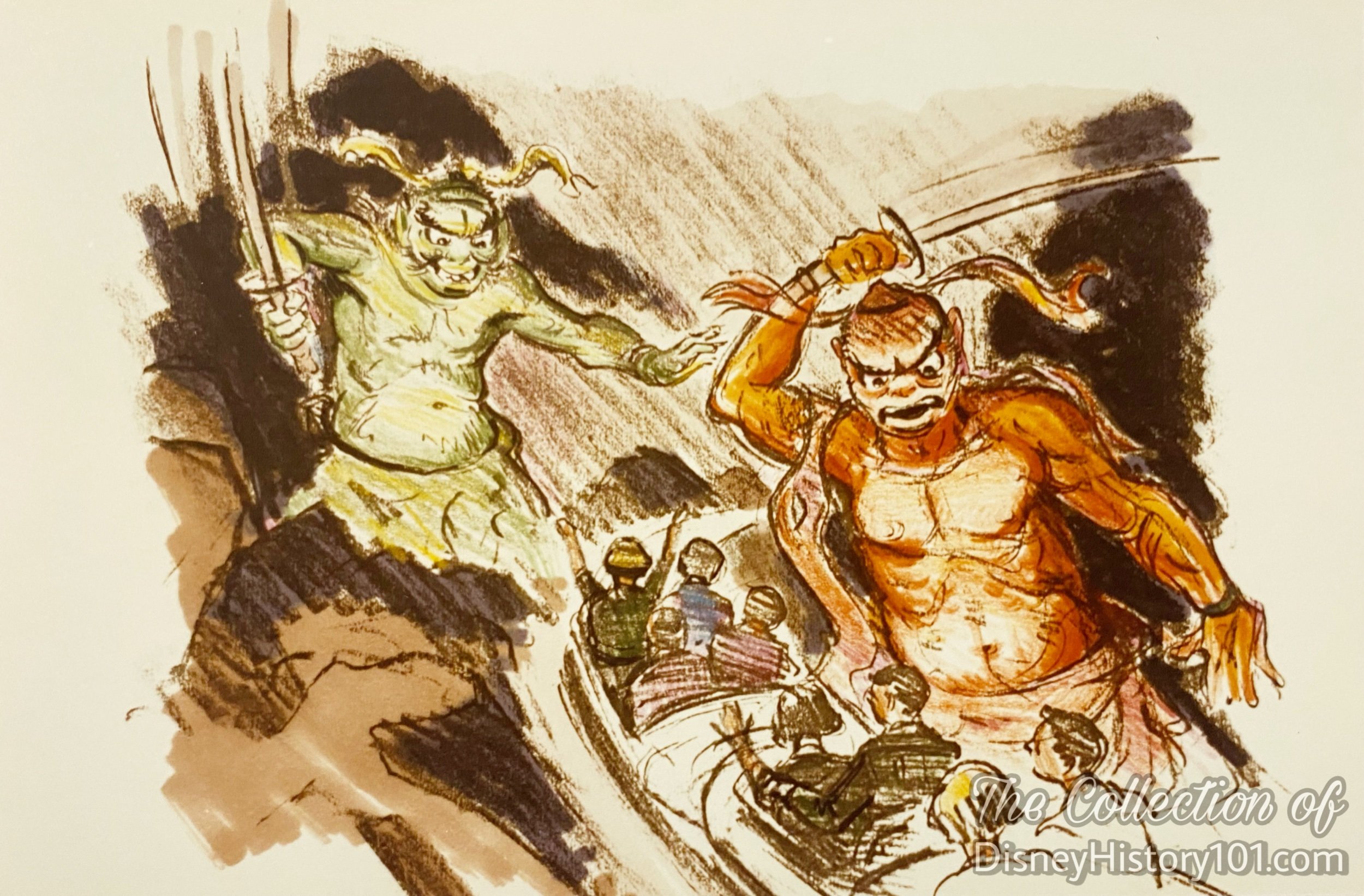
Mount Fuji Rollercoaster storyboard by Clement A. Hall.
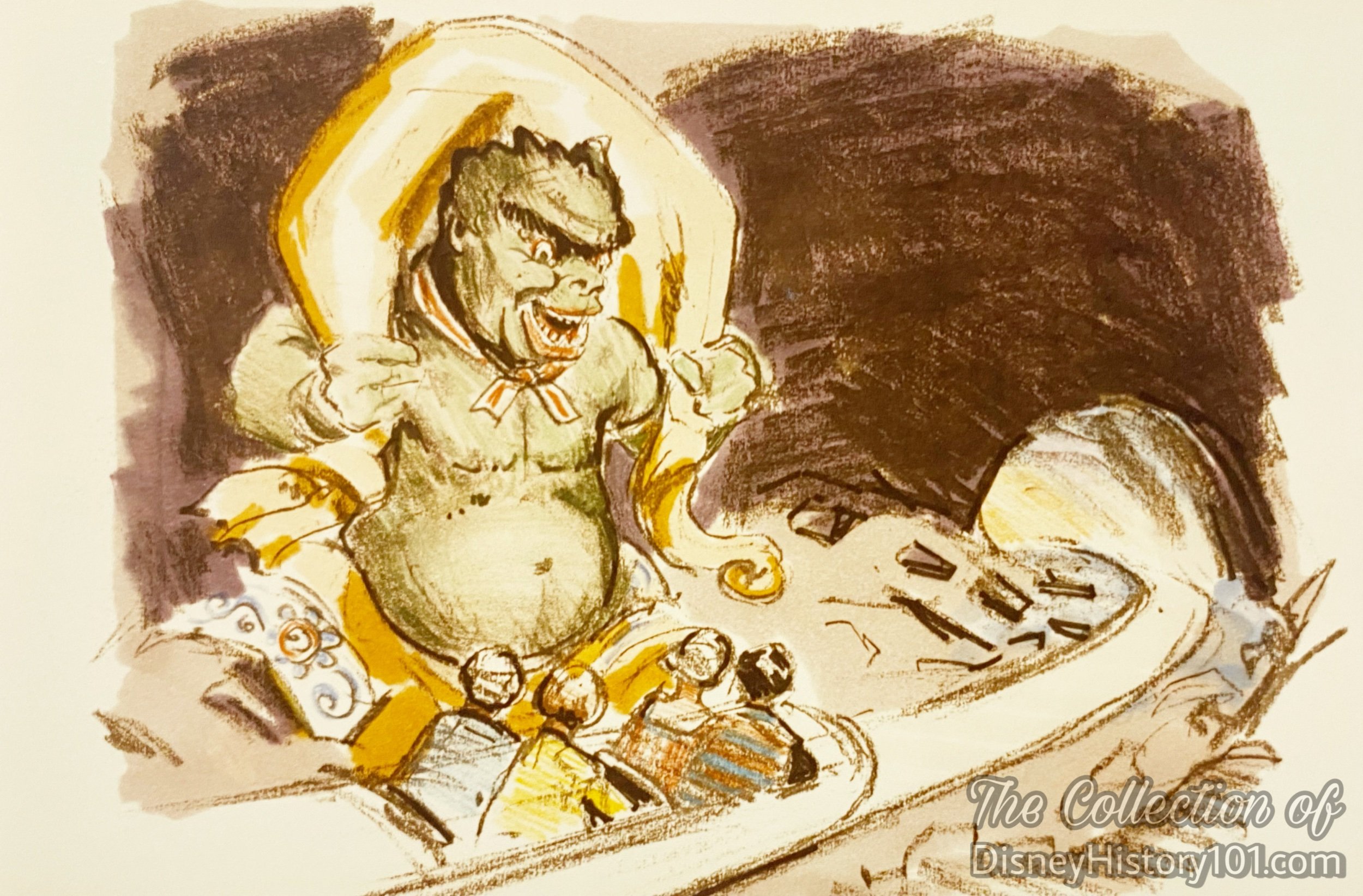
Mount Fuji Rollercoaster storyboard by Clement A. Hall.
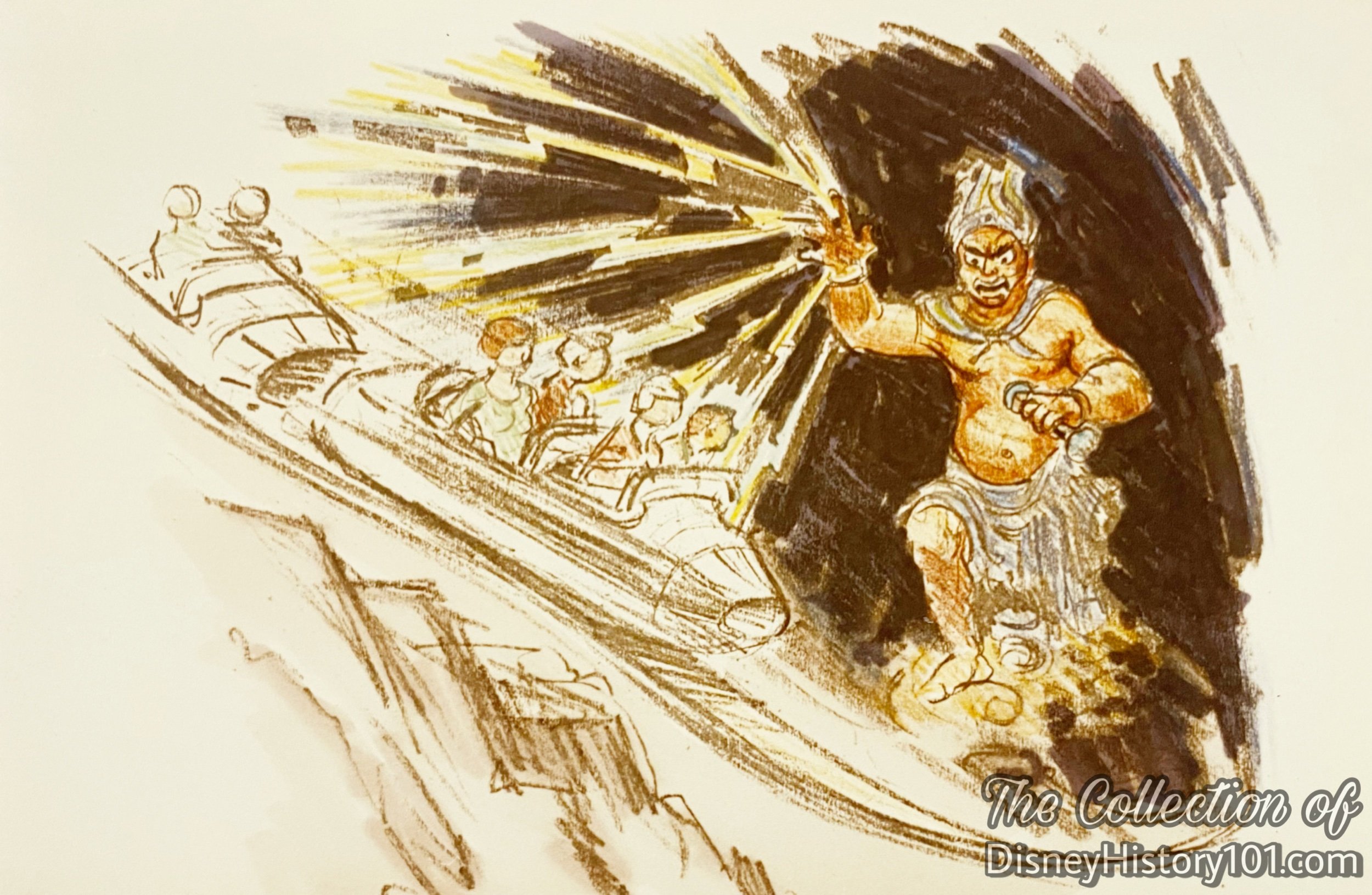
Mount Fuji Rollercoaster storyboard by Clement A. Hall.
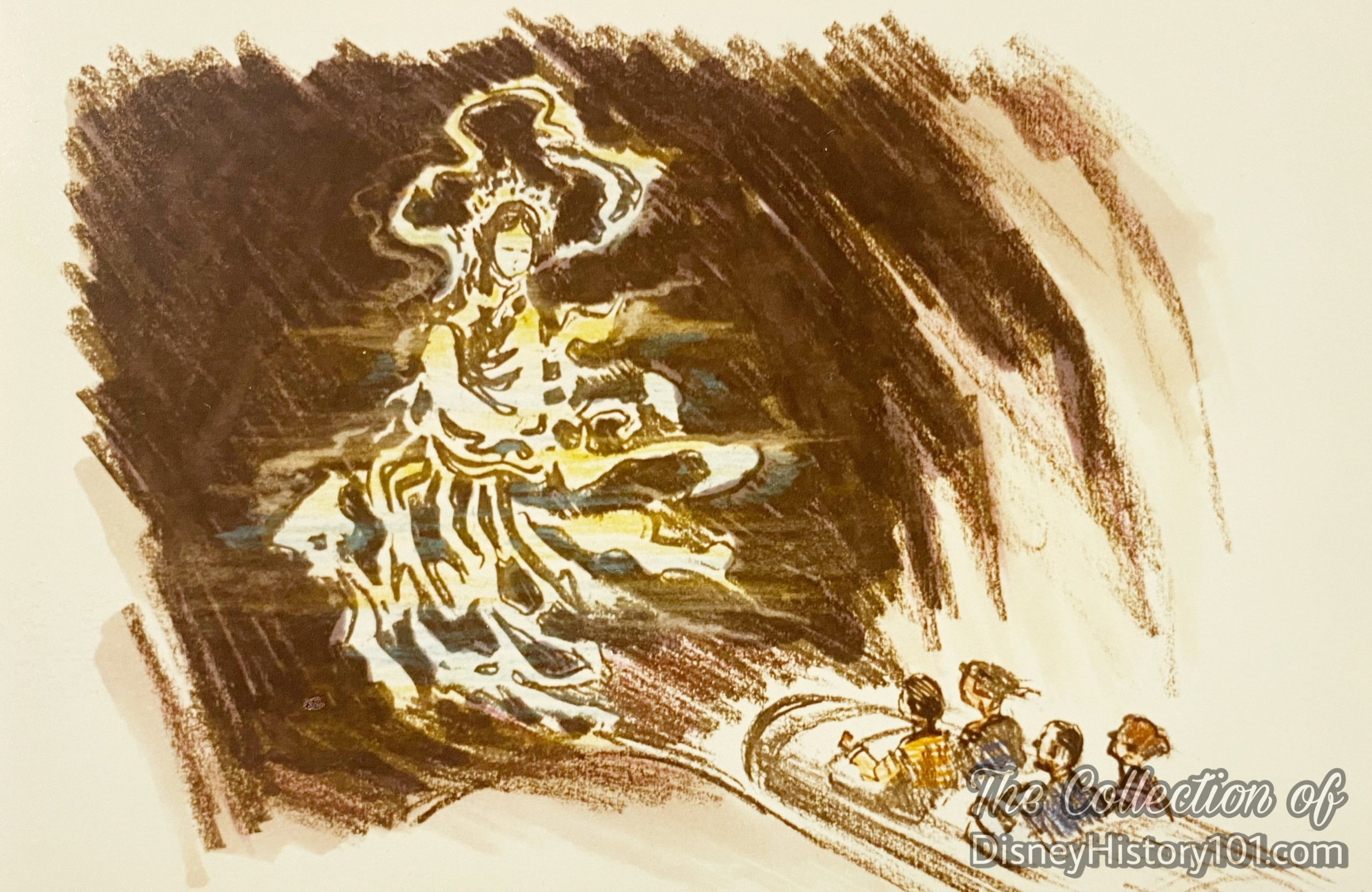
Mount Fuji Rollercoaster storyboard by Clement A. Hall.
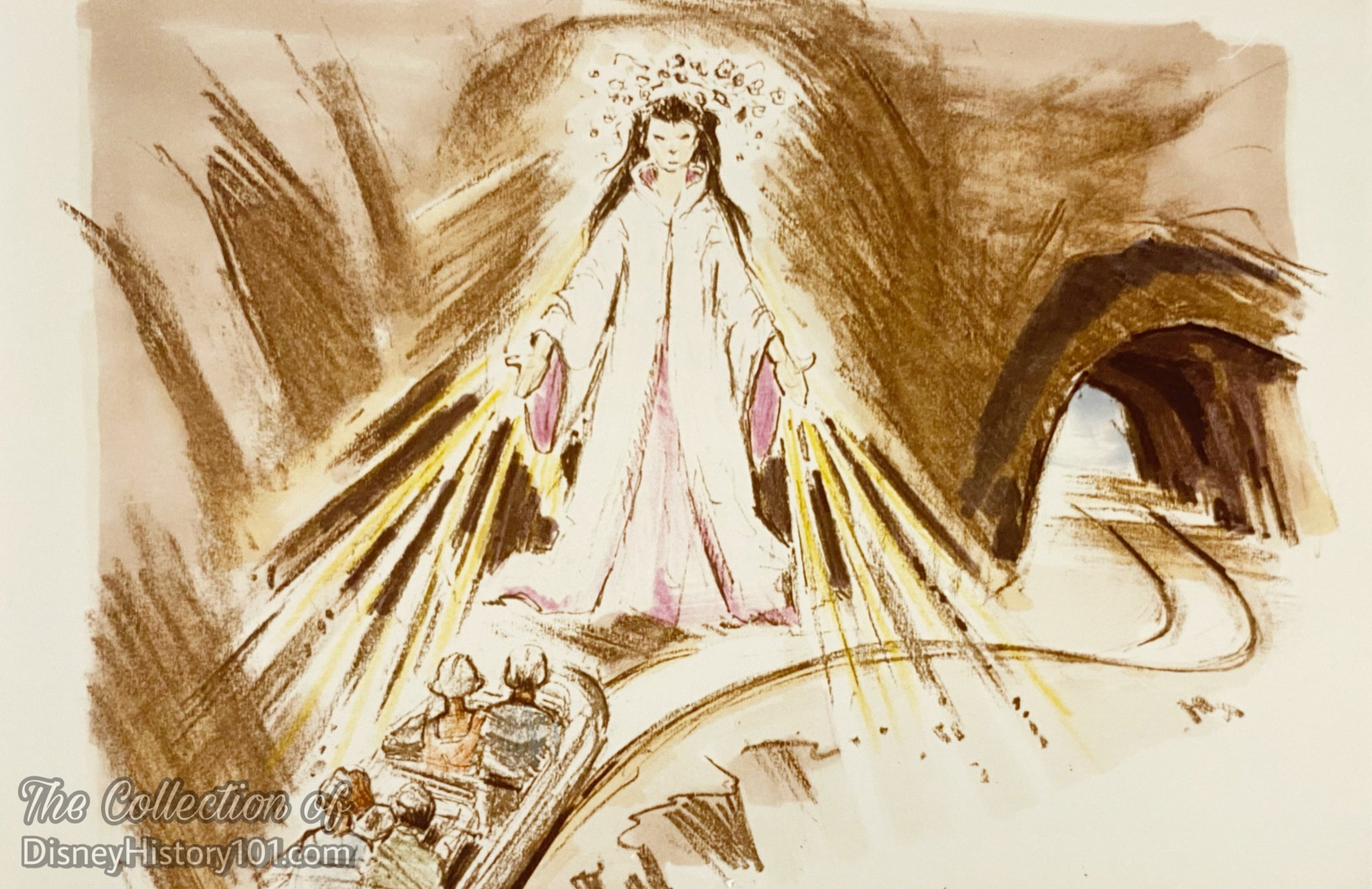
Mount Fuji Rollercoaster storyboard by Clement A. Hall.
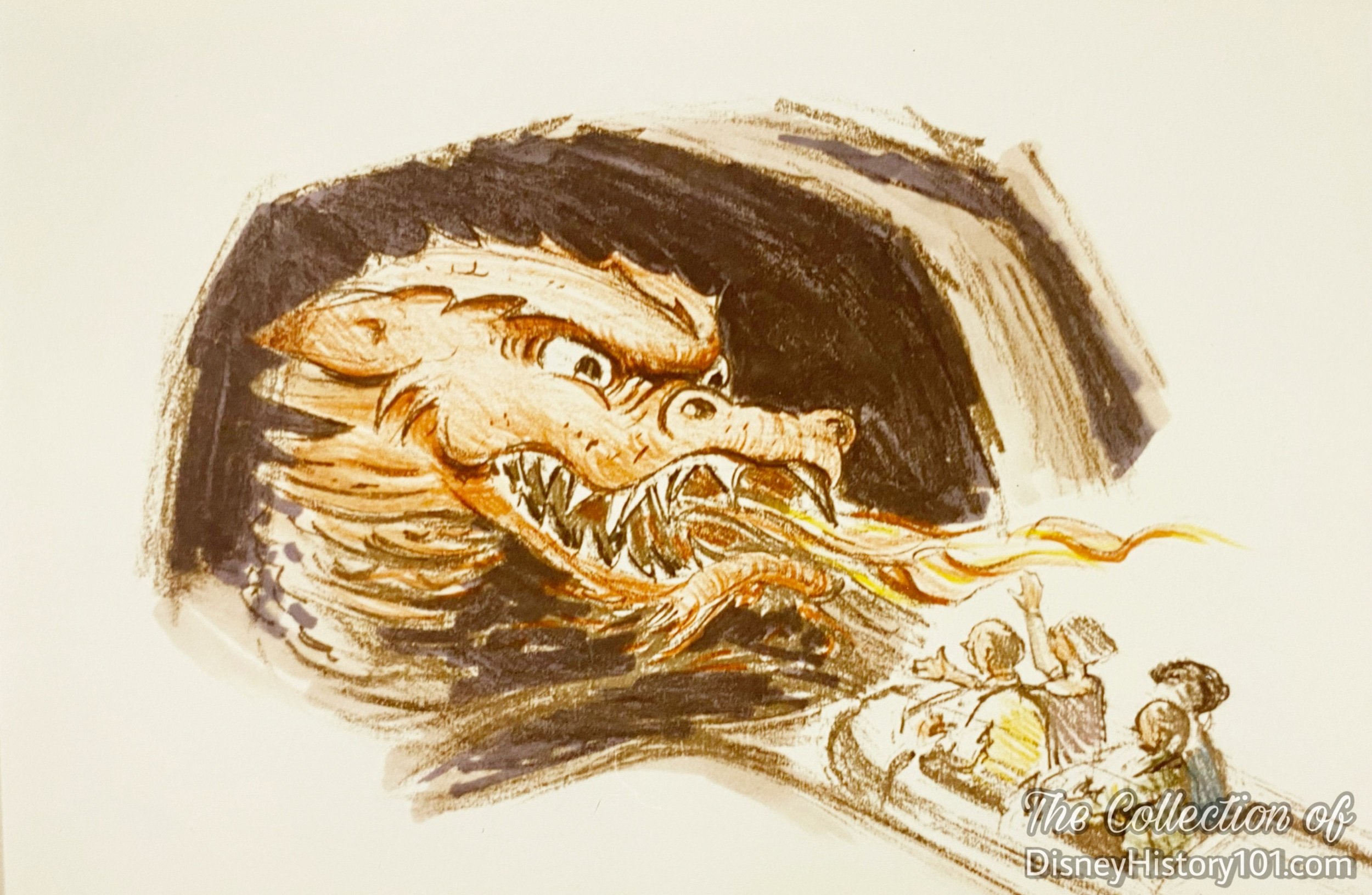
Mount Fuji Rollercoaster storyboard by Clement A. Hall.
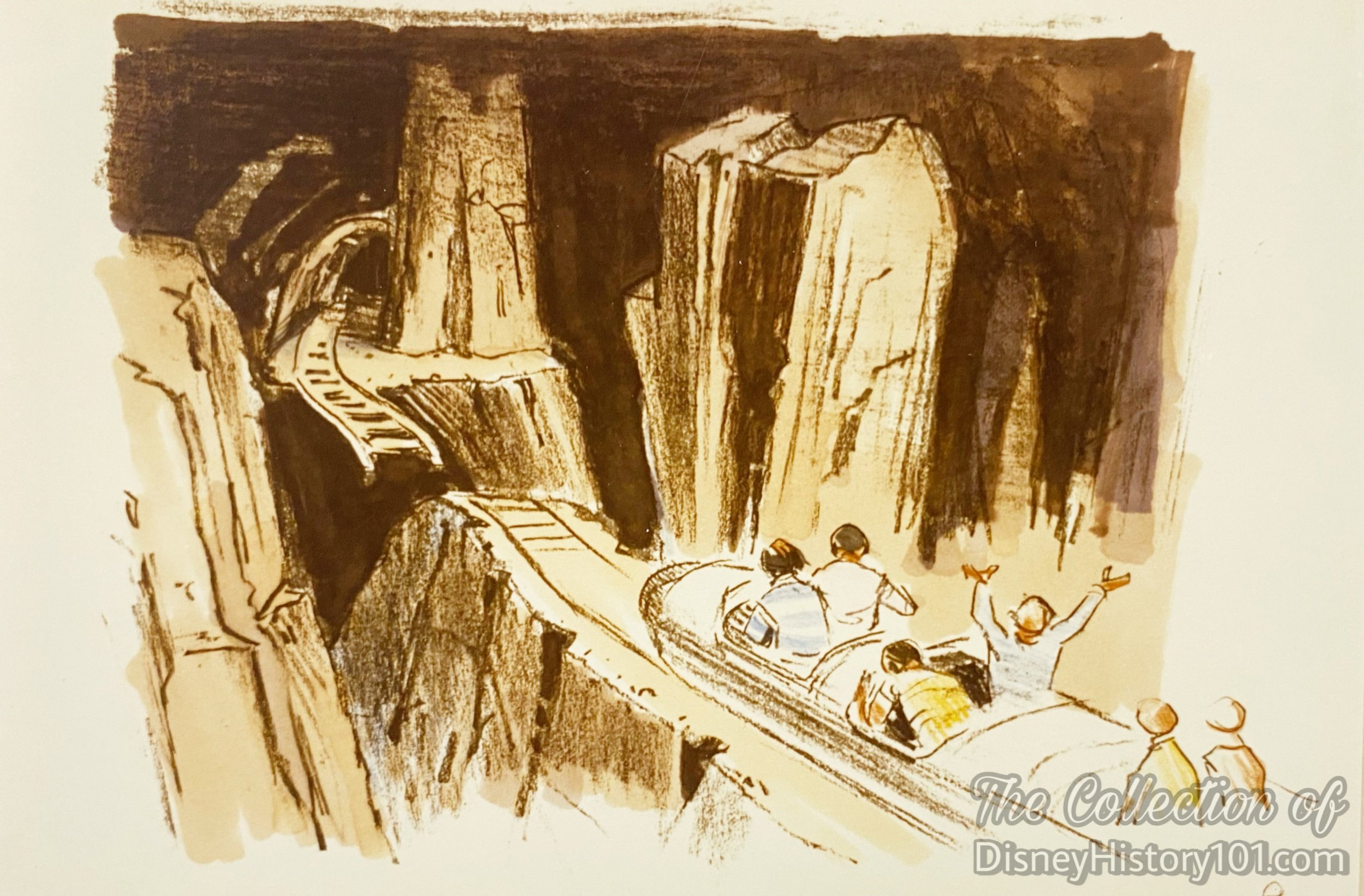
Mount Fuji Rollercoaster storyboard by Clement A. Hall.
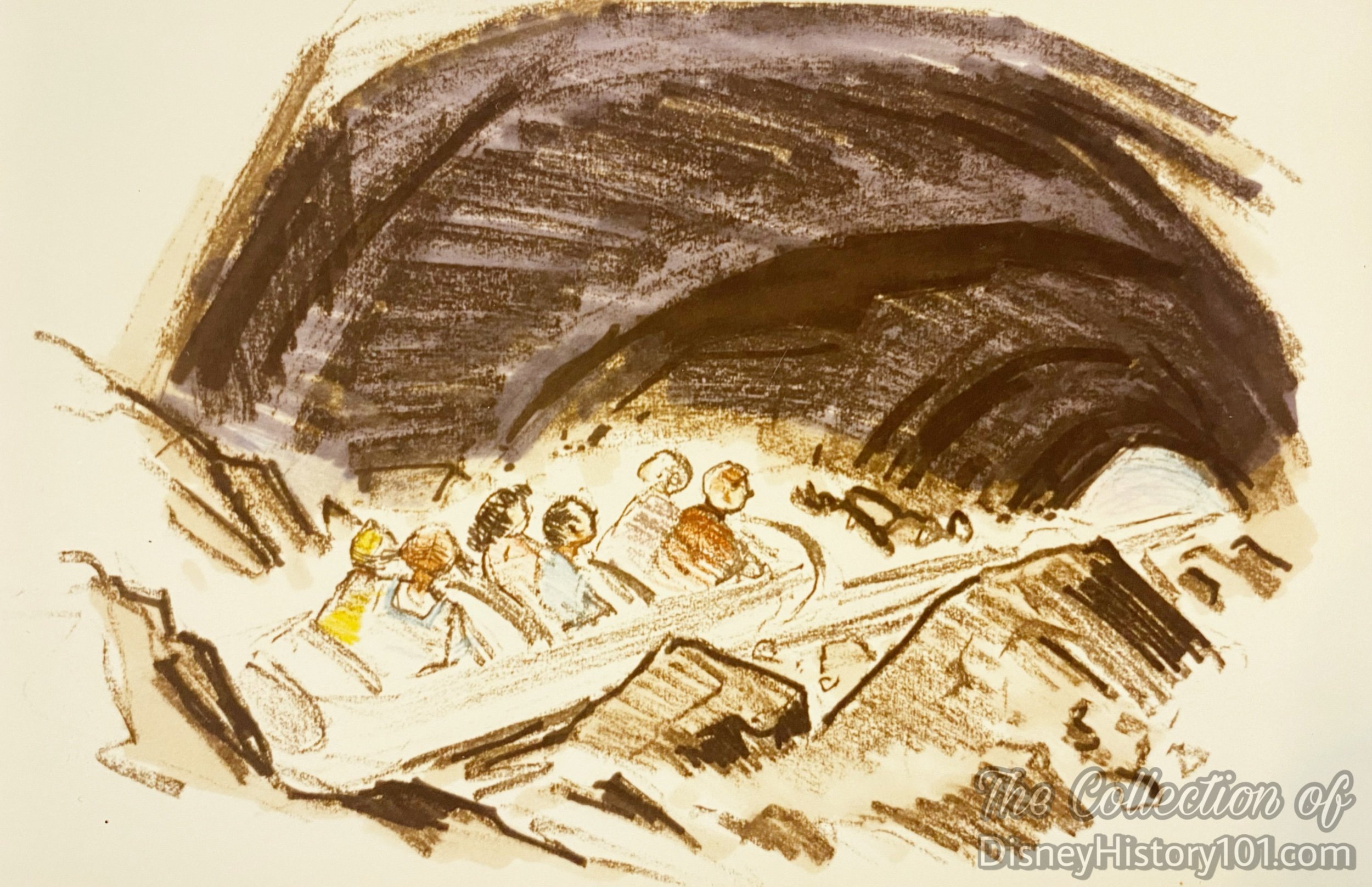
Mount Fuji Rollercoaster storyboard by Clement A. Hall.
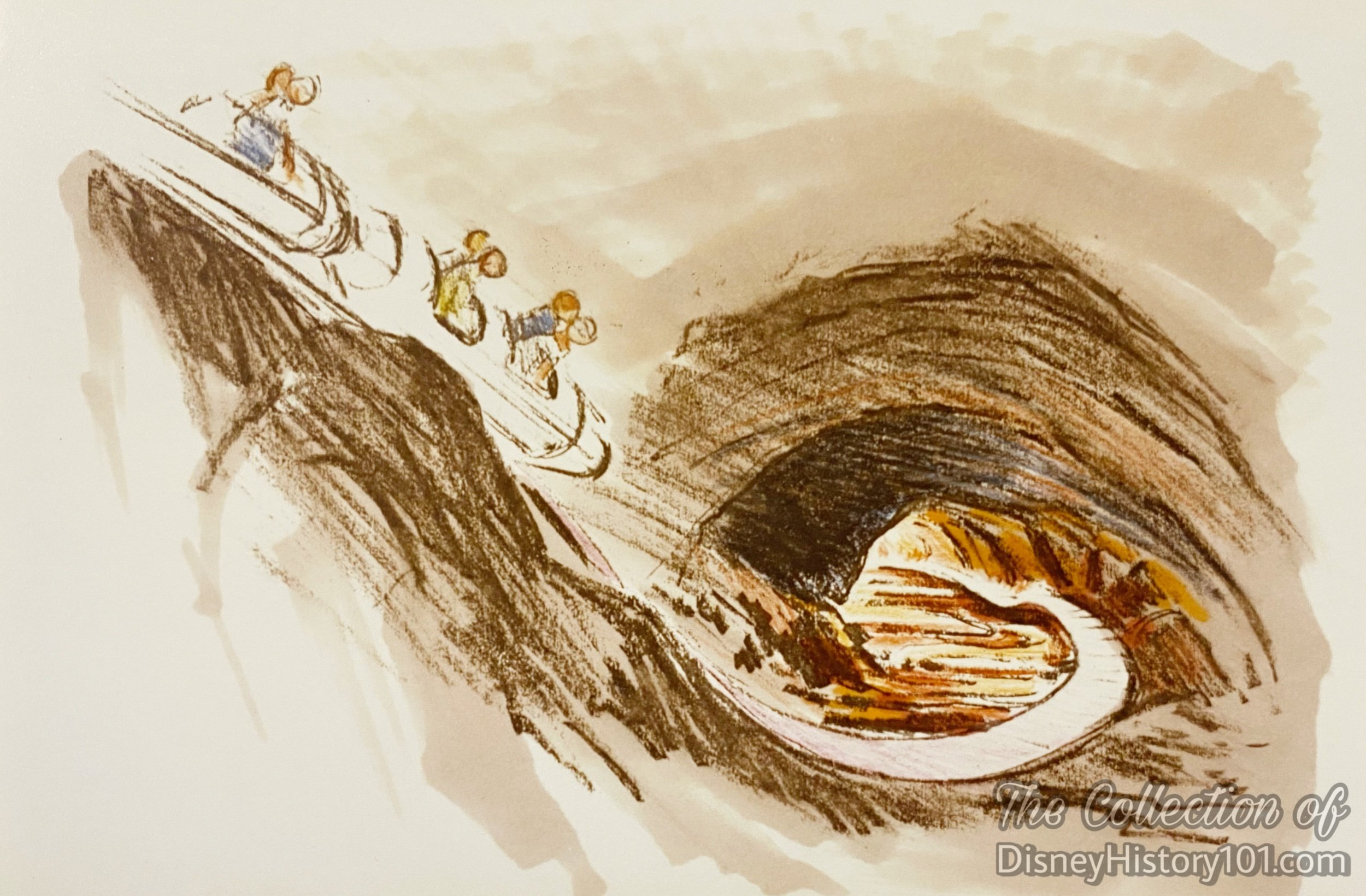
Mount Fuji Rollercoaster storyboard by Clement A. Hall.

Mount Fuji Rollercoaster storyboard by Clement A. Hall.
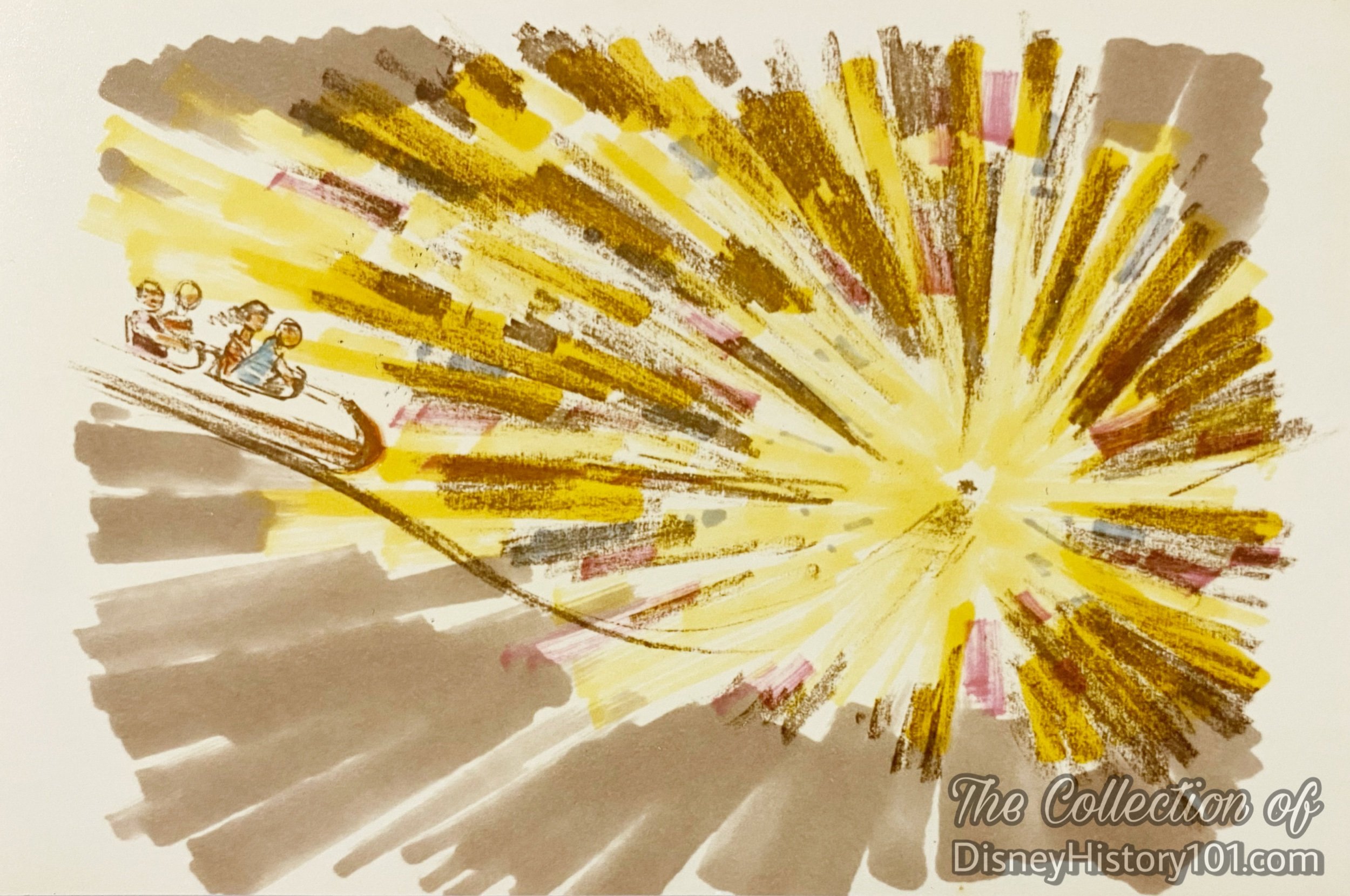
Mount Fuji Rollercoaster storyboard by Clement A. Hall.
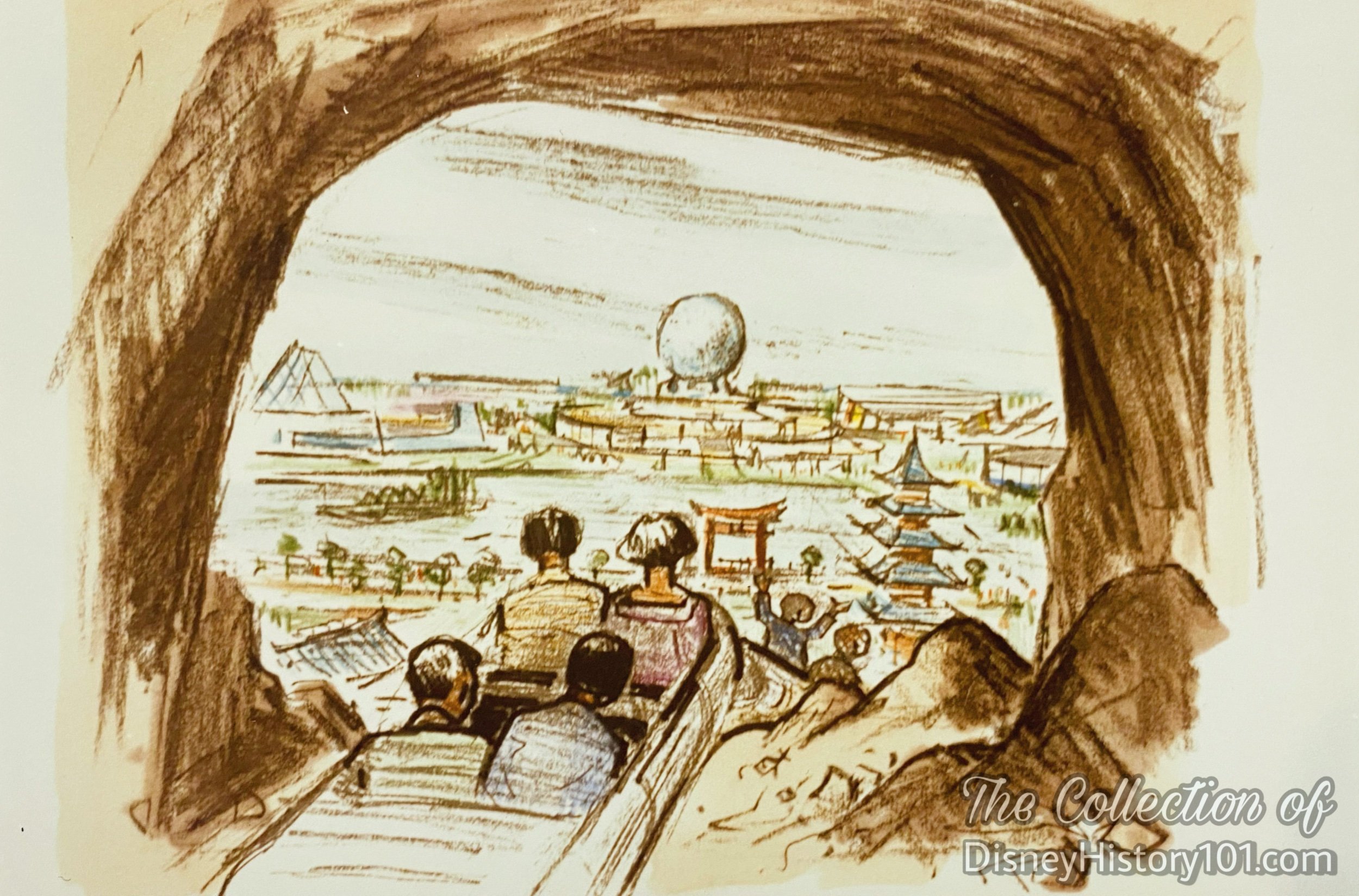
Mount Fuji Rollercoaster storyboard by Clement A. Hall.
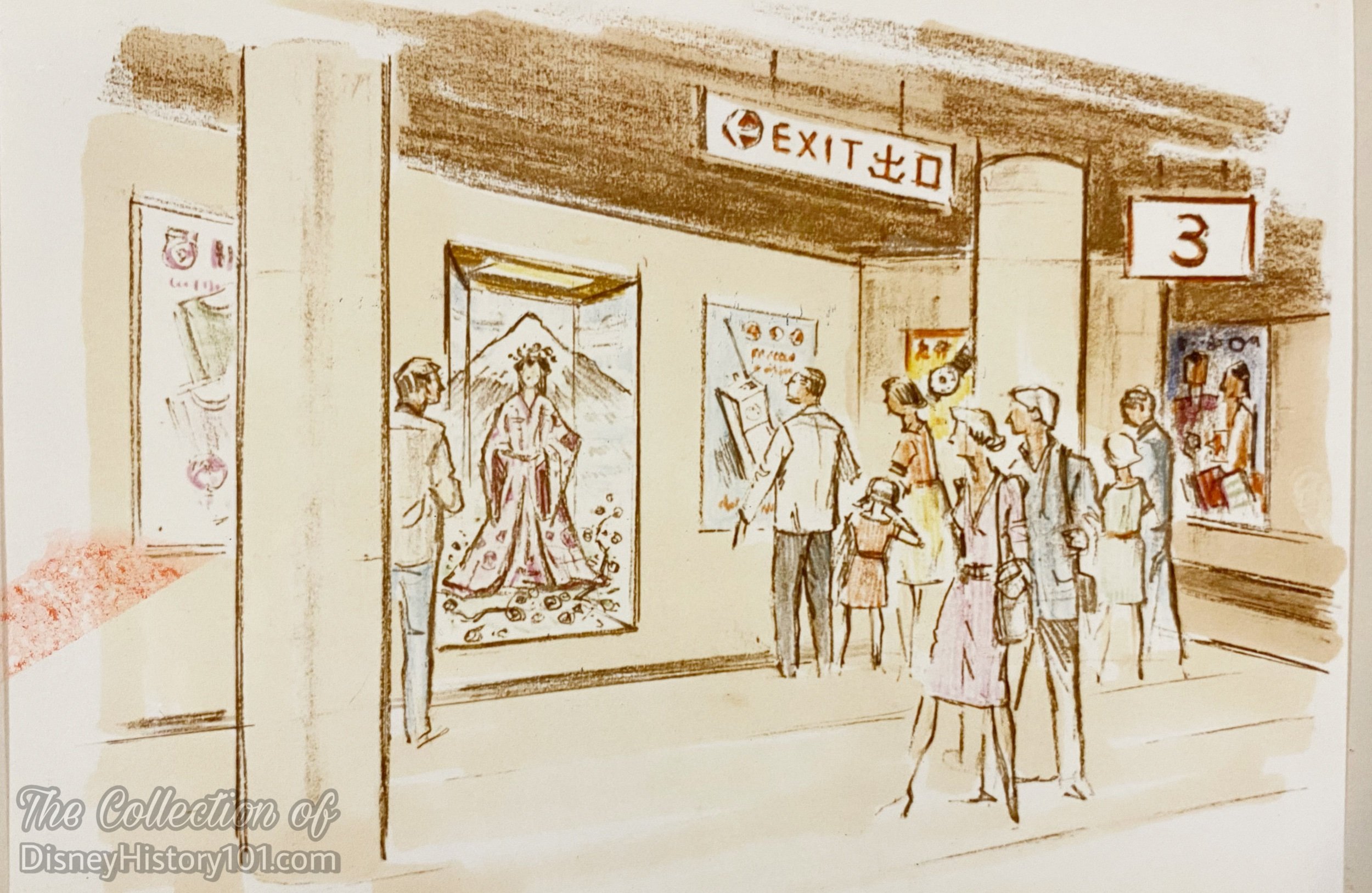
Mount Fuji Rollercoaster storyboard by Clement A. Hall.
After the story was conveyed, the tools of estimating and scheduling begin to assist in defining the projects total scope. It is unclear whether the concept was disapproved or the approved concept was thoroughly evaluated and deemed to costly, risky, and overall technically unfeasible. At some point, this concept was no longer explored, defined or tested for potential story elements.
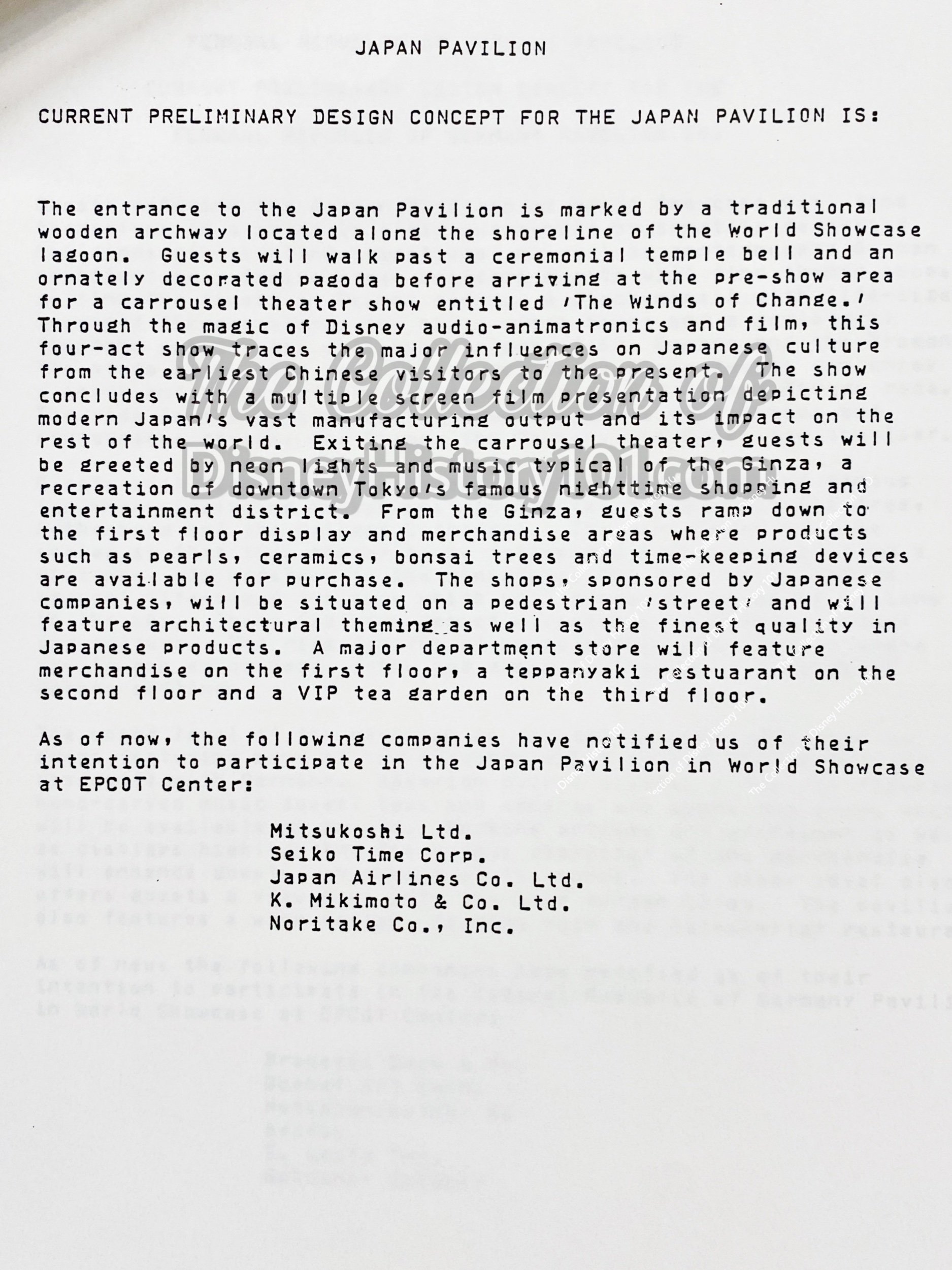
An EPCOT Center Fact Sheet.
By the time the preceding document was prepared, several companies notified developers of their intention to participate in the Japan Pavilion in World Showcase at EPCOT Center, including Mitsukoshi Ltd., Seiko Time Corp., Japan Airlines Co. Ltd., K. Mikimoto & Co. Ltd., and Noritake Co., Inc.
Notably, a motion picture experience was also in the “preliminary design” stage. “Guests will walk past a ceremonial temple bell and an ornately decorated pagoda before arriving at the pre-show area for a carrousel theater show entitled The Winds of Change. Through the mage of Disney audio-animatronics and film, this four-act show traces the major influences on Japanese culture from the earliest Chinese visitors to the present. The show concludes with a multiple screen film presentation depicting modern Japan's vast manufacturing output and its impact on the rest of the world.”
This show was further developed and by October 5, 1982, Walt Disney World EPCOT Center News Brief divulged: “In keeping with Walt's vision of a ‘community of tomorrow that will never be completed,’ Epcot Center's continued growth also will include additions to existing attractions. Additional shows and ride attractions are also being planned for several World Showcase countries; including Germany, the United Kingdom, Italy and Japan. Japan's added attraction, ‘Meet the World,’ is a carousel theater presentation featuring ‘Audio-Animatronics’ characters in settings that depict the nation's history and spirit. The presentation, in which the audience seating area will revolve around the stage, premieres at Epcot Center in October 1983. The show will be similar to a Tokyo Disneyland presentation opening in the spring of 1983.”
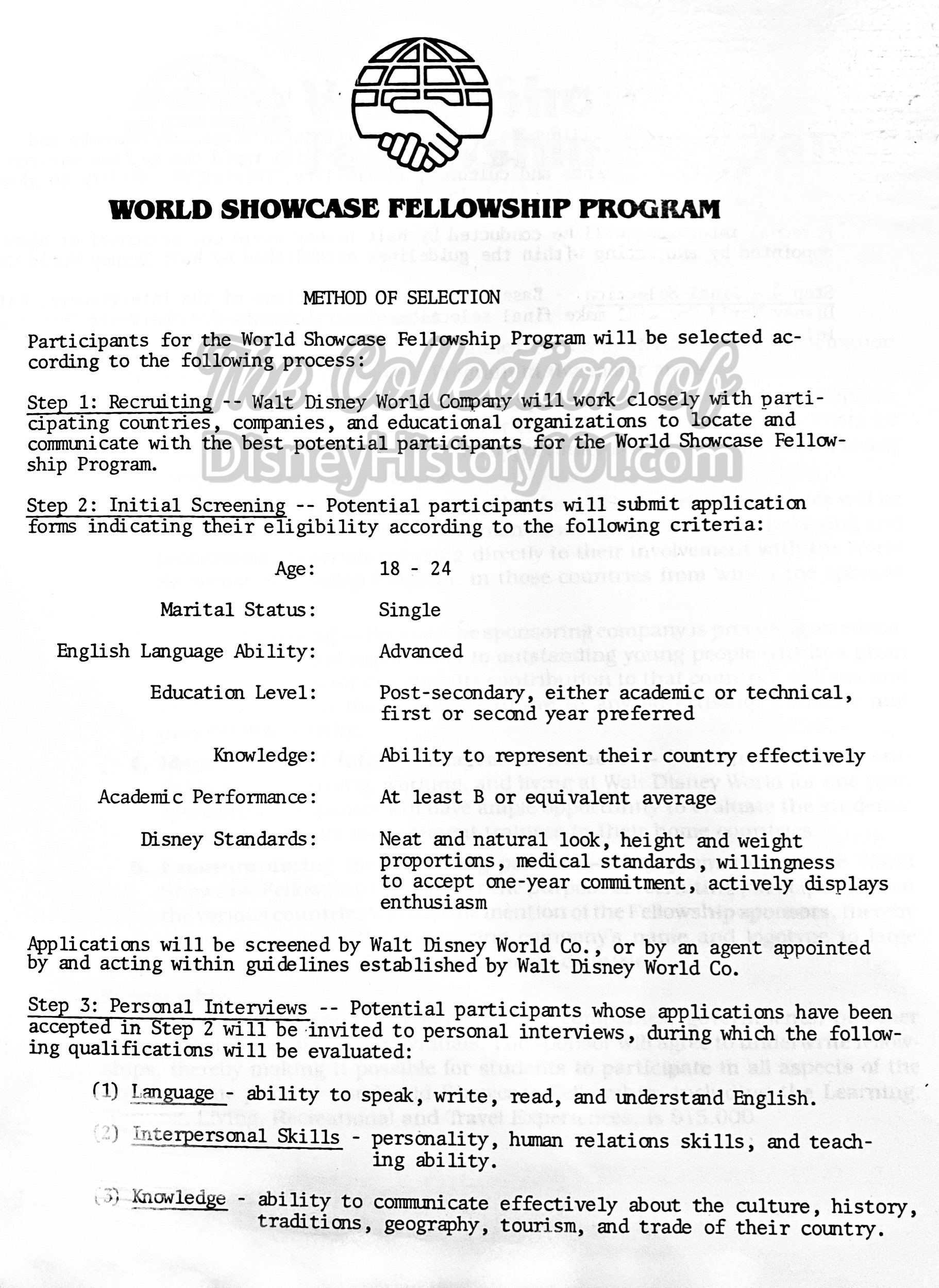
In 1978, Card Walker (at the World Congress of the International Chamber of Commerce) announced: “The World Showcase will be a community of nations, the only permanent international exposition of its kind anywhere, focusing on the culture, traditions, tourism and accomplishments of people around the world… a model for true people-to-people exchange, the World Showcase will offer participating nations an opportunity to send their outstanding young adults to operate the attractions, shops, restaurants and exhibits of their pavilions. And these young people who will work, play and learn together for a period of up to one year will help to generate greater international understanding.” The Epcot World Showcase would truly be “a showcase of the world…and a showcase to the world.” Here ”the nations of the world will stand side by side…” and “meet on a coequal basis to communicate on a ‘people to people’ exchange with the more than 12 million visitors.”
According to one Pre-Opening Day c.1982 orientation instructor’s guide : “The familiar faces of the Disney Characters won’t be there.” Instead, EPCOT Center Cast Members would be referred to as ambassadors of “the spirit of EPCOT Center,” since that very namesake orientation class. Without them, EPCOT Center would just be one magnificent stage. This ambassadorial Cast (in understanding the Epcot dream) would become “the link between the shows and the guest.” According to a souvenir guide, the EPCOT Center Hosts and Hostesses were ambassadors “of happiness, hope, optimism and goodwill.” According to one prospectus: “In this true people-to-people concept, sponsoring nations will be invited to send their outstanding young adults to operate the attractions, shops, restaurants and exhibits of their pavilion.” Proving this were the Odori Festival of Japan and authentic Japanese Candy Man, who created “herons and unicorns from his treasure trove of rice toffee,” and helped open the World Showcase on October 1, 1982. Through the World Showcase Festival Program, Epcot Center guests were entertained by performers from all over the world. These “cultural ambassadors” included entertainers representing Greece, Africa, Cambodia, the Dominican Republic, Yugoslavia, Israel and Norway.
The international guests would soon find that the Japan World Showcase Cast Members were knowledgeable and prepared to answer questions about the pavilion and the country itself, and would even provide foreign language assistance, and guest literature in many languages. As early as June of 1980, it was divulged: “Young people will be brought over from their native country on a combination work and education program. Courses with college credit will be conducted at Walt Disney World University.” [“Orlando-Land!” published for June of 1980]

“We Did It” by Charles Boyer.
“Dedication”
Walt Disney said: “Everything in EPCOT will be dedicated to the people who live here and work here... and to those who come here from around the world to visit our living showcase.” On October 20, 1982, individual dedication ceremonies for the month of October drew to a close with a small ceremony in Japan.
“Odori Festival of Japan Comes to the International Festival of Festivals”
Epcot Center World Showcase Festival Program Reception celebrated a unique Community of Nations on Saturday, October 23, 1982. The grand finale the evening's festivities, Le Carna-val de Lumière proudly proclaimed the Official Opening with the presentation of the world premiere of its International Festival of Festivals, a celebration of celebrations. Epcot Center's nighttime extravaganza of illuminations, water, sound, and fire was viewed from Showcase Plaza. This show, was to be an ongoing feature of World Showcase, using the new medium of computerized “magic-lantern” illumination to transport audiences to other times and cultures, inviting their imagination to engage in moments of festivity around the world.
Every society rejoices in what it feels most deeply about, inventing vivid rituals to celebrate important events in the cycle of life. Throughout the ages, the family of man has marked these joyous occasions with impressive public feasts and fêtes, dancing and music, parades and processions, pageants and exhibitions, spectacles and fireworks. These celebrations march from the past, through our lives today, and into the heritage of future generations. Through kaleidoscopic tapestries of light and sound, Le Carnaval de Lumière took audiences across the entire world and through twenty centuries to experience the rich diversity - and the commonality - of human celebration.
The roster of international entertainers is still impressive. The following groups were featured: All-American College Marching Band, West Point Glee Club, the Royal Irish Rangers (the last Irish infantry regiment in the British Army), Koleda (a highly professional group of dancers and musicians from Valenje, Yugoslavia), the Folkloric Dancers of Madrid (Spain), the Folklore Group Fribourg (Switzerland), Leyte Kalipayan Dance Company (Philippines), Areyto (The National Folkloric Ballet of Puerto Rico), Kelaa M'Gouna and Imintanout Folk Dancers and Musicians (Morocco), Ballet Folklórico Nacional de Mexico, The Boys Band of Meersburg (Germany), National Korean Folk Dance Company, Historic Standard Bearers of the District of Cori (Italy), "Lous Pastous Seignossais" Folk Ensemble (France), Finnish Folk Dance and Music Ensemble, "Katrilli" (Finland), Tivoli Boys Guard Band (Denmark), The National Folklore Troupe of Egypt, Universidad del Valle Folk Dance Group (Columbia), Lucnica (Czechoslovakia), The Shanghai City Song and Dance Ensemble (China), the Royal Canadian Mounted Police Musical Ride, The Royal Barbados Police Band, The Hunting Horns of Hoffalize and The Hunting Horns of St. Hubert (Belgium), COSAAN African Dance Company, and Odori Festival of Japan.
The 1982 program described Odori Festival of Japan as “one of the Orient's most dynamic dance exports, the Odori Festival of Japan presents a diversified repertory of ancient peasant and religious dances gleaned from the many regions of Japan. One of the most evident characteristics of Japanese folk dancing is its very complicated yet highly refined technique, which elevates this entertainment to a high art form. Along with the graceful temple dances and dances that celebrate the planting of rice, there are the haunting ‘Devil Sword Dance,’ the ‘Wild Horse Dance,’ and the ‘Bo Odori,’ a martial arts dance, among many others. The indigenous costumes and exotic instruments create an aura as colorful as the history of Japan. The group is presented under the auspices of Tokyo's International Artists Center and was organized in 1966 to ‘establish artistic contact with all countries and try to foster cultural exchange beyond ideologies.’”
The grand finale of Sunday's Grand Opening Dedication Ceremony will be a 1 1/2 minute fireworks spectacular -- “The Colors of the World” immediately followed by a flyover salute by the Florida Air National Guard.
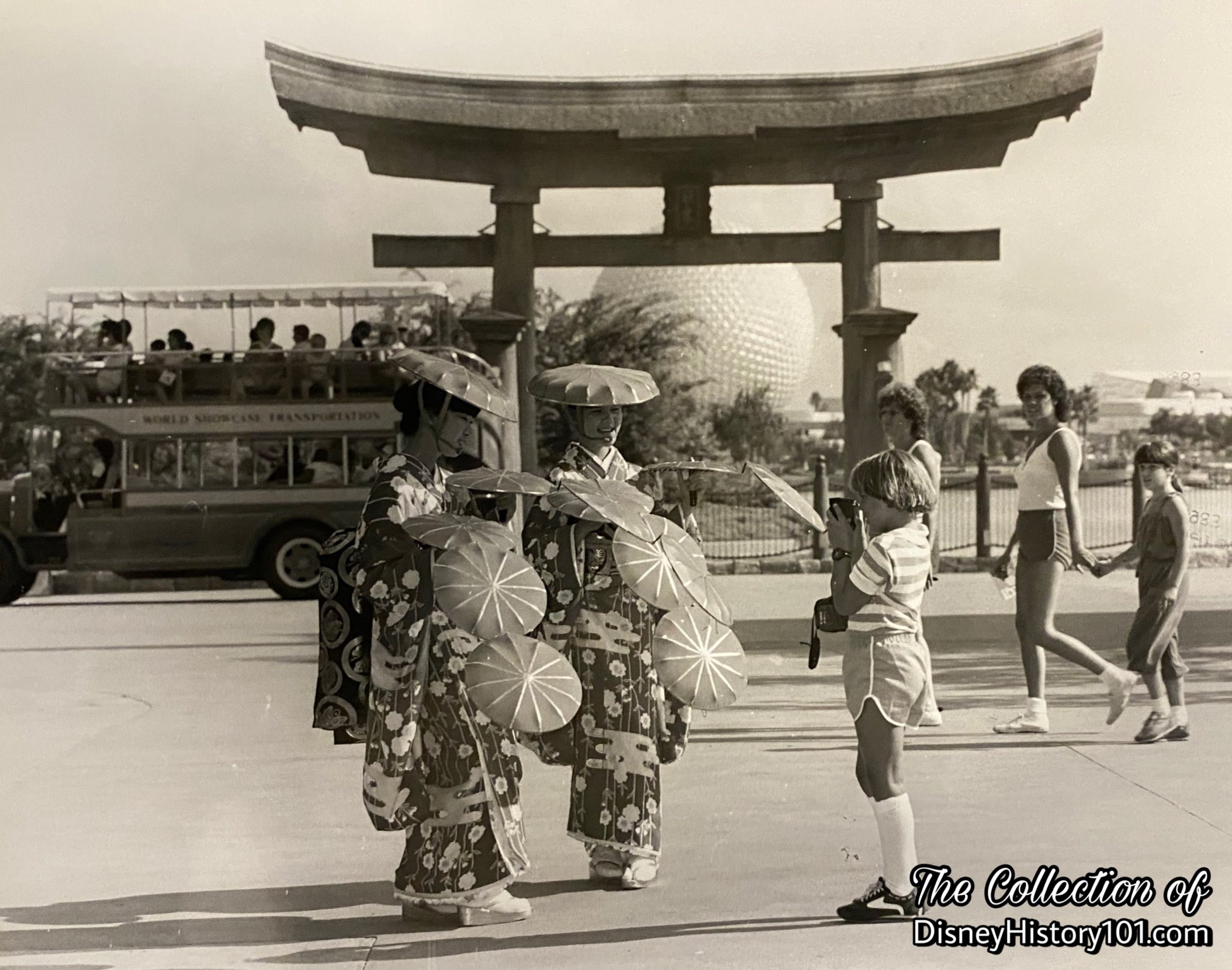
Copyright WALT DISNEY PRODUCTIONS, 1983.

Not far from the American Adventure, the elegance of old Japan is reborn at the Epcot Center World Showcase.
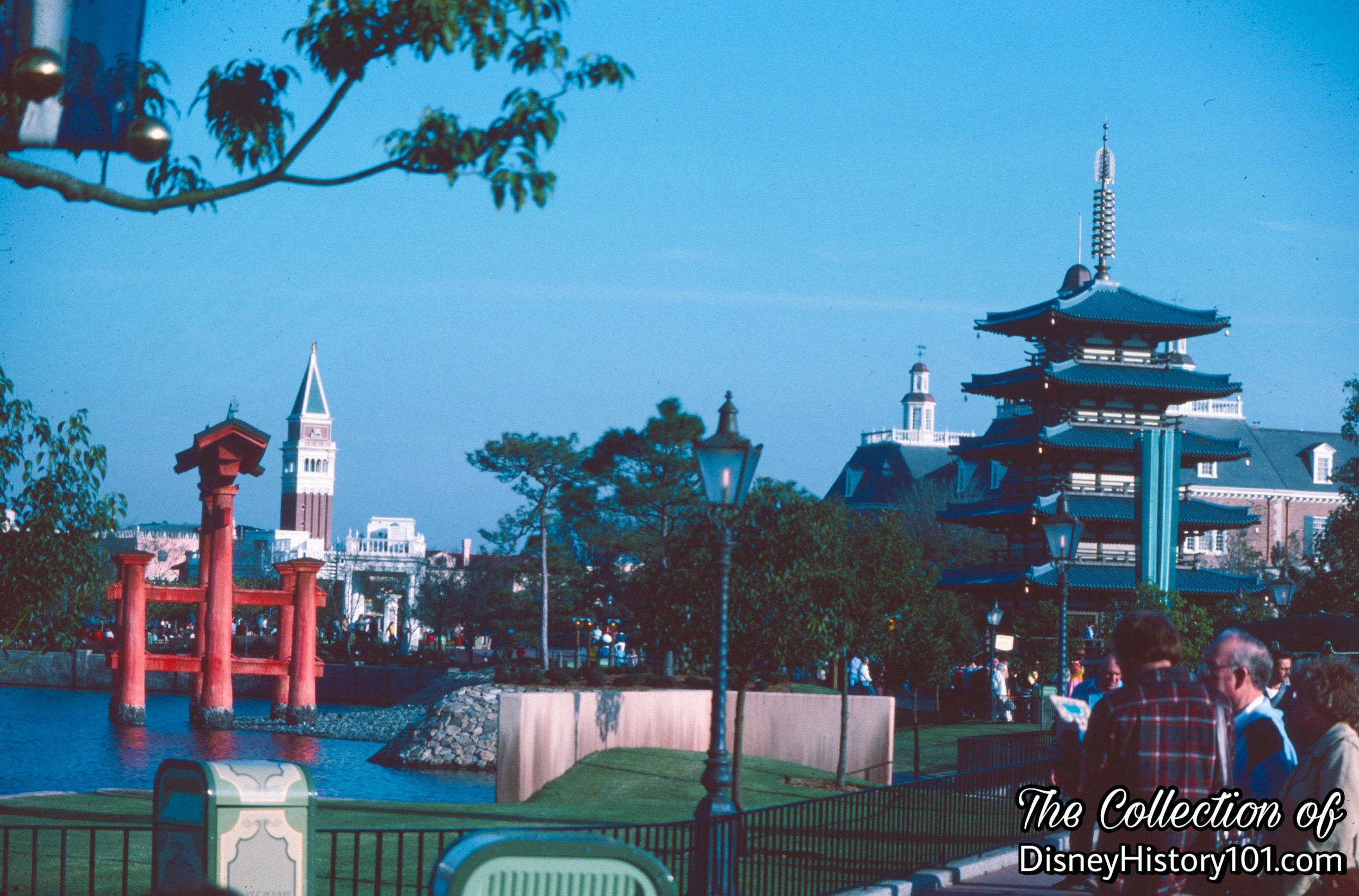
The replica of the traditional Good Luck Torii at Itsukushima Shrine on the World Showcase Lagoon (left) and the Goju No To Pagoda (right).
Coming toward Japan on the World Showcase Lagoon, we pass a flaming red Tori. “Resembling a giant calligraphic character, the Torii (or "Gate of Honor") is a popular good luck symbol, wishing us well as we begin our Japan experience.”
According to one “Walt Disney World Epcot Center - Japan” prospectus prepared by Walt Disney Productions, c.1982: “Lanterns, which we may take for granted as simple ornaments, also have special significance, determined by their size and design. The ones here, like the giant Torii in the lagoon, mean ‘good luck.’”

The five-story Goju No To Pagoda.
Pagodas are religious shrines and memorial buildings, common throughout Burma, China, India, Thailand and Japan. Other parks and gardens like Tivoli Gardens included pagoda attractions. What sets the Goju No To apart from others? The 83-foot-tall pagoda has a sorin with nine rings and a water flame clearly outlined at its tip. This Treasure (surrounded by “formal bonsai gardens carved with paths, a meandering stream and waterfall”), is modeled after the famous eighth century Horyuji Temple in Nara, Japan.
According to one “Walt Disney World Epcot Center - Japan” prospectus prepared by Walt Disney Productions, c.1982: “On the shore beyond the Torii stands the majestic Goju No To, a five story pagoda, nearly 83 feet tall. Each of the five stories of this graceful structure represents one of the elements which, according to Buddhist teachings, produced everything in the universe. The first level represents the earth, the second water, the third fire, the fourth wind, and, finally, the sky. If we listen as the breeze blows, we’ll hear the wind chimes from the sorin, the spire reaching from the roof.”
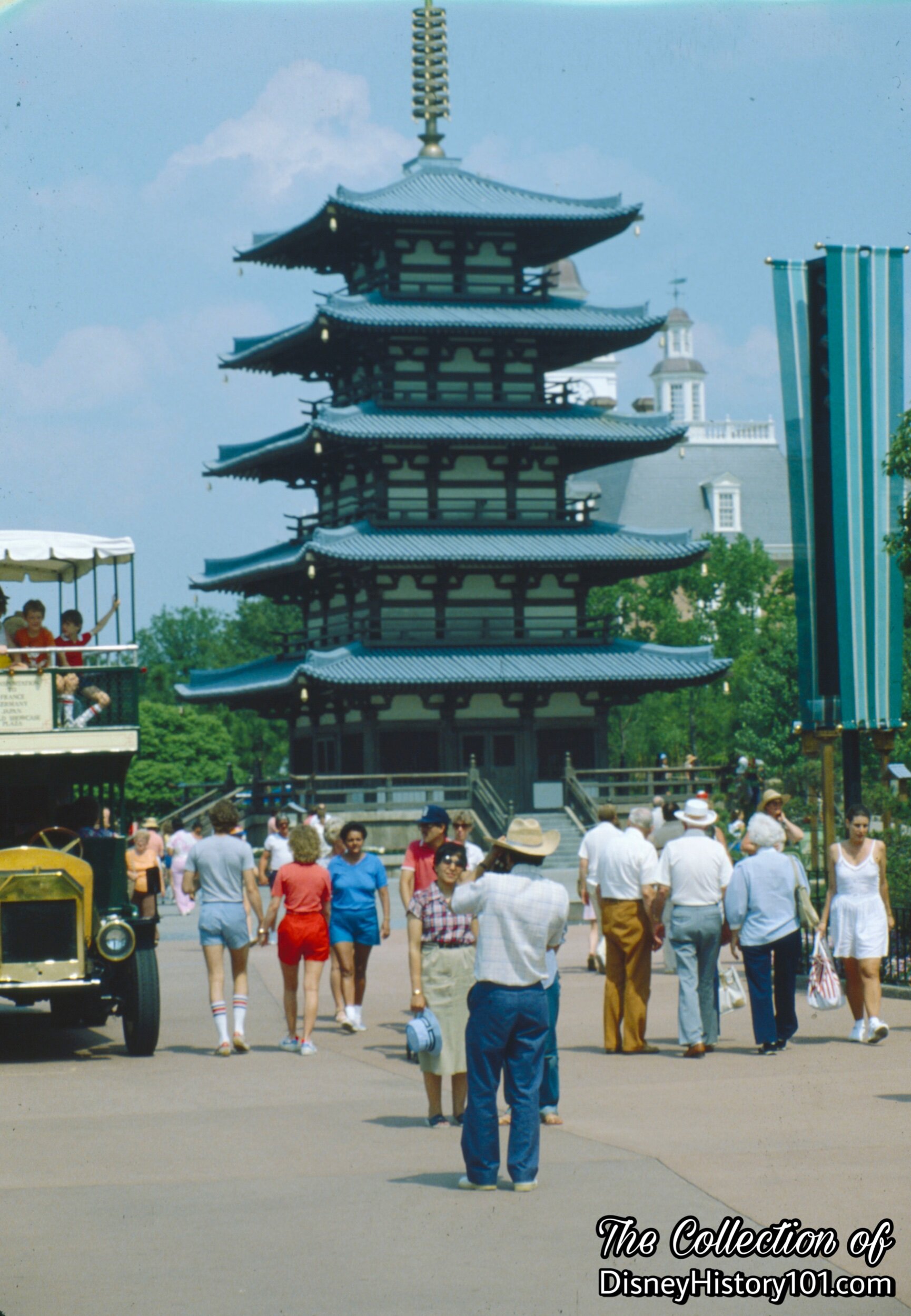
The Goju No To Pagoda.
Nearby, the Kodak Photo Spot indicated a prime photo-taking location.
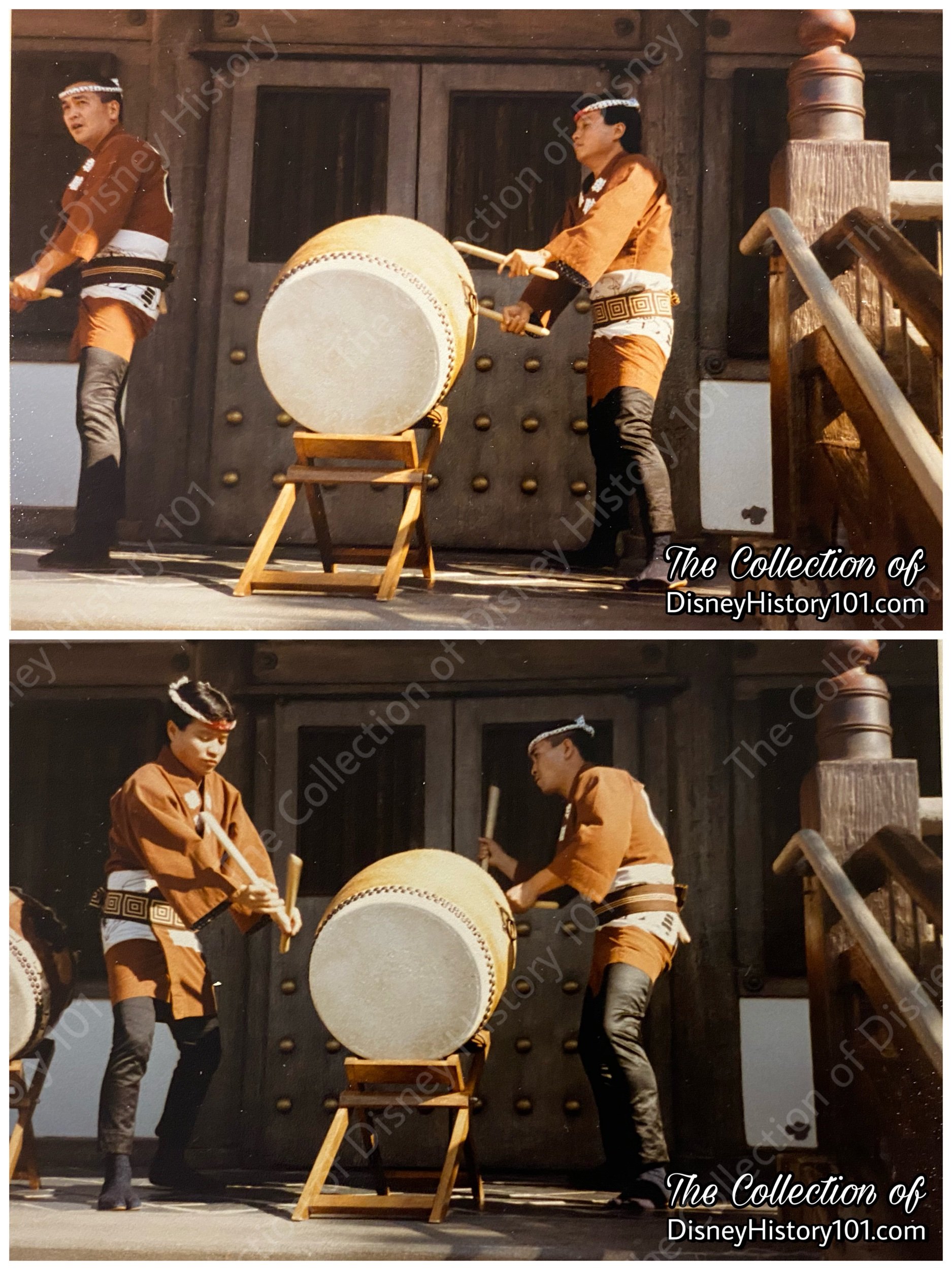
A Taiko demonstration at the Goju No To Pagoda.
Since 1983, a number of groups performed taiko including Kanto Abare Daiko (1983-1993). Then there the Staccato rhythms of traditional Japanese music from One World Taiko (1993) featuring Gary Tsujimoto, Nancy Ozaki, and Matsuriza. In the present, Matsuriza are the sole taiko storytellers remaining to perform.
In addition to taiko, there were other performers. During 1988, Fantasy Dreammaker (a Japanese artist creates surprising entertainment) and Yume Shabai performed in Japan.
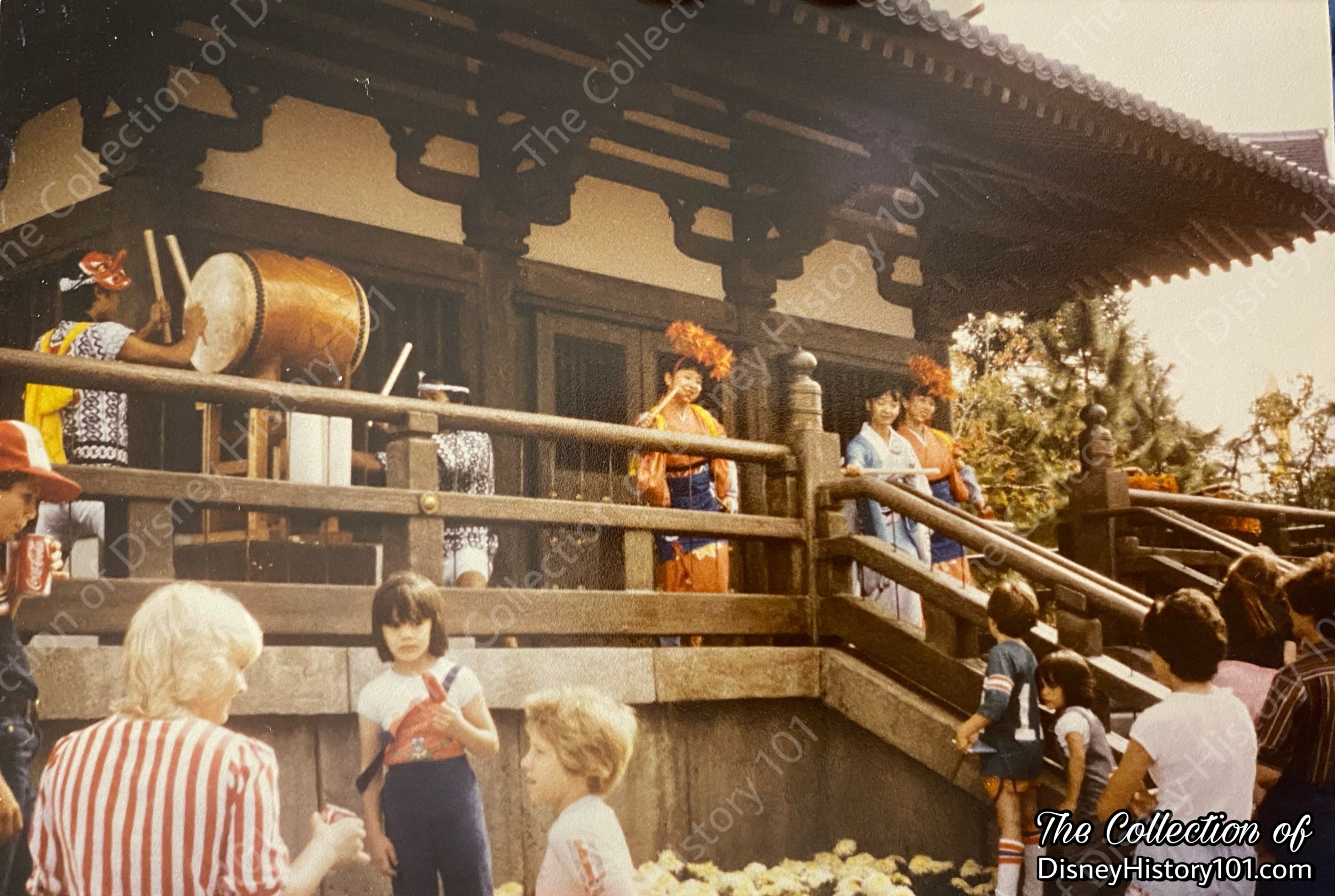
The Goju No To Pagoda.

The Goju No To Pagoda at night.
“Japanese Garden”
“Heading clockwise away from the pagoda, we begin a leisurely stroll through a typically tranquil Japanese garden. Landscaping is an art form in Japan, with rocks plants, and water as the essential mediums. The path is defined by bamboo screen fences, lined with ‘cloud pruned’ evergreens, willow trees, and flowering shrubs. We will pause at the ‘view perfecting pine’ to admire the way it frames the view of the waterfall which graces this garden. We linger at the water's edge, captivated by the koi, colorful fish known for their longevity and brilliant colors. Around each corner is a lovely sight, either an engaging rock composition or a splendid view of the waterfall.”
The area utilized two separate types of lighting: Character lighting, and Functional Lighting. Character lighting such as a chandelier, or kerosene lamp, was themed to enhance the overall appearance and complement the interior. These added to the show, but didn’t necessarily create enough illumination for operation. Functional lighting on the other hand, offered substantial light without being obvious, or distracting from the show.
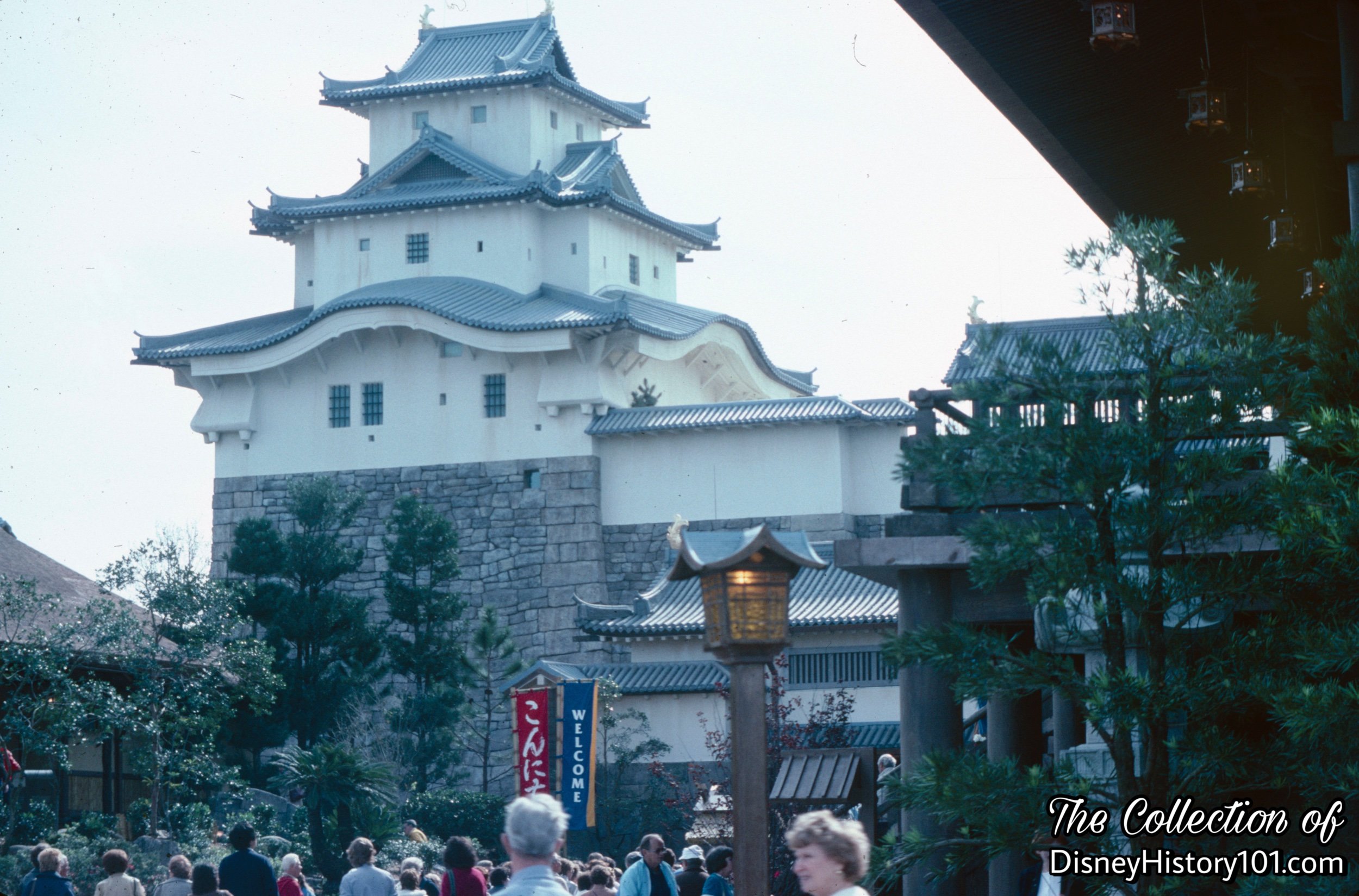
Design concepts for the shop itself were characterized by traditional Japanese art and architecture.
“Mitsukoshi Department Store”
The largest department store in Japan operates the largest merchandise location in World Showcase -Mitsukoshi, the same company with stores in New York, Honolulu, and around the world. Typically, a Mitsukoshi store in Japan features a wide variety of products from groceries to clothing. Various counters in the store are rented or leased out to outside vendors to sell their wares, but it's still all part of Mitsukoshi.
As with the Participant Sponsors of other World Showcase Pavilions, Mitsukoshi was an Operational Participant of the Japan Pavilion, meaning they staff and buy for their shop. At Epcot Center, only traditional Japanese merchandise was available, including clothing, crafts, and silks, each one was a local product of Japan. Here, Mitsukoshi Department Store stocked dolls, fine porcelain, kimonos and Japanese handicrafts. There were antique toys, jewelry, perfume, stationery and food items. And for the Japanese guest, they may note that merchandise is wrapped in a traditional fine, expensive silk paper, which was designed 300 years ago and is what the Japanese have come to expect. Souvenirs of Mitsukoshi Department Store were prepared for Omiyage (お土産), that is, gift for others!
Design concepts for the shop itself were characterized by traditional Japanese art and architecture.
While a few Magic Kingdom merchandise locations offered souvenirs from Asiatic lands (e.g. the antiquated Oriental Imports, Ltd. shop in Adventureland which sold gifts from Hong Kong from 1971 to 1987), Mitsukoshi Department Store was truly unique.
This is the only Mitsukoshi Department Store operating in North America since the closure of the New York location.
The Mitsukoshi Kiosk also offered Gifts and mementos.
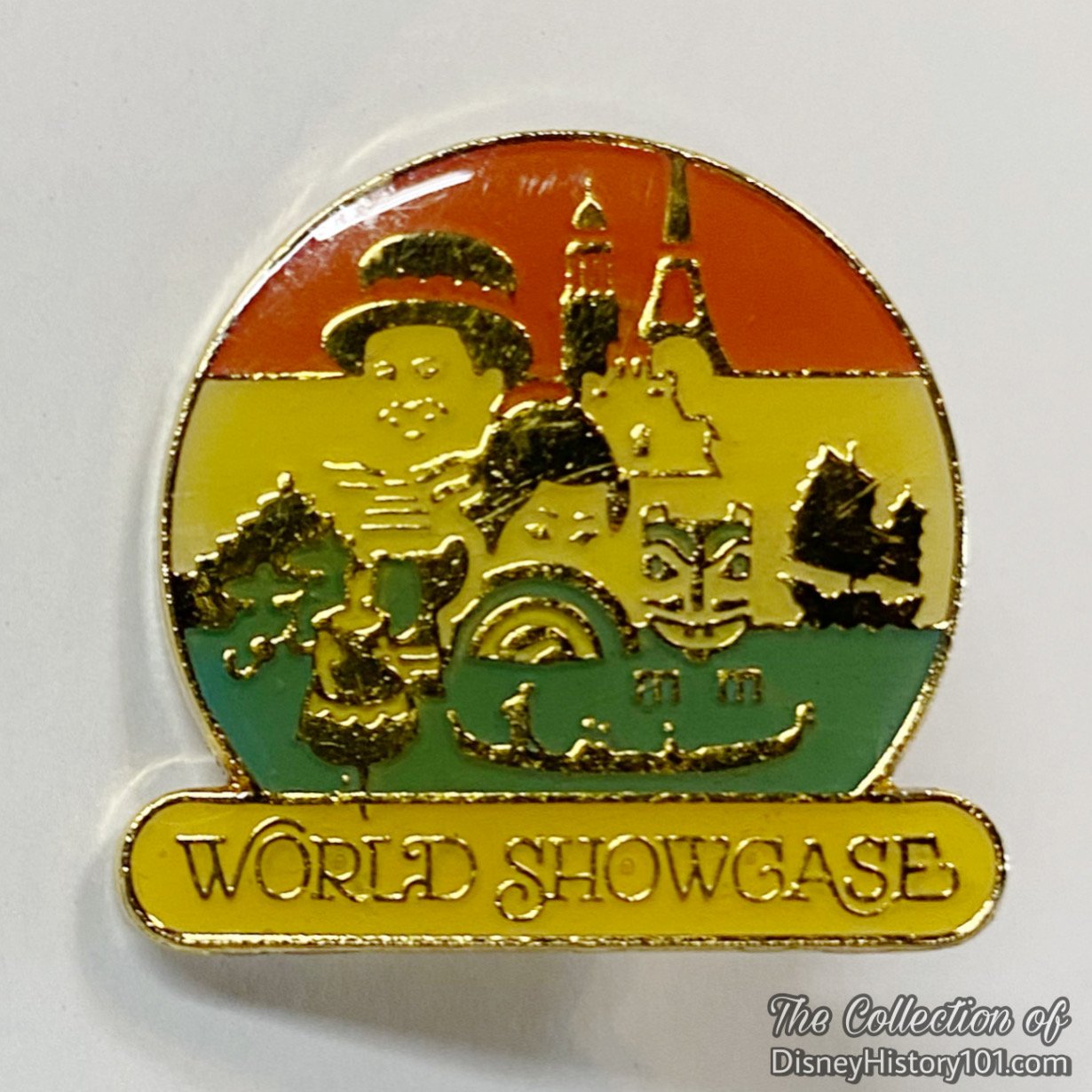
The Disney concept of theming was evident throughout Disneyland and Walt Disney World. Each shop complemented the themed area and the merchandise. This is also carried over to Epcot Center World Showcase where we find souvenir shops that create tangible memories for Guests through Show and traditional merchandise of national origin.
It is notable to mention that during these early years, it was commonplace for merchandise locations to stock General Merchandise - non-character and/or decorative items, including film and sundries. In all, about 30% of merchandise had the Epcot Center logo, while the other 70% was general.
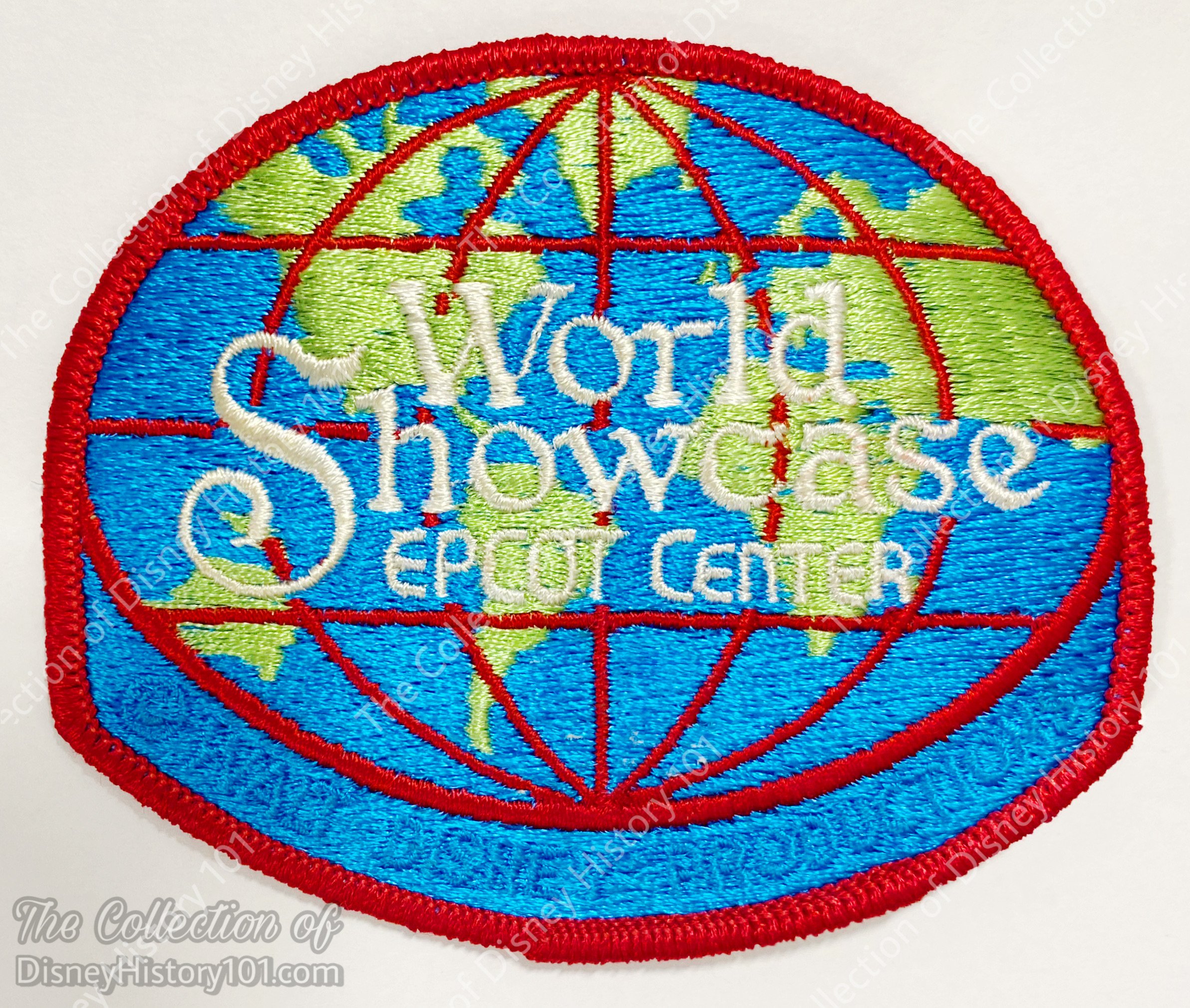
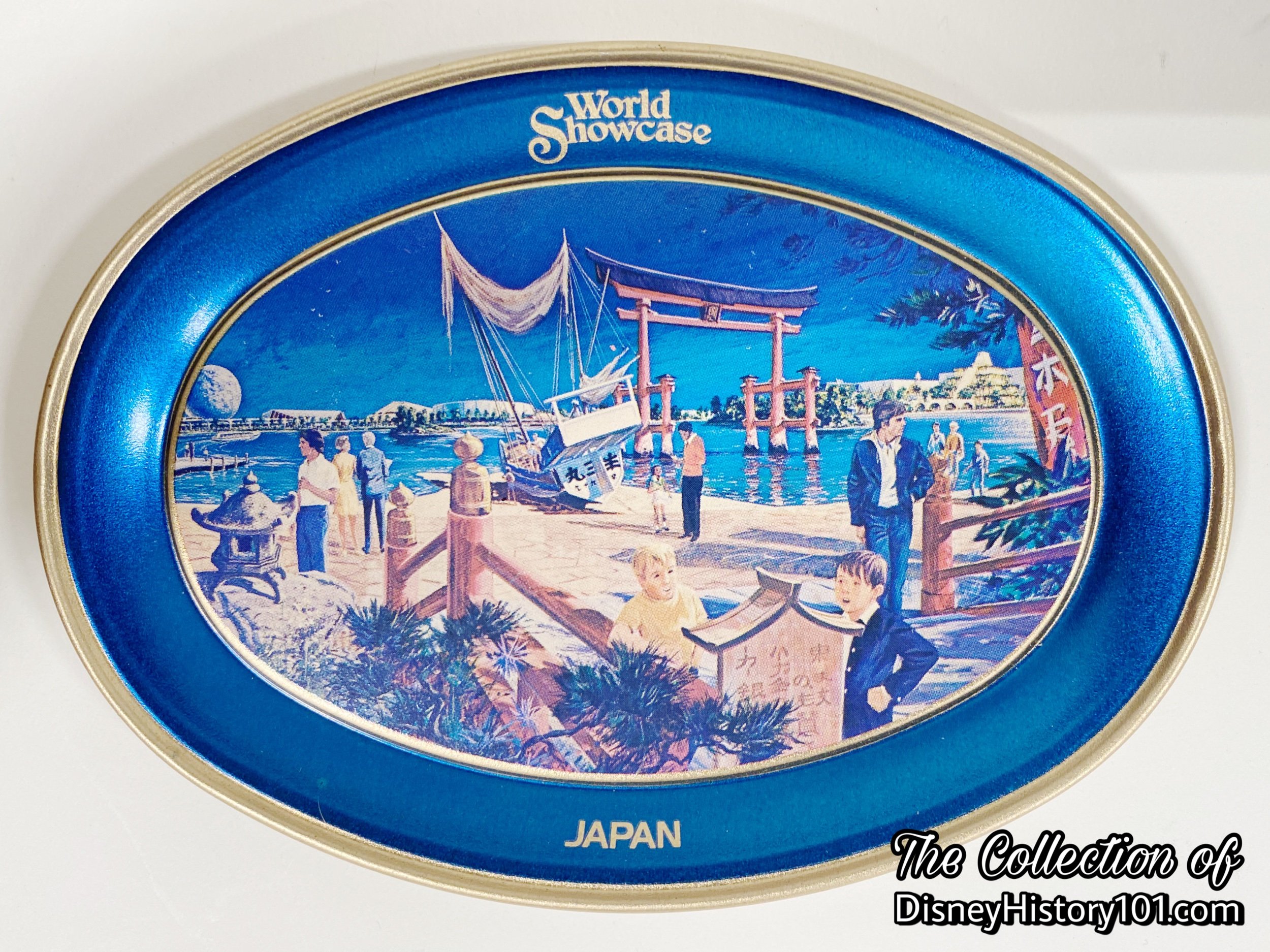

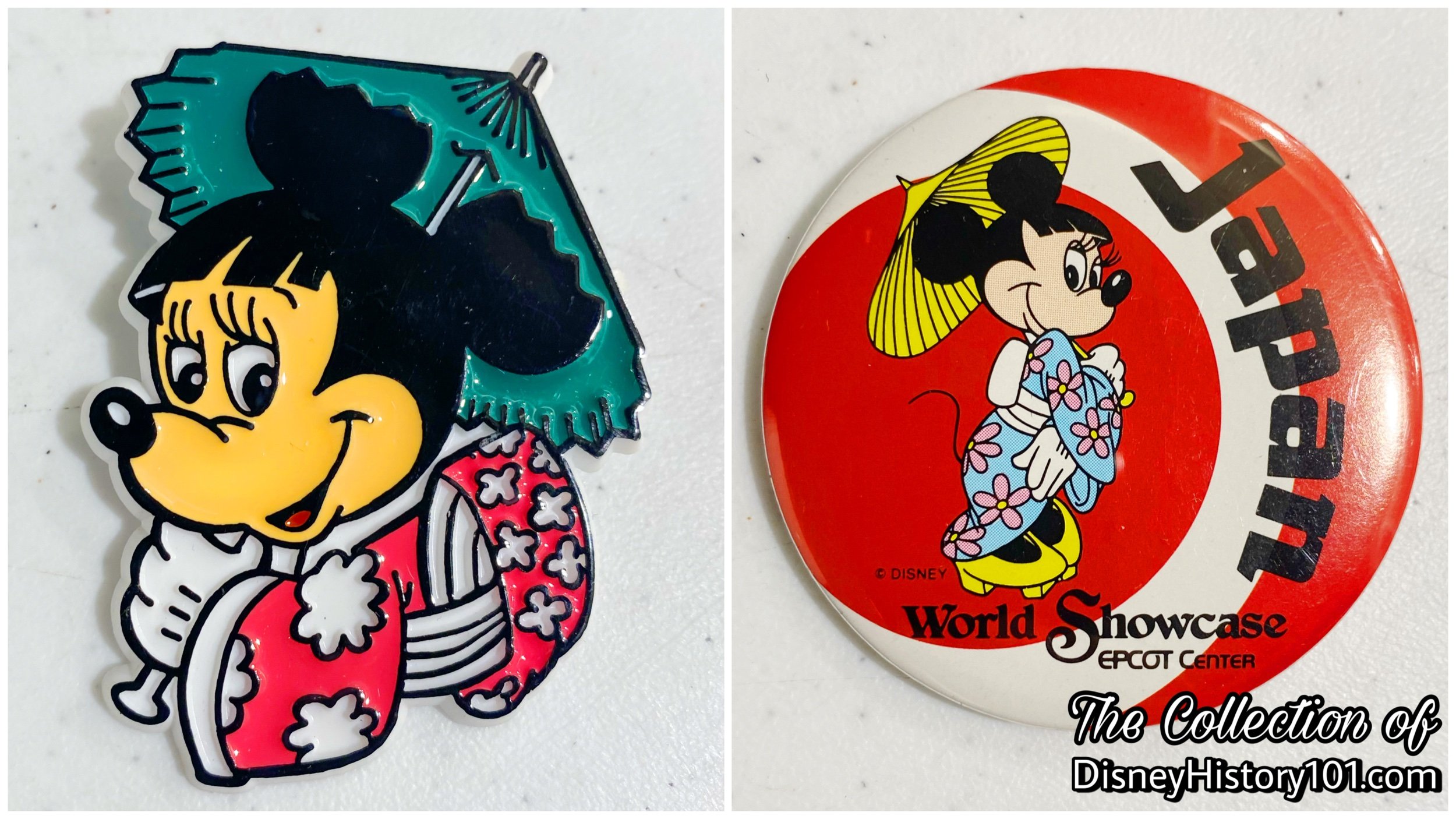
Early Disney character merchandise from EPCOT Center World Showcase included magnets and buttons.
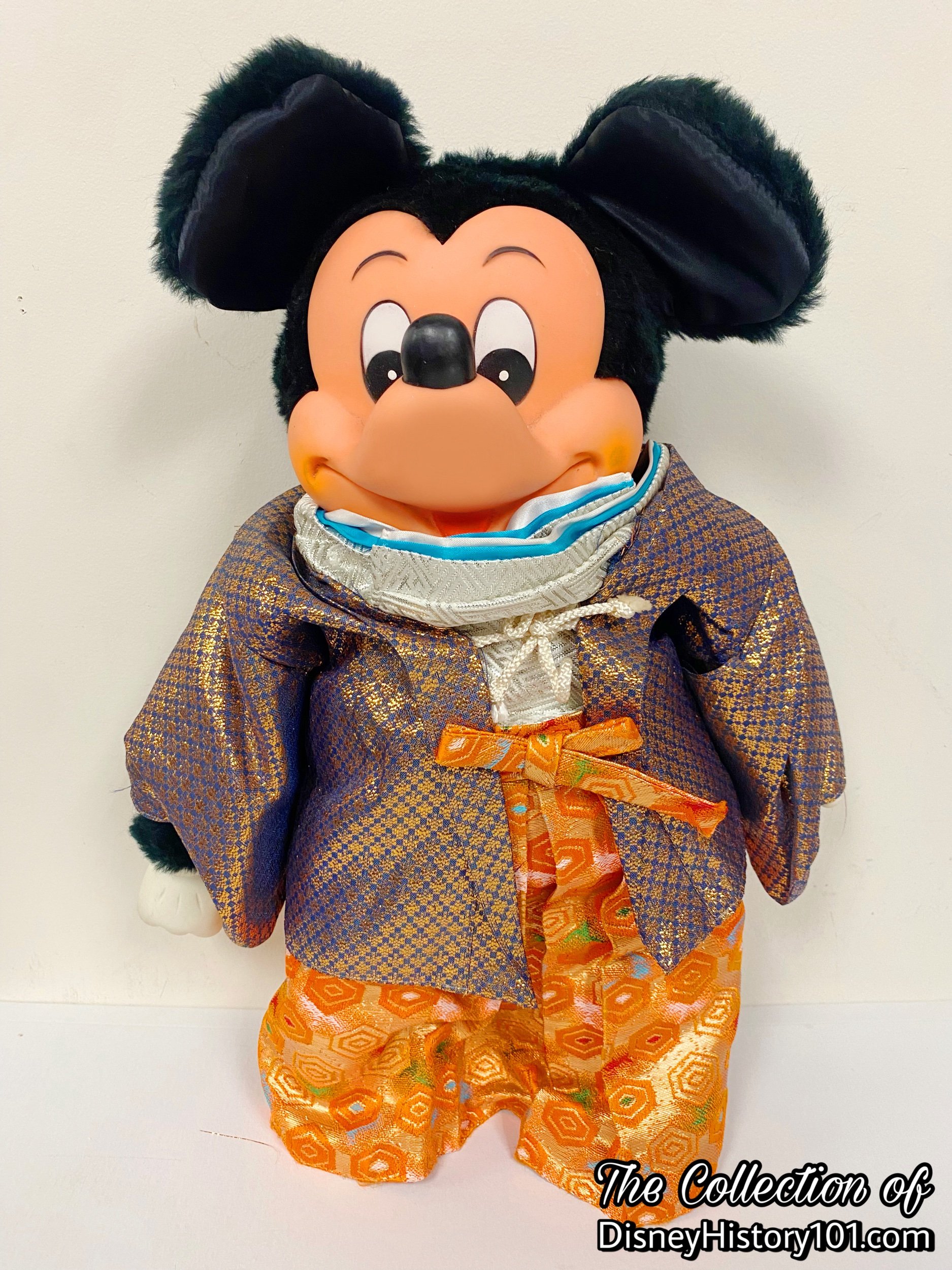
Young Epoch Kimono Mickey Mouse; 1982. These were sold for ¥7.500 at Walt Disney World EPCOT Center and Tokyo Disneyland

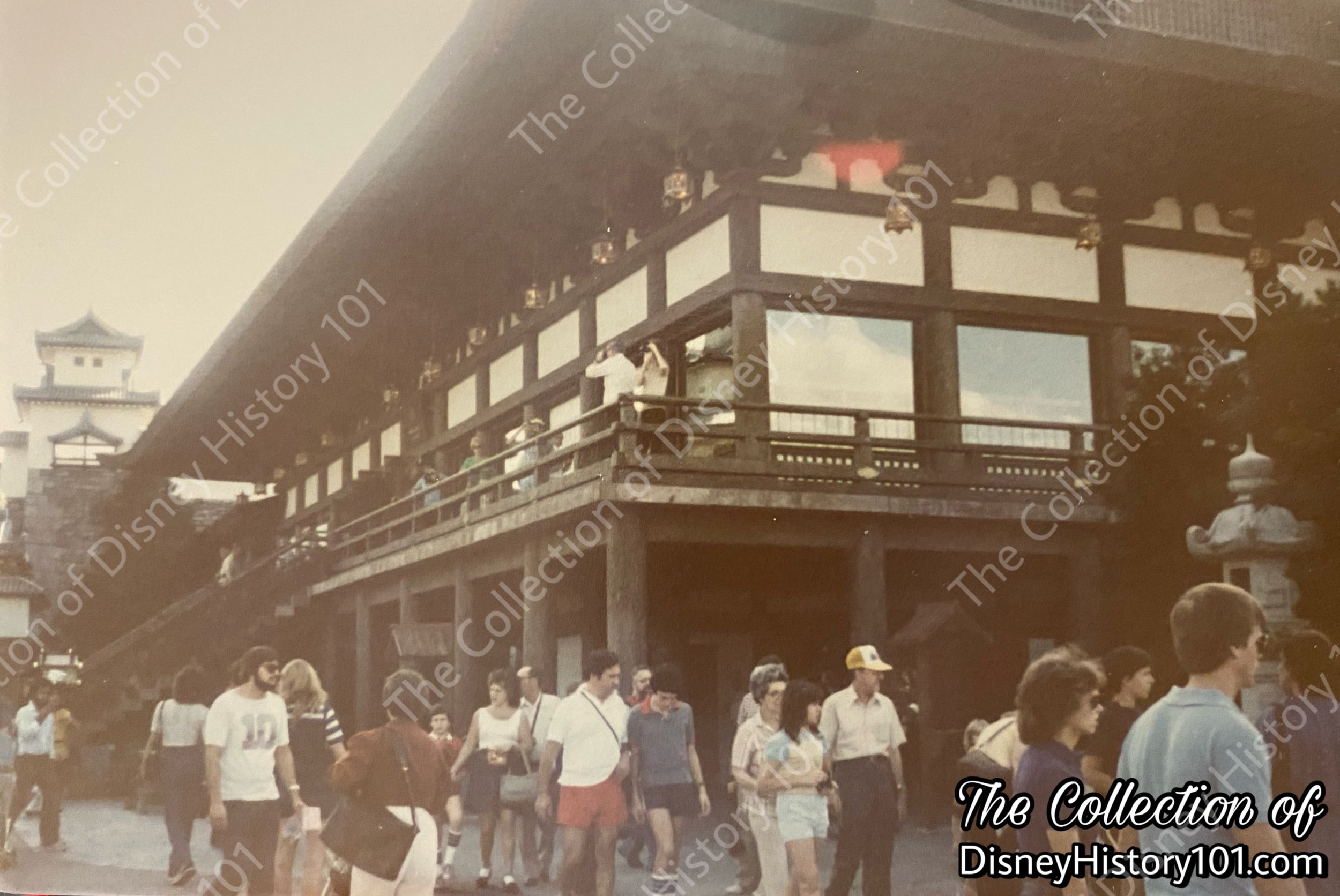
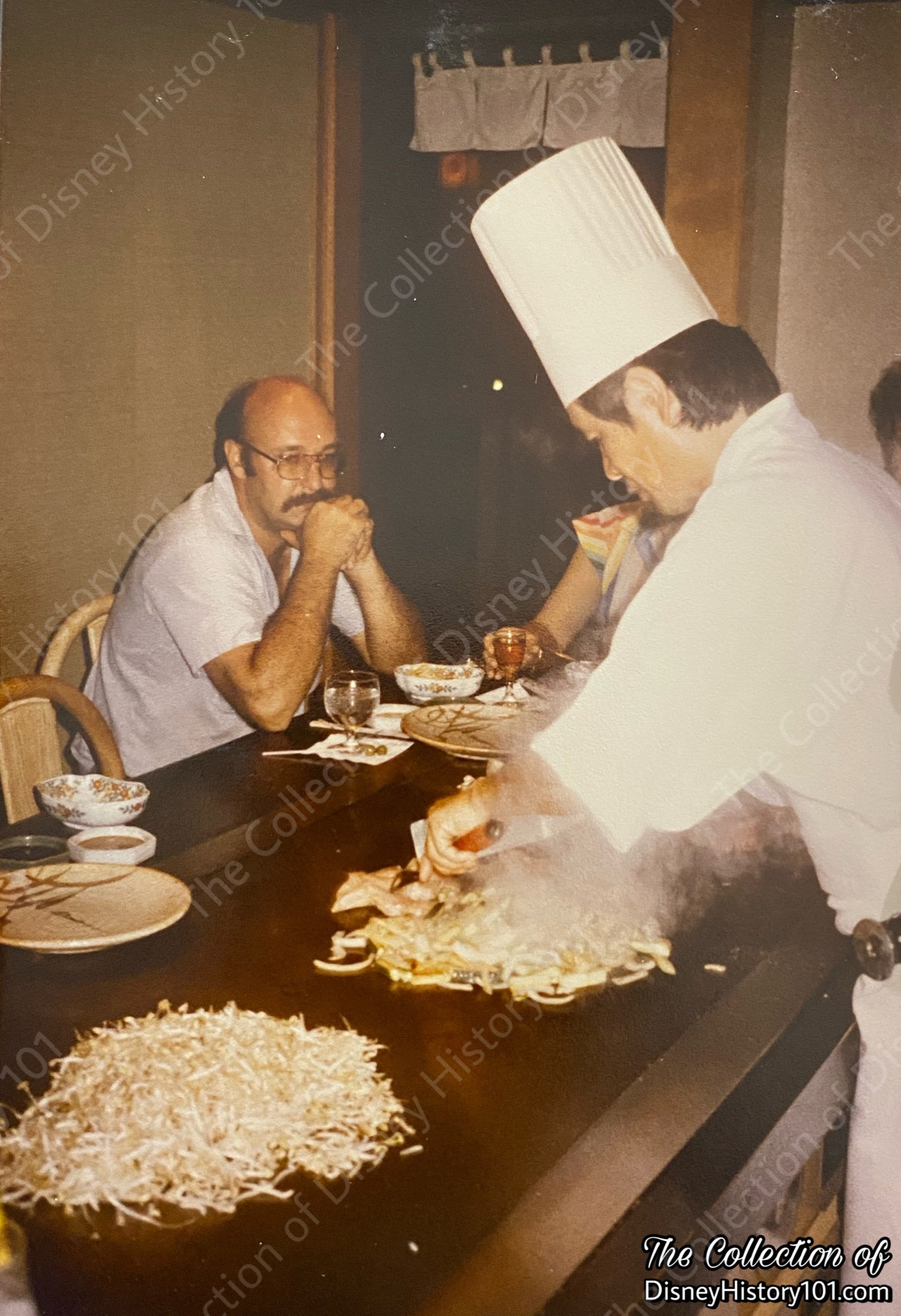
A Teppanyaki Dining Room in Mitsukoshi.
“EPCOT World Showcase Dining”
Epcot Center offered a sampling of delicious cuisine - a wide variety of dining experiences available for guests to savor in an international setting. Beer, wine and spirits were available at all table-service locations. Refreshing ice cream, beverages and snack carts could be found throughout Epcot Center. Four Restaurants were hosted by Mitsukoshi U.S.A., Inc.
“Teppanyaki Dining Rooms”
In Japan's Restaurant Mitsukoshi, Teppanyaki Dining Rooms was a table-service restaurant, open for lunch and dinner. Inside, master chefs created culinary magic in spell-binding tableside presentations for guests at their table. Chefs served grilled teppanyaki meats and seafood, with Kirin beer, Sake and spirits.

Mitsukoshi Restaurant - Teppan Edo Menu Cover.
“Yakitori House”
Having found our way to the top of the garden, we will be lured into the Yakitori House counter-service restaurant, perhaps by its structural charm, but it's just as likely that the promise of a scrumptious, satisfying snack will tempt us inside, as well. A replica of a renowned 16th century villa in Kyoto, the Yakitori House is a restaurant serving broiled chicken and Japanese-style beef among its authentic Japanese “fast food. The menu features a beef-rice bowl (marinated beef served over boiled rice) and yakitori chicken (Teriyaki chicken marinated in soy and ginger, skewered, then broiled). Sitting outdoors, surrounded by traditional lanterns and umbrellas, we will savor the atmosphere as much as the food.” The yakitori sauce is even carefully crafted of boiled sake and mirin wines.
“Matsu No Ma Lounge”
Mitsukoshi held Matsu No Ma Lounge a counter service restaurant offering Sushi and appetizers alongside exotic drink specialties.
“Tempura Kiku”
By 1984, one of the highlights was the Tempura Kiku table-service restaurant. The location offered batter-fried meats, seafood and vegetables served at a tempura bar). These batter-fried entrees were prepared as guests watched.
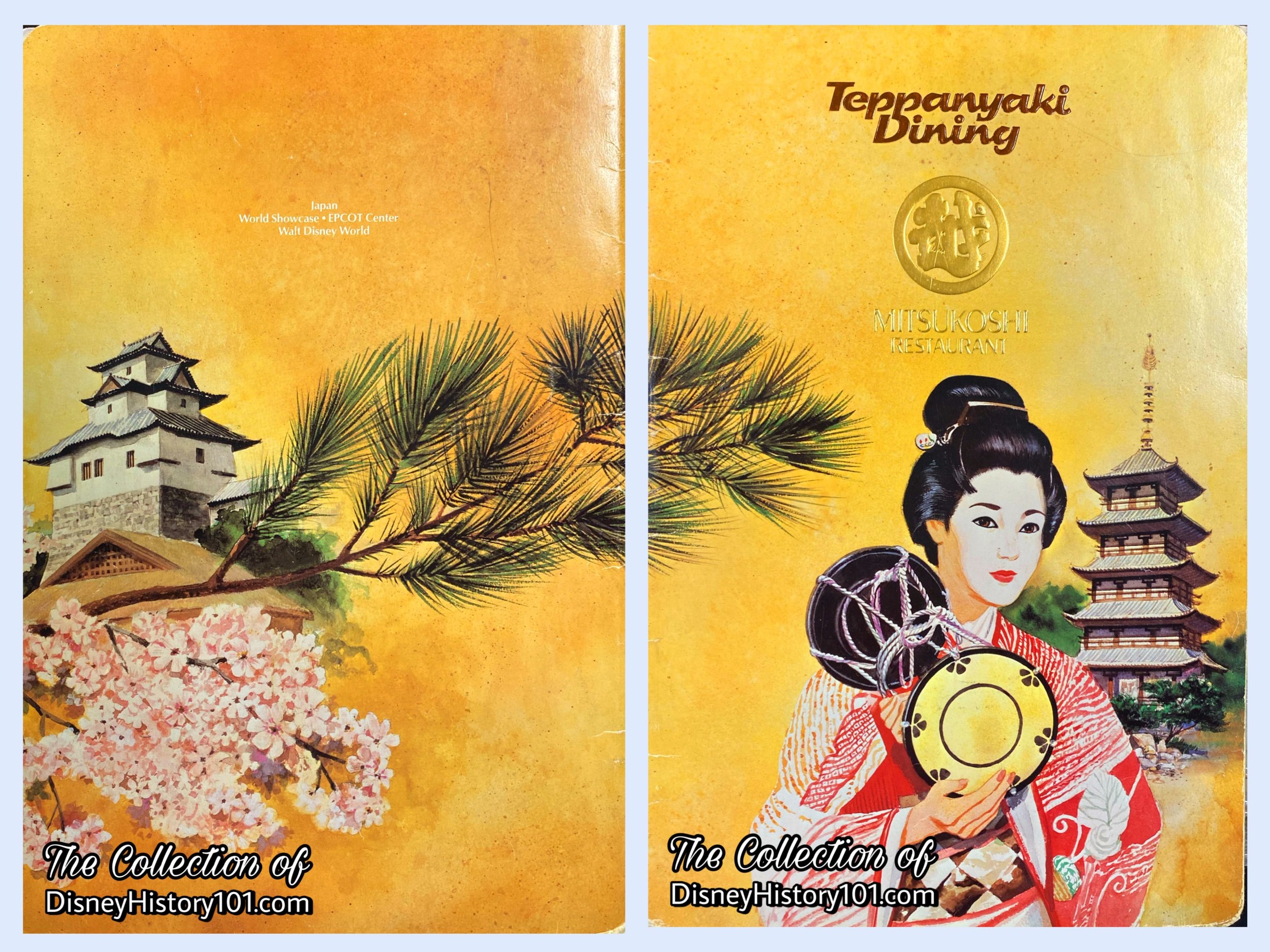
Teppanyaki Dining Rooms Menu Cover.
The menu of the Teppanyaki restaurant on the second floor of the Mitsukoshi department store. Teppanyaki Dining Rooms offered grilled meats, seafood, Kirin beer, sake, spirits. You may recall dining at Mitsukoshi Restaurant and enjoying the flavors of the Matsu Beverage, the Ginger Dressing, or Shogun Dinner (Ginger Sauce and Mustard Sauce accompanying the shrimp appetizer or main course of chicken or beef).

Bijutsu-kan Gallery exhibit Poster, c.1984-1985.
“Bijutsu-kan Gallery”
In its first year, the innovative showplace for technologies and human achievement had provided millions of visitors the opportunity to experience some of the world's finest art: an exhibit of pre-Columbian works from Mexico, and priceless sculpture from the tombs of China, and a display of Japanese crafts honoring that country's best living artists and craftsmen.
At Bijutsu-kan Gallery audiences experienced “Echoes Through Time”, an exhibit featuring traditional and contemporary Japanese art forms.
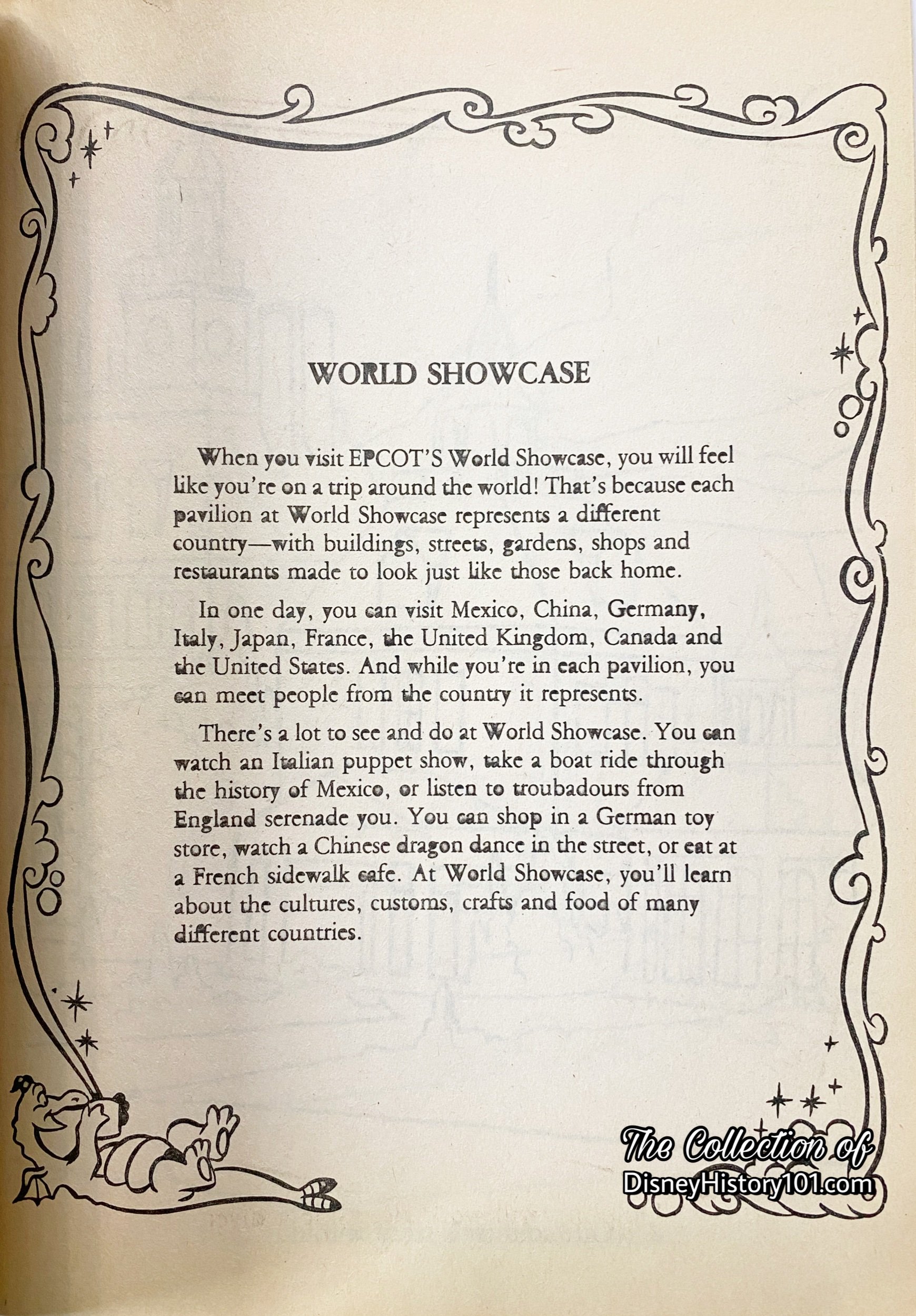
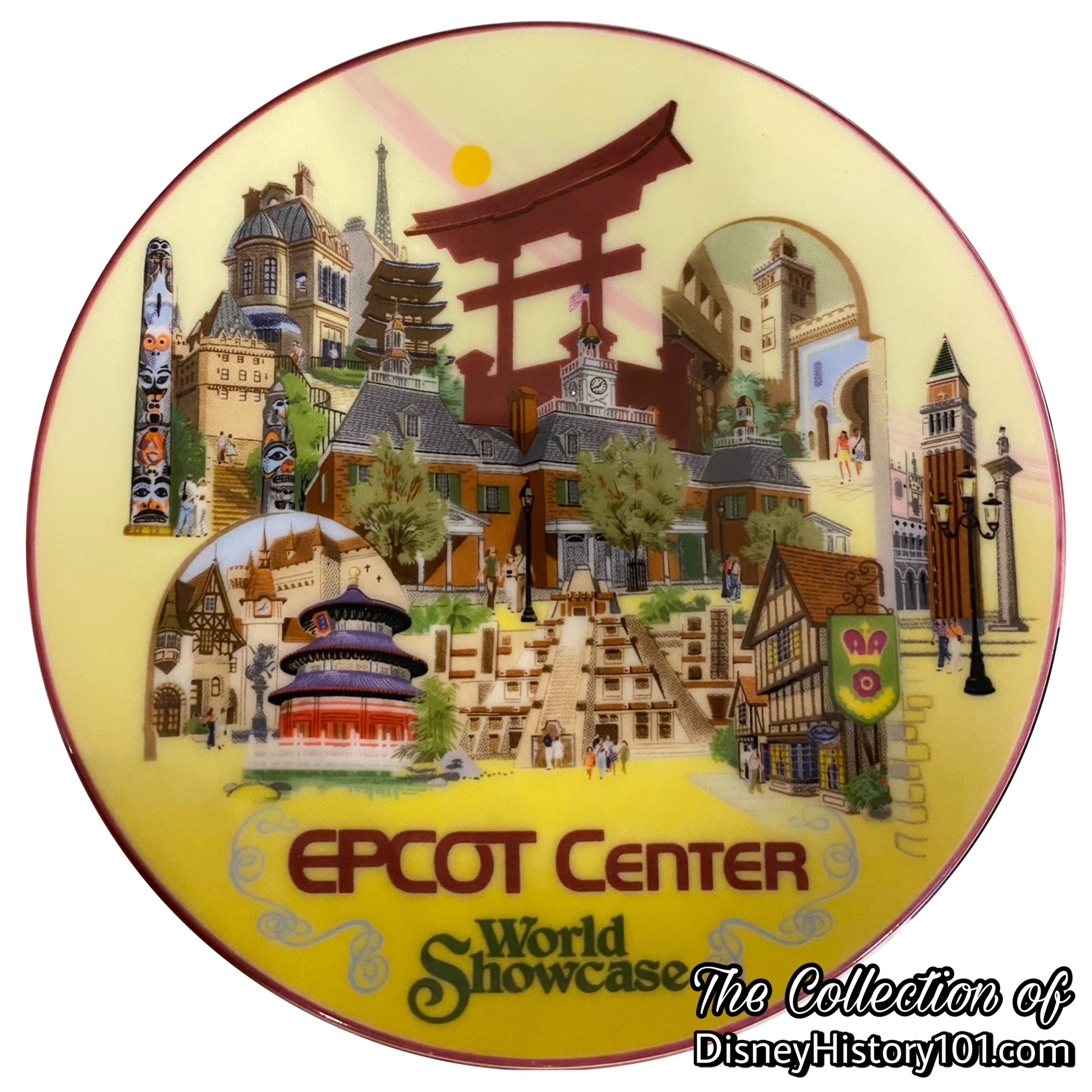
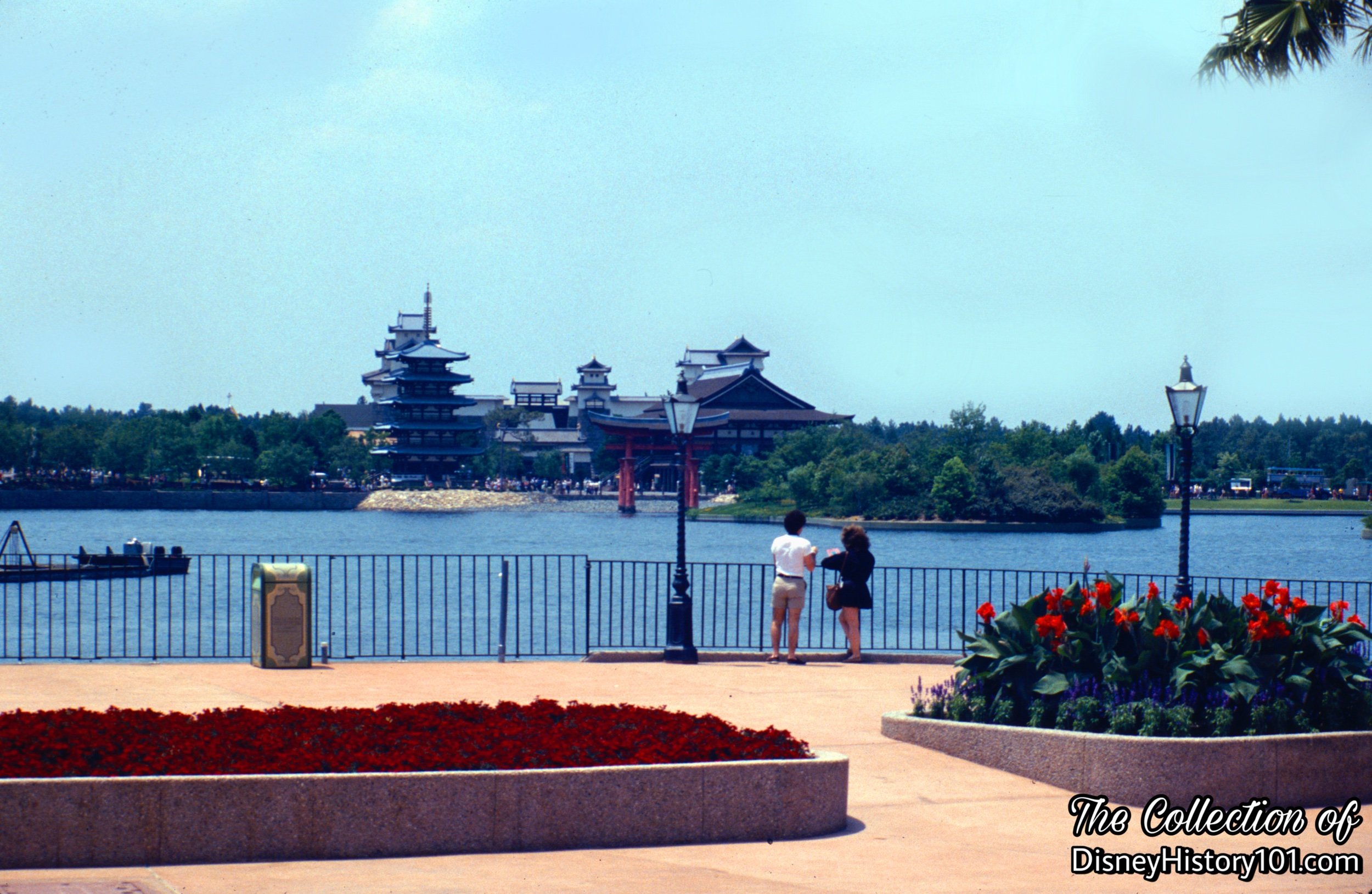
Viewing the Japan World Showcase not far from the Canada World Showcase and Future World.
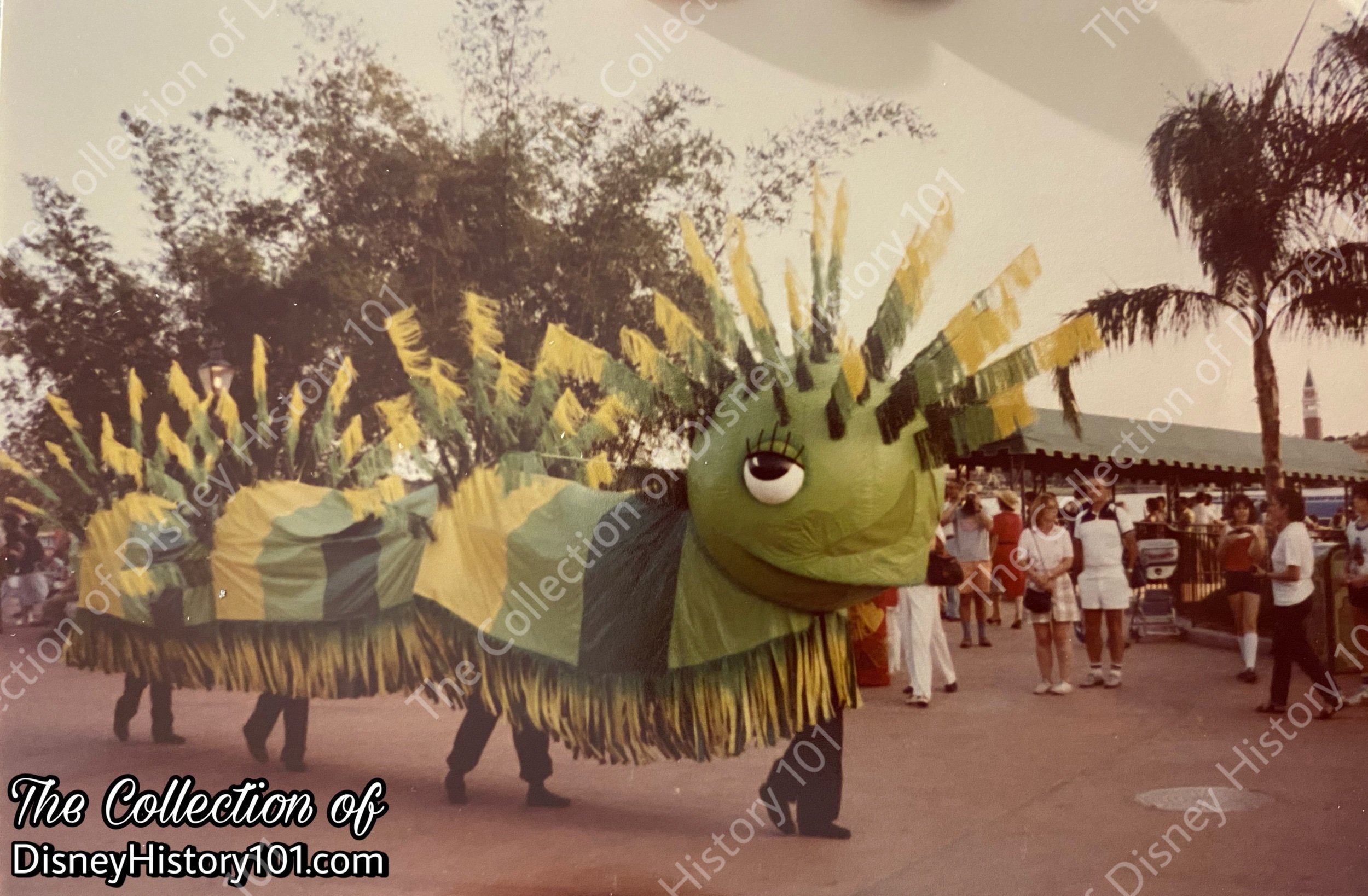
World Showcase Parade.
“EPCOT CENTER-Illumi-Nations”
EPCOT CENTER-Illumi-Nations, the most dazzling, high-tech spectacle ever produced by Disney opened January 30, 1981 at Epcot Center. IllumiNations took place every evening just before closing around World Showcase Lagoon. IllumiNations actually transformed World Showcase into a totally new sensory experience as it enveloped 8 international courtyards that surrounded World Showcase Lagoon. The electrifying display blended a lush orchestral score with spotlights, lasers, fountains, fireworks and projected images to create an event of unparalleled visual impact.
25 computer systems synchronized the following to create the special effects that made IllumiNations so electrifying:
13 special effects projectors
6 lasers
11 giant searchlights
12 wire mesh screens (each as big as the side of a warehouse!) on which light-designs are projected
108 dazzling fountains that create the lagoon's dancing waters
783 fireworks rockets—a 4th of July celebration every night!
550 theatrical and 680 strobe lights
5 miles of building-outlining rim lighting
More than 50,000 lightbulbs!
IllumiNations' theme was international travel, and as the show began pictures were drawn in light over the lagoon, setting the stage for the journey that followed. The classical music selections-recorded by the Toronto Symphony Orchestra delighted the ear as much as the fantasy of lights delighted the eyes.
Then, one by one, the nations around World Showcase changed in appearance through the magic of Disney as the musical score changed with them. Some buildings even appeared to undergo architectural transformations before the audience’s eyes.
The Canadian chateau became a stand of giant fir trees. Germany's Bavarian castle turned into a whimsical gingerbread Gasthaus. France became a cabaret. Kites appeared over Japan, and a dragon travelled across China. The rousing finale combined all the global tour's elements of sight and sound. Even then the colorful lighting effects remained on to offer guests a totally new nighttime adventure at Epcot Center.
If you thought you’d seen it all, the amazing new light of IllumiNations was the experience of a lighttime, nightly at Epcot Center.

Mickey’s Express near World Showcase.
Walt Disney Entertainment department developed new shows and parades for all of Walt Disney World. Soon, Character and Equity groups performed in this area of World Showcase South, with Characters overseen by the WSC South Captain. By 2007, Guests May recall “Disney Characters on Holiday” (DCOH), a group of Characters that performed in several locations in Epcot, entering and exiting on a European double-decker bus.
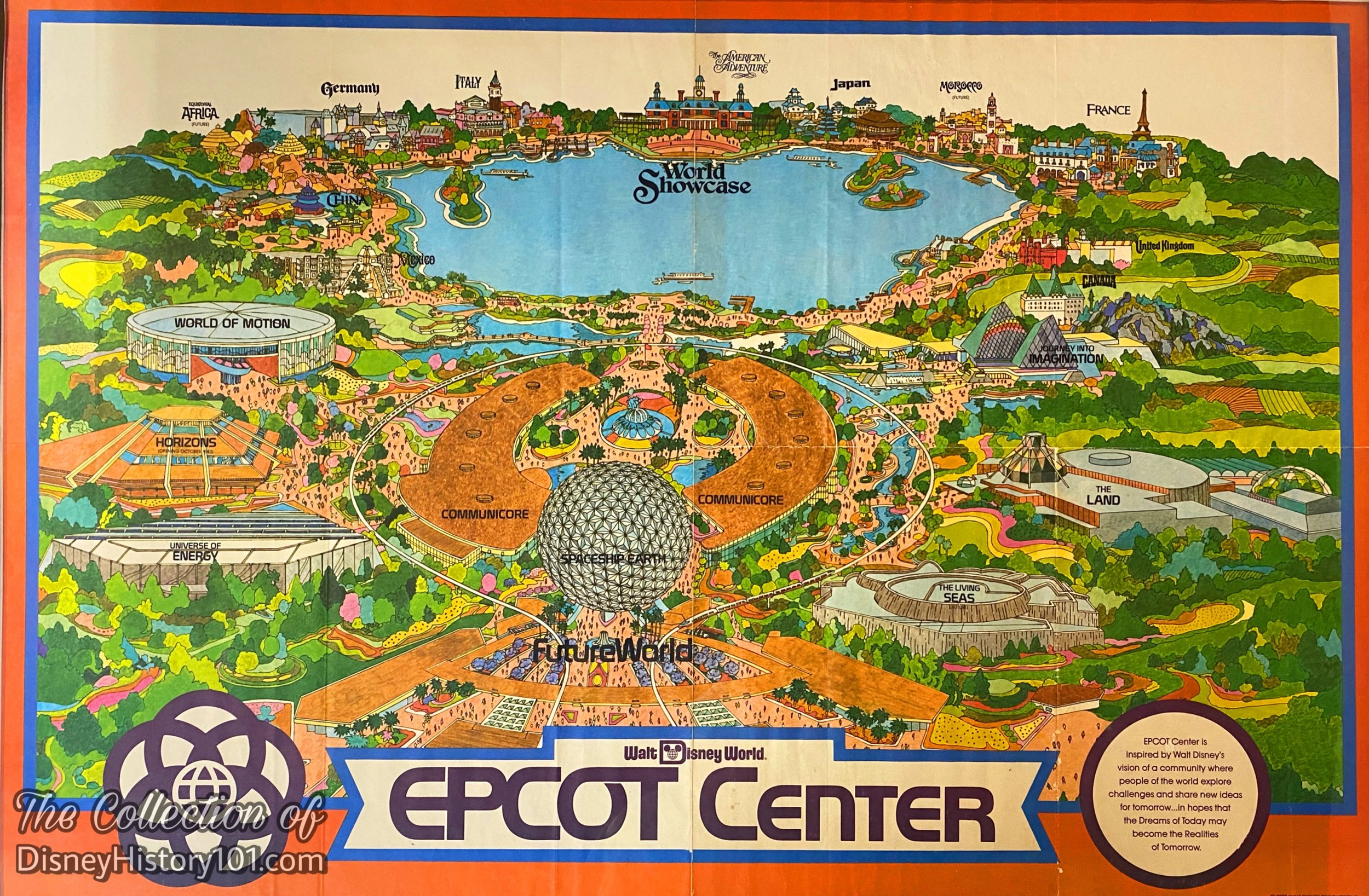
Note the future attractions and areas among the details of this EPCOT Center map, c.1982.
By 1982, the new 17,500-square-foot Morocco Showcase was being master planned to be situated on the 40-acre World Showcase Lagoon midway between the existing pavilions of France and Japan.
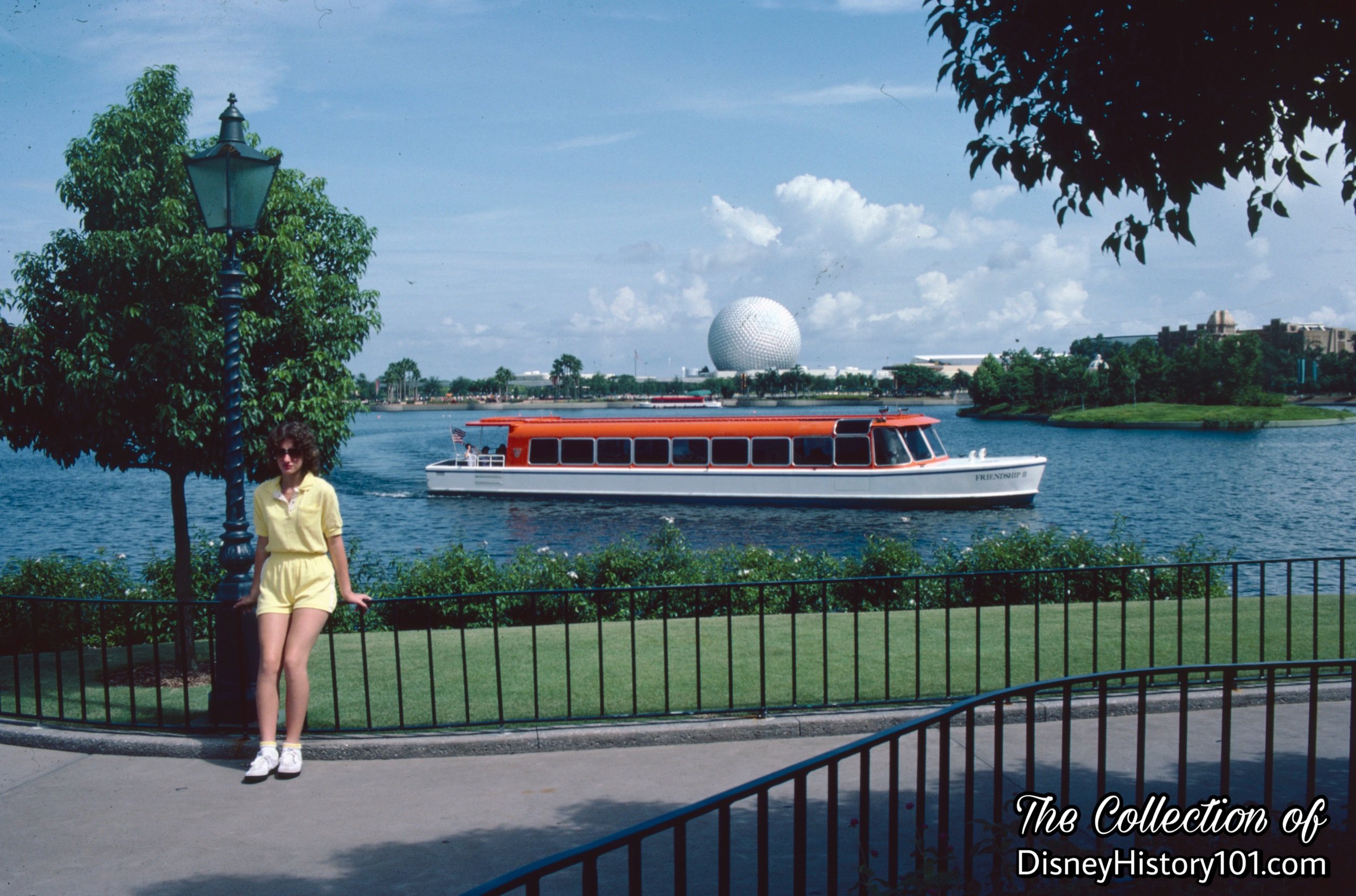
Nearby, the Friendship Boats transport guests from Dock #3 (neighboring the Germany World Showcase) across the Waters of the World (Total Lake-Lagoon Area).
Both the American Adventure and Morocco would come to flank Japan. Obviously, the fastest way to move people over the extended areas of a Park is with moving vehicles. "FriendShip" launches crossed the World Showcase Lagoon and readily accommodated guests in wheelchairs and strollers. Buses regularly circled the World Showcase promenade. By 1982, getting around the World Showcase area was made easier with additional transportation, in the form of seven more busses and two new boats with a third under construction.
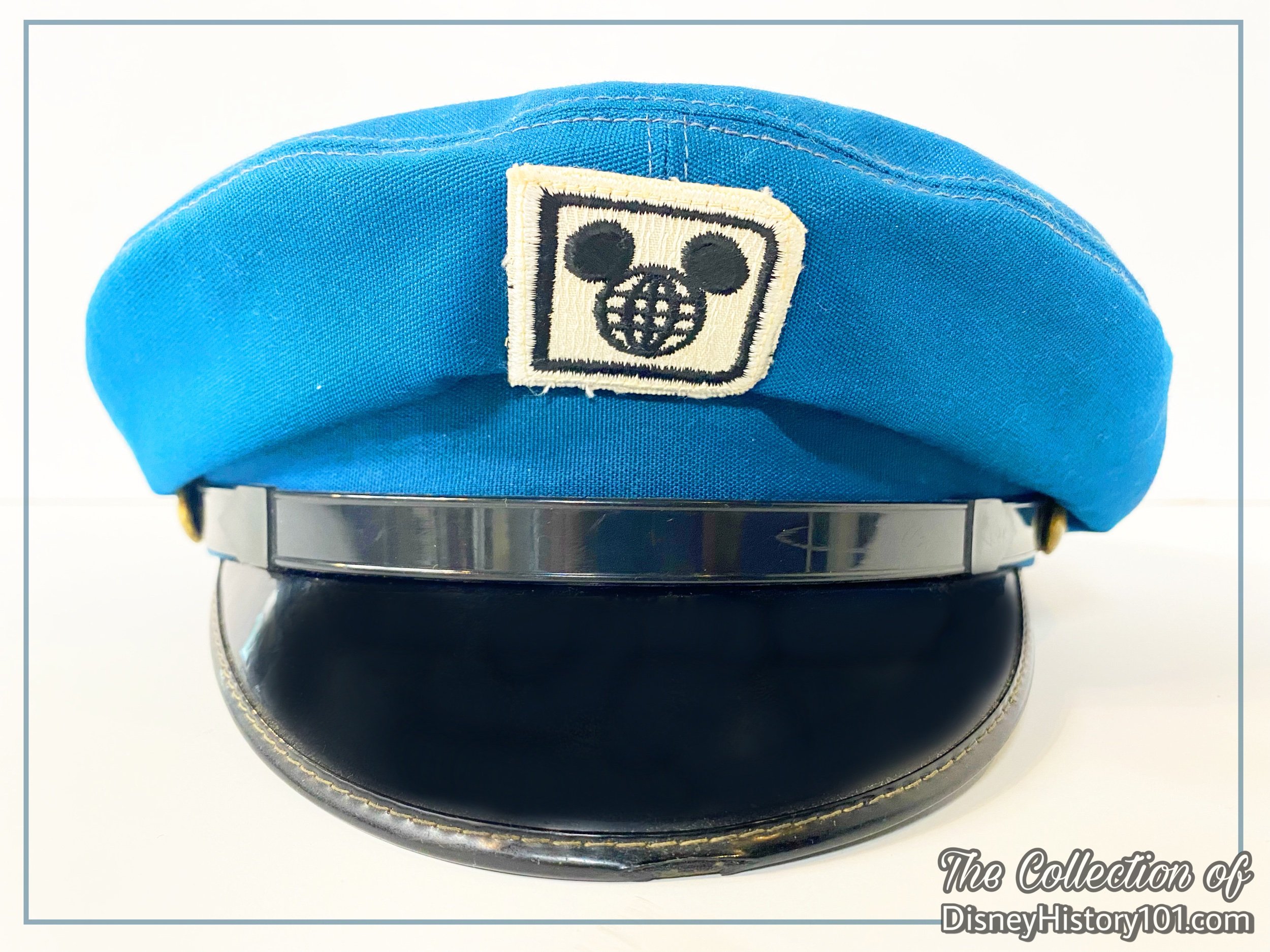
EPCOT Center Friendship Boats Watercraft Hat by Creative Costuming at the Disney-MGM Studios.
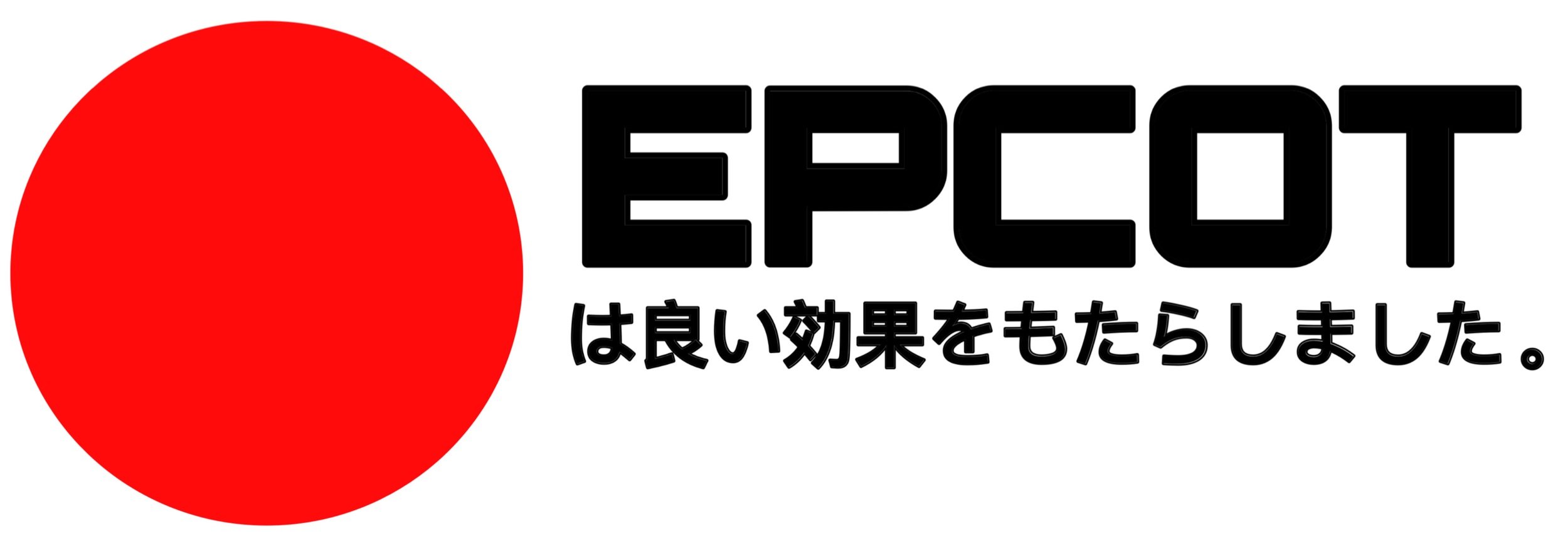
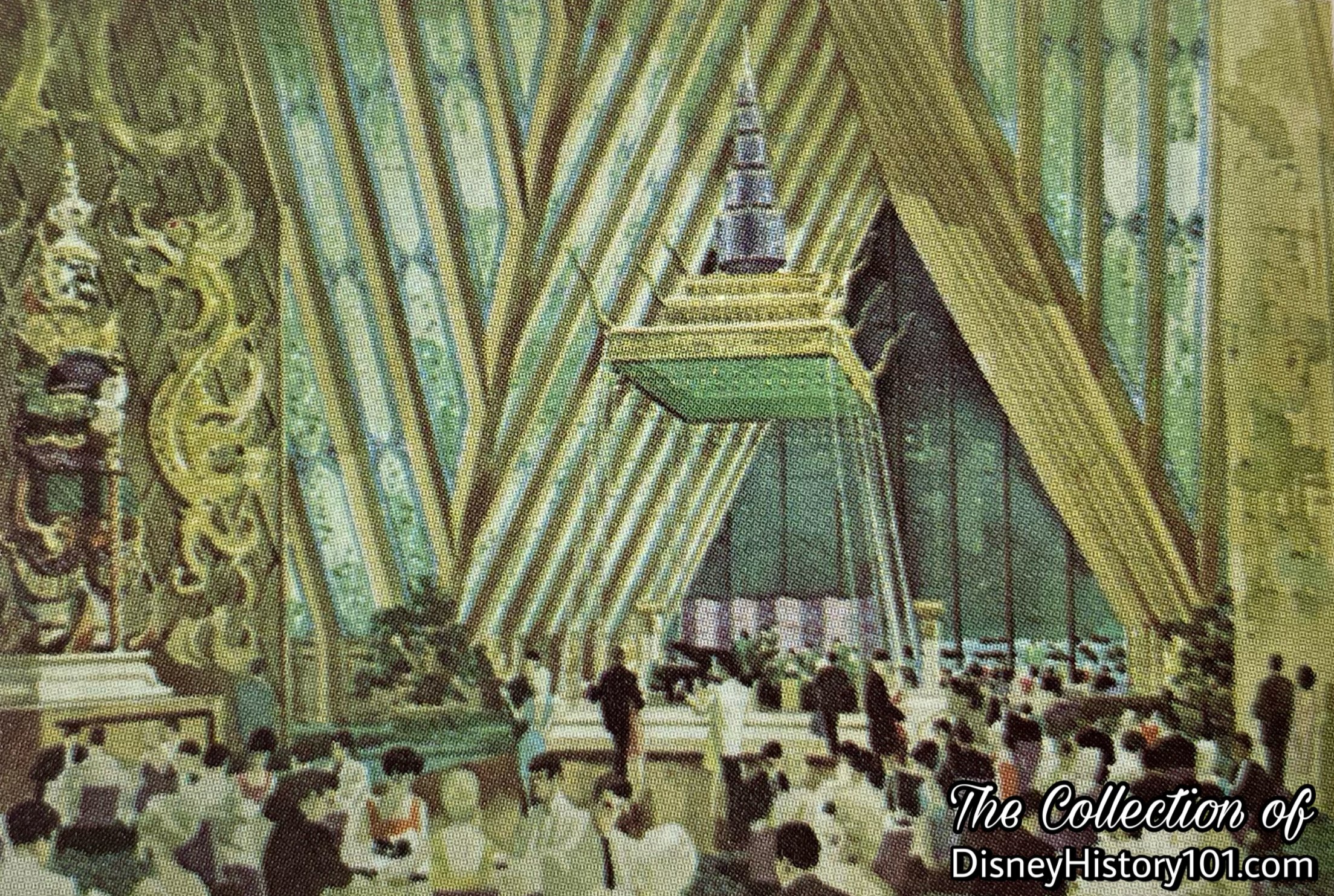
The Asian Resort concept.
A 600-room and 50-royal suite Thai-inspired Asian Resort (with its own restaurant and lounge atop a 160-foot tower) would offer a complete range of resort facilities. “Primarily Thai in its decor and food specialities, this hotel will be located on the lagoon, nearest of all the hotels to the theme park entrance. It is being planned to include 600 rooms, about two-thirds in garden settings and the remainder in the 160-foot tower building. A theme restaurant and cocktail lounge at the top of the tower will provide nighttime dancing and stage entertainment. A unique feature is the location of convention facilities, all underneath and separated from the main public areas of the Asian resort. In addition, a multi-purpose main ballroom and smaller meeting rooms are planned for conventions. Every guest room (including 50 elegant suites) will face the lagoon or a central recreation area.” This particular additional development was planned to be completed by the Christmas of 1974 and beyond.
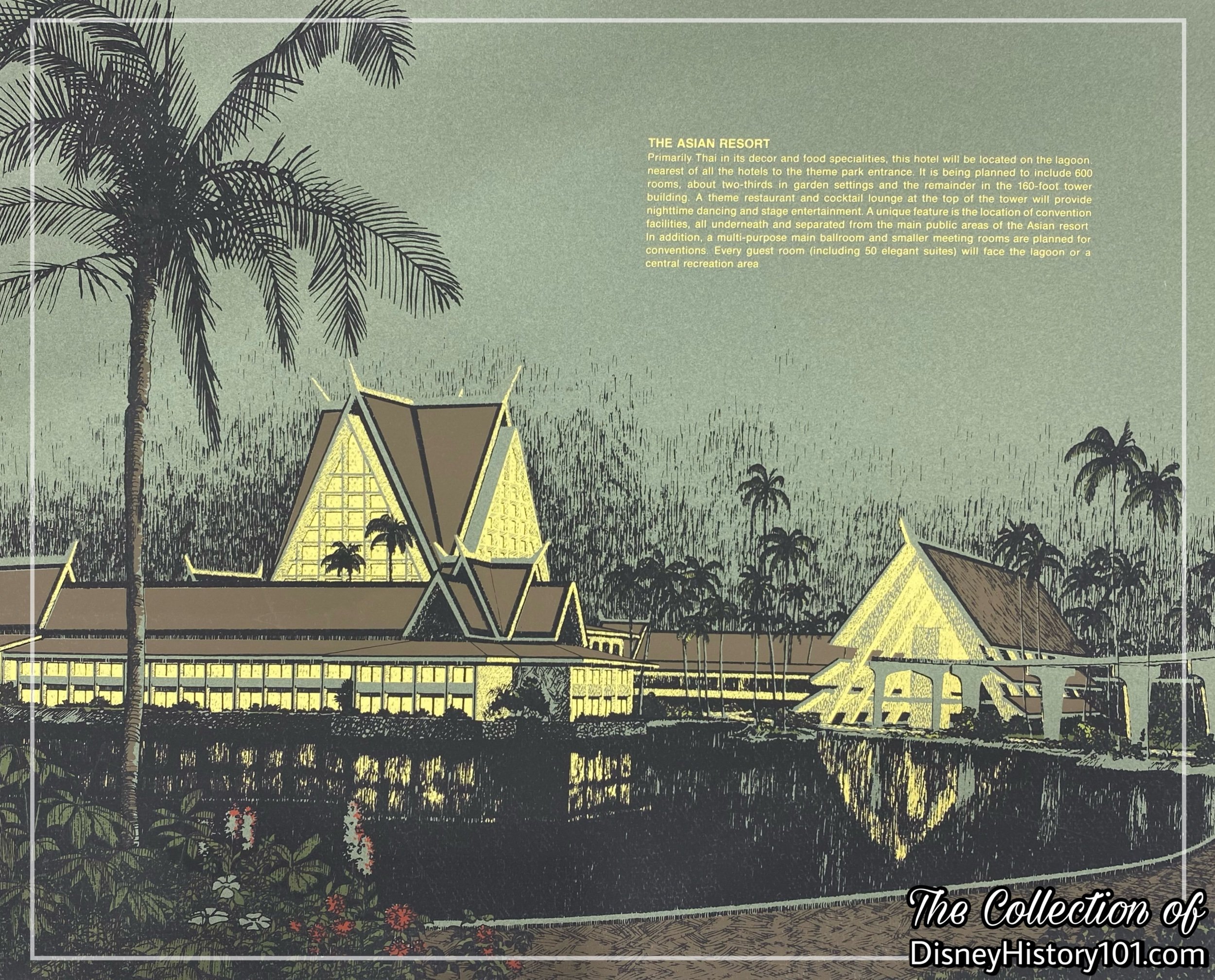
The Asian Resort concept by Welton Becket & Associates, as depicted in WALT DISNEY WORLD - FLORIDA; ©️MCMLXVIII (1968) Walt Disney World Co.
The Epcot Center Japan World Showcase nearly inspired a Hotel of the Walt Disney World Resort. Chairman of the Operating Committee of Walt Disney World Robert (Bob) C. Allen (who leads the team which meets regularly to plan projects) found that the Golf Resort was “pulling rooms from the Lake Buena Vista area. There has been a hiatus while the surrounding area builds up. With the World Showcase, we expect to build the Asian Hotel. We are also going to expand the Polynesian with 120 to 140 more rooms.” [Orlando-Land; October, 1976]
The new resort-hotel would be based on the exotic Asian theme of Thailand, planned for the shores of the Seven Seas Lagoon.
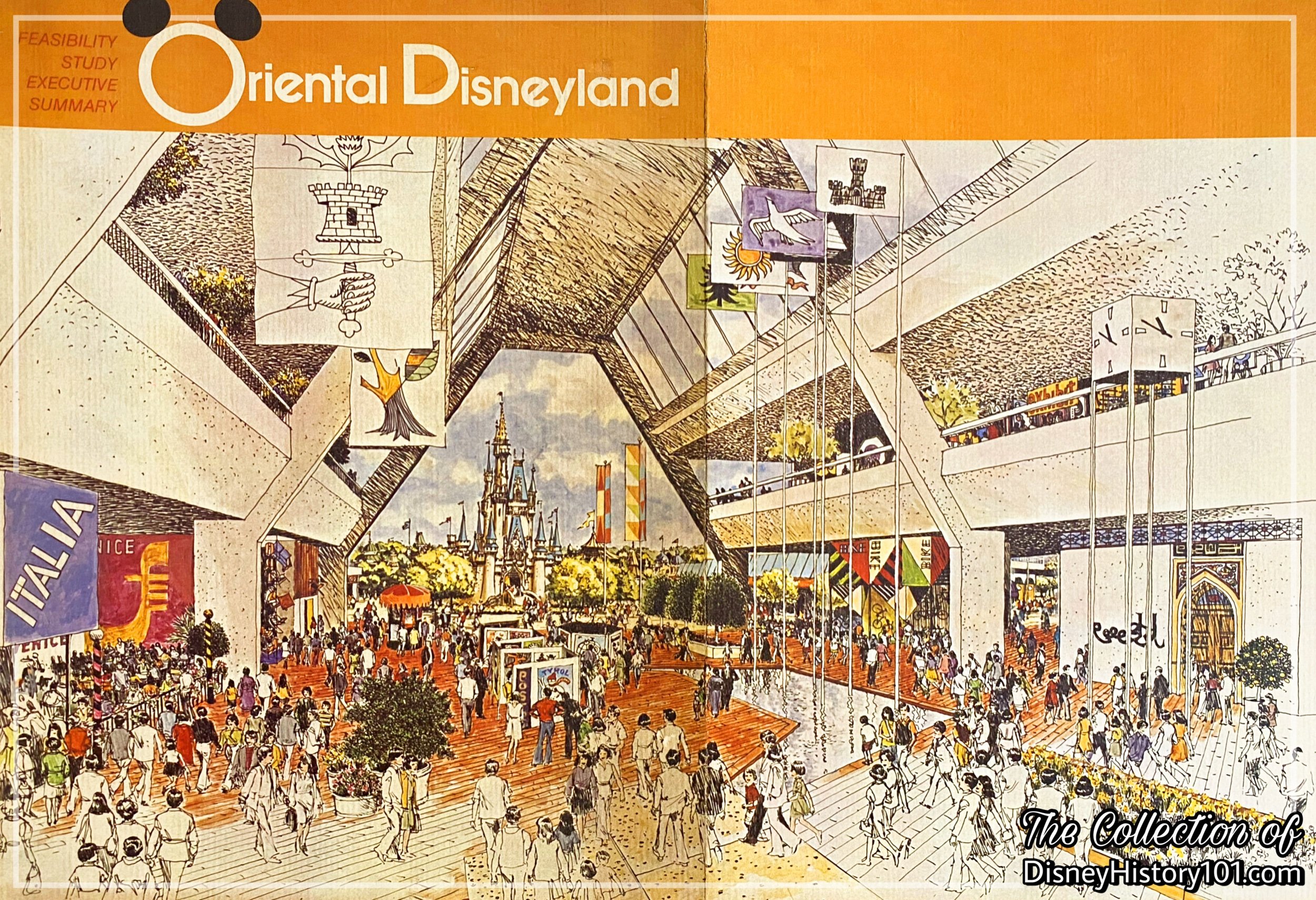
International Land depicted on the cover of the Feasibility Analysis and Executive Study for Oriental Disneyland (later appropriately renamed Tokyo Disneyland).
“Legacy - Disneyland in Japan”
By August of 1975, the Feasibility Analysis Economic Study was completed for (what was first billed as the now much-antiquated “Oriental Disneyland”), an area called “International Land” was mentioned. It seems that (much like the original concept for EPCOT Center), Guests of International Land would also have “an opportunity to experience the endless variety of today's community of nations… discover the culture, traditions, tourism, and accomplishments of the participating countries through a wide variety of exciting shows and attractions, restaurants, and shopping streets unique to the individual nations.”
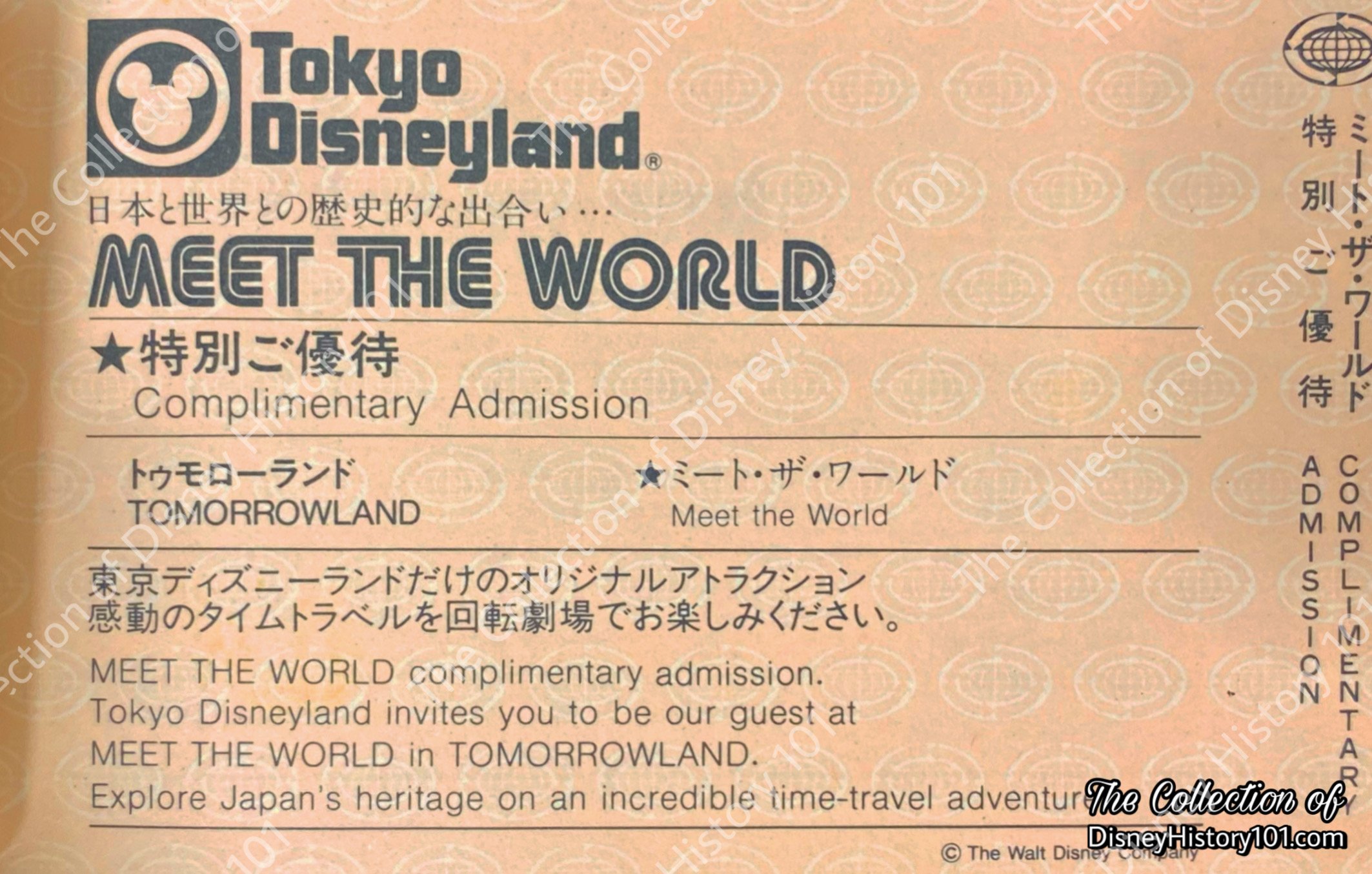

“It Looks Like We Started Something - Epcot Center Legacy of the Asian Hotel and WESTCOT”
The EPCOT Center World Showcase nearly had a legacy in WESTCOT Center - “a West Coast version of EPCOT Center, with a Spacestation Earth as its centerpiece, and a World Showcase. It was initially announced in March 1991, to be built where Disney California Adventure was eventually situated.” [Disney Facts Revealed by Dave Smith, 2016] WESTCOT was to include a whole new World Showcase of culture, traditions, tourism, and accomplishments of participating nations. Like EPCOT Center, these would be experienced through a wide variety of exciting shows and attractions, restaurants, and shopping streets unique to the individual nations.
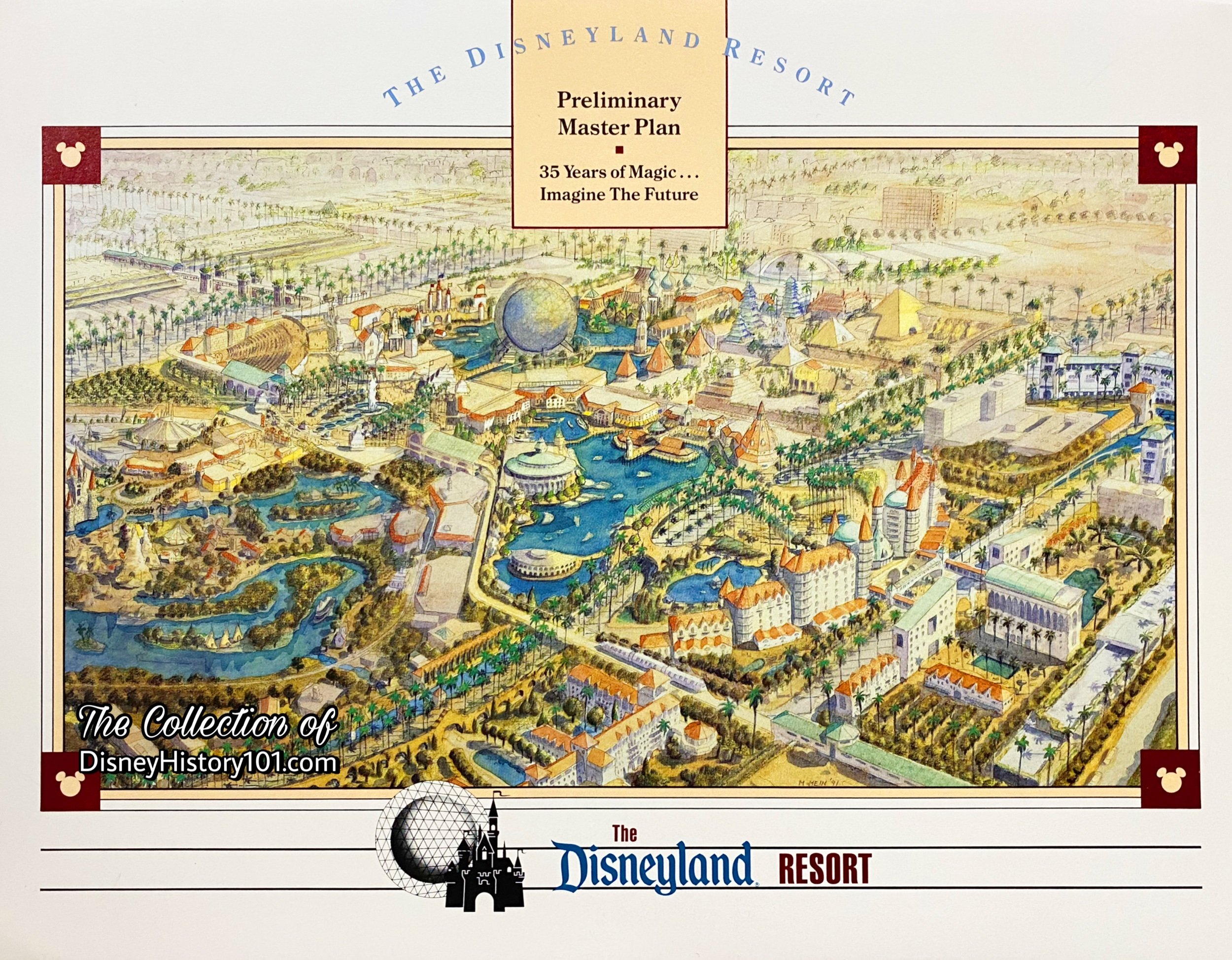
WESTCOT Center Preliminary Master Plan cover.
World Showcase nearly had a legacy in WESTCOT Center. Guests would have been transported to the Wonders of WESTCOT themed pavilions. At World Showcase, located around the island, visitors would have explored every corner of the globe at dramatic pavilions of foreign lands. WESTCOT was to include a whole new World Showcase of culture, traditions, tourism, and accomplishments of participating nations. Like EPCOT Center, these would be experienced through a wide variety of exciting shows and attractions, restaurants, and shopping streets unique to the individual nations.
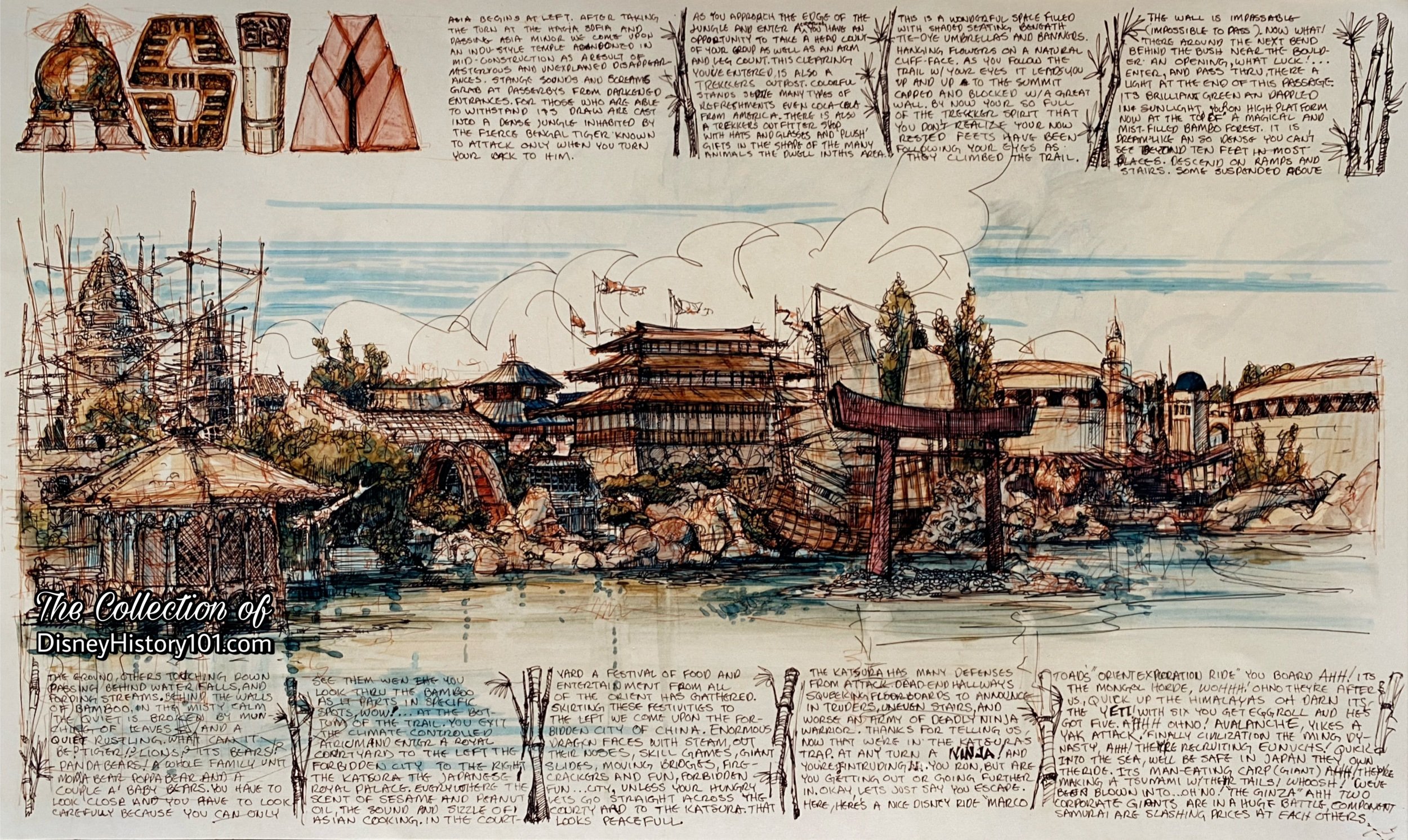
The planned Port Disney concept had an area themed to the character of Asia (possibly including Japan), prepared by Walt Disney imagineer John Horny.
